
James L. Halperin and Gregory J. Rohan
The Collector’s
Handbook
14th Edition
Tax Planning, Strategy and Estate
Advice for Collectors and Their Heirs
THE COLLECTOR’S HANDBOOK

Collector’s
Handbook
The


Tax Planning, Strategy and Estate
Advice for Collectors and Their Heirs
James L. Halperin and Gregory J. Rohan
Edited by
Noah Fleisher, Brian Keagy,
Steve Lansdale and Steve Roach
Dallas, Texas
Collector’s
Handbook
The

By James L. Halperin and Gregory J. Rohan
Edited for 2023 by Brian Keagy and Steve Lansdale.
Copyright 2000, 2004, 2007, 2008, 2009, 2011, 2012, 2013, 2014, 2015, 2016, 2018,
2019, 2020, 2023 by James L. Halperin and Gregory J. Rohan
All Rights Reserved. Reproduction or translation of any part of this work without
permission of the copyright owners is unlawful. Written requests for permission or
further information should be addressed to:
Ivy Press
2801 W. Airport Freeway
Dallas, TX 75261-4127
This publication is designed to provide accurate and authoritative information with
respect to the subject matter covered. It is provided with the understanding that
neither the authors nor the publisher are engaged in rendering legal, accounting, or
other professional advice. If legal advice or other expert assistance is required, you
should seek the services of a competent professional.
Choose the members of your financial team wisely, and don’t be afraid to pay for
good advice; it will save you money in the long run. You will likely need a CPA,
a lawyer, a financial planner, and an insurance agent to execute the planning
recommended in this book. Encourage your entire team to work together; a financial
plan is only as good as it is holistic. Please remember that tax planning is an ongoing
process and not an annual event. Collectors have special needs, and tax laws affect
different collectors differently.
ISBN: 978-1-63351-472-0
Manufactured in the United States of America
© 2023, Revised Edition
Copyright Cover Design by Jonathan Fehr, 2023

A True Collector’s Mentality
“My wish is, so that my drawings, my prints, my
curiosities, my books, in a word, those things of
Art which have been the joy of my life shall not
be consigned to the cold tomb of a museum, and
subjected to the stupid glance of the careless
passer-by; but I require that they shall all be
dispersed under the hammer of the auctioneer,
so that the pleasure which the acquiring of each
one has given to me, shall be given again, in
each case, to some inheritor of my own tastes.”
From the will of Edmond de Goncourt, 1896

“…helpful summaries about care of collections,
security, and tax pitfalls.
”
– The Philadelphia Inquirer
“Minimize inheritance headaches and heartaches…
Experts’ tips for winning encounters with coin
dealers and the IRS.
”
– The Centinel
“…your heirs deserve knowledge and truth about your
holdings. Your use of this book should help, and—especially
for those of you with a valuable collection—a copy for your heirs would
not be amiss.
”
– COINage Coin Collector's Yearbook
“…deserves to be in the hands of any collector of coins,
serious or frivolous. It gives excellent advice for maintaining records, caring
for, safeguarding and for disposing of a numismatic collection. Dealers
would do well to recommend it to their customers –
after reading it themselves.
”
– Col. Bill Murray, Noted Columnist

“
…by far the best book written on how to ensure that your
coin collection is never sold for pennies on the dollar.
A book I highly recommend to all my clients.
”
– Dale Williams, Professional Numismatist
“How comprehensive is this book? I put it with my collection and told
my daughter Sara to read it when it comes to
handling my coin estate.
”
– Fred Weinberg, Past President of the Professional
Numismatists Guild
“In summary, this small paperback book contains a wealth of information
for collectors at all levels of the hobby. You can read it over a weekend, and
I would urge you to share it with your potential heirs. If nothing else,
place a copy on top of your collection, with important (to you)
sections highlighted. Your heirs will be glad you did.
”
– Mike Thorne, Writer. Coins Magazine
Estate Planning Made Easy, June 3, 2009
“Must reading for most of today’s collectors.”
– Coins Magazine

“To those of us in the business of helping remove obstacles from the
financial paths of clients, The Collector’s Handbook is a valuable resource I
would think that any advisor would want to have in their library.
”
- Jeffrey Turner, Certified Financial Planner™ professional,
President of Chattanooga Estate Planning Council
“A wealth of sound and practical information, written in a clear and
concise manner. Must reading for every collector!
”
– Leroy Van Allen, Numismatic Author and Morgan Dollar Expert
“…It is for everyone in numismatics and is even a ‘must have’ for those
who may become heirs, but lack the know-how of what to do next. Senior
citizens, like myself, will be especially happy with the interesting stories of
estates, etc. … EVERYONE should
own it if coins are involved in their activities.
I highly recommend this book…
”
– Lee Martin, Founder of the Numismatic Literary Guild

The first edition of this book, titled
The Rare Coin Estate Handbook, received many of
the comments and endorsements listed above, and
won the Robert Friedberg Award from the Professional
Numismatists Guild: Best Numismatic Book of the Year.
Now rewritten for all forms of art, jewelry
and collectibles, the 7th Edition of The Collector’s
Handbook received the “Extraordinary Merit” award
from the Numismatic Literary Guild in 2013
.

Front Cover:
Rolex, Very Fine and Rare 14k Gold
Ref. 6241 “Paul Newman” Cosmograph
Daytona “John Player Special”, Circa 1969
Sold for $804,500 | October 2018
Fr. 1202 $100 1882 Gold Certificate
PMG Very Fine 30
Sold for $750,000 | October 2022
1885 Trade Dollar
Finest of Five Examples Known
Sold for $3,960,000 | January 2019

Contents
Foreword xvii
Acknowledgements ixxi
Introduction ixxiii
PART 1: ADMINISTERING YOUR COLLECTION
Chapter 1 – Recordkeeping 3
Chapter 2 – Caring for Your Collection 9
Chapter 3 – Safeguarding Your Collection 21
PART 2: ESTATE PLANNING FOR YOUR COLLECTION
Chapter 4 – All in the Family 35
Chapter 5 – Division of Assets 49
Chapter 6 – Should You Bequeath Your Collection,
or Sell During Your Lifetime? 59
Chapter 7 – Collectibles, Estate Planning and Taxes 71
Chapter 8 – Collectibles and Charitable Giving 93
PART 3: EVALUATING YOUR COLLECTION
Chapter 9 – Third-Party Authentication and Grading 109
Chapter 10 – Having Your Collection Appraised 115
PART 4: SELLING YOUR COLLECTION
Chapter 11 – Selling Your Collection Through Outright Sale 129
Chapter 12 – Selling Your Collectibles Through an Agent 137
Chapter 13 – Selling Your Collection at Auction 147
Chapter 14 – Etiquette & Tips 159
APPENDICES
Appendix A – Organizations for Collectors 170
Appendix B – Insurance Companies Offering Specialized
Coverage for Collectors 172
Appendix C – Third-Party Grading Services 174
Appendix D – Selected Publications for Collectors 175
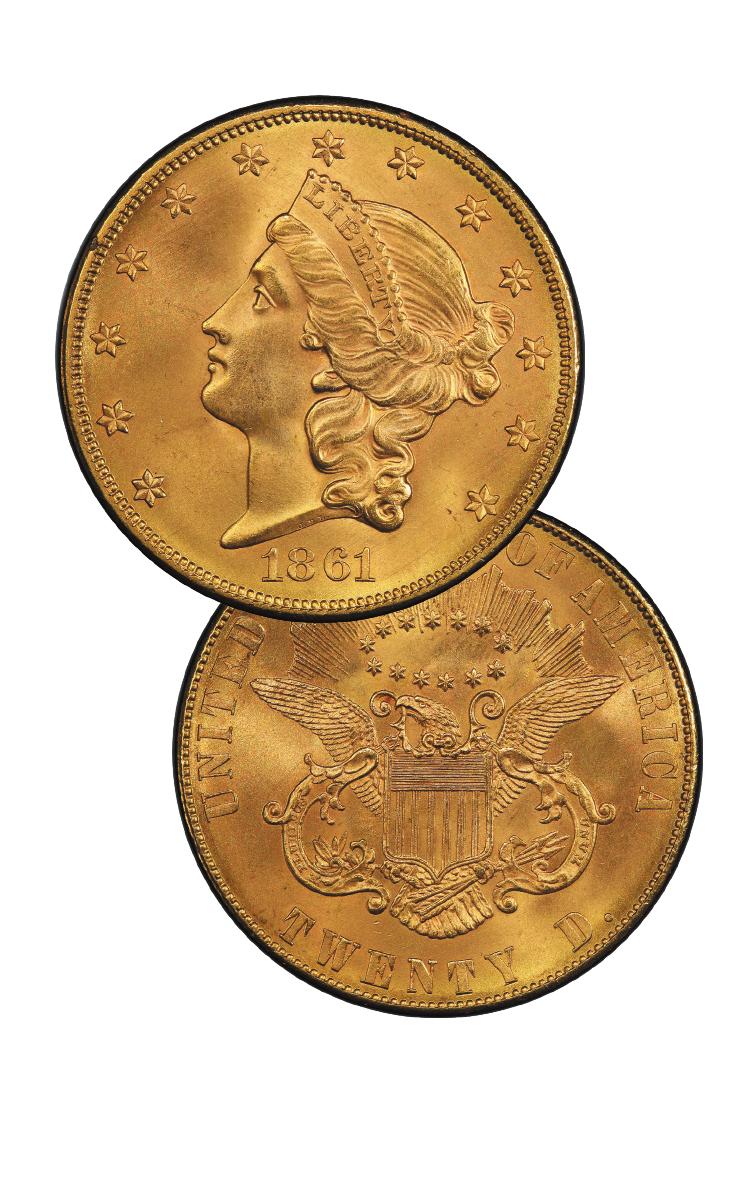
1861 $20 Paquet
MS67 PCGS. CAC
Sold for $7,200,000 | August 2021

Foreword
WHY WE COLLECT THINGS
M
y friend John Jay Pittman did not start out a wealthy man. Slowly
and with dedication, he assembled an incredible coin collection.
He accomplished this through relentless study and at the cost of
a significant portion of his limited income as a middle manager for
Eastman Kodak, supplemented by his wife’s income as a schoolteacher.
In 1954, John mortgaged the family house to travel to Egypt and bid on
coins at the King Farouk Collection auction, and he demanded many
more sacrifices of himself and his family over the decades. He passed
away in 1996 with no apparent regrets, and his long-suffering family
deservingly reaped the rewards of his efforts when the collection was
sold at auction for more than $30 million.
But why did he do it?
On our website, HA.com, we auction many different types of collectibles;
what started in 1976 as a numismatics business is now the largest
auction house founded in America — with annual sales exceeding
$1.45 billion in 2022 in categories ranging from meteorites to Hermès
handbags. Most of our more than 1.75 million registered client/bidders
collect in more than one area, which we can determine through online
surveys, free catalog subscriptions, and multiple drawings for prizes
throughout the year. Our clients pursue many different collecting areas,
and for many different reasons.
One fervent collector of historical documents refers to his passion as “a
genetic defect.” The founding father of psychoanalysis Sigmund Freud,
a renowned collector in his own right, thought that collecting was really
about sex: “The core of paranoia is the detachment of the libido from
objects,” he wrote in 1908. “A reverse course is taken by the collector
who directs his surplus libido into an inanimate object: a love of things.”
But more likely it’s basic human instinct: a survival advantage amplified

by eons of natural selection. Those of our ancient ancestors who
managed to accumulate scarce objects may have been more likely to
survive long enough to bear offspring—and people who owned shiny
objects may have had an easier time attracting mates. Even today,
wealth correlates with longer life expectancy; and could any form of
wealth be more primal than scarce, tangible objects?
While the thrill of the hunt and a passion for objects — whether it’s
Lithuanian first-day covers or Alberto Vargas paintings — is what
motivates and excites collectors, there are, alas, some housekeeping
chores that must be tended to in order to assure that you derive the
most benefit from your collection. Whether that means minimizing
your tax burden, ensuring that your objects are safe from intruders, or
maximizing your collection’s value for your heirs, a little attention now
can save you a massive headache later. It also will help you to get as
much as you can out of the top 10 reasons Heritage Auctions’ clients
tell us that they collect (not in order):
1. Knowledge and learning
2. Relaxation and stress reduction
3. Personal pleasure
4. Social interaction with fellow collectors
5. Competitive challenge
6. Public recognition
7. Altruism (leaving a collection to a museum or non-profit organization)
8. The desire to control, possess and bring order to something
9. Nostalgia and/or a connection to history
10. Accumulation and diversification of wealth

Like Pittman, Robert Lesser is a true collector, but also a visionary with
the ability to change his own course. He funded his later collections
by assembling a fine collection of Disney memorabilia before it was
popular, and later sold it for a seven-figure sum after the collecting
world had come to appreciate it. Long before others discovered Disney
memorabilia’s now-obvious appeal, Lesser assembled preeminent
collections of toy robots—museum exhibitions of his collection have
attracted sell-out crowds with waiting lines stretching over city blocks—
and pulp magazine cover paintings.
Many non-acquisitive pastimes provide similar levels of satisfaction,
knowledge and recognition, along with the other benefits of collecting.
But unlike home gardeners and tropical fish enthusiasts, serious
collectors of rare objects will very often find that they have created
substantial wealth—especially if they recognize this as one of the goals
of their collections.
Whatever your motivation for collecting, this book will make you a more
intelligent collector. Following the advice of our expert team of industry
professionals, accountants, and lawyers will help you enjoy your
collection more and ensure that your heirs can benefit from your legacy.
James L. Halperin
Co-Chairman, Heritage Auctions

Birger Sandzén (American, 1871-1954)
Lake at Sunset, Colorado, 1921
Oil on canvas
80 x 60 inches
Sold for $670,000 | May 2016
PROPERTY FROM A MIDWESTERN INSTITUTION
WORLD AUCTION RECORD FOR THE ARTIST
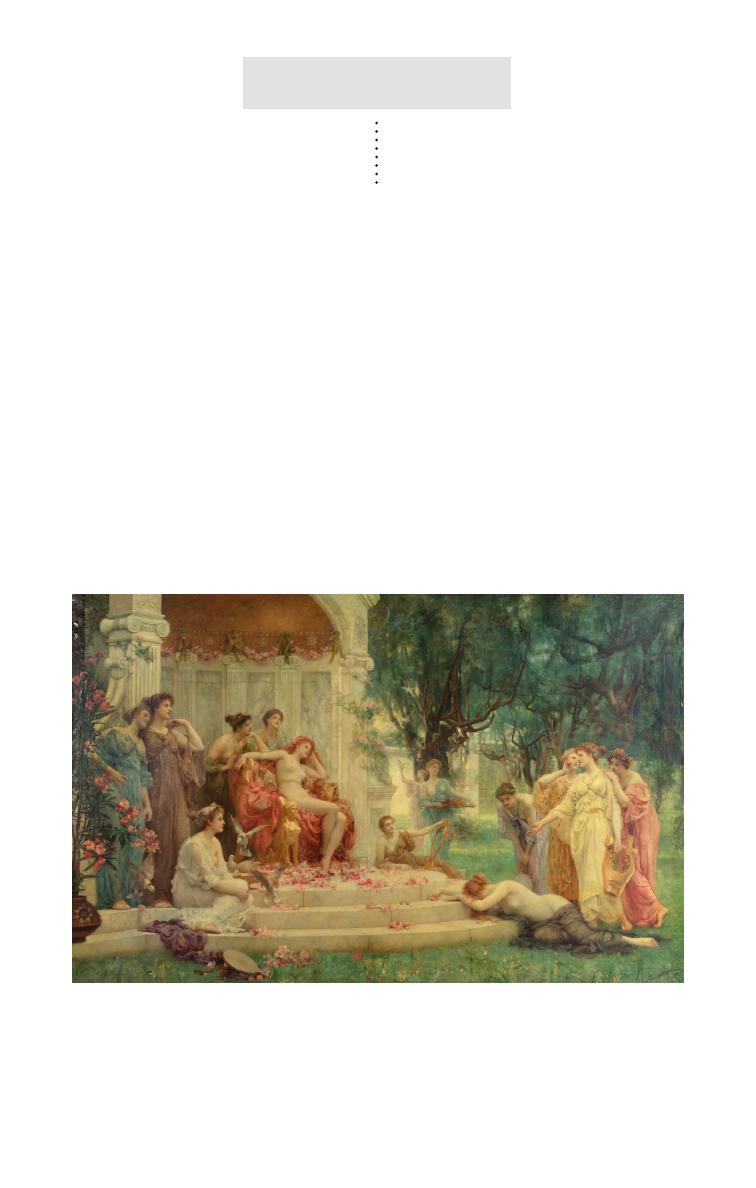
Acknowledgements
W
riting a book is like forming a great collection: many people
contribute in many different ways. While collecting, we build
on the work of dealers, auction firms, friends old and new, and those
dedicated authors whose reference books line our shelves. It is no
different here. We offer many thanks to the following for their assistance
during the preparation of this work:
Steve Ivy, Bob Korver, Burnett Marus, Steve Roach, Matthew S. Wilcox,
Will Rossman, Richard Freeland, Noah Fleisher, Mark Van Winkle, Mark
Masat, Brian Keagy, Michelle Castro, Taylor Strander, Deborah Daly,
Steve Lansdale, Brett Flagg, Chris Britton, Jonathan Fehr, and Emily
Murrah.
Henrietta Rae (British, 1859-1928)
Psyche before the throne of Venus, 1894
Oil on canvas
76-1/2 x 120 inches
Sold for $324,500 | May 2017
PROPERTY OF A TEXAS MUSEUM
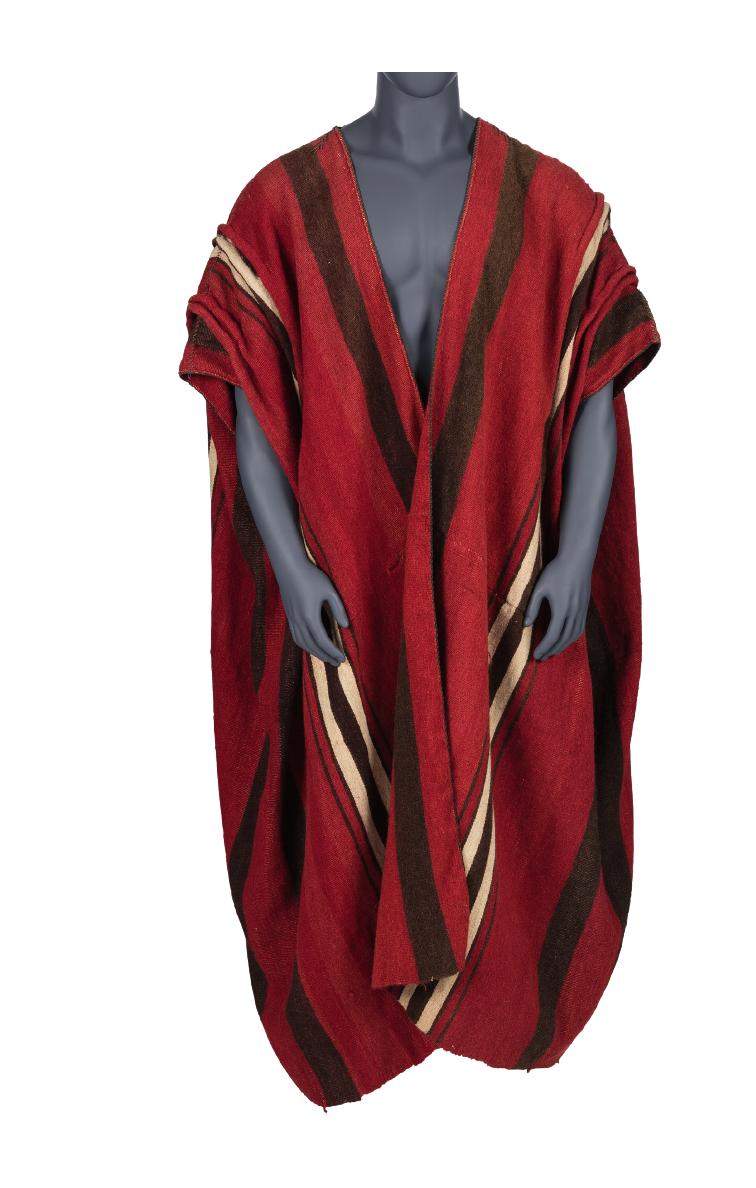
Charlton Heston “Moses”
Signature Robe from
The Ten Commandments
(Paramount, 1956).
Sold for $447,000 | December 2022

Introduction
Collectors know the joy that comes from being surrounded by
wonderful objects. The study of the pieces in our collections adds
depth, color, and richness to our lives. We also know that a collection
is intensely personal, and thus can be infrequently shared with others.
You know your collection intimately. More than likely, your heirs do not.
Heritage’s Appraisal Services team once encountered a collector who
showed up at an appraisal fair with a meticulously kept book detailing
every object she had in her collection: when she bought it, who she
bought it from, what she paid for it and everything she knew about it.
Such meticulousness is rare. All too often, the chaos left behind by
collectors leaves their descendants with a tax burden that could have
been avoided, along with endless amounts of paperwork, legal fees,
wrangling and other drama.
The principals at Heritage Auctions have written this book to provide
information essential to collectors organizing their collections, advisors
working with these collections and heirs who have inherited collections.
Organizations that have received collections as donations also will
benefit from this book.
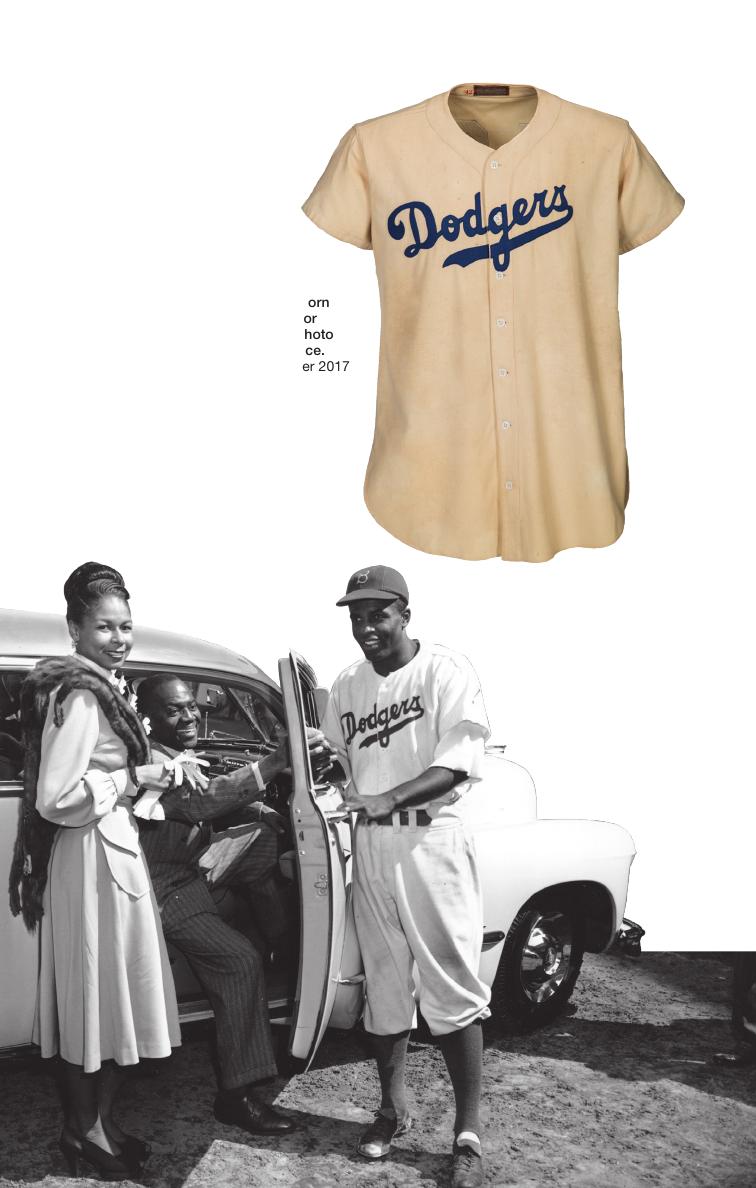
1947 Jackie Robinson Game Worn
Brooklyn Dodgers Rookie “Color
Barrier” Jersey, MEARS A9 – Photo
Matched with Family Provenance.
Sold for $2,050,000 | November 2017

Administering Your Collection
PART ONE
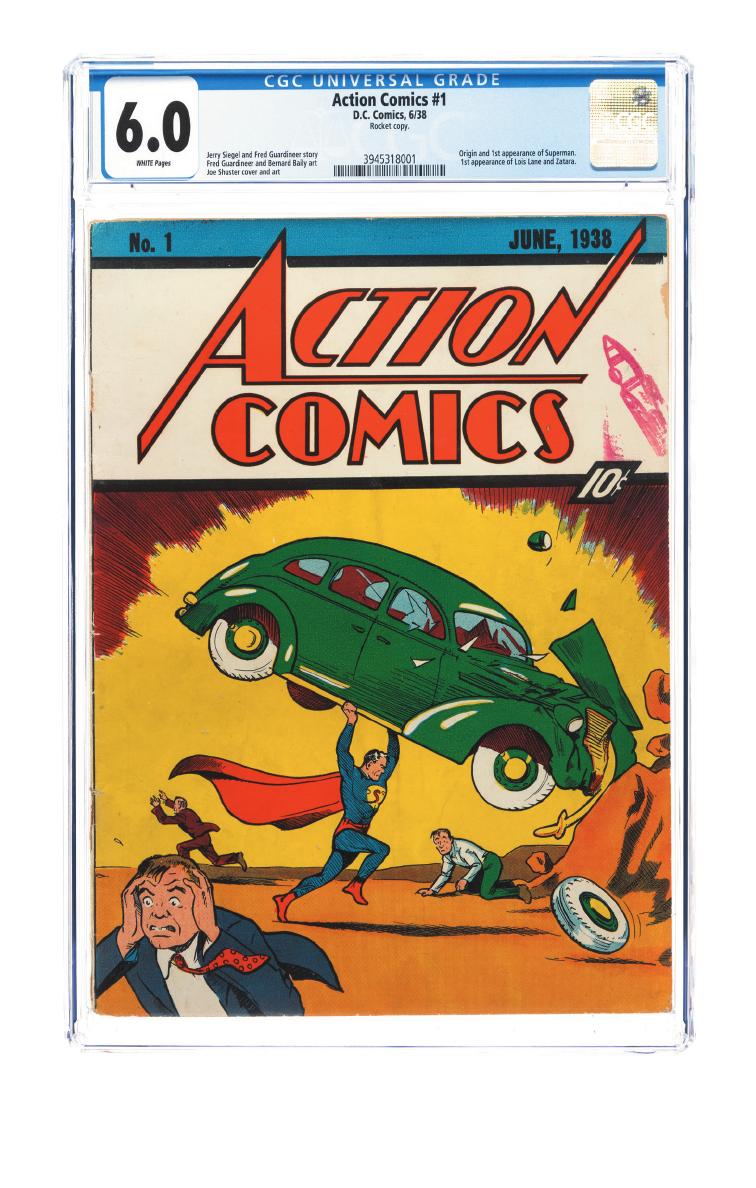
2
Action Comics #1 Rocket Copy (DC, 1938)
CGC FN 6.0 White pages.
Sold for $3,180,000 | January 2022

3
1
Recordkeeping
Mother: “This is the fertility vase of the Ndebele tribe.
Does that mean anything to you?”
Daughter: “No?” – From the 2004 movie Mean Girls
W
e once appraised a home with six federal mahogany chests of
drawers. The deceased’s estate plan stipulated that a certain heir
should receive “the good one.” While the collector certainly understood
which of the six was “the good one,” he was not there to help—and the
executor and attorney had no idea what he was talking about.
In another case involving a room full of paintings, the estate plan
provided instructions for a certain painting: “the one with the
banana.” The heirs, executor and attorney all looked to us to
determine which painting represented a banana. Unfortunately, it was
impossible to find any resemblance in the group because all of the
pieces were entirely abstract.
These situations sound like vaudeville skits, but both really happened—
and they could have been avoided if the collections had been
inventoried and numbered. Even when the terms of the will specify
the exact location of an item in an effort to distinguish it from similar
ones, it may not be enough. As collectors relocate, downsize, or simply
rearrange their homes, the location of an item may change. Assigning
a unique identification number does not change and therefore remains
the only reliable method of inventorying items that we recommend.
Documenting what you own by writing it down by hand or in a
printable listing is the most fundamental part of intelligent collections
management. For historians and scholars, original handwritten
inventories have proved to be invaluable tools with tasks as varied as
accurately restoring a historic building, understanding a major battle or
reconstructing a seminal art collection. The oldest known examples of

4
writing in Europe are lists of commodities found in the storerooms of
palaces in Ancient Greece. Modern technology has made the process
easier than ever, and all collectors must understand the importance
of proper documentation: It will be essential to your relationships with
insurers, dealers, auction houses, the IRS and your heirs. Inputting and
documenting each new acquisition as you proceed makes this process
manageable.
The first question to answer: handwritten or digital? While it’s possible
to maintain meticulous paper records, our preference is that you use
a computer program that is properly backed up in case of computer
issues by a simple Excel spreadsheet, a Quicken list, a personal
website, handwritten note cards, the MyCollection™ feature on the
Heritage website or even some private software options like Collectify
®
.
While doing anything at all will put you far ahead of most collectors,
the more detailed, uniform and decipherable your inventory method
is to the novice eye, the better. Your inventory system must be self-
explanatory because you may not be there to explain it. Highly
specialized jargon, abbreviations and personal notation codes should
be avoided.
HA.com has a free feature called
MyCollection
™
which allows the
collector to keep a private record. For
coin and comic collectors, the feature
is particularly useful because you will
be able to quickly see market values
for your pieces. HA.com/MyCollection

5
Different types of collectible property require different information fields,
but a general checklist might appear as follows:
• Object type: What is it?
• Title: Does it have a known or descriptive title?
• Maker: Is the creator known?
• Medium: What’s it made of?
• Size: Dimensions and/or weight?
• Inscriptions: Is anything written on it?
• Signature: Did the maker sign it? Where and how?
• Subject: Is there a representation on the item?
• Date: When was it made?
• Manner of Acquisition: How did you obtain it? (Auction,
yard sale, etc.)
• Cost/Date of Acquisition: What did you pay for it? When
did you buy it?
• Location: Where is the item? A safe deposit box, file cabinet, on loan to
local museum? Specifics are important; if it’s in a binder, say where the
binder is located. For example, if a painting is in the living room above
the sofa, note the location and the date the information was entered.
• Provenance: What is the item’s history of ownership?
• Special Notes: Anything else you would want an heir to know
about it? More information is always better. For example, has it been
exhibited or published in a catalog?
• Photographs: Take a picture of each item in your collection.
• File Folder: Keep or scan copies of all relevant documentation:
invoices, auction catalog entries, bills of lading, etc.
• Inventory Number: See next page.
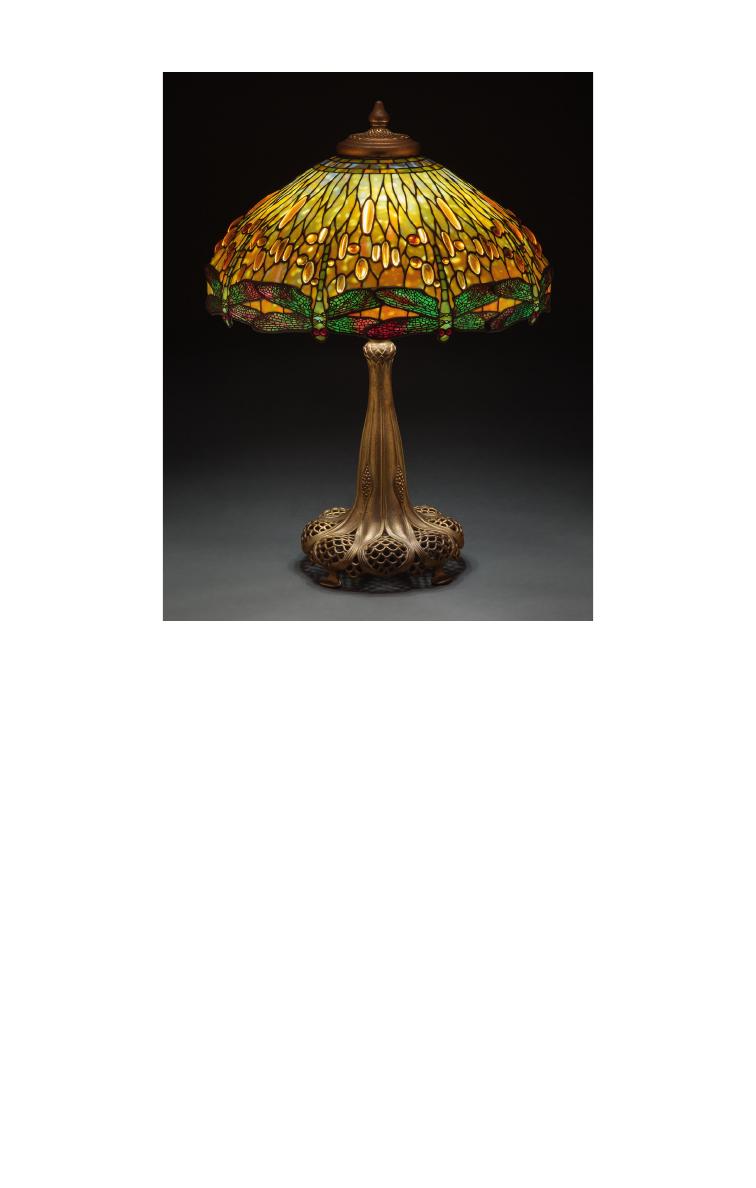
6
The Art of Inventory Control: Tying it all Together
Even the most accurate inventory documentation can end up useless
if it is not “tied” to actual objects. Tying data to an object involves
giving each item a unique inventory number with which it is tagged or
marked, and then cross-referencing that tag with the written inventory
entry and a photograph.
A useful collection inventory number system should begin with the year
of acquisition, followed by an individual item number. For instance,
2016.001 would be reserved for the first piece acquired in the year
2016. This is the inventorying system used by museums, and with good
reason, since it is both predictable and easy to follow.
Tiffany Studios Leaded Glass and Gilt Bronze
Drophead Dragonfly Table Lamp, circa 1910.
Sold for $275,000 | April 2022
Property from the Collection of Jeep & Carla Harned

7
It is critical that the object, photograph, number tag and master
inventory do not become separated. String tags and sticker labels
often are used when safe to apply, and they can be removed easily;
of course, this is easier with some objects than others. Museums
generally look for a part of the object that is out of sight when on
display — usually the bottom or back — and put a small strip of varnish
down. After it dries, the ID number is written in ink, and when that
dries, another coat of varnish is placed over the number. For paintings,
only the back stretchers or frames should be marked with the work’s
unique ID number. Each type of property presents its own numbering
challenges. Often, the only solution is to tag the box or plastic sleeve
in which an object is stored, but this is not ideal since boxes and
sleeves can be switched. Today, bar code technology, microchips and
even radioactive isotope staining have enhanced our tagging options.
Do your research to see what’s out there and what’s best for your
particular collection. Ask dealers who specialize in the category, and
seek out the advice of societies that serve collectors. Find out what the
best practices are for each category you collect. A key principle is that
a tagging or numbering system should never damage an item.
When photographing an object, write its unique ID number on a piece
of paper and place it in the picture field so that the photograph actually
displays the object and the number. That way, any loose photograph
can be easily identified. Most large collections contain near-identical or
duplicate items that, to the untrained eye, may appear indistinguishable
from one another, even though values can vary widely. Many coin
collections have been spent by heirs who were unaware that the coins
had value to collectors, and this fate could be avoided with proper
identification.
You will thank yourself in the long run, as will everyone involved!
Finally, maintain a second copy of your complete inventory, including
photographs, in a different location from the collection itself. Safe
deposit boxes in banks are recommended, and it also is a good idea to
have an electronic copy stored on a backup disc and/or online.
When you sell or otherwise remove an item from your collection, make
certain that it is noted clearly in your inventory—unless, of course, you
despise your heirs and wish to send them on a decades-long hunt for
a valuable object you sold 20 years ago.
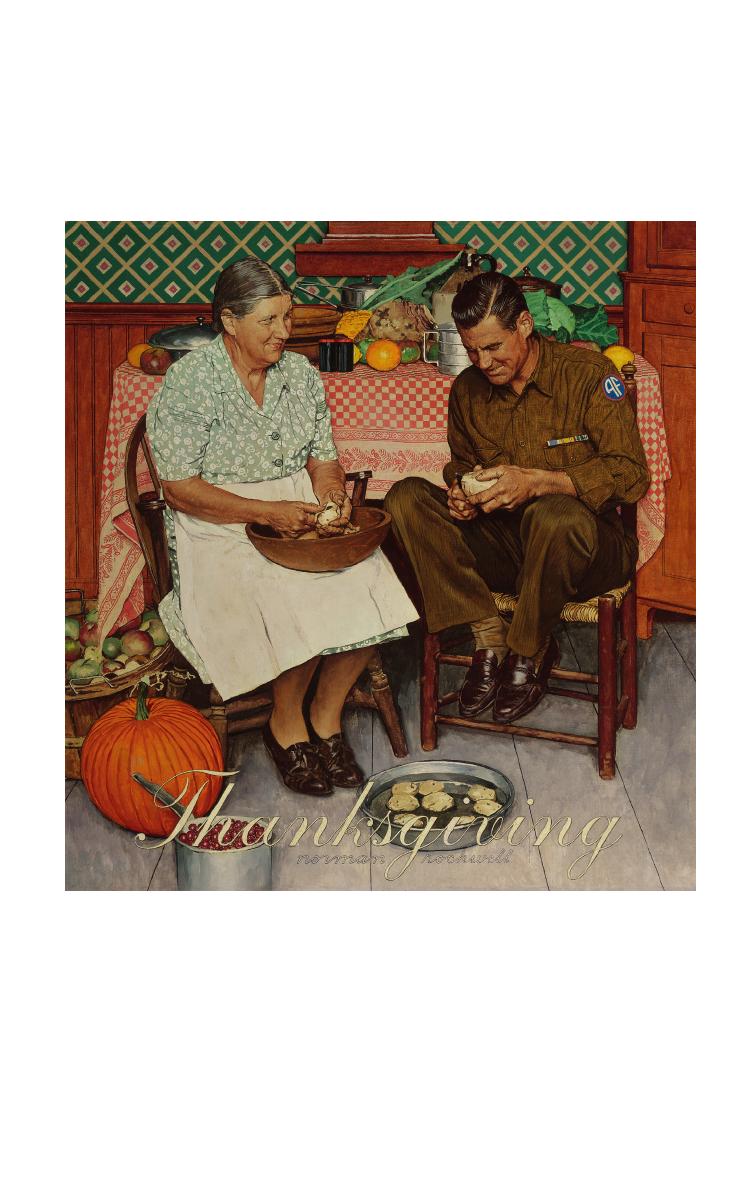
8
Norman Rockwell (American, 1894-1978) Home for
Thanksgiving, The Saturday Evening Post cover,
November 24, 1945
Sold for $4,305,000 | November 2021
Property from the E.M. Connor Post #193 American Legion,
Winchendon, Massachusetts, Being Sold To Benefit
Operational and Building Funds

9
2
Caring For Your Collection
“He that thinks he can afford to be negligent is not far
from being poor.” – Samuel Johnson
“Never neglect details.” – Colin Powell
A
fter being created, all objects age; they act and react over time in
accordance with their physical and chemical properties, combined
with the environment in which they’re stored. Metals mineralize naturally.
Paper collectibles are photo-chemically changed when exposed to
the light necessary for us to enjoy them. Soft fabrics become brittle
and hard substances become pliable. While some changes may take
centuries, others take only minutes — and the goal of the collector, like
that of the museum conservator or a Hollywood actor, should be to
minimize damage and slow the aging process.
Human contact is the leading culprit of wear and deterioration. Use of
an object, whether it is a circulated coin or toy train, takes a toll. For
many items, use reduces value, but in others, it increases it. A baseball
glove worn out by 10 years of continued use by Ted Williams has
greater value because of its history, regardless of the physical condition
that results from aging. For baseball cards, part of the value comes
from their ability to withstand the long odds of survival: cards cut from
recently discovered sheets are seen as second-class citizens. Each
category of collectible has its own standard that governs the effects of
original use on value. Once an object has left its original environment
and becomes a cultural collectible, the new owners must endeavor to
preserve its condition.
Human touch can harm objects physically and chemically through
the acids in perspiration. After that, sunlight and moisture are the
two greatest destroyers of most collections. Another serious threat is
contact with reactive materials such as a cleansing or sealing agent.

10
Human Contact
Avoiding direct contact with objects, if possible, is best.
• Coins can be placed in sealed inert capsules, which protect
them from both physical and chemical harm. If outside a capsule,
a coin should only be grasped by its edge, avoiding contact with
its two sides. Paintings should be framed using archival materials;
prints should be glazed, then framed. Grasp only the frames
when examining. Comics should be placed in Mylar sleeves or
encapsulated by Certified Guaranty Company (CGC).
• White cotton gloves should be worn when handling anything
directly, but be aware that your grip may be affected by wearing
gloves. When examining a valuable ceramic lidded jar, place
one hand on the lid and the other under the base, so that the
lid does not fall off while being moved. Statues in any medium
should never be grasped by their extending parts (for instance,
the arms or legs of figural works).
Sunlight and Artificial Light
If you have ever noticed a rich dark mahogany table bleached off-white
and cracked because of its location near a window, or a once-vibrant
watercolor painting that has faded dramatically, you have witnessed the
powerful effect of light on objects. Prolonged exposure to ultraviolet light
may destroy valuable furniture, paintings, photographs, books
and textiles.
If you wish to keep your collections in plain view, certain steps should
be taken to minimize light damage:
• Purchase windows that filter UV light.
• Place UV filter sleeves over fluorescent lighting.
• Glaze framed items with UV filtering acrylic, not glass (not
appropriate for all media).
• Hang curtains and blinds to filter sunlight.
• Never position a light-sensitive object in direct sunlight.
• Keep sensitive works covered with protective cloth; remove only
when viewing.
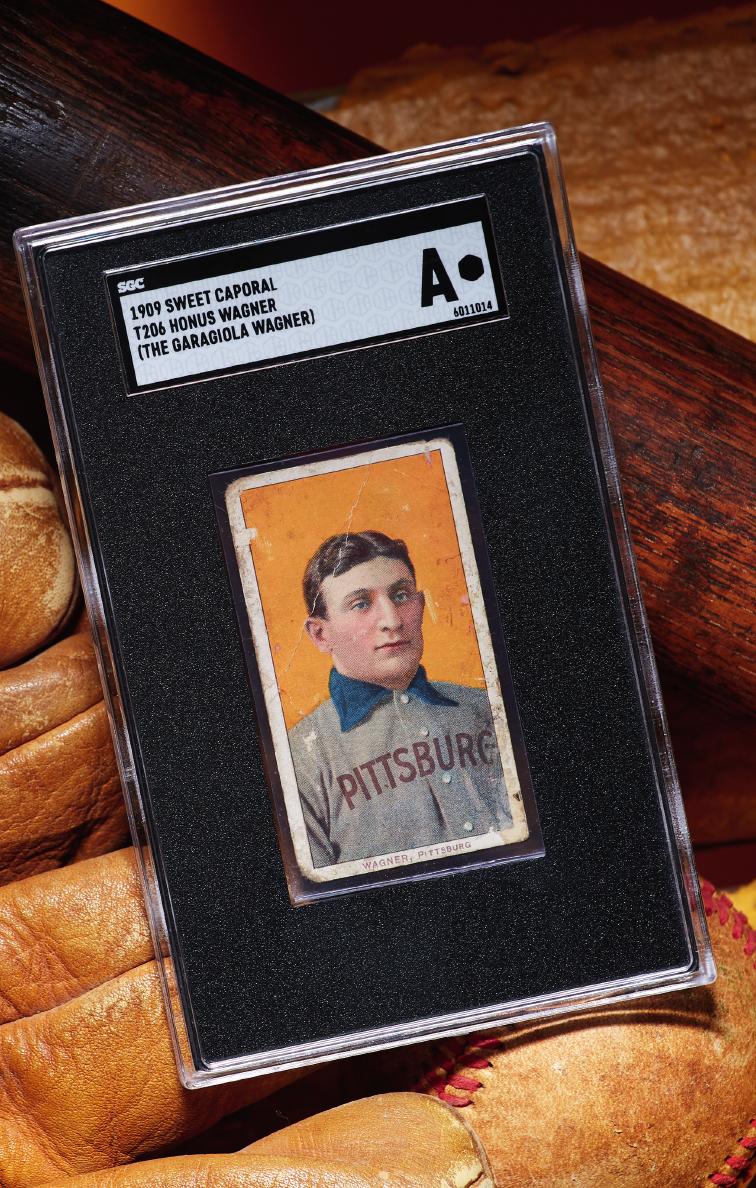
11
1909 T206 Sweet Caporal
Honus Wagner
(The Garagiola Wagner)
SGC Authentic.
Sold for $2,520,000
February 2021
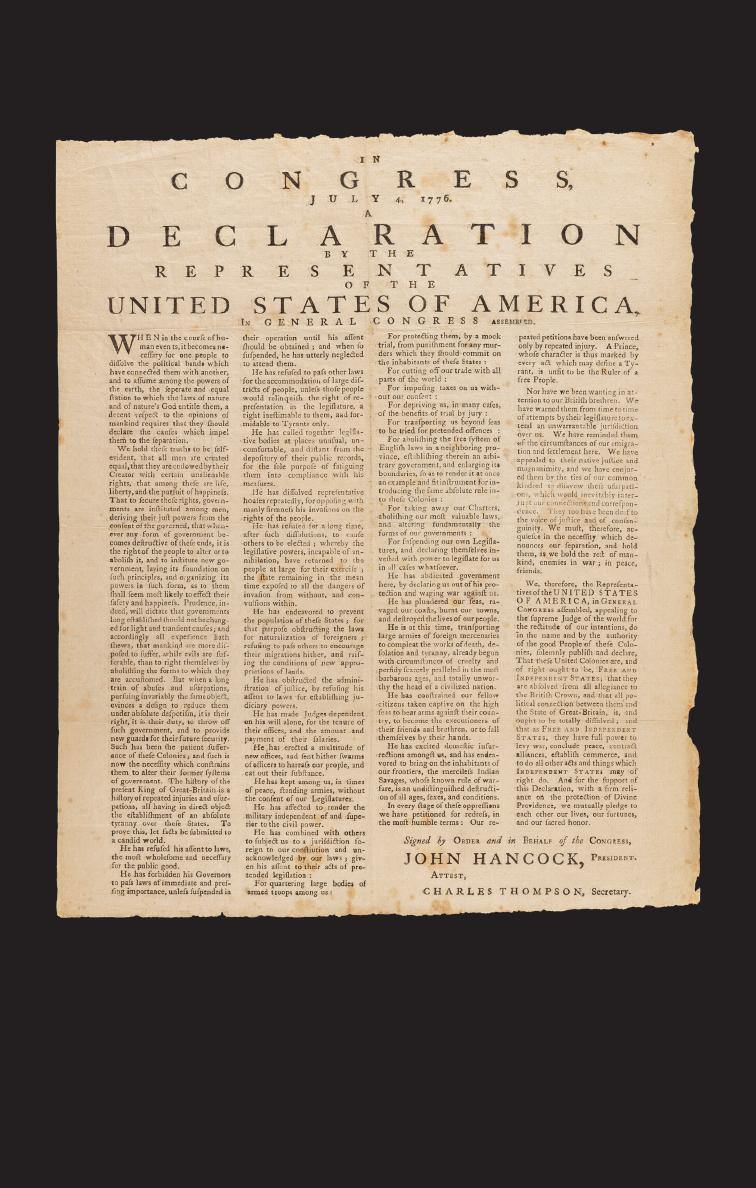
12
[DECLARATION OF INDEPENDENCE]. Folio
broadside, [Salem, MA: Ezekiel Russell
(or John Rogers at Russell’s printing office),
circa July 14-16, 1776].
Sold for $2,895,000 | July 2023

13
Water and Moisture
“For my birthday I got a humidifier and a dehumidifier. I put
them in the same room and let them fight it out.” – Steven Wright
Most water damage is caused not by rain, burst pipes or floods, but by
humidity. Organic materials deteriorate in humid conditions; mold and
mildew can grow, and metals mineralize at a faster rate.
The recommended relative humidity (RH) for your collections should be
determined (check with a dealer or society that specializes in your field),
after which you need to take the necessary steps to protect your collections
from air conditioning, humidifying and dehumidifying. It is important to avoid
large fluctuations in RH and temperature, as these fluctuations may cause
serious stress to any object. Here are the recommended storage conditions
for a few of our most popular categories:
• Books: 68°F to 72°F, with 40 to 50 percent relative humidity.
• Comic Books: 50°F to 65°F — and it’s important to keep the
temperature consistent. 40 to 60 percent relative humidity is
recommended.
• Coins (and other metals): The biggest concern here is relative
humidity. Below 30 percent is ideal.
• Historic Paper: The Preservation Directorate at The Library
of Congress says it stores documents at 50°F with relative
humidity of 50 percent.
• Paintings: 68°F is recommended, with relatively humidity at
around 50 percent.
• Stamps: 65°F and 50 percent relative humidity is the
recommendation from Linn’s Stamp News.
Reactive Materials
It is not unusual to find 19th-century prints on pulp paper in their original
frames, with acid-rich mats fixed with glued tape, backed by thin planks
of pine and secured with iron-alloy nails. We since have learned a great
deal about reactive chemistry and understand that the old practices are
truly bad.
The acid in the mat leaks out to the print, causing discoloration or
mat burn. Other acids in the adhesive tape do the same. The wood
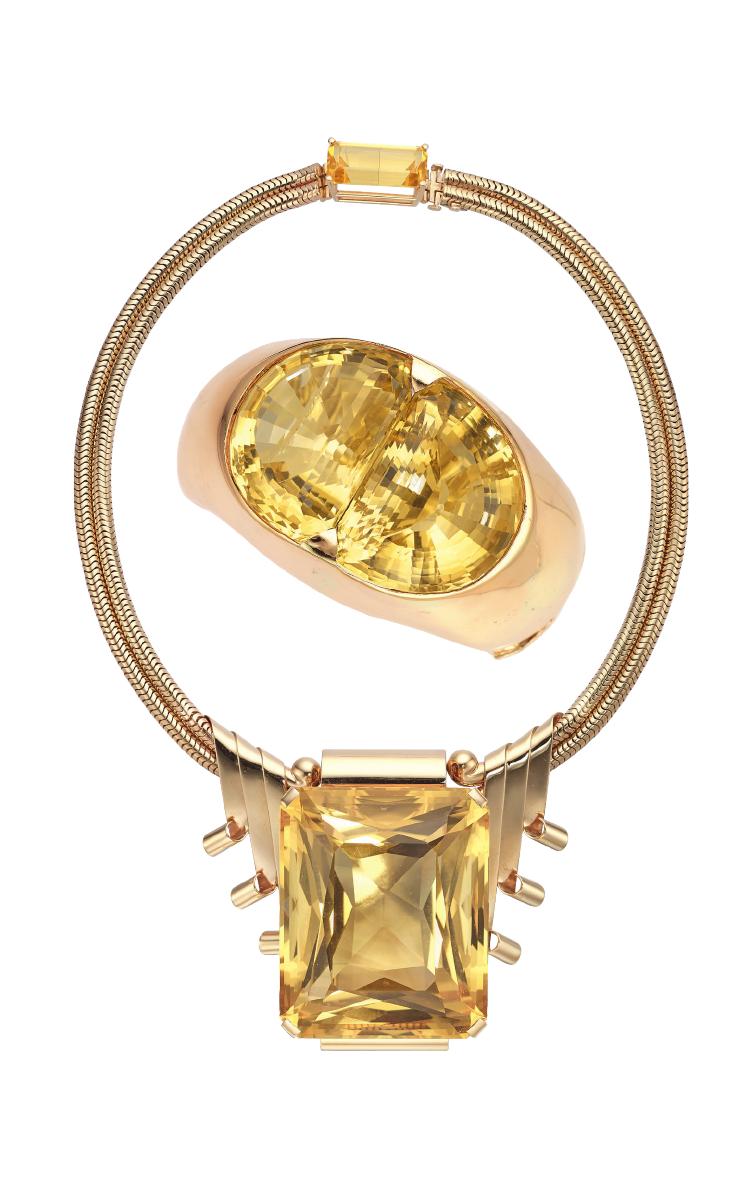
14
Retro Raymond Yard Citrine,
Gold Jewelry Suite
Sold for $250,000 | May 2022
Property from the Cary M. Maguire Estate, Dallas, Texas
This suite was
commissioned by Joan
Crawford from famed
jeweler Raymond Yard. After
receiving it, she wore it in
the film Where Ladies Meet
(1941) and in a print ad for
Royal Crown Cola.

15
backer and frame, which are designed to protect the print, are full of
acetic acid, formic acid, formaldehyde and other chemicals that can do
serious damage. Finally, the iron nails reacting to the wood and moist air
corrode quickly, harming anything in close proximity.
Today, even our urban, industrialized air contains sulfur dioxide and
nitrogen dioxide that can create an acidic environment in the presence
of elevated relative humidity.
It is imperative that collectors learn what conditions will affect their
particular collections. Outdoor marble statuary will not be harmed
greatly by sunlight or termites, but acid rain will do the job quickly unless
a protective wax is applied regularly. Some modern art is created with
materials that are meant to change over time, and that change is part of
the artist’s intention. Every category of art, antiques and collectibles has
its own preservation requirements.
Educate Yourself
Don’t assume the frames, wrappers, backboards, plastic sleeves or
other materials that house your artworks or collectibles at the time of
purchase are the safest ones available for the continued health of your
acquisitions. The fact that many collectibles have appreciated in value
over time means that a costlier means of preservation may be more
justified today than when an item originally was sold.
Caring for your collection properly requires learning the safest and most
updated methods available for viewing, displaying and storing items.
Each object will have unique issues relevant to its own material, form
and condition.
Museum and conservation information is readily available in books
and online. A good reference is Conservation Concerns: A Guide for
Collectors and Curators, edited by Konstanze Bachman. For more
advice on issues surrounding storage and preservation, check with
reputable dealers, auctioneers, and collectors’ societies.

16
Most collectors get to a point at which they decide to downsize, and this
includes celebrities. Celebrity connections have the ability to increase
the value of otherwise ordinary items. Sylvester Stallone called Heritage
Auctions when he decided to sell items from his personal collection that
spanned his long career in Hollywood.
Stallone wanted to be part of the sales process and stayed through
several hours of the first day’s bidding, interacting with fans and posing
for pictures. “The memorabilia I have has been used and been a part of
my life for — kind of hard to admit this— well over 40 years,” Stallone
said. “It has been in my possession and I have fond memories attached
to just about every object. There comes a point, though, when I think that
I’ve used these objects enough and have created enough memories that
I can let them go.”
Heritage’s sale, titled “Stallone – The Auction” took place Dec. 18-20,
2015, and included dozens of his most iconic costumes, props and
personal items. Some of the items included the leather jacket that
Stallone wore as a costume in the first Rocky movie in 1976, which
doubled its estimate when it sold for $149,000. On the jacket, Stallone
reminisced, “I remember when I bought this jacket. It was obviously quite
a few years before I ever even thought about Rocky, before Rocky was
even an idea. This is what I would wear in my everyday life, and when
the time came to do the movie, we didn’t have a budget where we could
afford an original wardrobe so I thought, ‘Why don’t I just wear the things
that I think Rocky would wear, clothes from my real life?’ So, I went in
my closet, pulled out this jacket. It’s one of those unique times where life
imitates art, art imitates reality. This jacket was used in several of the films
and it really established Rocky as kind of mythical, dark knight character.
You knew something special was going to happen with this individual
because he just looked different — and this black leather jacket set the
tone for the rest of the series.”
A used leather jacket that would be worth perhaps $30 in a secondhand
store, described in the auction catalog as a “Small collar, five button front
closure, two front pockets, two distinct pleats at shoulders, black faux
Star Power
The Auction
Stallone
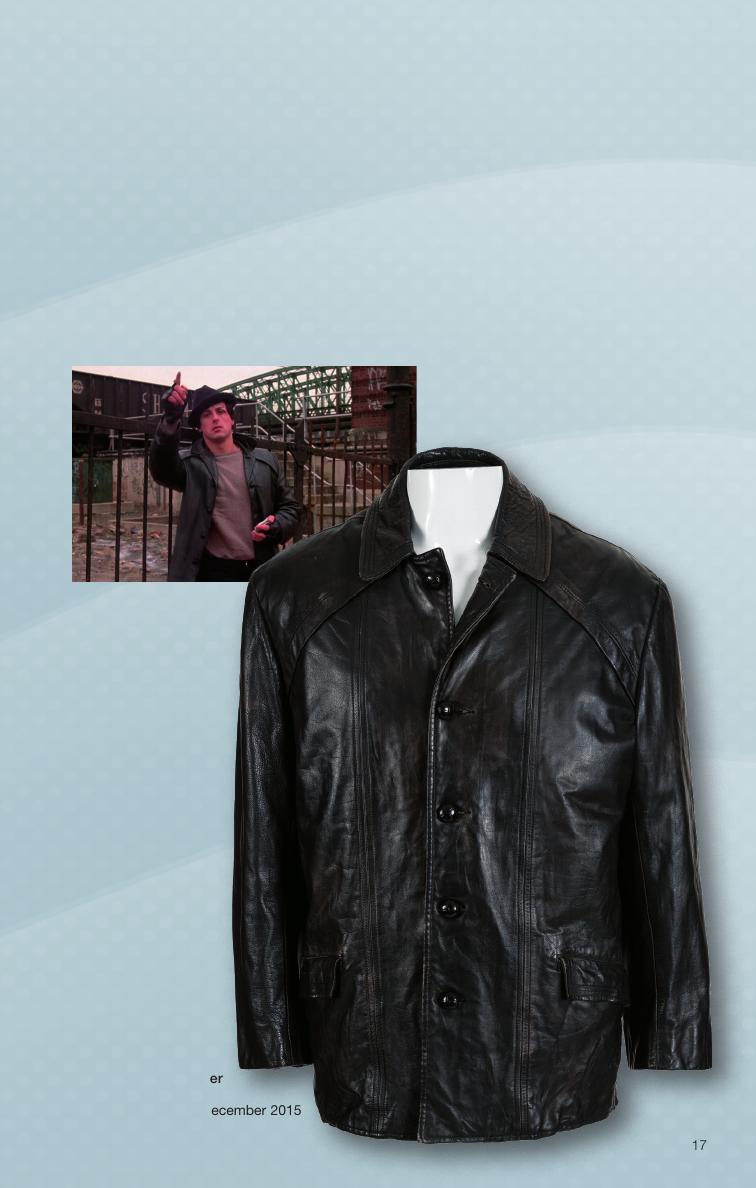
17
fur zip-out lining,” became worth nearly $150,000 due to its connection
to a great actor and a classic film. Stallone helped Heritage in crafting
the lot descriptions, adding priceless first-hand anecdotes that likely
encouraged the robust bidding. In total, 13 bidders competed for the lot,
with the winning bid being placed online at HA Live.
The Stallone sale realized more than $3 million. Beyond sharing his
personal history with thousands of fans, Stallone donated a portion of the
proceeds to various charities that assist military veterans and wounded
servicemen and servicewomen as well as The Motion Picture and TV
Country House and Hospital.
A Sylvester Stallone
Personal Black Leather
Jacket from “Rocky.”
Sold for $149,000 | December 2015
Stallone
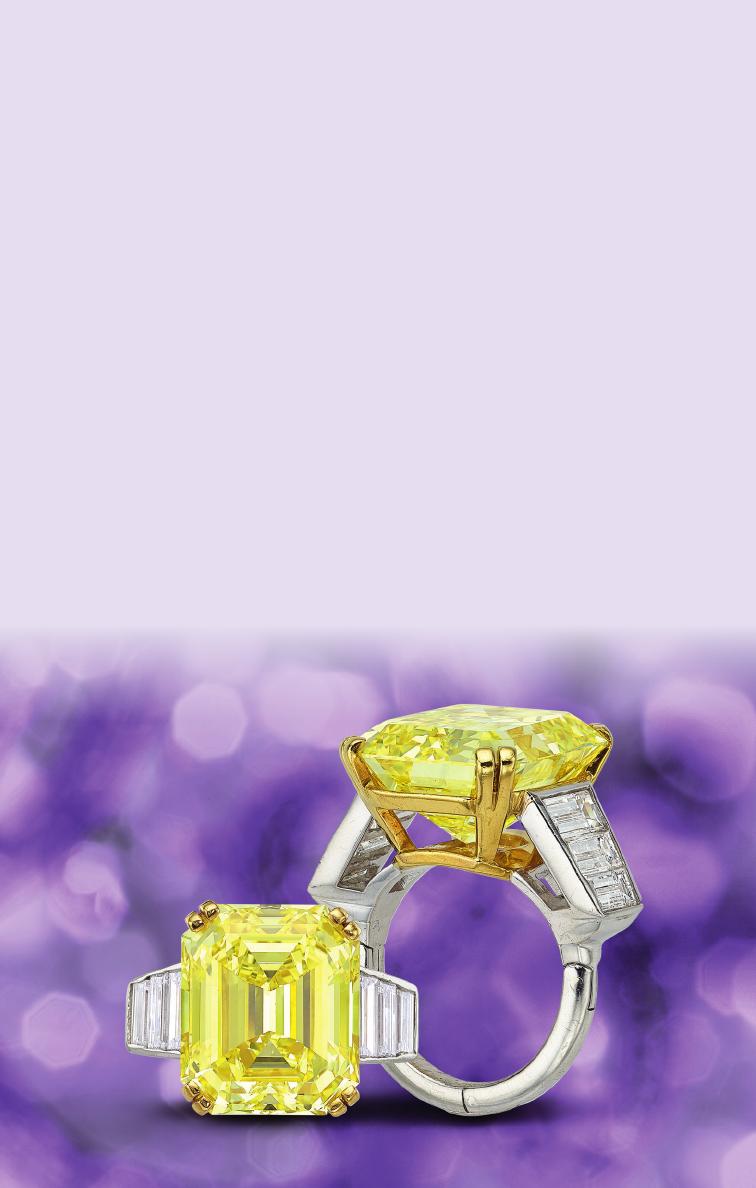
18
Mary Anne Sammons Cree
The Estate Gift of
Fancy Intense Yellow Diamond Ring
Sold for $591,000
D
allas, Texas native Mary Anne Sammons Cree quietly and powerfully
supported many passions during her lifetime, often focusing on
opportunities for her community to experience the wonder of the
arts and the natural world. So generous was Cree that even after her
passing, she continued to give back to her beloved hometown.
In September 2022, Heritage Auctions offered more than 125 pieces
from Cree’s extraordinary jewelry collection as the centerpiece of our
Fall Fine Jewelry Signature
®
Auction. Proceeds from the sale of Cree’s
jewelry supported The Rosine Fund of Communities Foundation of
Texas, so named for Mary Anne’s mother, from whom she inherited her
spirit of giving.
“As a Dallas-based auction house, it was kismet for Heritage Auctions
to partner with Communities Foundation of Texas to present Mary
Anne’s stunning jewelry collection to collectors worldwide,” says Michelle
Castro, Vice President of Trusts & Estates.
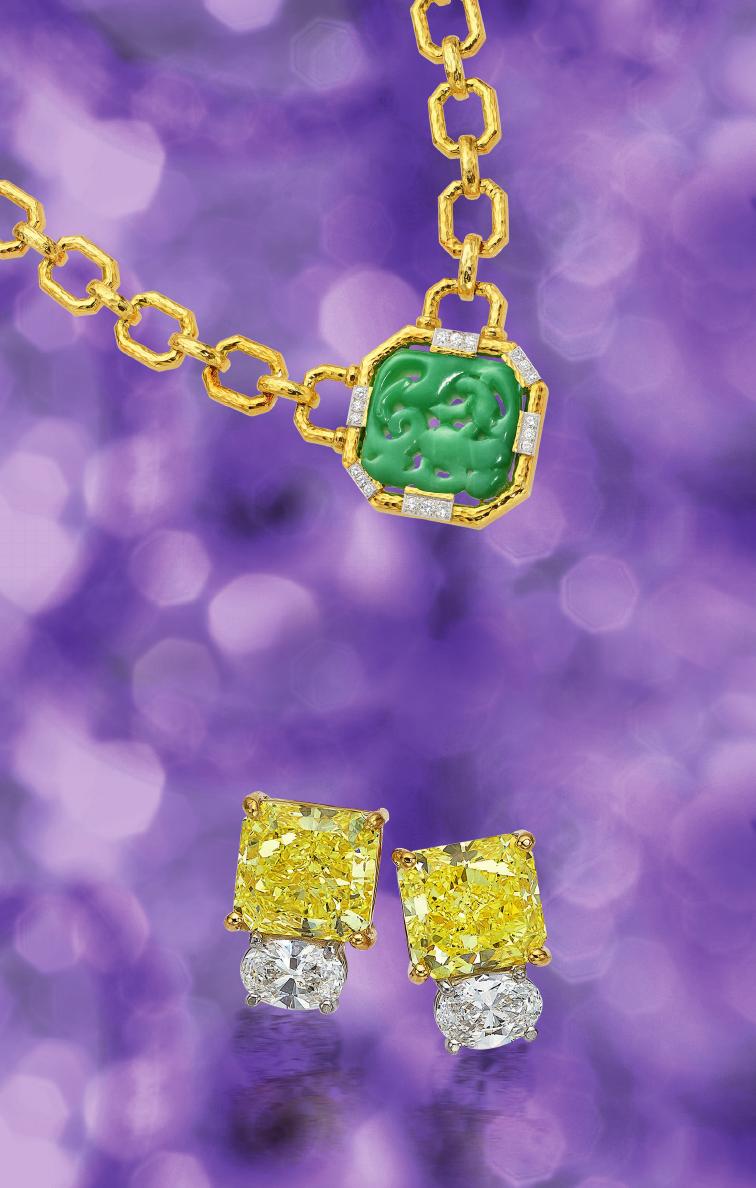
19
David Webb Jewelry Suite
Sold for $47,500
Fancy Yellow Diamond Earrings
Sold for $225,000
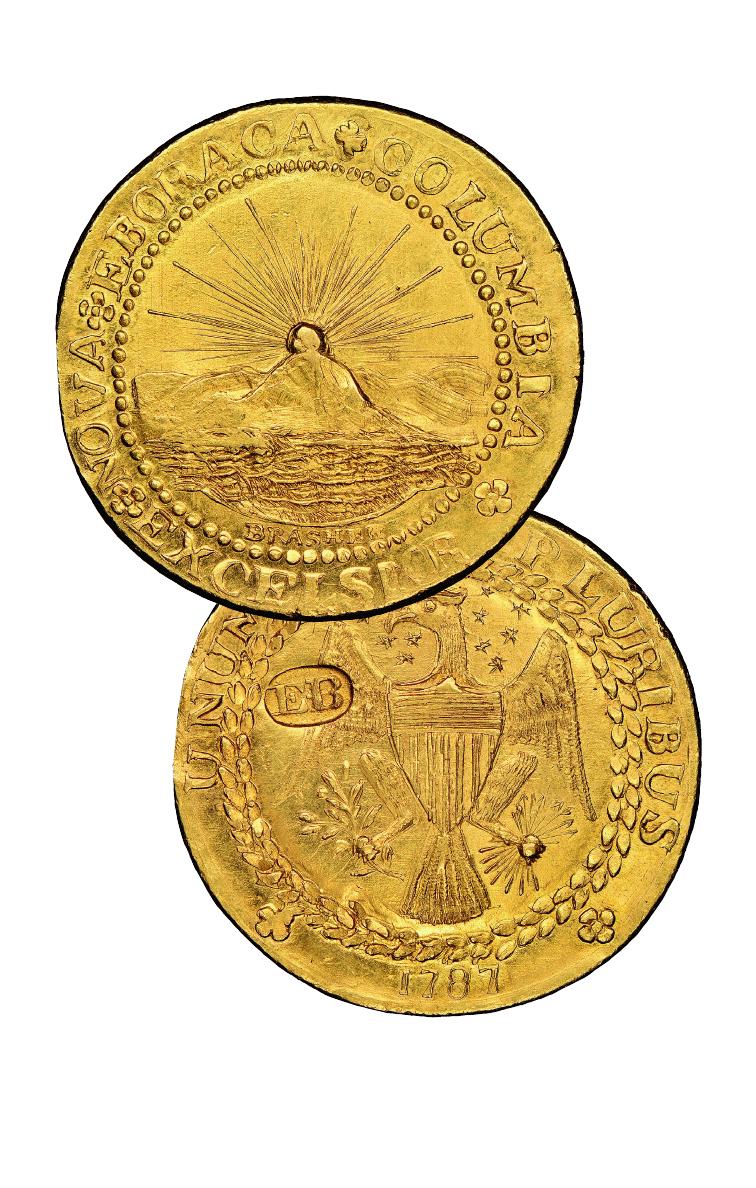
20
1787 DBLN New York-Style Brasher
Doubloon, EB on Wing,
MS65★ NGC. CAC. W-5840.
Sold for $9,360,000 | January 2021

21
3
Safeguarding Your Collection
“If you didn’t have so much stuff, you wouldn’t need a
house. You could just walk around all the time. A house is
just a pile of stuff with a cover on it.” – George Carlin
C
rimes against property are on the rise, and the reasons that
fine art, antiques and collectibles are great investments are the
same reasons they’re great targets for thieves. The current arrest and
conviction rate is abysmal, and the odds of recovering stolen goods
are even lower. With budget constraints forcing law enforcement to
deprioritize property crimes, the outlook for a reversal in that trend
is not good. The only solution is to do what you can to protect your
collection against criminals — and make sure that it is properly insured
in the event that you are the victim of a crime (or natural disaster).
Security vs. Access
Most collectors want their treasures close at hand to study and enjoy
— even though that is a suboptimal loss prevention strategy.
To alleviate this, write your own personal security plan and include
these elements:
• Security
Your collection is at risk from theft, fire, water damage and other
natural disasters. If you are going to have objects of substantial value
at your residence, you should consider several proactive measures
to protect them.
• Monitored Security System
A monitored system is at the core of any security plan. This
includes both theft and fire alarms that are monitored externally
and immediately reported directly to police and fire departments
when triggered. Hardware can be installed for a few hundred to a
few thousand dollars, and monitoring involves a monthly expense,

22
currently around $25 to $75. A monitored security system sends
most burglars looking for easier targets and puts the more daring
ones on the clock. Once the system perimeter is breached, the
burglar has only the response time to grab what he can and attempt
an escape. This might seem like a pain and a substantial investment,
but there are advantages. According to the Insurance Information
Institute, the average homeowner’s insurance discount provided
based on the presence of a monitored security system is between
15 and 20 percent; according to the Electronic Security Association,
the average loss on a home with a system is $3,266, compared
with $5,343 for an unprotected home. But wait! There’s more!
You’ll also be protecting your neighborhood as a whole: A 2009
study out of the School of Criminal Justice at Rutgers University
found that the higher the percentage of homes in a neighborhood
that have security systems, the fewer break-ins occur in that
neighborhood — providing a benefit even to residents who don’t
have a security system.
• Home Safe
A safe can be an excellent way to protect valuables and important
documents from theft or damage, but choosing one that meets your
needs can be challenging. Safes are rated on their burglary and fire
resistance. Some safes offer significant protection against burglary
but offer no fire protection. Others may be able to withstand heat for
hours but are not rated against attacks from power tools.
The cost of a safe is primarily a function of its protection ratings
and size. The larger a safe is and the more protection it offers, the
more expensive it will be. Additionally, insurance companies may
have specific requirements for a home safe. A reputable safe dealer
should be able to help you select a model that meets your budget,
protection needs, physical space, and any applicable insurance
requirements.
• Deterrent Practices
There are other actions that reduce the risk of a successful burglary.
Always leave the impression that someone is at home. This can be
accomplished in part by remembering to have your paper and mail
held while you are out of town and by placing one or more of your
lights on timers. “Beware of Dog” signs are helpful in warding off
potential burglars and also can reduce your Halloween expenditures.
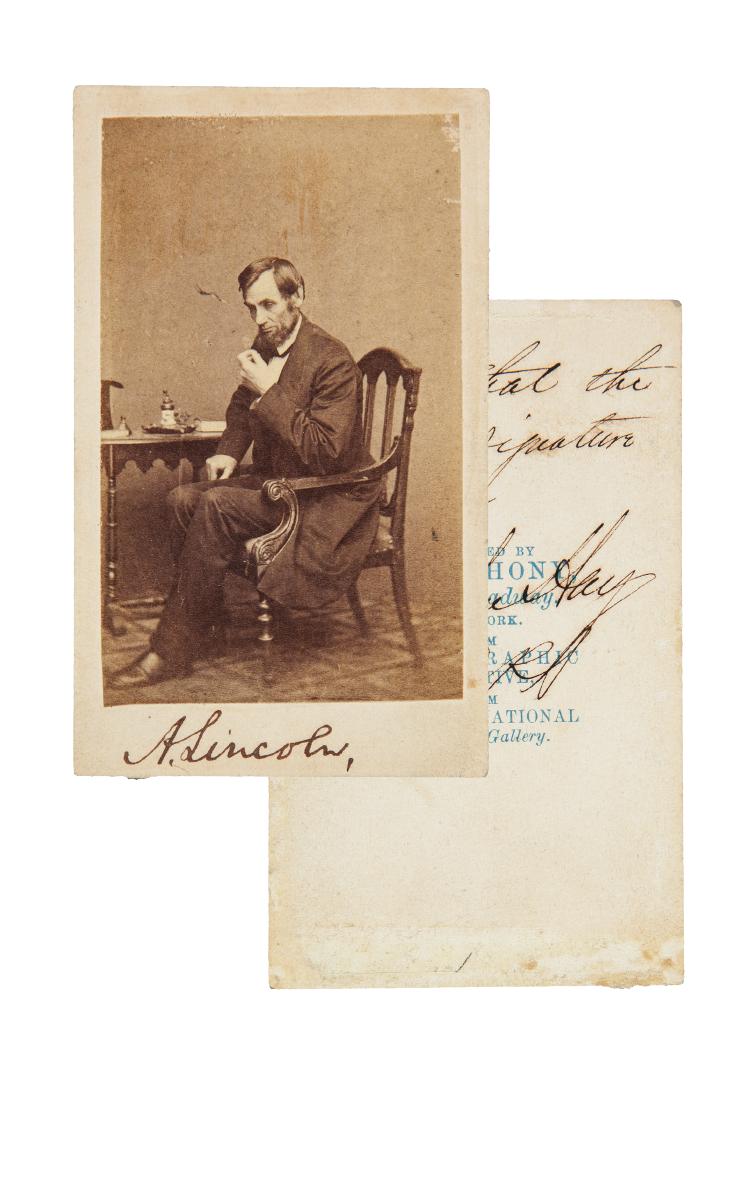
23
Abraham Lincoln: Outstanding
Signed Carte-de-Visite.
Sold for $175,000 | September 2016

24
• Camouflaging Valuables
Most people are predictable, and experienced burglars know all the
“good” hiding places. Typically, most people keep their valuables
in the master bedroom and home office. Guess where burglars go
first? So, try to avoid these typical hiding spots and leave decoys.
One gentleman we know has numerous coin albums (filled with
pocket change) in plain sight on the bookshelves. Another has an
old safe that is heavy but moveable. It resides in the corner of his
home office and contains absolutely nothing. Its predecessor was
removed in a burglary during which the thief left behind several
thousand dollars’ worth of electronics because he thought the
safe was the jackpot. He now has a monitored security system
and modern wall safe, but still keeps a decoy as a reminder of the
importance of security and the burglar who was the recipient of
nothing but an empty box (and perhaps a hernia). If you don’t own a
safe, small valuables are best hidden in a false outlet with an object
plugged into it. A collection of small items should be spread over
several non-obvious locations.
Off-Site Storage & Transport
The primary off-site storage option is a safe deposit box at either
a bank or private vault. If you can find a location close to home
or work, the inconvenience factor can be minimized. Sites with
weekend access offer a major advantage. Remember that while safe
deposit boxes offer secure storage, vigilance is still important. Here
are a few storage and security guidelines you need to remember
and follow:
• Rent a box that is large enough to hold everything easily.
• Use a desiccant such as silica gel to remove any moisture, and
change it regularly.
• Never forget that your greatest security danger is in transporting the
collectibles to and from the box. Use a nondescript container to hold
them, and try not to carry too much weight at once.
• Have someone drive you to the location, or, if you must drive
yourself, park as close to the entrance as possible to minimize your
time on the street with the valuables.
•
Avoid establishing a pattern in picking up or dropping off your collection.

25
• Be aware of your surroundings when transporting your collectibles.
Check your rearview mirror frequently, and if you believe you’re being
followed, do not drive directly to your destination. Make several
detours that do not follow any logical traffic pattern and see if you
are able to lose the suspect vehicle. Know the location of the closest
police station, and if you can’t lose your stalker, drive there directly.
We know this sounds a little like a made-for-TV movie, but
it’s important.
• Carry a cell phone with you when transporting valuables. A
frightening robbery technique is to rear-end a vehicle and then rob
the driver when he or she exits to assess the damage and exchange
insurance information. You will have to use your judgment in this
situation, but if you are carrying valuables and are rear-ended,
you should remain in the car and call 911. Don’t hesitate to tell the
operator that you are carrying valuables and are concerned about the
possibility of robbery. If you really believe that it is a setup, don’t stop
— call 911 and explain the situation while driving to the police station.
With their steady flow of people, noise and confusion, airports have
also become a favorite hub for thieves. The usual method is the
snatch-and-grab; the thief targets someone who appears distracted,
grabs the briefcase or bag and melts into the crowd.
A variation is the use of teams of criminals located where baggage is
being unloaded at the curb. A few of the thieves distract the victim while
others grab the bags, after
which all of them make their
escape in a waiting vehicle.
Hermès Extraordinary 30cm Matte
White Himalayan Niloticus Crocodile
Birkin Bag with Palladium Hardware.
Sold for $140,000 | September 2021

26
Your only protection is constant vigilance. You should always either
have a grip or your foot on any case containing valuables.
Some people carry a loud whistle when transporting valuables. If
someone attempts to grab a bag and you start blowing the whistle, the
thief is put on the defensive. Everyone else in the area is confused or
startled by the noise and the thief loses the camouflage of the crowd.
Shipping
First and foremost, do not attach anything to the outside of the
package that would hint at its contents. When Ty Inc., the company
behind Beanie Babies, realized that boxes were being lost during
shipping in huge quantities at the height of that mania, it made a
simple change by removing its logo from the boxes. Consequently,
theft shrank dramatically. If a package contains any identifying words,
such as “coins,” in the mailing address or on the outer wrapping, it
makes the contents of that package more appealing to thieves.
Pack the items securely so that they do not rattle. Loose spaces
(such as in tubes) should be filled. Styrofoam “peanuts” are good for
this purpose. Make sure that your shipping box is strong enough for
the included weight, then bind it with strapping tape. If you are using
Registered Mail (the preferred method for most collectors to ship small
packages containing valuable items), the Post Office has a requirement
that all access seams be sealed with an approved paper tape.
Including the word “fragile” in large letters on the package may prevent
rough handling by carriers.
Method of shipment involves a decision that weighs value, risk and
cost. USPS First Class or Priority Mail with insurance is the most
cost-effective method for packages up to $500 in value. The rate of
loss has dropped considerably over the last decade, making this
a reasonable option for inexpensive items that can be replaced.
Above the $500 value, Registered Mail with Postal Insurance is
both cost-effective and extremely safe. The one caveat is that the
insurance maximum for registered mail is $50,000. The Post Office
requires you to indicate if the contents exceed that amount but it
will not pay more than $50,000 on a claim. If the value exceeds
that amount, you will need to send multiple packages or obtain
supplemental private insurance.
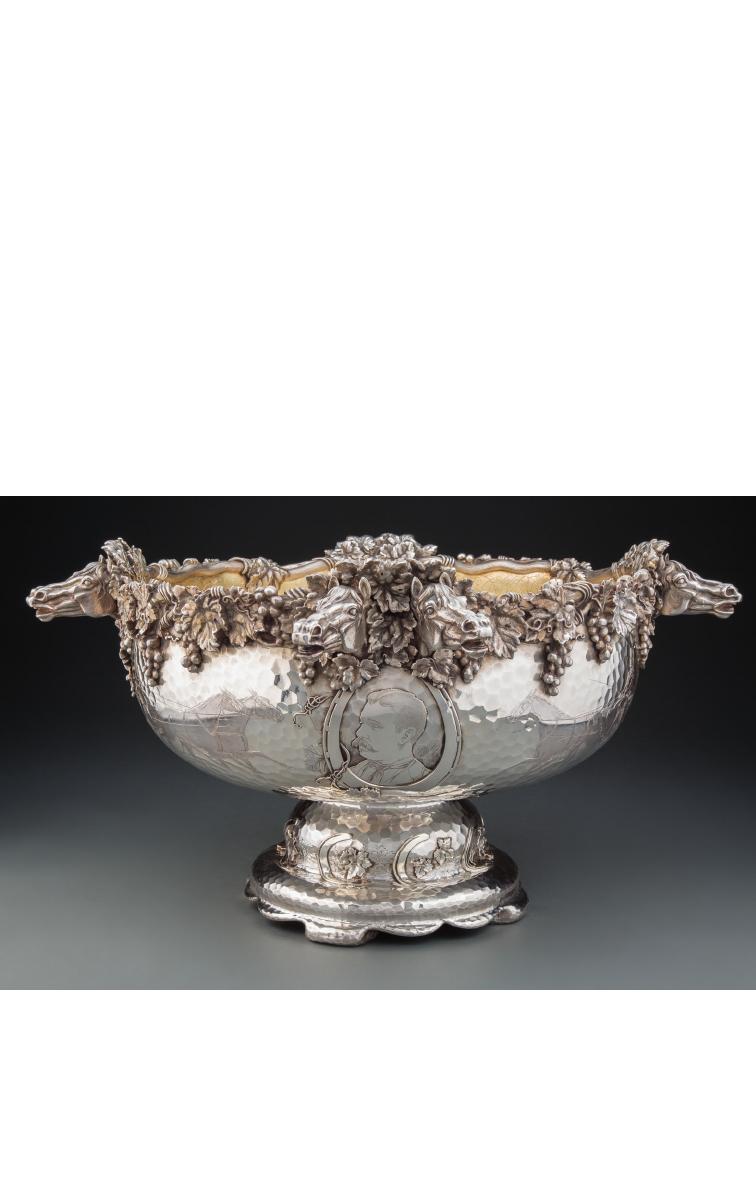
27
FedEx, UPS and other private shippers have become popular in recent
years, offering fast, guaranteed delivery with a high success rate. They
also offer some insurance options, but rare coins and certain other
collectibles are specifically excluded. You will need to obtain private
insurance coverage if you use one of these shippers, or you may
request that the other party insures the shipment if there is sufficient
coverage available and a shipper account.
Insurance
No matter how many security measures you employ to protect your
collection, you will also need to acquire suitable insurance to protect
yourself. This can be a complicated area, as insurance companies
write policies in a language all their own. As a collector, you need to
be especially mindful of homeowner’s insurance because you likely will
require a policy that differs from a standard one.
A Tiffany & Co. Partial Gilt Silver Punch Bowl and Ladle Driving Trophy, New York, 1881
Sold for $118,750 | November 2020
American Presentation and Trophy Silver from the Collection of J.D. Parks

28
Coins hidden in fake plumbing and stored in a bank box that likely
hadn’t been opened in nearly a century were two of the tales Heritage
Auctions President Greg Rohan told collectors attending his presentation
on “Major Collections We’ve Auctioned – The Back Story” at the Central
States convention.
After Jules Reiver, noted collector, researcher and writer, died in 2004 at
87, his family contracted with another dealer to sell his collection. Rohan
said, “We were brought in. I went out to their house. It was a very modest
house. I had been there before, and I remembered that Jules had to go
under the kitchen sink to get coins out. He had them in fake pipes under
the sink. So we got the coins that were at the house and went to the bank
and got the coins that were at the bank.”
Reiver’s wife, Iona, who died in 2017 at 97, said her husband had always
said his collection was worth $1 million. Heritage estimated it would bring
$6 million to $7 million, a figure, Rohan said, he thought the family took
with a grain of salt. The collection sold for more than $8 million. After the
collection was sold, Rohan said Mrs. Reiver told him, “I feel just like the
Beverly Hillbillies.”
In 2015, Rohan said, Heritage was contacted by an art auction house
about a coin collection that had been put together between 1850 and
1930 by the Rev. James G .K. McClure, pastor of First Presbyterian
Church in Lake Forest, Ill., for 25 years. The coins, housed in custom
cases, had sat largely untouched in a bank safe deposit box since
McClure’s death in 1932. “Boy, did that get my attention,” Rohan said.
“To see the coins that had been untouched since that time was one of
the most extraordinary experiences.”
The collection was notable for its depth, state of preservation and the way
it was accumulated. Rohan said, “Rev. McClure got coins at a face value
at the bank. There were a few times where there were coins that were
harder to get, proof coins that he got as gifts from parishioners. He paid
maybe a few dollars for some.
“Seeing his Walking Liberty halves, all of which he got at the bank at
the time of circulation – the 1921, ‘21-D, ‘21-S. These coins were of
Nearly Century-Old Safe Box
Coins Stored in Fake Plumbing,

29
Nearly Century-Old Safe Box
unbelievable quality, unbelievable. ... I would
look at rows of coins that were taken out of
circulation that were worth just a few dollars
each and then come to one that was worth a
hundred thousand dollars.”
He said a Chicago-area coin dealer had offered
the family $840,000 for the collection. “Being
intelligent and prudent people, they decided to
get another opinion,” he said. “Our estimate was
$3 million to 3.5 million.” The collection sold for
$4.5 million at auction in 2016.
The Gene Gardner collection, another collection
Heritage handled, sold for $52.8 million in four sales in 2014 and 2015.
Rohan, who developed a personal friendship with Gardner before his
death in 2016 at age 80, said Eugene Herr Gardner Sr. was born to a
life of wealth and privilege. He had the wherewithal to build a notable
collection while still in college in the 1960s, but his hobby didn’t sit well
with his family.
Rohan said, Gardner’s “father was very upset with him for spending a
few hundred thousand dollars in the 1960s on coins and thought it was a
complete folly and a waste of money and that his son has lost his mind.
So Gene sold the collection after he graduated from college and ... it
brought $700,000.
“I think there was some ‘I told you so’s’ around the dinner table. I don’t
think Gene’s father ever questioned his business acumen ever again. He
turned out to be one of the great investors of our time.”
Gardner founded investment advisor Gardner Russo & Gardner, which,
Rohan said, had more than $10 billion under management.
Gardner was diagnosed with multiple myeloma in 2010 and given a short
time to live. At his wife’s request, preparations for the first auction were
speeded up so Gardner could witness the sale of some of his most-
prized coins. However, he lived to see the entire collection sold, dying a
few months after the last sale and six years after diagnosis.
This article was originally published in the Summer 2019 issue of the Central States Numismatic Society’s
journal, The Centinel, www.centralstatesnumismaticsociety.org. Reprinted with permission.
Heritage Auctions President
Greg Rohan addresses bidders
on Platinum Night.
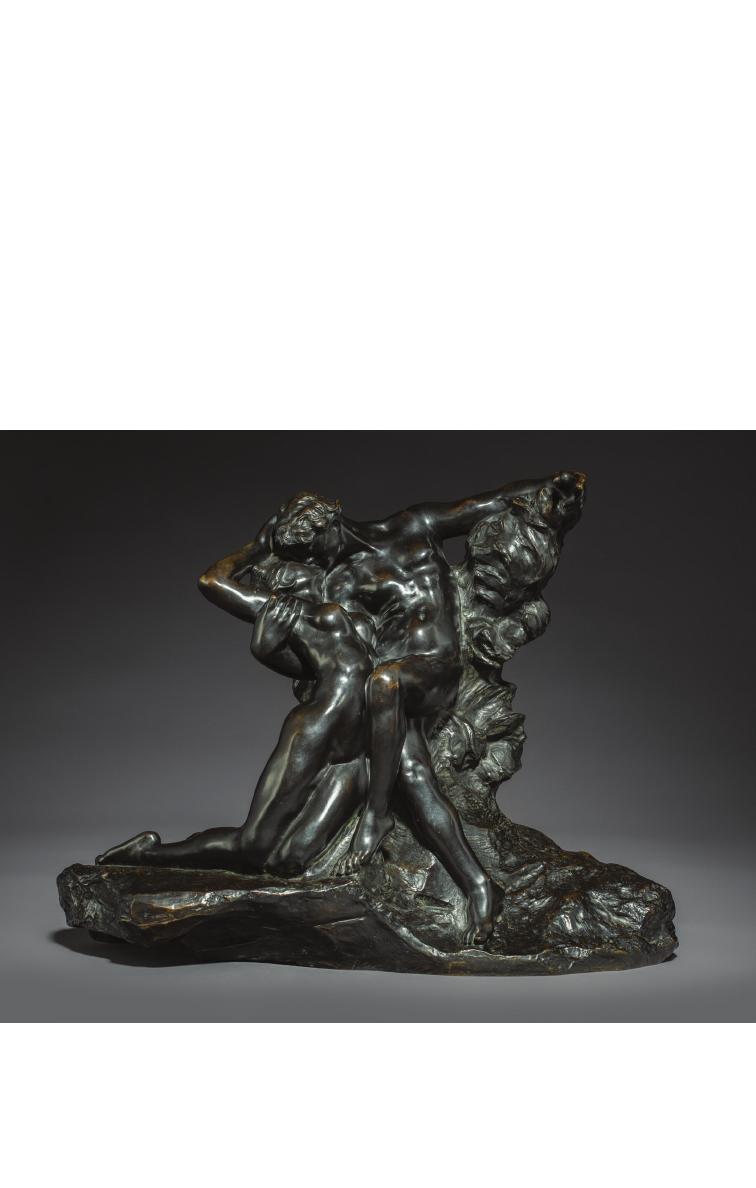
30
As someone seeking protection, you need to understand that contract
language generally favors the insurance company, and you need to
know exactly what coverage you are — and are not — receiving. That
means asking questions and reading every word of every document in
every policy you sign. In the case of coins, you need to be particularly
certain of what coverage applies when the coins are at home, in
a safe-deposit box or in transit, as well as any additional security
requirements for each circumstance. Some things to keep in mind:
• Most homeowner’s policies DO NOT insure your coin or jewelry
collection beyond $1,000 (combined with all other items defined as
a “valuable”). Most insurance companies will offer a rider for more
specific coverage, but since it’s not their standard business, they
Auguste Rodin (French, 1840-1917)
Éternel printemps, deuxième état, première reduction, 1899-1901
Bronze with brown-black patina
25-7/8 x 33-1/4 x 15-3/4 inches
Sold for $762,500 | December 2018
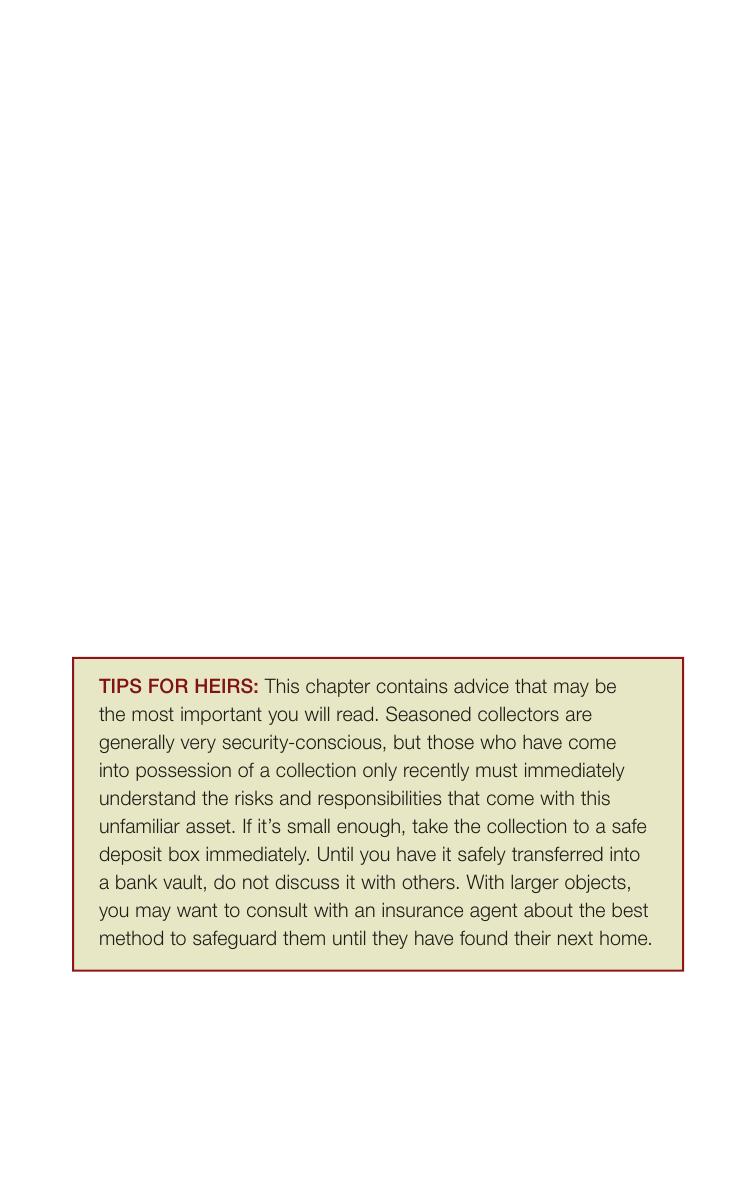
31
typically are not very flexible. You will be required to provide a fixed
inventory, and modifying the coverage whenever you buy or sell items
from your collection will likely require a major paperwork effort.
• Some insurance companies require an “appraisal for insurance.”
If you choose a company that has this requirement, guidance is
available later in this book. In this specialized field, the best option
often comes from a company that is familiar with the needs of
collectors. We have listed several companies in Appendix B.
• In the case of collectibles other than coins, you may want to ask a
dealer to recommend a knowledgeable insurance company. Not all
insurance companies possess the expertise or coverage options
that collectors require. While premiums vary, price is not the only
consideration. Find an agent and a company with a good reputation
and expertise in the field of collectibles. You may have to pay a little
more, but it will be well worth the price if you ever have to submit a
significant claim.
• One final note about security: You need to be careful about
discussing your collection (and especially where you keep it) with
others. Enjoy your collection, but stay vigilant. A little paranoia could
save you hundreds of thousands of dollars.
TIPS FOR HEIRS: This chapter contains advice that may be
the most important you will read. Seasoned collectors are
generally very security-conscious, but those who have come
into possession of a collection only recently must immediately
understand the risks and responsibilities that come with this
unfamiliar asset. If it’s small enough, take the collection to a safe
deposit box immediately. Until you have it safely transferred into
a bank vault, do not discuss it with others. With larger objects,
you may want to consult with an insurance agent about the best
method to safeguard them until they have found their next home.
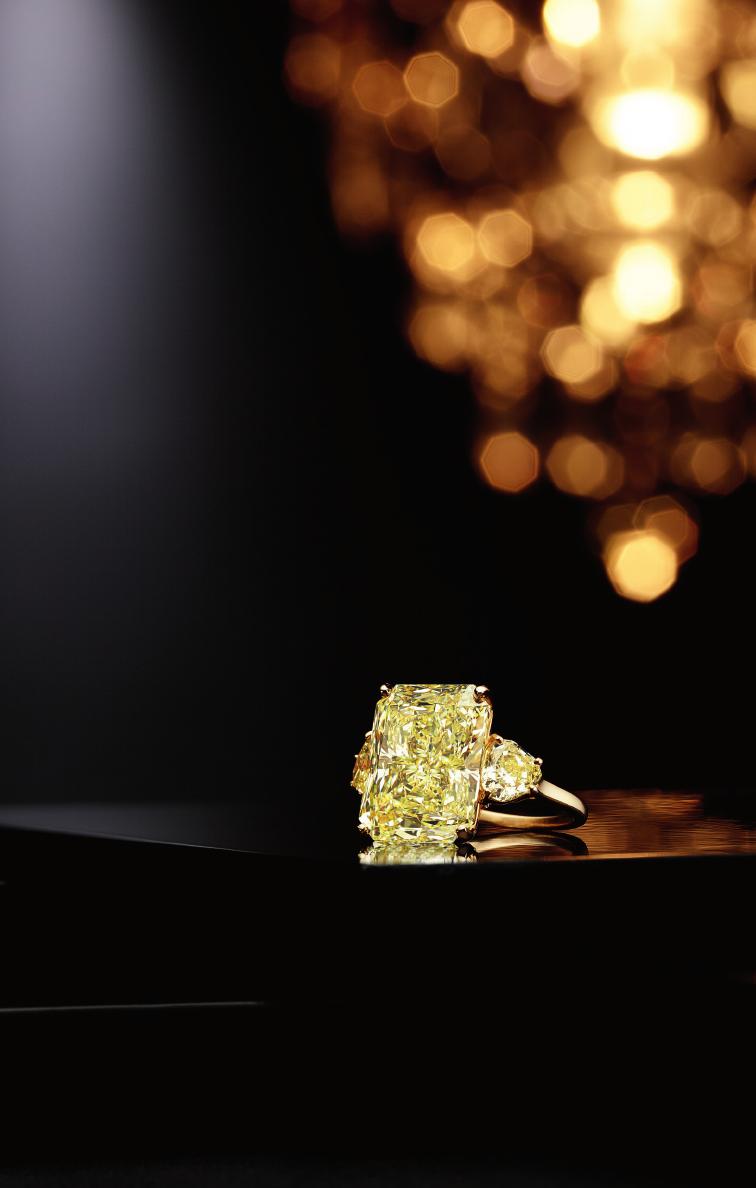
32
Fancy Light Yellow Diamond, Diamond, Gold Ring
Sold for $324,500 | December 2017

33
Estate Planning For Your Collection
PART TWO
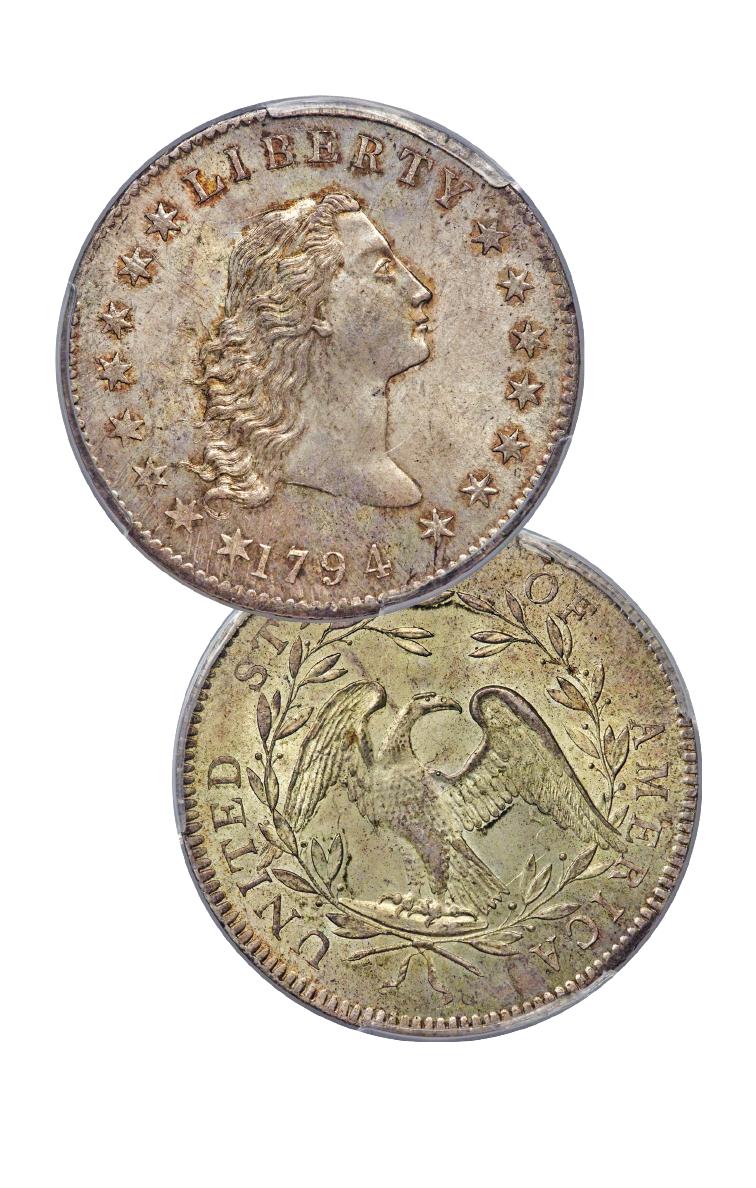
34
1794 $1 B-1, BB-1, R.4,
MS66+ PCGS. CAC
Sold for $6,600,000 | August 2021
Bob R. Simpson Collection

35
4
All in the Family
C
elebrities are just like us. Given their wealth, notoriety, and teams
of advisors, we expect celebrities to have formal estate plans in
place. Historically, it turns out that celebrities have more in common
with “us” and often do not have the appropriate documentation and
directives in place that will provide for their loved ones and secure their
legacy once they are gone. Jimi Hendrix died in 1970, and his estate
was subsequently the subject of 30 years of litigation — a very un-rock
’n’ roll epilogue to an incredible career. Queen of Soul, Aretha Franklin’s
estate was involved in a long legal dispute over the singer’s two
handwritten wills, one in a locked cabinet and the other found in the
couch. Neither document was prepared by a lawyer or listed witnesses,
and both documents divided the singer’s assets differently. Ultimately,
a jury in Michigan probate court ruled that the handwritten document
found in the couch represented the singer’s true last wishes. Picasso
was revered as a business genius during his lifetime, but when he died
in 1973 without a proper will, his many heirs were thrust into chaos. It
took six years and a reported $30 million in expenses to divide up his
estate. More recently, musician Prince passed away in 2016 without
a will, leaving a sizeable estate hanging in limbo. Prince’s estate finally
settled in 2022 after a six-year court battle.
One recent survey found that over half of Americans with children do not
have a current estate plan. Most people try to avoid contemplating their
own demise, and many collectors are equally reluctant to consider the sale
of their treasures. As Woody Allen once told his physician, “Doctor, I’m not
afraid of dying, I just don’t want to be there when it happens.”
Heritage Auctions’ Trusts & Estates team assists professional
advisors, executors, fiduciaries, and beneficiaries with confidential
and comprehensive auction and formal appraisal services tailored to
the unique needs of the estate or collection. We recognize that each
client and appraisal project differs and often involves multi-category
collections and residences. Our Trusts & Estates specialists offer
complimentary walk-through services and bring together decades
of experience appraising property in over fifty collecting categories.
Beyond providing auction estimates for disposition purposes, our

36
team assists with providing cost estimates for appraisal projects for
charitable donations, gift taxes, loan collateral, and financial planning.
Heritage Auctions Appraisals Services, Inc. prepares appraisals for one
item or large, multi-category collections.
Headquartered in Dallas, Texas, and with offices in New York, Chicago,
Beverly Hills and Palm Beach, Heritage is well-positioned to work with
families and their advisors, providing creative solutions for estate planning
with collectibles. We understand this process can be overwhelming and
emotional; our goal at Heritage is to ensure a transparent and enjoyable
legacy- planning experience for you and your family.
Involve Your Family
Many collectors keep their families in the dark regarding scale and
nature of their collecting; there are many reasons for this, but consider
taking a longer view. Have you thought about the effect that your
sudden death or incapacitation might have on your collection? What
would you expect from your heirs? What should be done with your
collection? Should it be sold? Distributed among family members?
Some combination? What will remain after taxes?
One call from a surviving spouse took us to a house where we found
a dining room table covered with boxed world coins that were stacked
three feet high. From a distance, it was one of the most impressive
collections that we ever had inspected: all matching coin boxes, each
neatly labeled with its country of origin. The surviving spouse told us
that her husband had been a serious collector for more than three
decades, visiting his local coin shop nearly every Saturday. He then
came home and meticulously prepared his purchases, spending hour
upon happy hour at the table in his little study.
We opened the first box and couldn’t help but notice the neat, orderly
presentation: cardboard 2x2 coin holders, neatly stapled, with crisp
printing of country name, year of issue, Yeoman number, date of
purchase and amount paid. We also couldn’t help notice that
90 percent of the coins had been purchased for less than 50 cents
and the balance for less than $1 each. The collection contained box
after box of post-1940 minors — all impeccably presented and all
essentially worthless.
We asked the surviving spouse if she had any idea of the value of the
collection. She replied that she knew rare coins were valuable, and
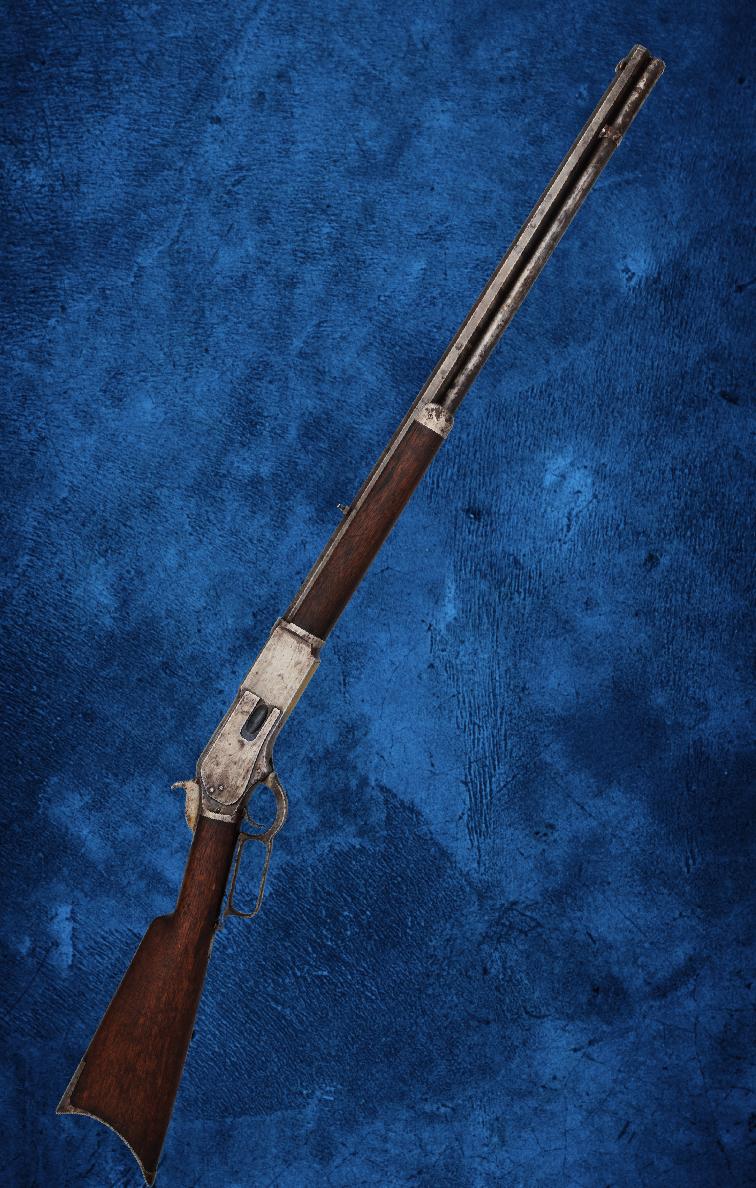
37
The Very First Winchester Model 1876 1 of 100 Shipped
Historic Winchester “One of One-Hundred” Model 1876
Centennial Lever Action Rifle with Factory Letter
Sold for $615,000 | June 2023
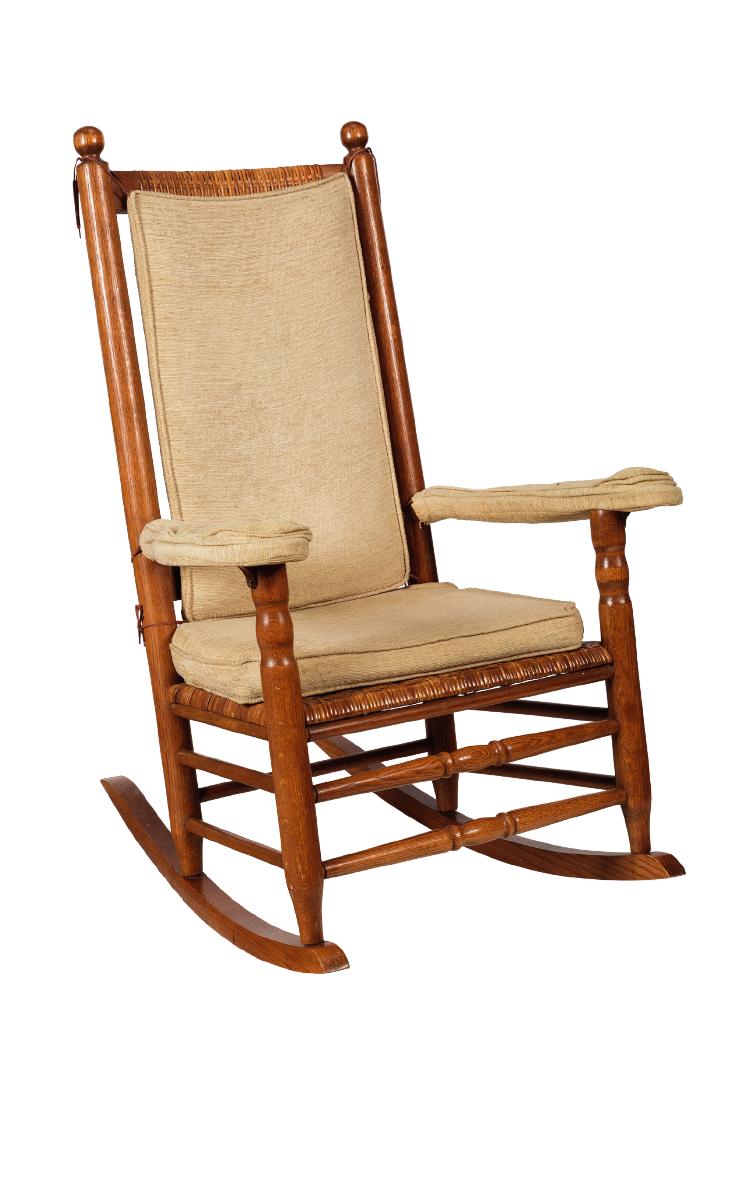
38
John F. Kennedy. White House Rocking Chair gifted by the President to former New York
governor Averell Harriman.
Sold for $591,000 | May 2022
The Estate of Melvin “Pete” Mark, Jr.

39
since her late husband had worked so diligently on his collection for
so many years, she assumed that the proceeds would enable her to
afford a nice retirement in Florida.
We had to carefully explain that we couldn’t help her with the sale of
the coins. Her husband had enjoyed himself thoroughly for all those
years, but he had never told her that he was spending more on
holders, staples and boxes than he was on the coins. Her dreams of a
luxurious retirement diminished, we advised her to contact two dealers
who routinely purchase such coins. The fault was not in his collecting,
but in his failure to inform his wife of the nature of the collection
.
We more typically encounter surviving spouses and heirs at the other
end of the spectrum. When your spouse spends $50,000 or $100,000
on rare coins or other collectibles, you generally have some knowledge
of those purchases, but not always — and often, the most prodigious
collectors are coy with their family about just how much they’re
investing. This leads to the more enjoyable surprises — those made-
for-TV moments when we inform unsuspecting heirs of the vast fortune
they’ve inherited.
Years ago we encountered the younger of two sisters who were
dividing their father’s estate. He had left Germany in the early 1930s
— not a great time to immigrate to America, but an excellent time to
be leaving Germany. He brought to America two collections: antique
silver service pieces and his rare coins. The coins were sold mostly to
establish his business in Iowa. Despite the hard times, he prospered
and was able to devote the next 30 years to rebuilding his collection of
German coins.
At the same time, he continued to expand his collection of 17th-
and 18th-century German silverware. We knew every aspect of his
collecting history because he left a meticulous record on index cards.
Every coin and every piece of silver was detailed with his cataloging
and purchase history. His daughter was in awe of his passion for
maintaining such detailed records.
After his death, his daughters decided to split his collections between
themselves. They added up the purchase values of each of his
collections, which were just about equal. The older sister/executor
had acquired some small knowledge of antique silver, and since she
wished to keep all of the elegant heirloom tea service for herself,
she decided to keep the silver and give her younger sister the coins
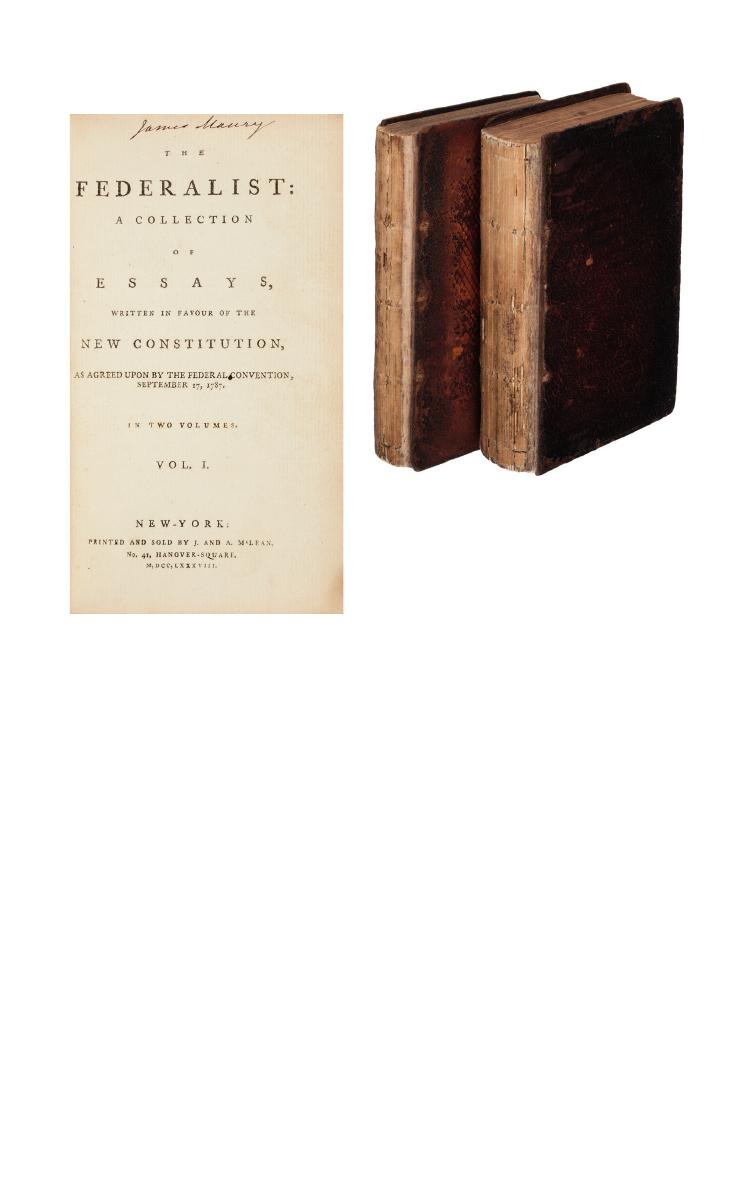
40
[Alexander Hamilton, James Madison, and John
Jay]. The Federalist: A Collection of Essays,
Written in Favour of the New Constitution,
as Agreed Upon by the Federal Convention,
September 17, 1787. New York: Printed and
Sold by J. and A. M’Lean, 1788.
Sold for $312,500 | March 2020
— she definitely was not interested in splitting. After selling the non-
family silver pieces through a regional auction house, she boasted of
realizing more than $200,000 from her father’s $27,000 investment.
The younger sister came to us with only one box of his coins. Her
father’s records for that box indicated a cost of less than $2,000, but
knowing the years he had collected, we were anticipating at least a few
nice coins. However, we were totally unprepared for what came next:
pristine coins of the greatest rarity. His $2,000 box was worth more
than $150,000, surpassing all our wildest expectations.
She then produced the record cards for the rest of the collection, and
we offered to travel back to Iowa with her the same day. When we
finished auctioning the coins, she had realized more than $1.2 million.

41
In another situation, the wife of a deceased coin dealer called us to
consign $1 million in rare coins from his estate. This asset represented
a significant portion of her retirement assets. We eagerly picked up the
coins, and already had started cataloging and photographing when we
received an urgent phone call from her attorney. The coins had to be
returned immediately. It appeared that her husband had been holding
the extensive coin purchases of his main customer in his vaults, and
he had neither informed his wife nor adequately marked the boxes.
Most of her $1 million retirement asset belonged to her husband’s
client and not to her husband.
A final example that really distressed us demonstrates that partial
planning, no matter how well intentioned, cannot always guarantee
the desired outcome. A collector with sizeable holdings divided his
coins equally (by value) between his adult son and daughter, with
instructions that they should seek expert advice before selling. After
the daughter came to us, she was pleased to learn that her coins
were worth in excess of $85,000.
Once she signed the Consignment Agreement, she told us the rest of
the story. Her brother had “sold” his share eight months earlier to a local
pawnbroker for less than $7,500. Her father hadn’t shared his knowledge
of the asset’s value with his children for fear that his son would spend the
money foolishly. Instead, her brother basically gave it away.
So, what should you do to prevent such problems?
If transferring your collection to the next generation is desirable, you
will want to provide for an orderly transition. If they aren’t interested in
sharing your love of the collectibles, you will have to decide whether
to dispose of the collection in your lifetime or leave that decision to
your heirs. If the latter, your family should — at a minimum — have a
basic understanding of your collection, its approximate value and how
you want it distributed. The default do-nothing alternative can present
a financial and emotional burden on your beneficiaries and lead to a
costly estate settlement.

42
Important questions to be discussed:
• Are there heirs who will want the collection from a collector’s
standpoint?
• Where are the objects kept?
• Where is the inventory of the collectibles kept?
• What is the approximate value of the collection?
• Has the collection been appraised? Was the collection appraised by
a qualified appraiser? Where is the appraisal and does it need to be
updated?
• Do you have legal title to the collectibles in your possession? If the
collectibles in your possession belong to someone else, do you have
power as Agent, Trustee, Guardian, or Executor to deal with them?
• Are there certain dealers or other experts such as an auction house
representative you trust to provide guidance to your heirs?
• Is there a firm that you and your heirs wish to use in the collection’s
disposition after your death? Is that firm noted somewhere in your
estate plans?
The horror stories that begin this chapter are all true, none are isolated
cases, and they won’t be the last. If, for whatever reason, you choose
not to to discuss your particular circumstances about the collection
with your family, consider choosing a trusted person or estate planning
professional to discuss your particular circumstances. You can also
take the time to write detailed instructions or simply make notes in this
book, and leave it in your safe deposit box or wherever you keep your
valuables.
The next few chapters help guide you through your options for
planning with collections. Whatever direction you and your family
choose for the handling of your collection, the written instructions can
be discussed with your estate planning advisor. Having thoughtful
discussions with your advisor and family, along with a valid document
stating your wishes kept with your collection’s inventory, will greatly
help your heirs when handling your estate.
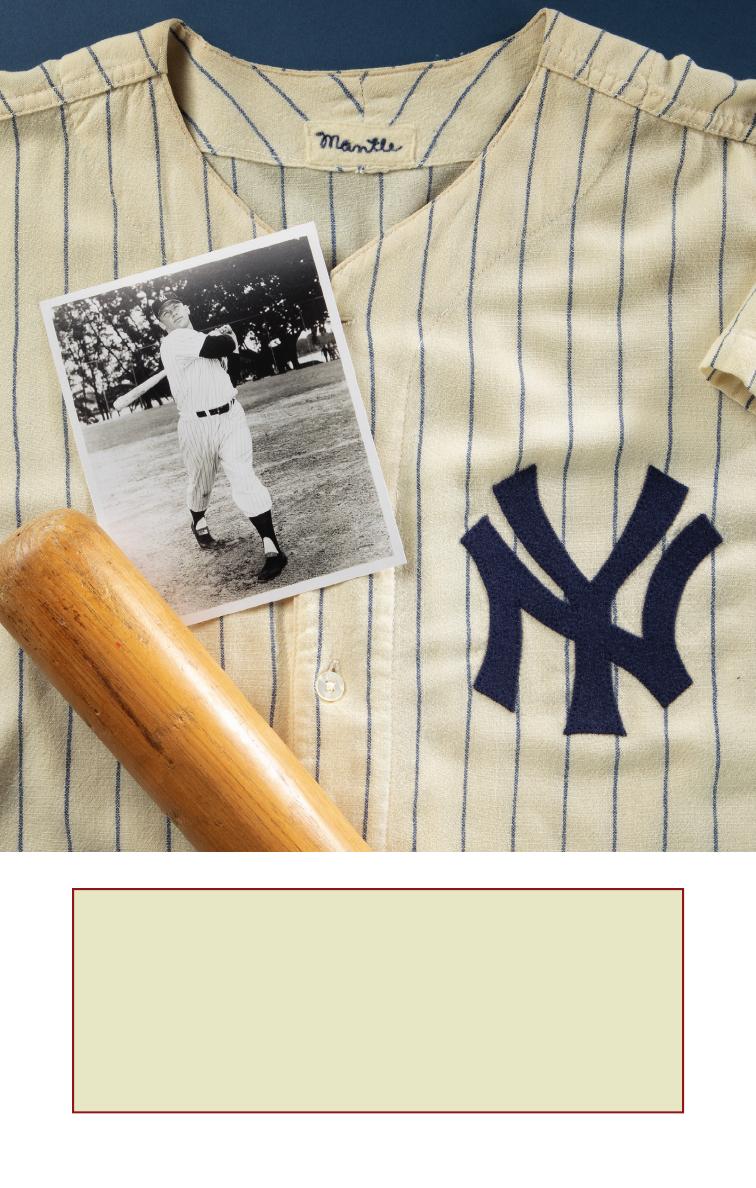
43
1958 Mickey Mantle Game Worn
New York Yankees Jersey, SGC
Superior/Superior-Excellent with
Multiple Photo Matches
Sold for $4,680,000 | August 2023
TIPS FOR HEIRS: This chapter does not address inheritance
issues, but communications can be initiated from any direction.
Do you have a parent with a collection? Certainly it is an issue that
requires tact, but such a discussion may save considerable difficulty
later. Additionally, if you know in advance that your spouse or relative
has named you as executor in a will or as trustee of a trust, a few
conversations about the collection will make your life much easier.

44
Story
Chris Ivy’s
Chris Ivy is the Director of Sports Auctions for Heritage
Auctions. He graduated with a BA in History from the
University of Texas at Austin and joined Heritage in 2001
after serving as a professional grader with Sportscard
Guaranty Corporation (SGC) in New Jersey.
Heritage Auctions consignment director Peter Calderon
was as skeptical of that first call as any reasonable person would have
been: a hoard of 700 baseball cards that are more than 100 years old
and in mint condition is something that never has happened before.
So when a stranger calls you up and says that’s what he has, it seems
dubious.
But when he showed me the photos on his cell phone, I was intrigued. If
it was what it looked like it was, this was a very, very big deal. The next
day, the family sent us a box with eight cards via FedEx. We confirmed
their authenticity and it would have been an amazing find even without
the roughly 692 cards that still remained in Defiance, Ohio, where we flew
as quickly as possible because the heirs were concerned about having
that kind of value sitting in a home.
The consigner was a man named Karl Kissner, who, as the executor of
his aunt’s estate, represented some 30 heirs, each of whom had a stake
in the collection. The cards had been stored in a box in an attic of the
modest home for a century, buried under an antique dollhouse. One card
had been out of the box during that time, exposed to the elements —
and it served as a reminder of what would have happened to the other
cards had they not been so well-preserved. But because of that box,
we were staring at probably the single greatest find in the history of card
collecting: ultra-rare cards depicting icons like Ty Cobb, Connie Mack,
Cy Young and Honus Wagner, all in conditions similar to the brand-new
cards you could buy today.
The question of how to sell the cards was challenging. At the time, the
universe of collectors for the set likely consisted of a grand total of fewer
than 50 people. The 1910 E-98 set was, paradoxically, so rare that few
people wanted it. High-end early baseball card collectors tend to be
relentless completionists — laser-focused on accumulating whole sets
— and the E-98 set was so elusive that few collectors had ventured to

45
try. The limited universe of collectors combined with the sheer size of
the collection meant it would be financial suicide to try to sell the whole
collection at once with a mega-auction.
Within the collectibles field, it is common for owners of hoards to sell
off their treasures piecemeal over time, while keeping secret the true
size of the collection out of fear that if people know how large it is, they
would wait for the prices to come down. As a result, the prices never
even start high.
With the family, we decided right away that wasn’t the way to do it. First,
we didn’t think it was ethical — and that if we followed the “slow leak”
approach, we would end up with a lot of disgruntled buyers who had
overpaid for the first few cards only to watch the prices come down.
Second, we knew that a cache of this size could attract tremendous
media attention — especially if the family was willing to serve as the
public face of it — and, with a set featuring a limited collector base
like this one, we thought media attention could expand that market.
We talked to the family about how to approach the press and the first
questions were, “What should we call it? What’s the name of the region
you’re from?” They told us it was known as The Black Swamp; at first,
we weren’t sure about calling it that. But while the name seemed a
little dark, we decided that it was intriguing and mysterious enough to
attract attention.
So we opted for a sort of hybrid approach. We would offer the story of
The Black Swamp Find to the media, but also would carefully sell off
the collection over the course of four or five years. We put out a press
release, and the first major story came from The Associated Press.
Local and cable news shows followed and, finally, the Today Show
called. The story appeared on literally thousands of traditional and
online media outlets.
Thirty members of the family came to the auction for the first few cards
from the Black Swamp Find; in total, the first 30 cards we sold realized a
combined $566,132. The family understands the importance of patience
in realizing full value for the collection, so it looks like I’ll be telling the story
of the Black Swamp Find for years to come.
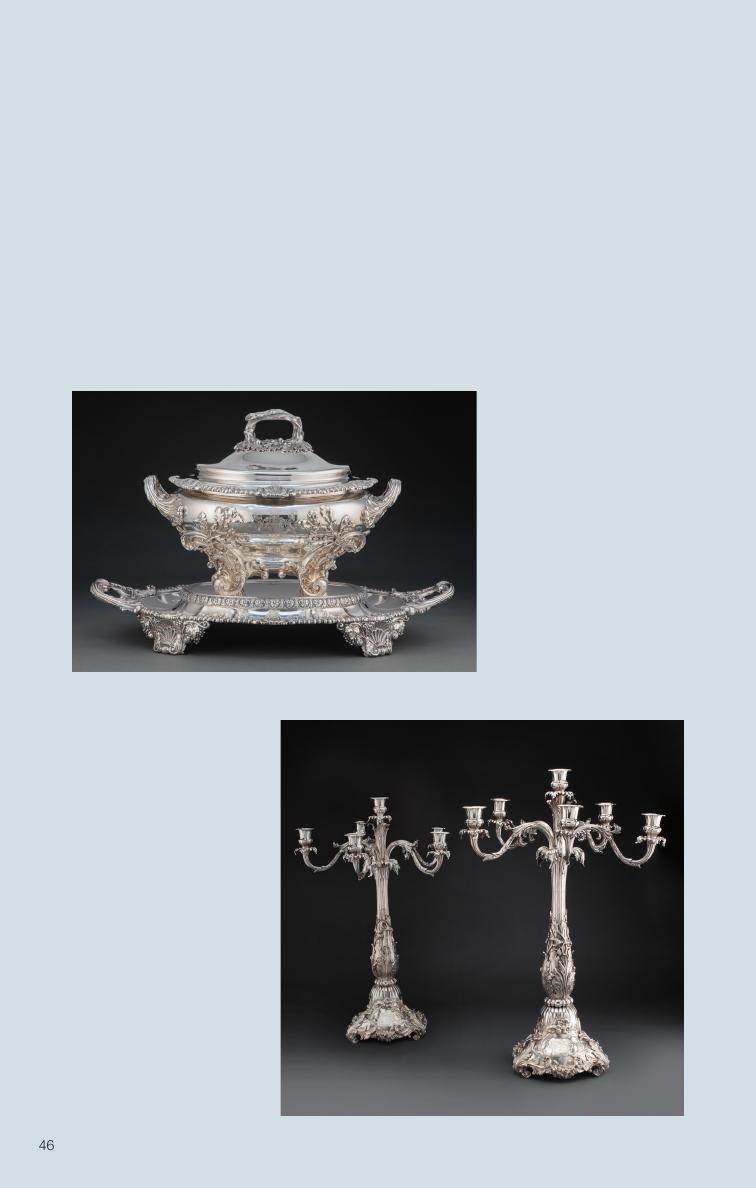
46
Mildred Hedrick Fender
Fort Worth, Texas
H
eritage was honored to present an impressive collection of fine
silver and decorative arts from the Estate of Mildred Hedrick
Fender in our Fall 2022 auctions. Mildred’s passion for giving back and
her love of entertaining made her a pillar of the Fort Worth community.
John Bridge Silver Covered
Tureen on Stand,
London, 1827
Sold for $27,500
A Pair of Charles Reily
and George Storer Silver
Candelabra, London, 1844
Sold for $35,000
The Estate of
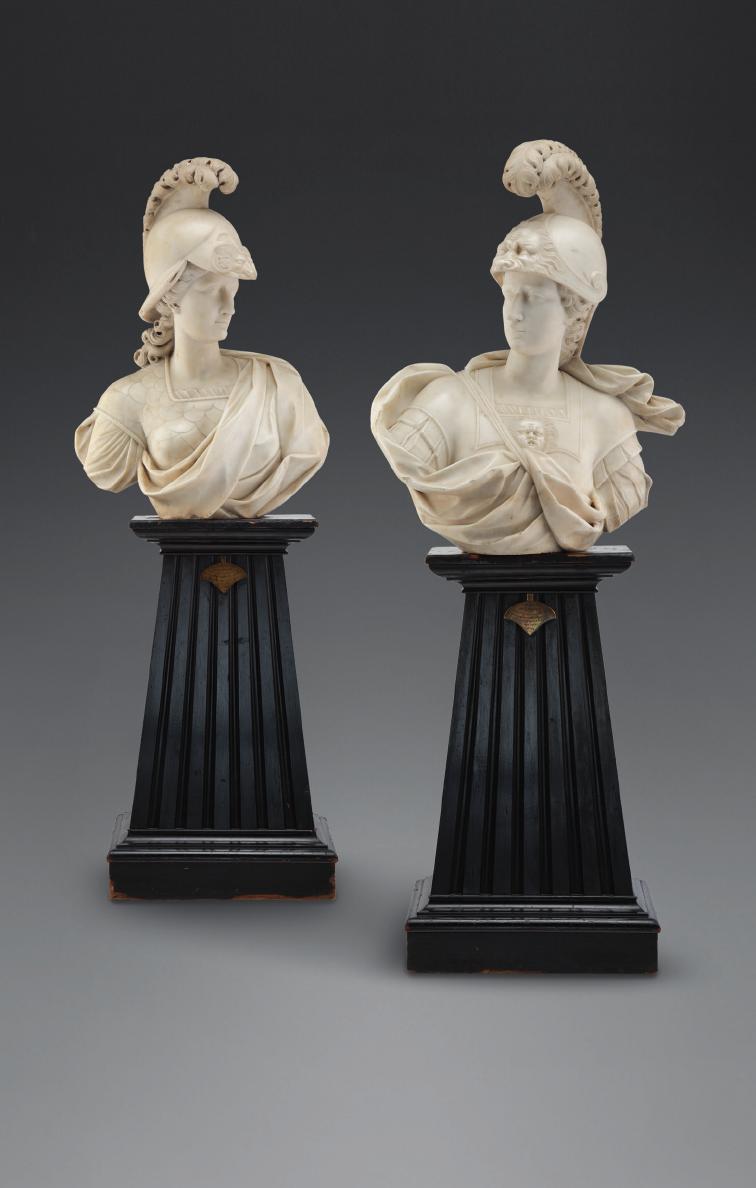
47
A Pair of Italian Marble Busts: Minerva and Mars, 18th century
Sold for $93,750
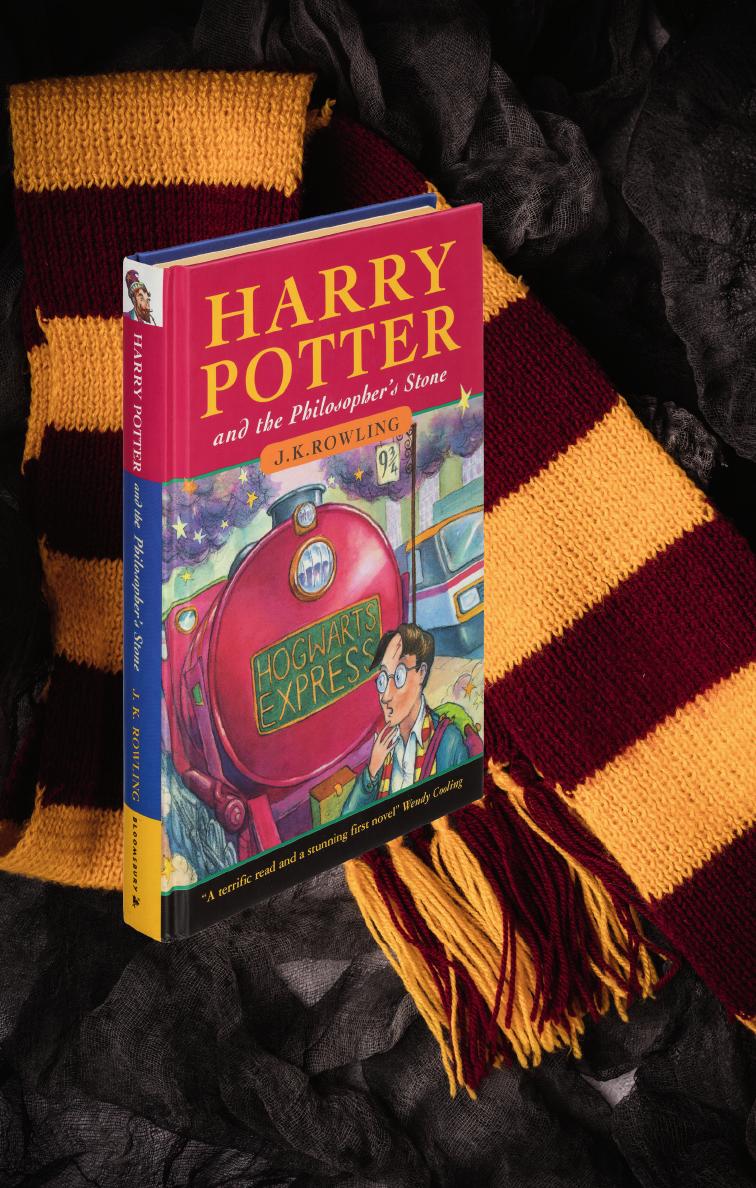
48
J. K. Rowling. Harry Potter and the
Philosopher’s Stone. [London]:
Bloomsbury, [1997].
Sold for $471,000 | December 2021

49
5
Division of Assets
“There is a strange charm in the thoughts of a good legacy, or
the hopes of an estate, which wondrously removes or at least
alleviates the sorrow that men would otherwise feel for
the death of friends.” – Miguel De Cervantes
I
nheritances bring out the best in some families and the worst in
others. The problem is that it’s difficult to predict exactly how the
prospect of an inheritance will work out with any given family, so it’s
best to plan everything you possibly can in advance to minimize the
potential for wrangling.
In the highly-charged, emotional environment surrounding the loss of
a loved one, any weaknesses in the relationships of those left behind
are exacerbated. Suspicious minds are more finely honed, and if the
estate remains for the survivors to divide, it won’t take much of a spark
to ignite a fire. You can minimize the likelihood of family arguments, rifts
and hurt feelings, as well as expensive and time-consuming litigation by
seeking expert advice for your estate planning documents with precise
written instructions for the division of your tangible assets to your heirs
and beneficiaries. A separate writing listing your specific instructions
for division and distribution can be helpful to serve as an adjunct to
your estate planning documents. Make sure it is signed, dated, and the
pages are numbered.
Instructions about collections are particularly important because
they generally involve a large number of pieces with valuations
that are not obvious based on appearance alone. For instance, in the
world of coins and currency, the same coin and date can include a
number of varieties and variations. Without the help of an expert, it is
not difficult to make an expensive error.
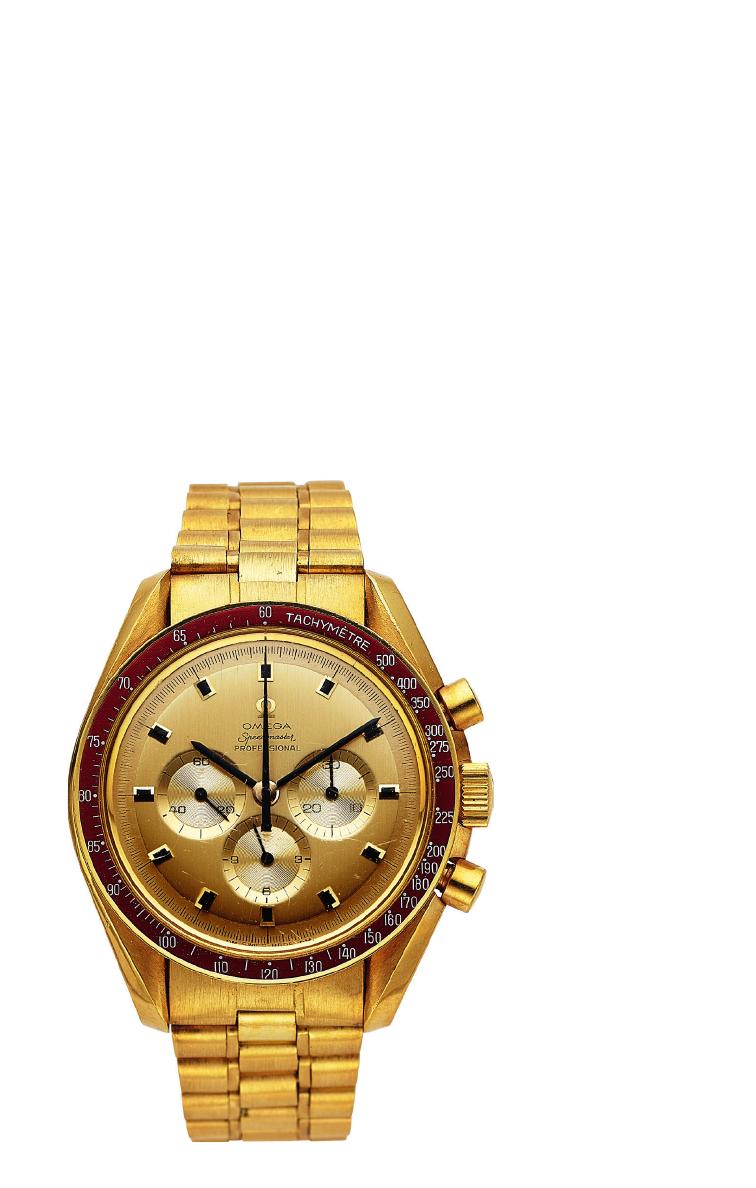
50
Upon a collector’s death, the representative of the estate, usually
the trustee or executor, will have the duty of getting the collection
appraised by a qualified appraiser to establish Fair Market Value (FMV)
as of the date of death. This valuation creates a new tax cost basis to
use in the future when selling or gifting the collection.
The values of items in a collection should not be based on insurance
appraisals; when this mistake is made, the heir who receives the
collection can come out far behind heirs who receive cash or real
estate. Insurance appraisals usually represent a “retail replacement”
valuation that can be very different from the “fair market” valuation
that would be used for financial planning or estate tax purposes. “Fair
market valuations” represent, by definition, a value closer to what a
collection might be expected to bring in an orderly sale.
Omega, Very Rare And Important Gold
Speedmaster Professional Wristwatch,
No. 19, Presented To Astronaut
Michael Collins, circa 1969
The Estate of Michael Collins
Sold for $765,000 | June 2022
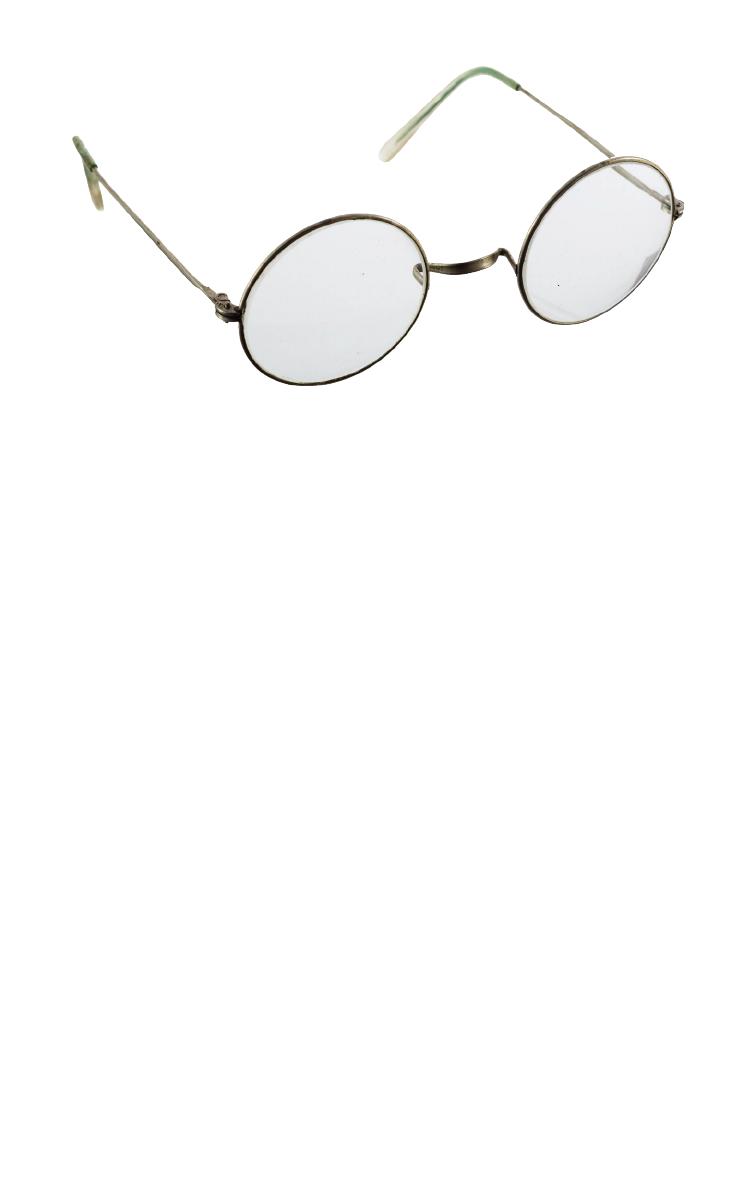
51
If an appraisal is not necessary to the estate administration, auction
houses can be a good resource for “auction estimates.” These are
not the same as an appraised FMV determination. They are a realistic
estimate of what an item could sell for an the open market, and most
auction houses provide this service free of charge. Your legal advisor
should always be the resource of whether a formal appraisal or auction
estimates are needed for your estate administration.
It may be disheartening to learn that your family members do not
share your passion and level of interest in your collection. Collectors
incorporate multiple strategies into their estate plans to achieve a
desired outcome. A simpler alternative is to establish an estate plan
directing that the articles be sold, with the proceeds shared equally
among the heirs rather than family members dealing with the process
of equitably dividing a collection.
Even with the best planning, you may still have the dilemma of whether
it is better for you to sell or dispose of your collection during your
lifetime or at death. During your lifetime, your personal knowledge and
management has served you well. We suggest you take care and
consideration by seeking advice from various professionals - an auction
house with whom you’ve worked well, or your wealth, legal, and tax
advisors. This will assist you in making a personal decision that will
serve your desires and preserve the asset value and family dynamic.
John Lennon Personally Owned
and Used Pair of Reading Glasses.
Sold for $57,500 | December 2021

52
A number of tax issues, which will be discussed later, also must be
considered. For now, it’s important to remember that there are different
tax consequences related to sales and gifts during your lifetime versus
disposition at your death. However, taxes should only be a part of your
determination — not the sole consideration. You must weigh many
factors in deciding what is best for you and your family.
In summary, your collection is yours to enjoy now and yours to sell
or give away as you see fit. The old saw says, “You can’t take it
with you.” You can, however, ensure that the collection provides as
much value for others as it has for you.
Make an action plan for your collection, even if you anticipate many
more decades of collecting.
If the timing is immediate, speak to your legal, tax and financial
advisors who are essential to the implementation of your plan and
are equipped to proceed accordingly. Otherwise, prepare detailed
written instructions and leave copies with both your collection and
your estate plan. If you prefer that your collectibles be distributed
among family members, provide specific instructions in writing as
to how distribution is to be accomplished. If you wish to distribute
the proceeds, providing a preference for a firm or dealer who is
knowledgeable, trustworthy, and reputable is always helpful.
With tax laws becoming more complex and ever changing, it is wise
to review your estate plan annually with your advisors. This can
help assure that your wishes for your collection are accurately and
effectively managed.
TIPS FOR HEIRS: Good communication between family members
can go a long way to enhance a good estate plan and ease the
transfer of assets. Involvement in a parent’s collecting activities can
create new and lasting bonds between the family members; you may
even begin to enjoy collecting yourself.
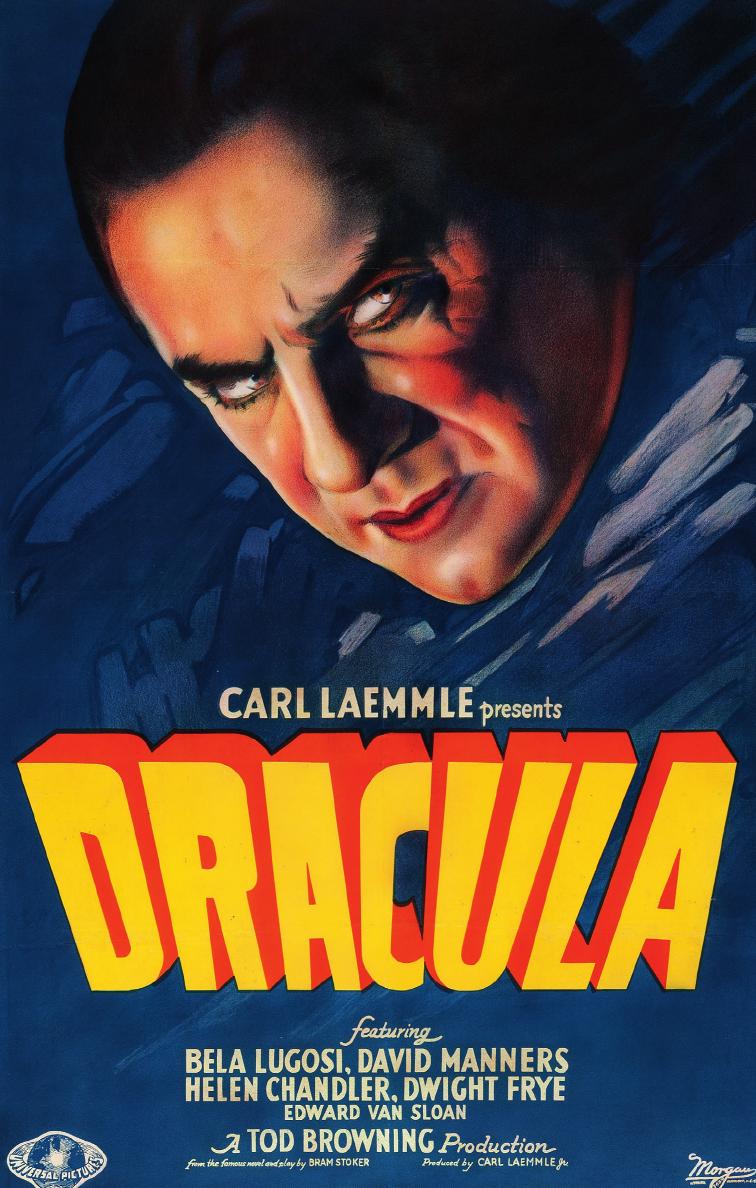
53
Dracula (Universal, 1931). One Sheet
(27” X 41”) Style A.
Sold for $525,800 | November 2017

54
Story
How Heritage
Set a New Market for
Norman Rockwell Preliminary Studies
By Pitting Different Category Collectors
Against Each Other
In 2016, an iconic but very small 11.5” x 9.25” Rockwell study — paint
sketched onto a photographic print — for his famous painting Triple Self
Portrait, was offered to Heritage Senior Vice-President Ed Jaster by a
previous consignor of minor Rockwell works. The client was successful
with his other offerings and Heritage was his first call. Heritage estimated
the piece at $150,000-$250,000. “This seemed to be a realistic price at
the time,” said Jaster, “based on its size and the fact that a similarly sized
study for Rockwell’s also-iconic Girl with Black Eye had failed to sell the
previous year at Sotheby’s against a $200,000-$300,000 estimate.”
Eventually, the owner of the art chose Heritage, partly based on a
recommendation by an independent Rockwell specialist, and partly based
on his previous success with his consignment to Heritage. He believed
that Heritage would be the best auction house to recruit collectors
across the spectrum of collecting categories rather than just marketing
the work to art buyers. According to Jaster, “It had long been Heritage’s
view that our top clients, regardless of specific collecting focus, maintain
a great interest in iconic artworks and collectibles in any category. This
insight informs our promotion efforts and gives our consignors a major
advantage over those of other leading auction houses.”
After substantial advertising and public relations campaigns, the day of
the auction found multiple bidders competing. The field comprised not
only American Art and Illustration Art collectors, but major Coin collectors
and serious Comic Art collectors, all of whom ended up battling it out.
These bidders drove the price to set a new record for any Rockwell study
at an unprecedented $1,322,500, becoming the first Rockwell study to
reach seven figures. The winner was a noted Comics and Illustration Art
collector, and the under-bidder was primarily a Comics Art client.
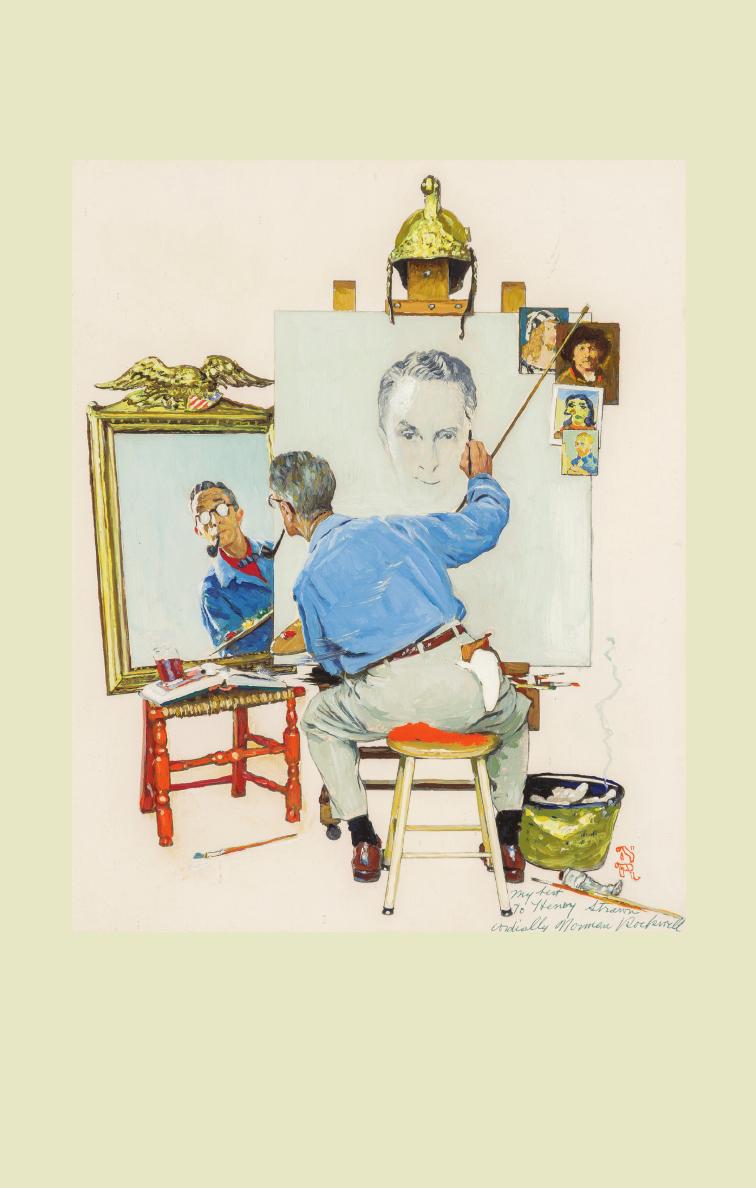
55
Norman Rockwell (American, 1894-1978)
Study for Triple Self Portrait, 1960
Sold for $1,332,500 | May 2017
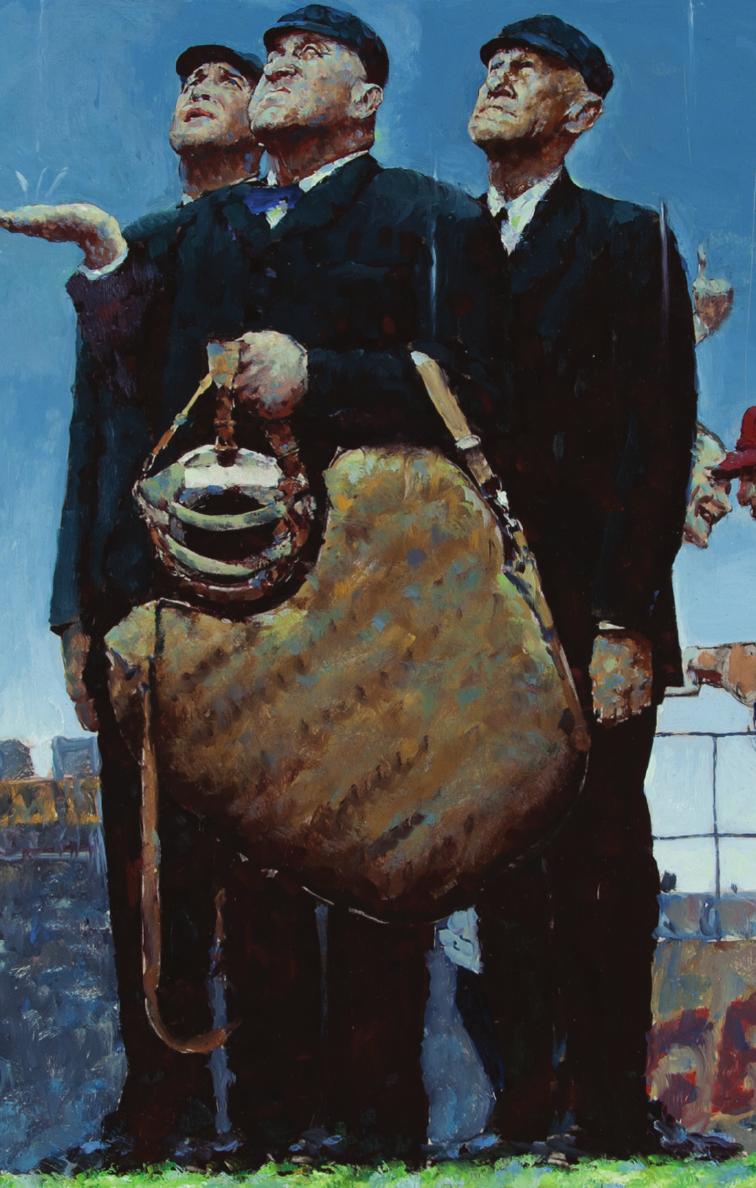
56

57
Coincidentally, just weeks later, another major Rockwell study larger in
size (16” x 15”) showed up at Heritage Auctions’ offices addressed to
our Sports Collectible department. Its arrival was completely unrelated
to Triple Self Portrait. Indeed, the owners, descended from the umpire at
the center of the image, believed they were sending us an autographed
print worth just a few thousand dollars. To that family’s delight, Heritage
specialists quickly identified the so-called print as an original painted
cover study for the 1948 baseball-themed Saturday Evening Post cover
dubbed Tough Call.
“In a controversial decision even within the company,” Jaster continued,
“our team decided to run the painting in our fall 2017 Online Signature
Sports Auction, this time with an estimate of $300,000-up. Would
lightning strike twice?”
Indeed it would! The fields of Fine Art, Illustration Art and Sports collectors
ran the study up to a new record of $1.68 million in an Internet-only
bidding war, which was ultimately won by a Sports collector.
As further evidence of the depth of Heritage’s cross-marketing efforts,
the two winning bidders as well as the two direct under-bidders of each
lot consisted of four separate clients.
Norman Rockwell (American, 1894-1978)
Tough Call, Saturday Evening Post cover study (detail), April 23, 1949
1948 Original Study for “Tough Call” by Norman Rockwell –
Gifted to Legendary Umpire “Beans” Reardon.
Sold for $1,680,000 | August 2017
WORLD AUCTION RECORD FOR AN OIL STUDY BY THE ARTIST
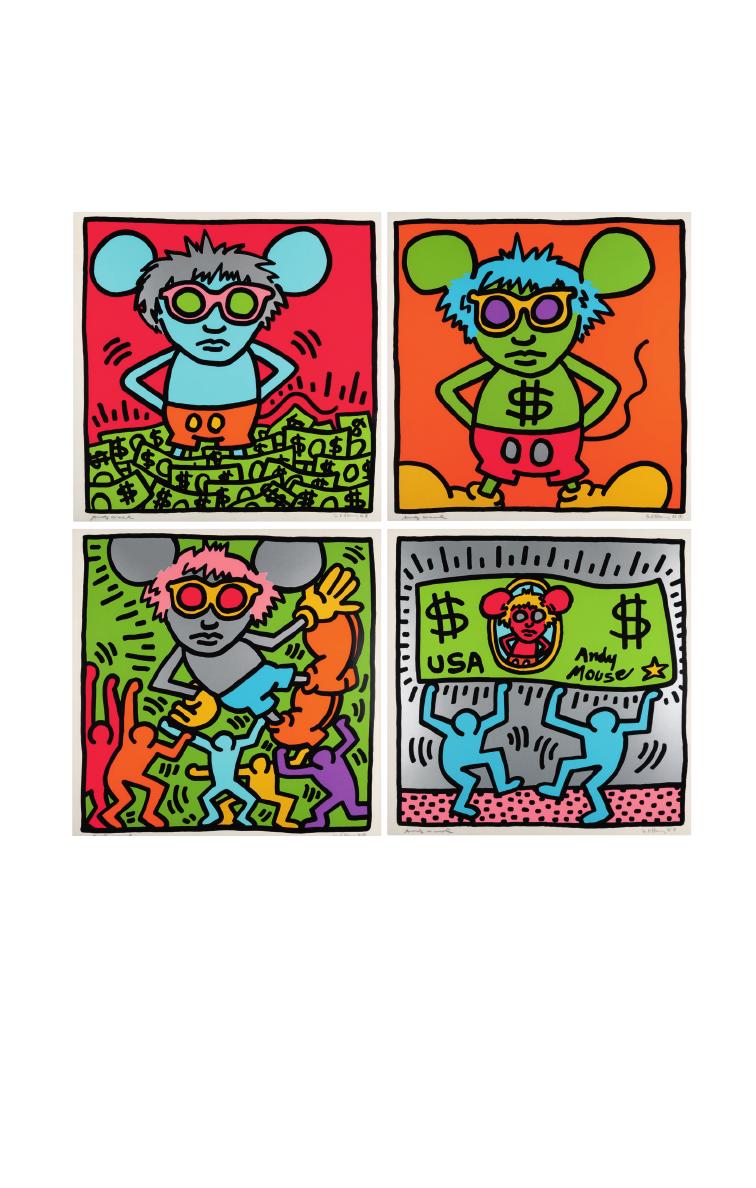
58
Keith Haring (1958-1990)
Andy Mouse, 1986
Portfolio of 4 screenprints in colors on
Lenox Museum Board
Edition 1 of 30
Sold for $945,000 October 2023
Private Collection, Miami, Florida

59
6
Should You Bequeath Your Collection,
or Sell During Your Lifetime?
“The main thing is to be moved, to love, to hope, to tremble, to live.”
– Auguste Rodin
A
collector spends countless hours of their time carefully and lovingly
amassing a collection, often having fought for individual pieces at
auctions, made great discoveries in unlikely locales, overpaid for that much
needed example and watched as the value of that collection grew over
the years. Selling a collection during the collector’s lifetime can provide
enjoyment, accolades and the benefit of reaping the financial rewards. That
financial realization can be used for donations, gifts or to pursue building
a better collection — or beginning in a whole new collecting field. As
collectors ourselves, we understand the fun of collecting and the pleasure
to be found in the thrill of the hunt. We see many collectors who sell an
entire collection multiple times during their lives and then branch into wildly
fluctuating directions of interest — or choose to concentrate their collecting
on higher quality examples in their field.
First, let’s consider some of the logistical and practical reasons for selling
a collection during one’s lifetime rather than donating, gifting or leaving the
collection in your estate.
Start planning for your collection early if you want it preserved or if you want
your heirs to receive the highest value for it, even if you anticipate many more
decades of collecting. Research and stay informed regarding the current
market for your collecting category to know when it might be the best time
to sell or when it appears to be more of a buyer’s market.

60
A collector may have established relationships with a particular auction
house or dealer — or have strong opinions as to what venue they would
prefer to see their collection sold through. Being able to make the decision
of sale venue and negotiate the best possible sale terms should be the
responsibility and concern of the collector themselves, not left as a burden
to their heirs. All too often we see situations where inherited collections or
disinterested families sell in inadequate local venues or to unscrupulous
dealers and receive only a small percentage of the true value. Below is an
example of how much can go wrong when there is a lack of careful planning
during a collector’s lifetime:
Heritage’s Trusts & Estates Department was approached by an
heir who had inherited half of his father’s comic book collection
and wanted to know what the sale potential and market value
was for his inheritance. The comics turned out to be wonderful
examples of some rare and excellent condition Golden and Silver
Age comics from the 1940s through 1960s. Heritage marketed the
collection extensively and ended up selling the comics at auction
for over $800,000. When we asked the heir about the other half of
the collection that had been left to his sibling, he told us the all-
too-familiar story of the other half having been sold locally for less
than $15,000. His sibling’s disinterest and lack of knowledge about
the value potential for the collection resulted in a significant loss of
inheritance — surely not their father’s intention.
Will codicils and directives may be written to instruct your heirs how you would
prefer your collection to be dispersed or sold as part of your estate. Those
directives are not always fully enforceable or followed by your beneficiaries.
By overseeing the sale themselves, collectors know that they have done best
for their collections and are able to receive the recognition and value they
deserve.
To Gift or not to Gift
If a collection is valued over the current lifetime gift tax or estate tax
exemption threshold ($12.92 million per individual in 2023), or the combined
assets of an individual exceed that amount, then it is important to consider
the implications of paying estate tax upon your passing versus possible gift
tax during your lifetime. There are very practical tax benefits of selling high-
value items or collections during your lifetime, rather than just allowing your
estate and heirs to deal with the distribution, sale and taxes.
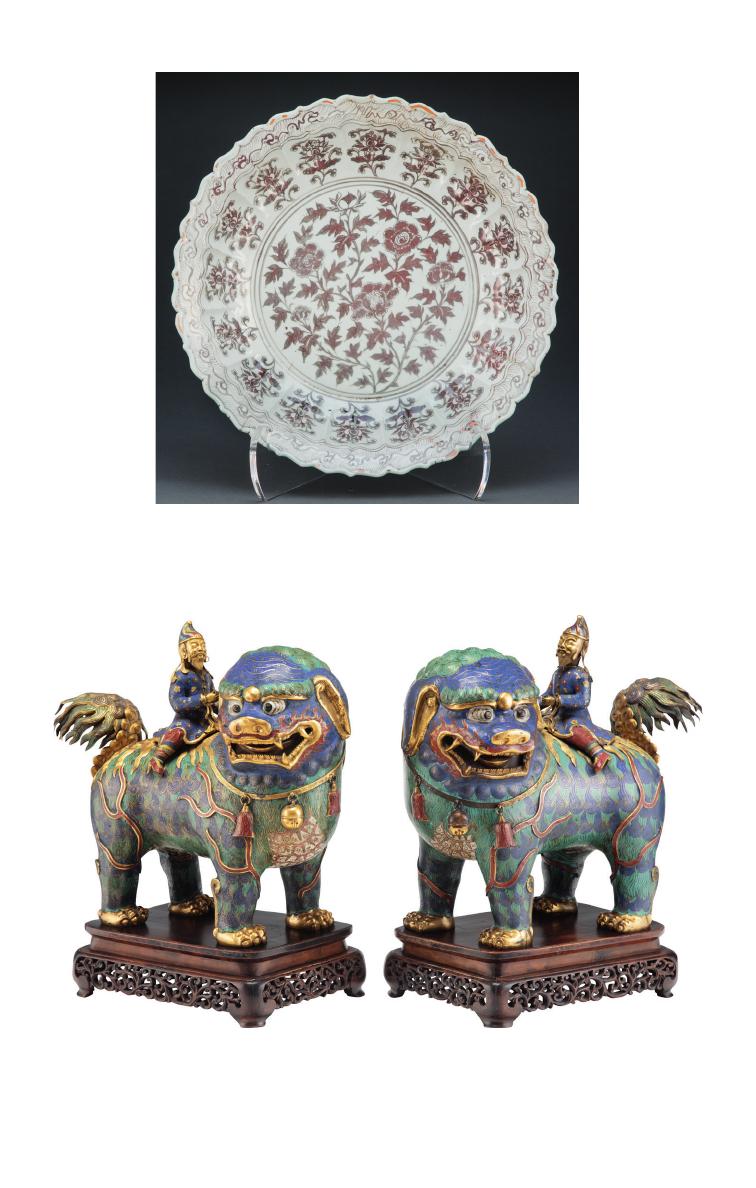
61
A Pair of Chinese Cloisonné Lions with Riders, 18th century
Sold for $175,000 | September 2023
Property from the Estate of Mrs. Amon G. Carter, Jr., Fort Worth, Texas
A Rare and Large Chinese Underglaze Copper Red Peony Dish, Ming Dynasty, Hongwu Period
Sold for $275,000 September 2022
Property from the Estate of Dr. Cornelius Osgood and Soo Sui-ling Osgood

62
Porfirio Salinas (American, 1910-1973)
Blue and Gold
Sold for $42,500 | October 2022
Property from a Texas Estate
Federal law provides that the threshold for lifetime gifts and the estate tax
exemption for transfer at death are the same amount, but the law allows for
increases considering inflation. For a death or gift in 2023, the exemption
amount is $12.92 million per individual. Gift tax rates start at 18% and can
reach up to 40% on certain gift amounts. The tax responsibility typically
lies with the donor, not the individual receiving the gift. There are practical
benefits to consulting your legal and tax advisor to consider planning around
lifetime or estate gifts of your collection.
Another benefit of lifetime gifting is that by making the gift of a tangible item,
you are establishing a new cost basis as of the date of the gift for the fair
market value. The recipient, whether a trust or individual, would then benefit
from less capital gains taxes when they choose to sell.
There are also benefits with planning to make annual exclusion gifts in any
one tax year. The 2023 annual gift exclusion amount is $17,000. An individual

63
can make as many annual gifts to as many people (not just family) as they
wish during a tax year. Spouses can make what are called split gifts in any
tax year under the same circumstances, thus doubling the benefit of the gift
tax annual exclusion limit. Always consult with your tax advisor to determine
what are the regulations for filing gift tax returns and in what circumstances
filing is necessary.
Another important tax consideration for lifetime giving is how it affects the
tax cost basis of the gifted item. For tax purposes, the cost basis is the
original purchase price of an asset. Generally, a taxpayer who acquires
property by gift takes a basis in the property equal to the donor’s adjusted
basis in the property at the time of the gift. This differs from bequests and
gifts upon death. For inheritances, the basis is the fair market value (FMV)
on the date of the decedent’s death or six months afterward, if the executor
elects the alternatative valuation date. The recipient’s basis for inherited
property is stepped up (or stepped down) from the decedent’s cost to the
asset’s fair market value at the decedent’s date of death. This is referred to
as a carryover basis and is often used for lifetime giving. The basis remains
the same as when the giver held the asset, but the basis may be adjusted
to account for any gift taxes that were paid at the time of the gift. To figure
out the basis of the property received as a gift, you must know the donor’s
adjusted basis just before the donor made the gift, the fair market value of
the property at the time the donor made the gift, and the amount of any
gift tax paid on the gift. The considerations involved in making lifetime gifts
or gifts at death require careful planning and analysis with family members,
estate, and tax advisors to ensure your wishes and expectations are met for
your collection.
Donation Considerations
The notion of preserving one’s legacy for future generations in the public
collections of museums, libraries and archives, is every collector’s dream.
Unfortunately, the reality of what might happen to your beloved collection
upon donation may not reflect your intent and expectations.
Museums and non-profits may not need or desire your beloved collection.
For example: in order for a collector to receive the optimum tax benefits of a
donation, the receiving entity must have “related and like use” of the items.
A collector’s perception of the importance of works of art or collectibles
may not be shared by current or future curators. The museum’s mission and
direction may change over the years so that your donation may find its way
into a storage cabinet or warehouse locker.

64
A museum’s permanent collection is not always permanent, and museums
are a consistent source of material in the auction market. Whether sold to
fund future acquisitions, assist with the wider capital campaigns, or even
provide operating funds, institutions often have a more pressing need for
money than objects. In many cases, it is preferable for the institution to
receive a cash donation over an individual’s collection.
In addition, donating the cash from a sale of an item doesn’t often generate
the same concern for an IRS audit as does a tangible gift which requires an
appraisal. An auction sale almost always complies with the very definition
of fair market value and determines the charitable donation valuation for tax
purposes. Past abuses, including outright fraud and tax evasion, have led to
very strict requirements for acceptable charitable donation appraisals, which
are more fully explained in the appraisal chapter of this book.
Many institutions do not accept donations that are bound by stipulations of
permanent holding or display. Only a very small percentage of donated items
actually get displayed. Furthermore, when a particular painting or artifact
becomes especially valuable in the market, the decision may be made to sell
it in order to obtain the monetary funds to support the institution’s mission
and endeavors.
If the institution is requesting the gift or donation from you, the object probably
has a much better chance of regular exhibition, although there is never a
long-term guarantee. If the donated item is regularly displayed, it usually will
have acknowledgement of the donation’s source on the wall plaque and in
any published literature. There are other methods in gifting a tangible asset
that can provide the same recognition but under different circumstances. For
example, a collector may consider loaning a piece of art to an institution or
a fractional gift of ownership. Including art or collectibles as part of museum
exhibitions adds to the provenance or history of a piece, which will make it that
much more desirable and valuable to the market.
Auctioning a collection in its entirety can increase the value of the lesser
pieces in the collection by association with the most sought-after pieces.
By establishing a collection identity, the provenance and pedigree of that
collection will carry forward with the items forevermore to add recognition
and appreciation both for the collector and the collection. Particularly in the
collectible categories such as coins and comic books, the provenance and
pedigree is key to securing an item’s desirability and value in the market.
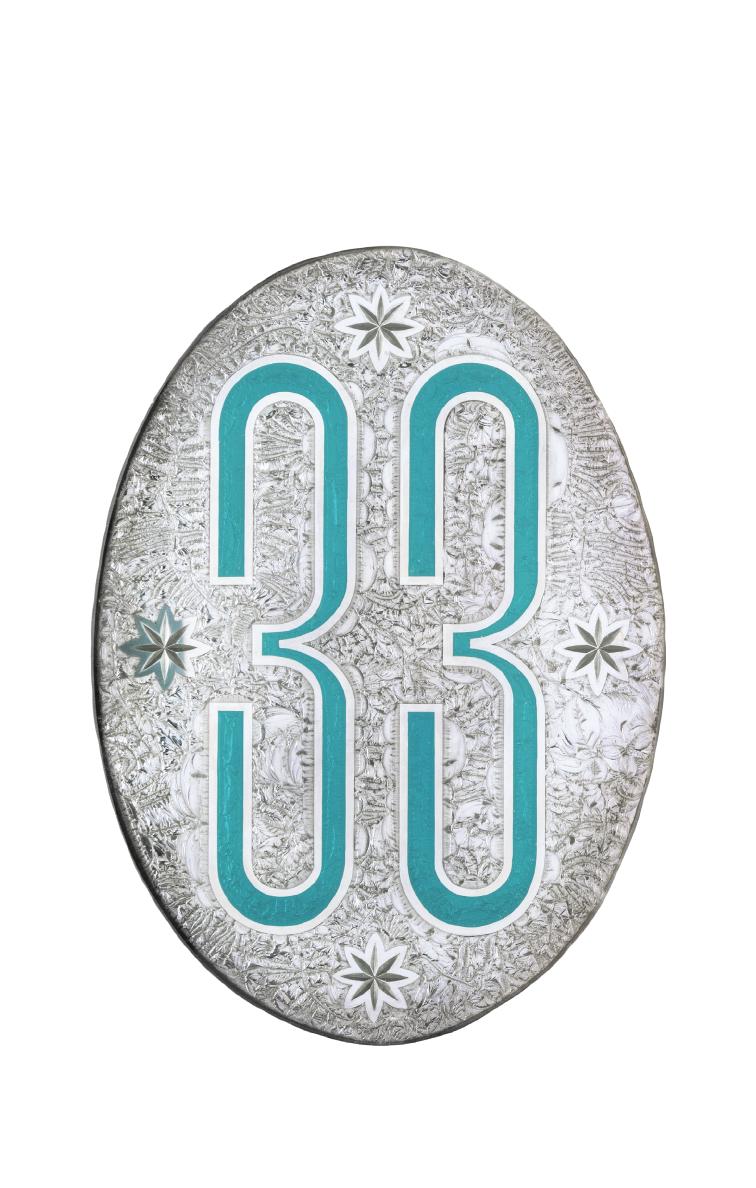
65
The idea of parting with a beloved collection may seem initially unwelcomed
and unthinkable, but the fact is that the “letting go” of a collection is an
inevitable part of a collector’s life — the question is how and when. With
proper planning by a team of professional advisors, making wise decisions
to oversee and control the sale, gift or donation can lead to greater after-tax
monetary reward, family harmony and fulfilling charitable objectives.
Disneyland - Original Club 33 Sign
(Walt Disney, c. 1967).
Sold for $108,000 | May 2022

66
The
Gardner
Collection
When it comes to selling a collection that was assembled over
years as a labor of love, many collectors like to have a hand
in the process, using the sale as a way to document their
connection to the items under their care and to share the stories
behind them.
In total, the over 3,000 coins in the collection of Pennsylvania
collector Eugene H. Gardner brought more than $53 million
across four major auctions at Heritage between 2014 and 2015.
The collection was the product of a keen eye and a passion
for numismatics that began in 1954 when as a college
student Gardner began assembling his first coin collection.
That collection was sold in 1965 but Gardner soon caught the
collecting bug again. The resulting “second collection” was
widely considered by numismatic experts to be among the finest
collections of silver coinage ever assembled. Gardner said he
learned many lessons when putting together his first collection,
then applying these in his second collecting effort.
For Gardner, it was important for him to work with Heritage in
the presentation of his collection, since he viewed the auctions
as the culmination of a gratifying and absorbing collecting
career. Gardner said that the sale of his collection “allows me
to introduce my largely completed collection to the numismatic
fraternity, which is very exciting to me. I love the thought of
sharing the auction experience with my family. We’ve really all
been in this together. In fact, my grandchildren know how to get
my attention by just saying, ‘Opa, what new coins do you have?’”
A Decision to Sell
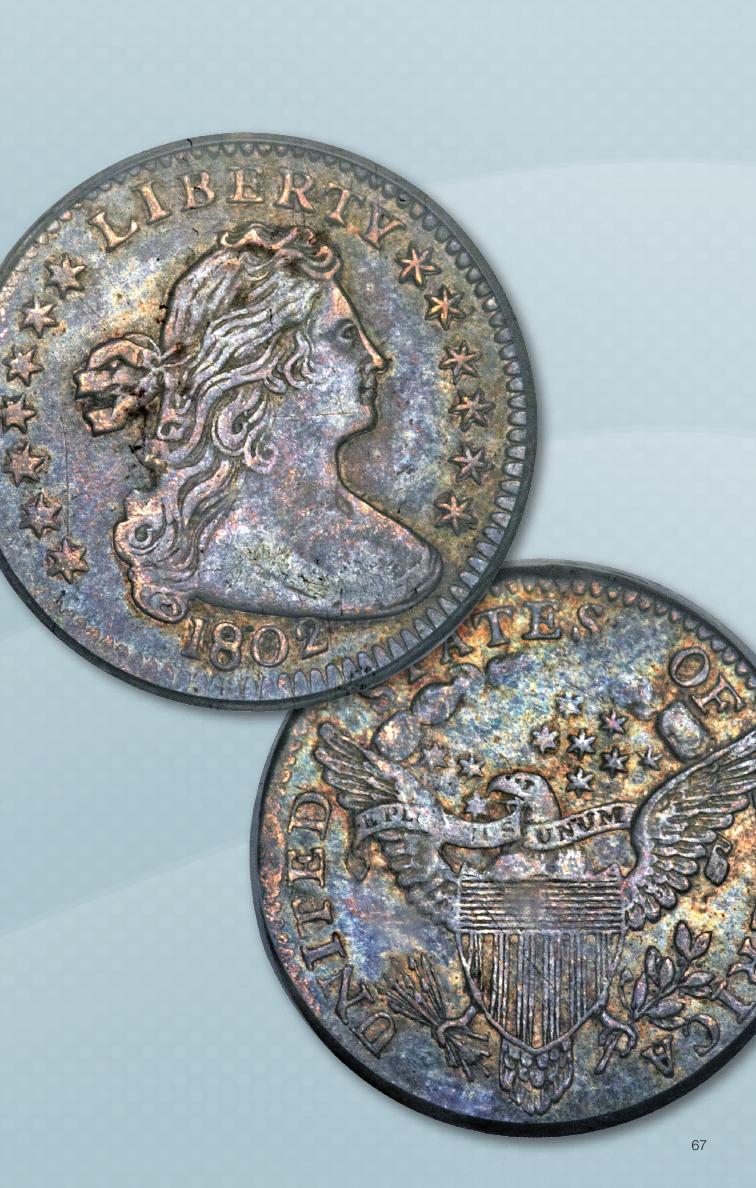
67
1802 Half Dime
AU50 PCGS
Sold for $352,500 | June 2017

68
His decision to sell his collection across a series of Heritage
sales over the course of a year, rather than at a single auction,
served multiple purposes — all in the interest of maximizing the
sale totals. First, it allowed collectors and dealers to stretch out
their bidding dollars instead of having to use all of their funds
at one time. Second, the strategy allowed key parts of the
collector’s groups of early U.S. silver coins, Barber coins and
Seated Liberty material to be spread out fairly evenly. Gardner
purchased many of his coins at auction, making the prices that
he paid public record. By establishing a new price point, he
would allow for even higher prices in the subsequent auctions.
Looking at the results of the Gardner sales shows that many
coins went up in value, a few went down, and some went
unchanged in their trips to the auction block. A collection’s
success at auction needs to be looked at as a whole, because at
auction, anything can happen with a single lot. Success is best
measured by how well a collection does in total for the collection
as a whole.
Gardner’s 1802 Draped Bust half dime, graded an About
Uncirculated 50, was a highlight. As Heritage’s catalog noted,
“One of the most desirable coins in high grade in the Gardner
Collection, the 1802 half dime is a signal rarity, a ‘trophy coin’
for even the most advanced numismatist and an issue unknown
in Mint State.”
It sold at a 2009 Heritage auction for $195,500 (then graded
by the Professional Coin Grading Service as an Extremely
Fine 45). At the first Gardner auction on June 23, 2014, the
piece (upgraded to an About Uncirculated 50) sold for a strong
$352,500, that price serving as a testament to the quality
and rarity of the piece. Heritage worked with Gardner to help
maximize value in his collection by seeking upgrades when
possible. The result was that Gardner, and his legacy as a
collector, will survive for generations in the many coins that carry
the Gardner pedigree.
The Gardner Collection
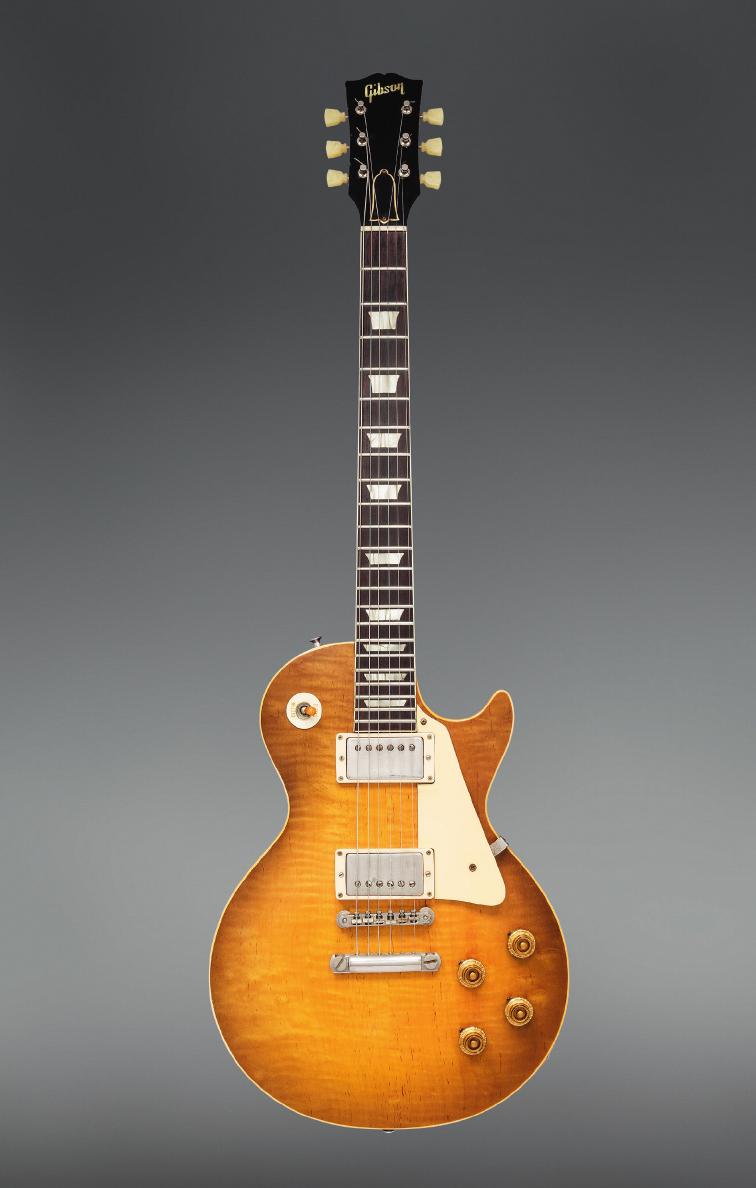
69
1959 Gibson Les Paul Standard
Sunburst Solid Body Electric Guitar,
Serial #9 0696
Sold for $350,000 | July 2021
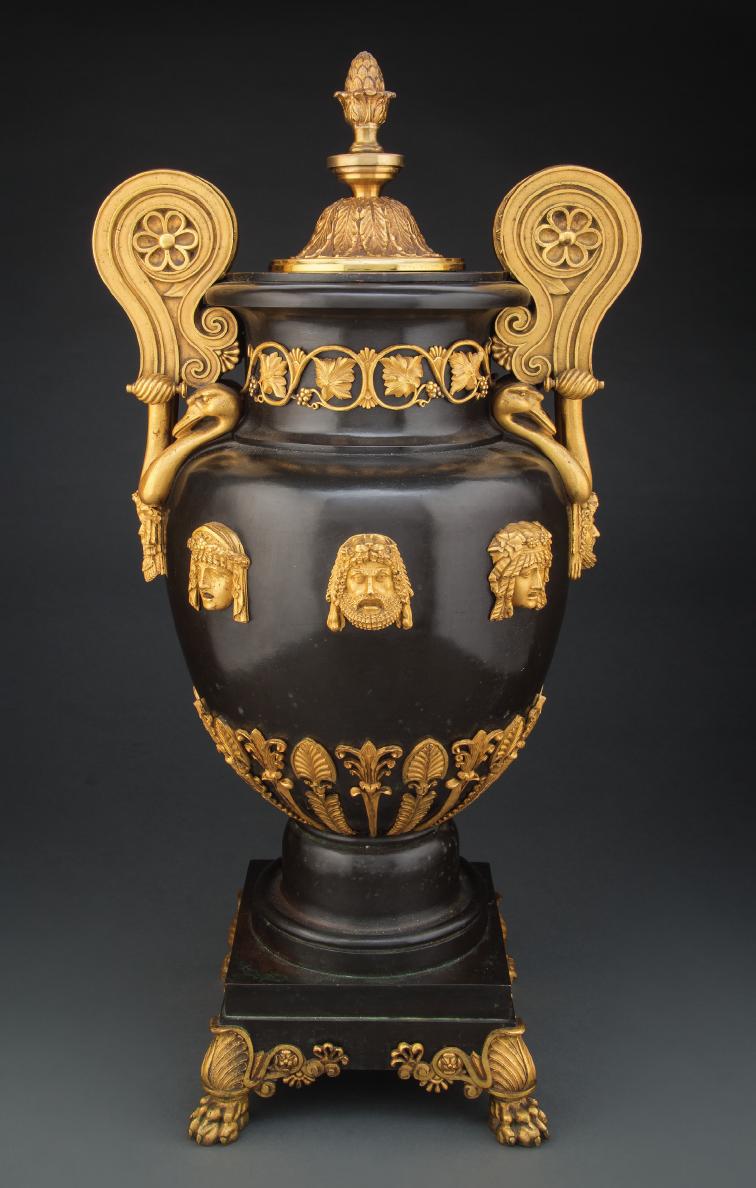
70
A Gilt Bronze-Mounted Patinated Copper
Two-Handled Vase by Alexis Decaix,
Designed by Thomas Hope for his Duchess
Street Mansion, London, circa 1802-1803
Sold for $225,000 | September 2022
Property from the Estate of David D.
Denham, Tulsa, Oklahoma

71
7
Collectibles, Estate Planning and Taxes
“The only difference between death and taxes is that death
doesn’t get worse every time Congress meets.” – Will Rogers
I
f you are an avid collector, your collection may represent a large
portion of your net worth and your estate. While your real estate,
stocks, bonds, and other traditional investments are probably
accounted for in your estate plan, your collection may not be. It is
important to ensure that your Estate Planning Advisory Team knows
the type, size and approximate value of your collection. The inclusion of
these assets in your estate could make a difference in how your team
constructs your estate plan, what tax advantages they obtain, and what
tax liabilities they can mitigate.
When a person dies owning property, that property is transferred to a
recipient. The process of determining the recipients of those assets—
who gets what, when they get it, and what will be done about taxes—is
the central purpose of estate planning. The decisions you make can
have a significant impact on the amount of ordinary income, capital
gains, gift and/or estate taxes that you or your heirs will pay. Since we
cannot know the particulars in your case, we cannot advise you about
which of these planning options to use and how they apply to your
personal situation. We recommend that you review our information to
inform yourself in advance of reviewing the plan with your professional
estate and wealth advisors.
We strongly recommend that your advisor team should include a legal
professional, preferably an attorney who is board-certified in estate
planning and/or probate law by your state, a tax advisor, preferably a
CPA, and a life insurance professional.
Between you and your advisory team, you should be able to create
the plan that best suits your unique needs and wishes. Tax and
estate planning laws can be extremely complex and there is no single
individual who can be relied upon to advise you on all aspects of the
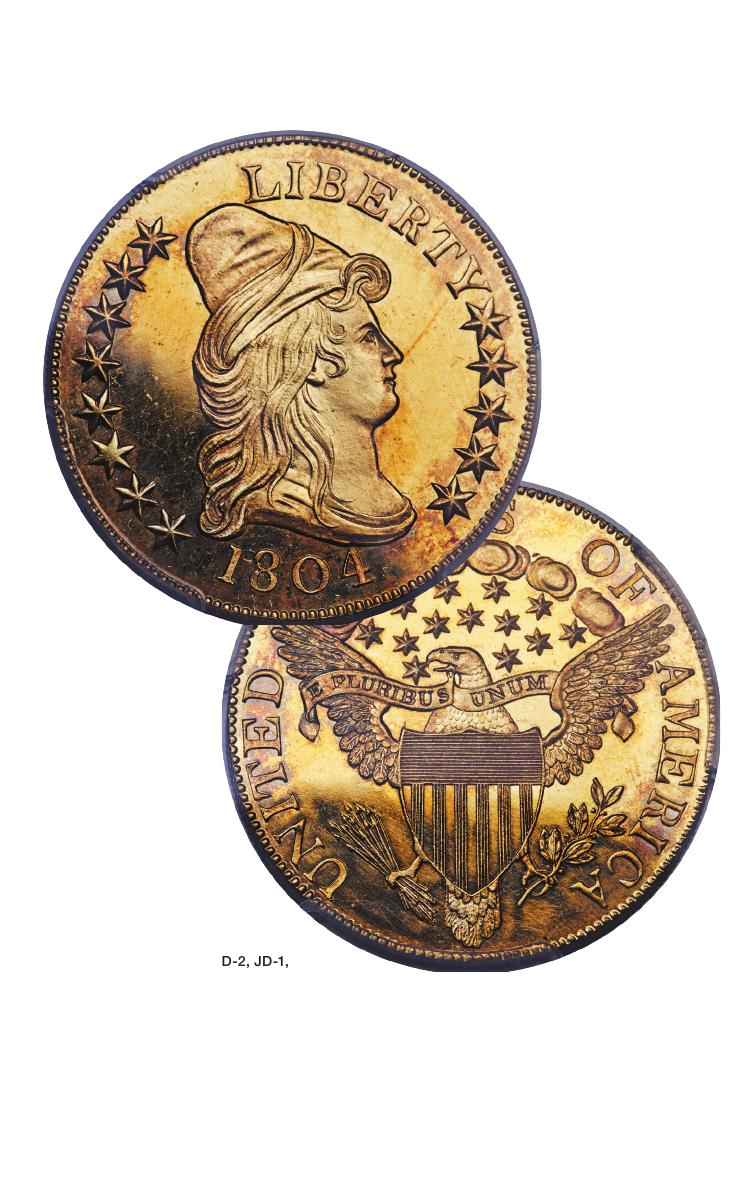
72
1804 $10 Plain 4, BD-2, JD-1,
Judd-33, High R.7,
PR65+ Deep Cameo PCGS. CAC
Sold for $5,280,000 | January 2021
The Bob R. Simpson Collection

73
legal, tax and insurance matters that are involved in estate planning.
As we stated before, tax laws are always changing and have significant
impact on the taxation of your estate, and on decisions about the
benefits and detriments of making lifetime gifts, or gifts by will or trust.
For example, long-term capital gains on collectibles are currently taxed
at a rate of 28 percent or your marginal tax rate, whichever is lower,
while long-term capital gains on other assets, like your stocks or real
estate, are generally taxed at a lower rate of 15 or 20 percent.
Annual gifts of up to $17,000 (since 2023) may be made by you to as
many individuals as you choose without affecting your lifetime gift/
estate exemption. If your spouse joins you in the gift, you can distribute
$34,000 each year to as many lucky recipients as you choose, without
reducing your joint lifetime exemption. In addition, as of 2023, you are
allowed a $12.92 million lifetime gift/estate exemption, ($25.84 million with
your spouse/partner), and a $1 million gift tax exemption for generation-
skipping gifts to grandchildren. For years prior to 2026, the lifetime gift tax
exemption will be increased for inflation each year with a maximum tax
rate of 40 percent. On January 1, 2026, the lifetime gift/estate exemption
is scheduled to be reduced to approximately $7 million per person.
Is Your Collection Worth More Today Than When You Purchased It?
As with any carefully chosen investment, a collection should hopefully
appreciate in value over time. There are, of course, exceptions.
If you were unfortunate enough to have been the victim of an
unscrupulous seller, or perhaps acquired some of your collectibles
at the peak of a market that has since declined, a current appraisal
may indicate that you are in a capital loss position. If that’s the case,
you may sell the collection and use the loss to offset an equal amount
of capital gains. In addition, you may deduct up to $3,000 annually
($1,500 if you are married and filing separately) of excess capital losses
against your ordinary income. These losses may be carried forward to
future years until they are entirely used, or until your death.
Certain losses, depending on their character (short- or long-term) may
offset only certain gains and the IRS has established a priority for
offsetting short- and long-term capital gains. The best strategy when
you incur capital gains that can’t be offset with losses is to simply pay
the tax. If the collection has appreciated, many other issues come into
play. These are discussed over the next few pages.

74
The Unpredictability of the Estate Tax
Unless you have successfully completed your lifetime planning,
many of the assets held directly in your name will transfer into your
estate upon your death. Your estate will have to pay estate taxes if
the net value is greater than the exemption amount set by Congress.
Unfortunately, Congress has made planning for the estate tax
challenging by continually changing the size of the exemption.
With the passage of the Tax Cuts and Jobs Act (TCJA), the gift and
estate tax exemption has increased significantly. Currently, the lifetime
estate and gift tax exemption is set at $12.92 million per taxpayer, up
from $12.06 million in 2022. Since couples share their exemptions, it
means a wealthy couple that starts making gifts in 2023 can pass on
a lifetime maximum of $25.84 million.
There’s one big caveat to be aware of: the $12.92 million exemption
is temporary and only applies to tax years prior to 2026. Unless
Congress makes these changes permanent, after 2025 the exemption
will revert back to pre-2018 levels on January 1, 2026. If you bequeath
a large estate of tangible assets to your heirs, without proper planning,
your heirs may require a substantial amount of liquid funds to satisfy
the estate taxes.
Without extensions, estate taxes must be paid to the government
in cash within nine months of death. Often, the unfortunate result of
this immediate need for cash will be a “fire sale” to raise the required
funds by the tax filing date. A hasty sale will not maximize the value of
the collection to which you have devoted a great amount of time and
effort. Despite your best intentions, your heirs may not benefit from
your collection as you had intended without proper planning.
One part of the solution to the need of immediate liquidity to pay for
potential estate taxes can be life insurance.
First, you will need your accountant or advisor to develop a pro forma
balance sheet and income statement to determine the extent of the
potential estate tax liability based upon the best estimate of the value
of your estate at some future date. Depending on the valuation of your
estate, your advisor can estimate the amount of tax that may be due
upon your passing.

75
Julian Onderdonk (American, 1882-1922)
Texas Landscape with Bluebonnets
Oil on canvas
Sold for $437,000 | November 2015
This part of your planning is more of an art than a science. The value
of your assets, which may appreciate or depreciate over time, is
somewhat unpredictable. Because one’s date of death is uncertain, the
tax rates that will apply are uncertain. Based on these assumptions,
your advisor should be able to assist you in determining the tax
consequences of making lifetime gifts compared with making bequests
at the time of your passing as directed in your estate plan. These
assumptions will also determine the various strategies that are available
to reduce your tax liabilities.
In most cases, a life insurance policy’s proceeds are not included in
your estate at death as long as you do not name either yourself or your
estate as the beneficiary or owner of the policy. Placing the ownership
of the policy in a separate trust (an irrevocable life insurance trust, or
“ILIT” for short) outside of your estate or owned by a third party is one
good approach. The proceeds of the policy are payable immediately in
cash and pass to your beneficiaries as income tax-free income.

76
By insuring your life for an amount equal to or in excess of your
estimated estate tax liability, you can assure your heirs of sufficient
liquidity to pay the estate taxes, thus enabling the collection to pass to
your heirs without requiring them to sell assets. If they choose to sell
assets because of the “step up” in tax basis upon inheritance, they
won’t have any tax liability to worry about and will be able to maximize
value by selling in an orderly fashion without government-imposed
deadlines. An ILIT comes with a variety of advantages and drawbacks.
For example, an ILIT is a great option if you want to set aside your
assets for specific purposes, but you may be responsible for paying
gift taxes if a beneficiary withdraws from a trust. Make sure to weigh all
pros and cons before deciding to create one.
The Gift Tax and Reducing Your Estate through Annual Gifting
Especially in light of the onerous estate tax rates that can inflict
substantial damage on your estate (remember that potential tax rate up
to 40 percent), reducing your taxable estate through gifts to your heirs
during your lifetime is a simple and extremely advantageous strategy, if
implemented properly.
The gift tax applies to transfers of assets during your lifetime to various
recipients. Current law allows you to make gifts of present interest to
any number of recipients. The donor is responsible for the payment
of any taxes that are due on the gift. In general, a gift is a transfer of
property for less than its full value.
A gift must be accepted by the recipient and is irrevocable. As
previously discussed, our current tax law provides for annual gifts of
$17,000 per recipient (for 2023). If your spouse participates in the gift,
you are allowed to give away $34,000 per year to as many fortunate
individuals as you wish. You are also entitled to a one-time lifetime
estate and gift tax exemption of $12.92 million per spouse in 2023.
Certain gifts are not considered taxable gifts, including medical and
educational expenses that you directly pay for someone, gifts to
your spouse and gifts to a political organization for its use. If your gift
exceeds $17,000 to any person during the year, you must report it on
a gift tax return (IRS Form 709). Spouses splitting gifts must always file
Form 709, even when no taxable gift is incurred. Once you give more
than the annual gift tax exclusion, you begin to reduce your lifetime gift
and estate tax exemption. The IRS will lower your remaining lifetime
exemption over time and then use that amount to determine how much
of your estate is taxable upon your death.
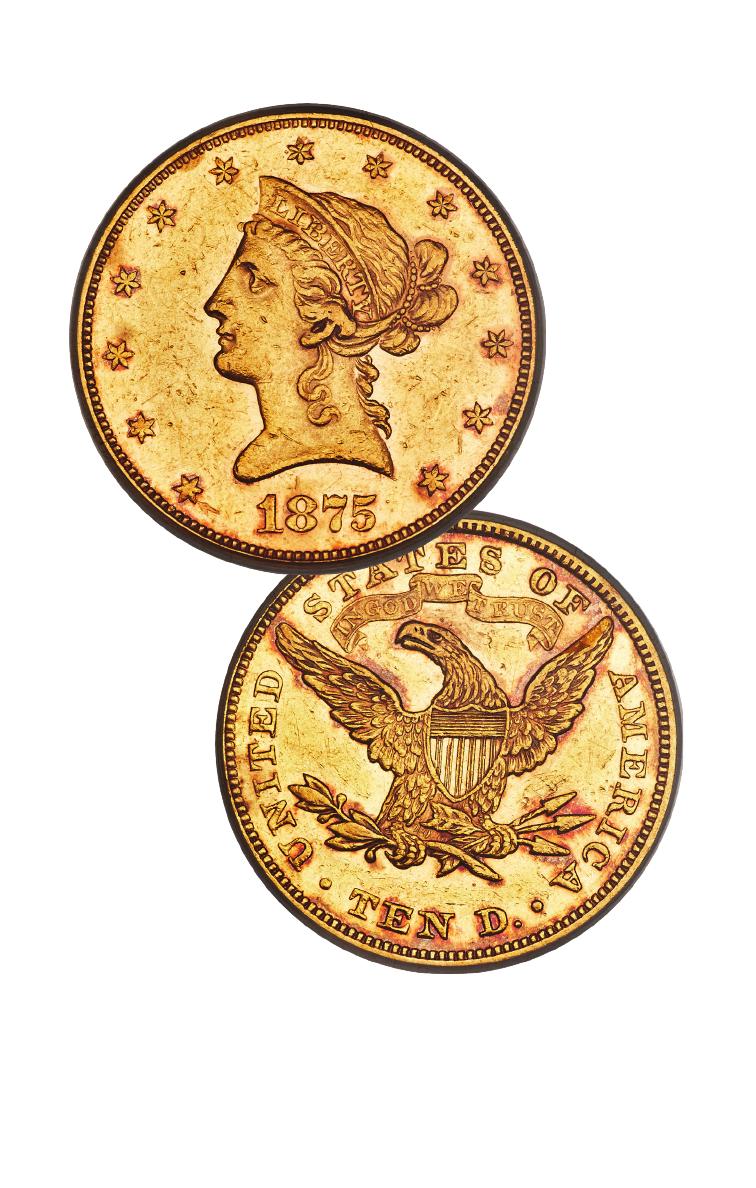
77
1875 $10 AU53 PCGS
Sold for $1,020,000 | October 2022
The Estate of Allan H. Goldman
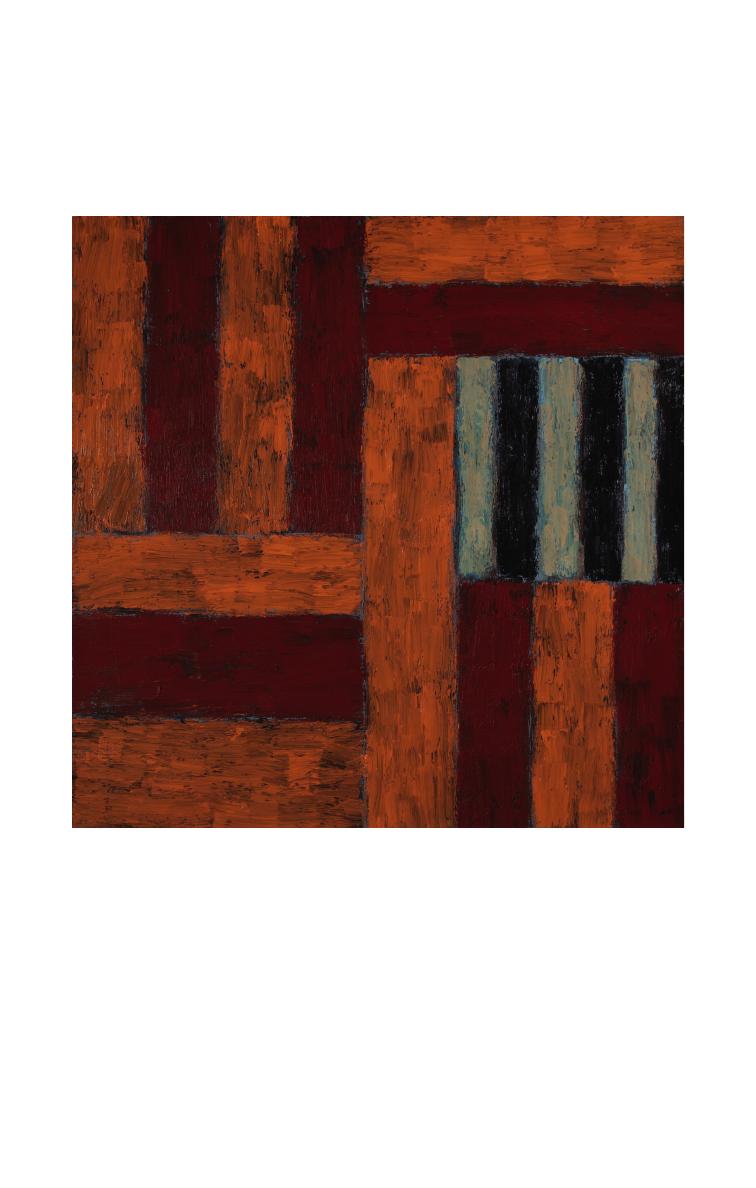
78
Sean Scully (b. 1945)
Lipari, 1990
Oil on linen
Sold for $495,000 | November 2021
Property of a Chicago Collector

79
In theory, if you have 10 children and grandchildren (in total), you and
your spouse may gift up to $340,000 ($34,000 times 10) each calendar
year to them without filing with the IRS. More good things will result.
Not only will you make these family members very happy, you will have
removed $340,000 from your estate, which is no longer subject to
future appreciation and possible estate taxation.
Those who make gifts on a regular annual basis can substantially
reduce their estate tax liability. Using the above example, in 10 years, it
is possible to eliminate $3.4 million from your estate without reducing
your lifetime gift tax exemption.
What the benefit of using the $12.92 million lifetime gift exemption -
$25.84 million with a spousal gift plan -– in your lifetime, rather than
wait until death and use your estate tax exemption? With property that
has a good chance of appreciating substantially in the future, gifting
it during life removes its value from your taxable estate and you will
eliminate any future appreciation in these assets from your estate.
For example, you decide to gift a painting in 2023 with a fair market
value of $5 million. This amount is removed from your taxable estate
with the completed gift. (Please consult with your tax advisor about the
rules of whether a gift tax return needs to be filed).
Upon your death, the painting’s fair market value is now $8 million.
With the painting being removed from your estate due to the gift in
2023, it is not taxable to you and $3 million of appreciated value has
been saved from estate tax. By careful planning with lifetime gifts,
especially appreciating assets, not only can you share something
meaningful sooner with the gift recipient, you can also save estate
taxes by removing the fair market value you had prior to the gift and
any appreciation of that asset at your death after making the gift.
If that same painting is in your estate when you die and is not a gift, the
recipient receives what is known as a stepped-up tax basis - the date of
death fair market value of the asset. If the recipient then decides to sell the
asset, the basis for determining any gain is determined by the value of the
property at the time of your death, which eliminates most of the tax liability
if the property is sold soon after you pass away. The problem is that if you
retain the property in your estate when you die, you may be subject up to
the 40 percent estate tax.

80
Gifted property usually has what is called a “carryover basis.”
The amount used to determine the gain if your assets exceed the
exemption amount to the recipient in the event of a sale is the donor’s
basis in the asset, not the market value of the asset at the time of the
gift. So let’s say you acquired the painting years ago and have a cost
basis of $1 million, but the current fair market value is $5 million. If
you give it to your daughter now, a capital gain of $4 million ($5 million
price, minus $1 million basis) will be waiting for her if she decides to sell
it. This could be eliminated if the property remains in your estate and
your assets do not exceed the estate exemption amount.
Under current law you may gift an unlimited amount of property
during your lifetime to a spouse without paying gift tax as long as your
marriage is legally recognized and your spouse is a U.S. citizen. Upon
your death, the marital deduction allows you to pass an unlimited
amount of property to your spouse tax-free. It should be noted that
marital transfers merely defer estate taxes — they do not eliminate
them. However, using the marital deduction to equalize the estates of
both spouses will allow you to maximize your estate tax exemptions by
transferring assets between the two of you.
The use of annual and lifetime gifts is an essential part of any estate
plan. It’s not exciting, but it is important. At a minimum, you now
have a basic understanding of the concepts to enable you to ask the
appropriate questions of your advisors.
Fractional Gifting Considerations
Collectors who own valuable art and collectibles that well exceed the
$17,000 tax exempt annual gift allowance may wish to reduce their
taxable estates. Consider the use of fractional gifting over time, either
directly or through establishing beneficiary trusts. Gifting a percentage
of the ownership — and thus value — of an item allows for the
retention of the piece by the collector while lowering the taxable estate
to more manageable and advantageous amounts each year. A $17,000
fractional gift to a few family members annually may equal just a small
percentage of the value of an object or collection. However, over a
number of years or even decades, collectors can make full use of their
tax-exempt gift allowances if planning begins early.

81
The Capital Gains Tax
Everything you own for investment purposes is a capital asset. This
includes any investment properties you have, stocks and bonds,
mutual funds, and collections—if you bought them with an eye
toward investment.
When you sell a capital asset, the difference between the price you
paid for it (known as your cost basis) and the amount you sell it for is a
capital gain or capital loss.
If you held the asset for more than a year before selling, it is considered
long-term. If you held the asset for less than a year, it is short-term.
The cost basis of an asset depends upon how you acquired the asset.
If you purchased the asset, the basis is the amount you paid at the
time of purchase, including but not limited to any associated expenses,
such as commissions, fees and improvements to the property, etc. If
you received the property as a gift, the basis usually is the price that
the donor making the gift originally paid for it, which also is called
the “carryover basis.” If you inherited the asset upon the death of the
donor, your basis is the fair market value of the asset at the date of
death, called a “stepped-up basis.”
Capital gains on most assets held for more than one year are taxed at
a lower rate than ordinary income. The capital gains tax is generally 20
percent on most assets, other than collectibles, that have been held
for a year or more. However, the long-term capital gains on the sale
of collectibles — such as coins, fine art, comics, or rare books — are
taxed at a maximum rate of 28 percent. If your marginal income tax
rate is below 28 percent, your gain on the sale of collectibles will be
taxed at the marginal rate; if your marginal rate is above 28 percent,
your gain will be taxed at 28 percent — providing you with some tax
savings, but not nearly what you would get with investments in stocks
or bonds. Short-term gains on objects sold within a one-year time
frame are taxed at the same rate as your ordinary income tax rate (this
is true for all investments, from stocks and bonds to more obscure
collectible investments).

82
Trusts
The most commonly used trust is the living trust. In legal terms, it is
known as a “revocable living trust.” In simple terms, the living trust is a
document that is used in conjunction with a will, but can avoid the costs
and time involved in probating a will. You transfer your property and title to
the name of the trust; for example, you might be John Doe, trustee for the
John Doe Trust.
If you and your family decide to place your collection into a trust, work with
an experienced estate planning attorney to draft the trust document. A
will is only a supplement to the trust that will assure that any assets that
have not already been transferred into your trust (retitled) will shift into the
trust at the time of your death. Remember, only assets that have been
retitled in the name of the trust will be valid transfers that will accomplish
the objective of the trust. Once your collection is held in a trust, the trust
document will dictate how your collection is managed. Using art as
an example, in the trust provisions, you can isolate certain works of art
to specific individuals or direct the trustee to select which beneficiaries
receive or use certain works of art. Transferring the collection into a trust
allows your beneficiaries to use and enjoy the collection as you desire.
While you are alive, you may be the trustee of your own trust and maintain
complete control of the assets. When you pass away, the successor trustee(s)
you select becomes the new trustee(s). The new trustee has a fiduciary
obligation to follow the terms of the trust as you have stated in the trust
document. Keep in mind, that you should select a trustee who has experience
in managing collections. The trustee is someone who is qualified and
authorized to make decisions regarding the collection based on your wishes.
A revocable trust, in itself, does not result in specific tax savings. But
the advantages are important: While the terms of a will can be public
knowledge, the terms of a trust are private, and within the control of you
and the parties that you select to be involved in the process. Assets will
be transferred soon after death, legal fees can be minimized and the
terms will remain private. Also, there may be less risk of an unhappy family
member contesting a trust than a will.
Additionally, there may be ancillary tax benefits. The trust will provide for
the disposition of your assets in accordance with your wishes. In addition,
the trust will permit you to take full advantage of the marital estate tax
deduction and your lifetime tax exemption by designating the exact
proportion of assets to be distributed to specified recipients.
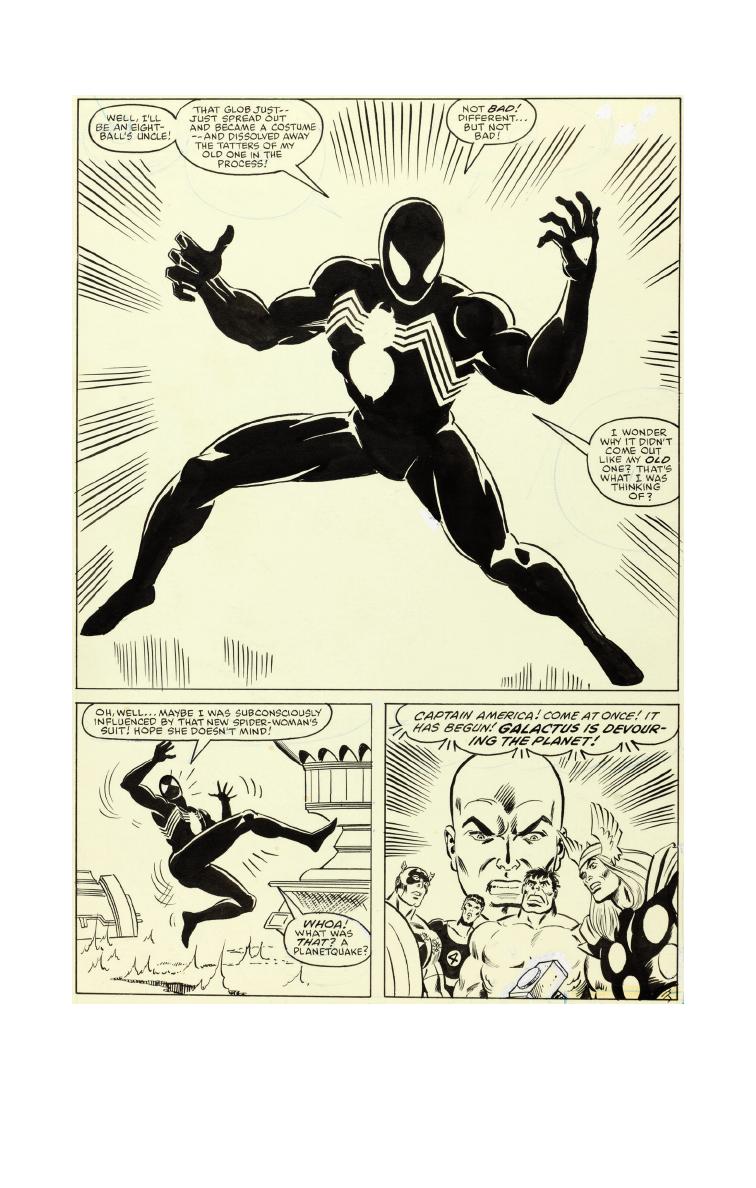
83
Mike Zeck and Others Marvel Super-Heroes Secret Wars #8
Story Page 25 Black Costume/Venom Original Art (Marvel, 1984).
Sold for $3,360,000 | January 2022
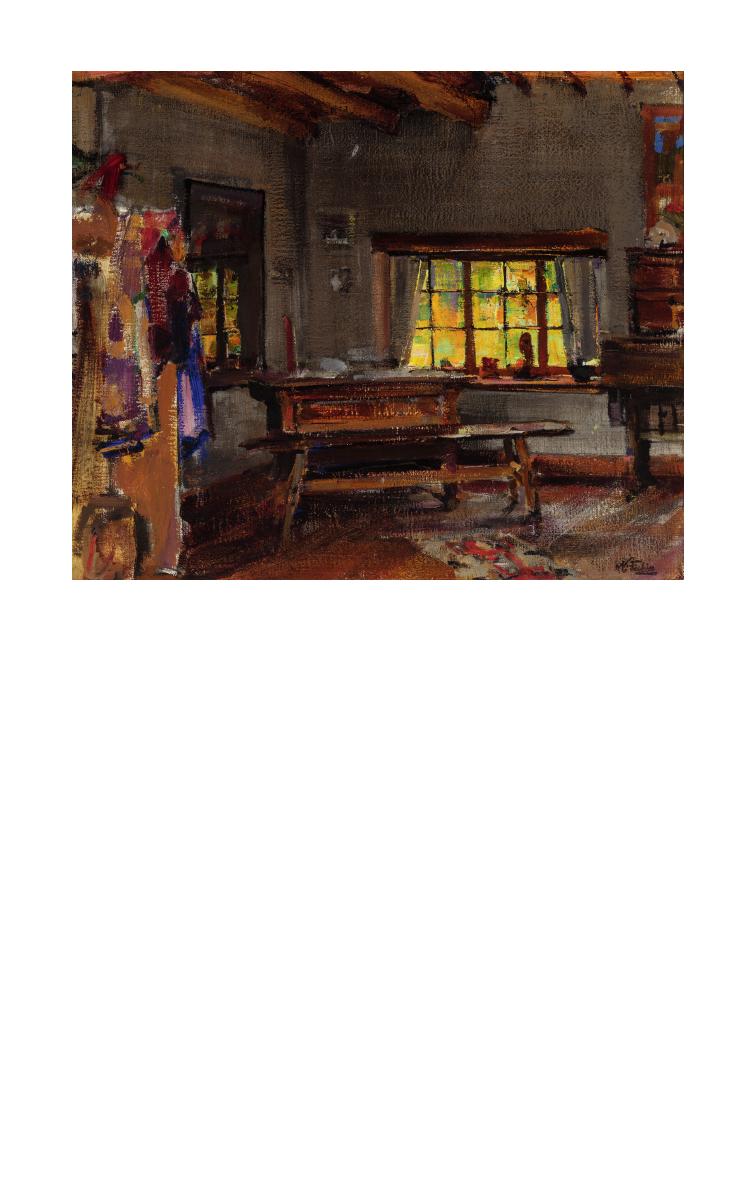
84
One of the other major benefits of a living trust is that it can contain
directions for the trustee as to the care and protection of your assets,
should you be unable to make such decisions due to your health or mental
condition. Your designated trustee will assume control of your property
and make the necessary decisions—which is a better option than putting a
judge in control of your assets, which would occur without proper planning.
Keep in mind, there are costs to consider associated with managing the
trust. For example, if an art collection is owned by the trust, it might require
storage, insurance, conservation, security, and other services associated
with the ongoing care and management of the collection.
As an heir to a taxable estate, once the donor or owner of the collectible
has passed away, most of your opportunities to reduce the estate tax
consequences will have passed. It can be awkward, but if you’re worried
that a parent or anyone else from whom you are likely to inherit property
has not been engaging the right advisors for estate planning, you should
Nicolai Fechin (American, 1881-1955)
Taos Studio Interior
Oil on Canvas
20 x 24 inches
Sold for $237,500 | May 2023
Property from the Estate of Lois Brennand, Santa Fe, New Mexico

85
suggest a family meeting with their advisors to ensure all documents are in
accordance with their wishes.
If it is necessary to liquidate all or part of the collection to pay estate taxes, the
expenses of that liquidation (shipping, insurance, auction fees, commissions,
etc.) are generally deductible from the estate. Additionally, estate expenses
related to the use of lawyers and probate costs are deductible from the total
gross estate. It is advantageous to arrange your estate plan to reduce these
expenses rather than to deduct them (see living trust).
If you are the surviving spouse of the deceased, exemptions generally
allow the estate to pass to you without taxes being owed. However,
the estate planning burden then becomes yours, as the same marital
tax exemptions will not apply at your death unless you remarry. If this
eventuality was not already considered in your planning, you should
contact an estate or tax professional without delay. Even if the survivor’s
estate issues were considered in the original planning, it cannot hurt to
reevaluate the situation with a trusted advisor.
Life Insurance and Taxes
“Helpful self-test questionnaire to see if you have enough life
insurance (Sponsored by the Life Insurance Institute):
1.) How much life insurance do you have? ___
2.) You need more.
3.) We’ll send somebody over right now.” – Dave Barry
Although most of us have certain suspicions regarding insurance advisors,
the truth is that life insurance is one of the most valuable tools available
under our current tax structure. An expert insurance advisor is a critical
component of your estate planning team. Ideally, long-term life insurance
should be purchased while you are young and healthy. The same benefits
may not be available should you become ill or incapacitated. Do not wait
until you are in poor health, or when you are at such an age that the costs
of insurance are prohibitive.
There are two primary purposes for life insurance in planning for estates
substantial enough to incur taxation at the maximum rate.
The first is liquidity. In a proper plan, life insurance should be held outside
of your estate. The IRS will want its money right away, and the liquidity
provided by a life insurance payout may allow your heirs to avoid having
to sell your collections at “fire sale” prices. Remember, not all insurance

86
proceeds are excluded from your estate: If you are the owner of the policy
or you name either yourself or your estate as the beneficiary, the proceeds
will be included in the valuation of your estate upon death.
If the estate is structured properly, the tax burden falls primarily on
the estate of the last spouse to die. As a result of the unlimited marital
deduction and the maximum use of exemptions, the bulk of your estate
can go to your spouse and vice-versa. To reduce the cost of the life
i
nsurance and to provide the liquidity for the estate taxes, it makes sense
to insure the last to die.
Assuming that both spouses are alive, most advisors recommend that you
purchase a whole life insurance policy on both spouses that will pay when
the last spouse passes away. This is known as a “last to die” policy.
There is one more problem: Who should pay the premiums on the policy?
The heirs are the likely source for the payment of the premiums.
Why? Because your heirs will be the beneficiaries of your generosity.
But how do they find the money to pay the premiums? Most collectors
should use the annual gift tax exemption to give their heirs an amount
that covers the cost of the premiums. Remember, you can make annual
gifts of $17,000, or $34,000 if your spouse joins you. You essentially
are purchasing a life insurance policy to benefit your heirs, while at the
same time giving them cash gifts with which to pay the premiums. Life
(insurance) is not always fair.
TIPS FOR HEIRS: An ILIT is an important planning tool that
provides liquidity to pay for any estate tax liabilities; the proceeds
are not included in your estate. You may gift the premium amounts
to your heirs using the annual gift tax exclusion; the insurance
proceeds will be received tax-free by your heirs to be used to pay
the estate taxes. It is important to make sure that the documents
are drafted properly by an expert and the gifts are made in
accordance with IRS rulings. Insurance is a critical strategy for any
substantial estate — make an expert a part of your team.
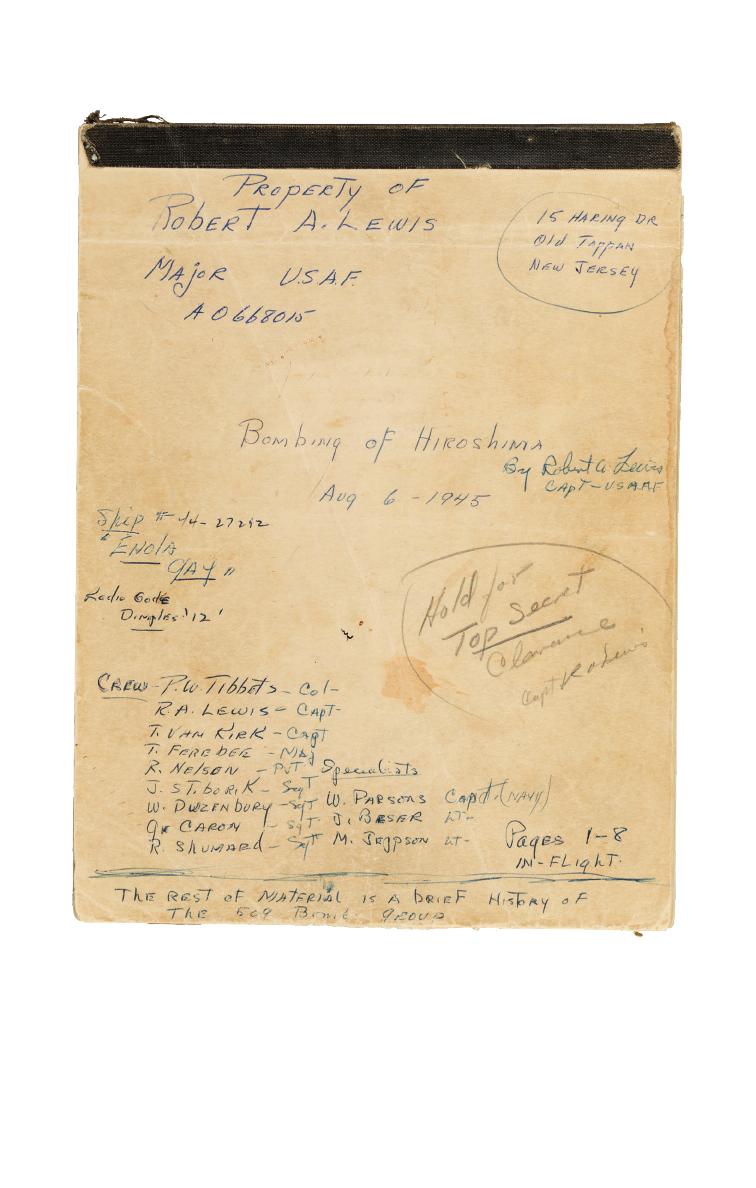
87
[World War II, Bombing of Hiroshima]. Autograph Logbook of Capt. Robert A. Lewis [USAAF,
Co-Pilot of the Enola Gay], containing the only IN-FLIGHT account of the “Little Boy” mission
and the bombing of Hiroshima, Japan. August 6, 1945
Sold for $543,000 | July 2022

88
Story
Kathleen Guzman’s
Kathleen Guzman is a former managing director at
Heritage Auctions, having joined the firm in 2006
after a career that included serving as President of
Christie’s East and President of Phillips Auctioneers
and as Senior Vice President of Business Development
at eBay. She has appeared as an antiques expert
on Oprah, Good Morning America, and CNN, and is
probably best recognized for having served as an appraiser on Antiques
Roadshow for more than 20 years.
Sometimes the business of treasure hunting and treasure dealing has
a way of imitating the stories behind the objects collectors covet. The
best example of this phenomenon in my career came in 1994, when I
orchestrated the sale of the original Maltese Falcon.
In the 1941 movie classic The Maltese Falcon — based on the 1931
Dashiell Hammett novel of the same name — Casper Gutman (played by
Sydney Greenstreet) offers private investigator Sam Spade (Humphrey
Bogart) $25,000 plus a quarter of the sale proceeds for help locating a
figurine of a black bird believed to be filled with priceless jewels.
In 1994 — by which time the film was widely considered the first example
of film noir and recently had been added to the Library of Congress’
National Film Registry — I was the president of Christie’s East, and a lady
named Tippy Stringer called our Beverly Hills office about a few items
she was looking to sell, so I headed out to have a look.
Stringer was one of the first female weather reporters and a television
legend in her own right, but the marquee lot of her collection came
from her late husband, the actor William Conrad. Sitting on the shelf in
Stringer’s library — in the background, propping up a row of leather-
bound books — was the original Maltese Falcon used in the movie, a gift
to Conrad from Warner Brothers studio head Jack Warner.
The Maltese Falcon, an elusive object in the movie, also is an elusive
object in real life, and the object at which I was looking had been
presumed lost for decades. The Warner Brothers Archives cite two
examples produced for the film, which the stagehands remember using
for weight-lifting competitions; they weighed 45 pounds each, and one
of them was in the collection of a California dentist. During the filming of

89
the movie, the statue fell from actress Lee Patrick’s hands and landed
on Bogart’s left foot, causing a minor injury. Seeing it on the shelf, then
taking it down to examine it and noticing the Warner Brothers prop
house number, my hands trembled.
The Maltese Falcon — the highlight of the film and television memorabilia
sale — was up for auction Dec. 6, 1994, and I was the auctioneer in a
sale that also included Academy Awards for Gone With the Wind and a
copy of that book signed by the cast of the movie.
The pre-sale estimate for the Maltese Falcon was $30,000-$50,000, but
intense interest at the viewing and a few absentee bids had driven our
internal estimate up to $150,000. Film noir buffs had traveled far to see
the prop — some came dressed as Humphrey Bogart, hoping to take a
picture with it, and one lady came looking to measure it for the design
of the table she was planning to build for it. That kind of interest is every
seller’s dream, but also created the potential for an unhappy experience
for auction-goers. Our inadvertently low estimate had brought out more
than a few people who thought they would have a shot at the Falcon for
a fraction of what we knew by then knew it would bring.
I instantly knew what to do: I wanted to lighten the atmosphere in the
room and give every auction-goer a chance to at least bid on it, so I
started the bidding at $1. Every hand in the room shot up, and the place
roared with laughter. The people in attendance got the memory of their
lives and they were able to tell their families and friends that they bid on
the Maltese Falcon!
When the hammer came down, the Maltese Falcon sold for $398,500, a
record price at the time for a film prop, and also surely a record price for a
lead bird with a bronze patina! The buyer was Ronald Winston, president
of the New York-based Harry Winston jewelry chain — but before he
could be identified by the press gathered there, Winston fled the room.
The newscasts that night showed the flight of the mysterious buyer of the
Maltese Falcon. When Winston formally announced his acquisition, there
were high hopes, based on the family’s past generosity, that the piece
ended up in the Smithsonian. But it was not meant to be: the Maltese
Falcon reportedly was sold to a reclusive sheikh for more than $1 million,
and the elusive bird has not been seen since.
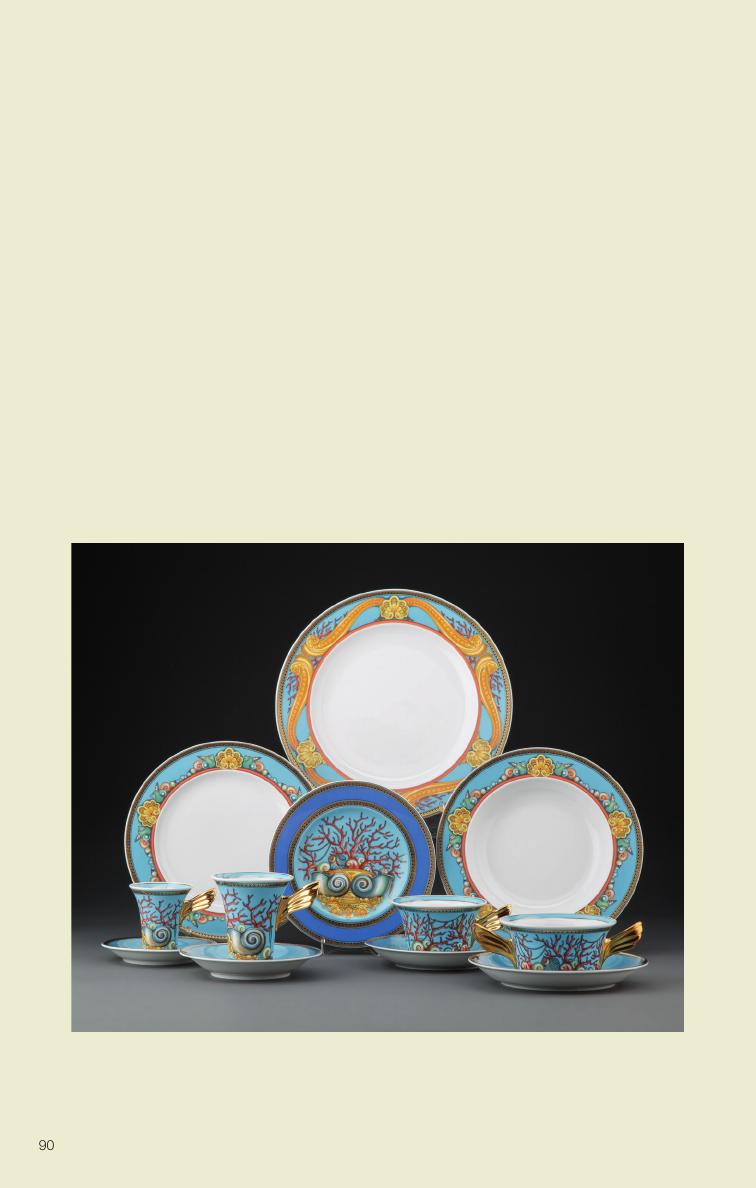
90
K
enneth Alan Hill, Sr., turned his love of the water into a lifetime
of collecting. The Fort Worth, Texas, resident and retired
pharmaceutical pioneer sought only the finest examples of maritime fine
art and antiques to complete a truly outstanding collection. “Hill’s astute
collector’s eye pursued objects rarely seen outside of institutions,” said
Michelle Castro, Vice President of Trusts & Estates at Heritage Auctions.
“His taste was impeccable and now his collection is ready for an entirely
new generation of connoisseurs.”
Versace Dinner Service
A Two Hundred-Two Piece Versace Les Trésors De La Mer Pattern Porcelain Dinner
Service for Twelve, June 2021
Sold for $37,500
Kenneth Alan Hill, Sr.
Fort Worth, Texas
The Estate of
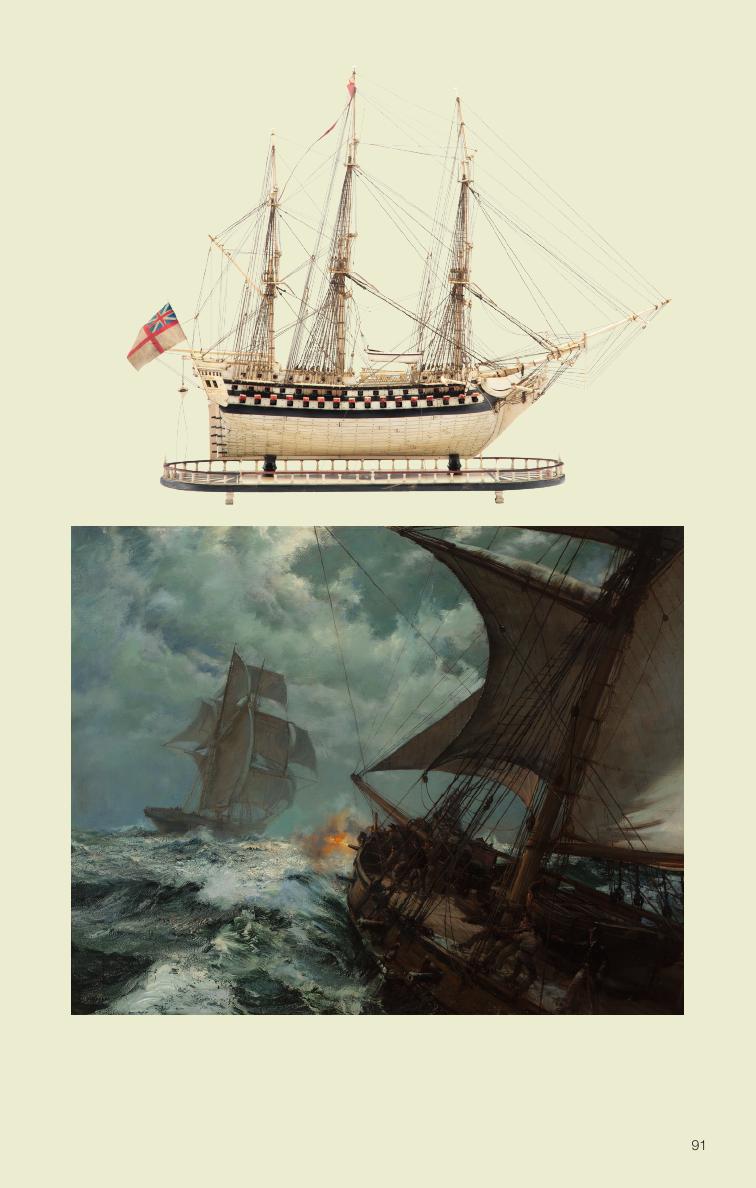
91
Montague Dawson (British, 1895-1973)
Night suspect, 1958, June 2021
OIl on Canvas
40 x 50 inches
Sold for $175,000
A Carved Bone Napoleonic
Prisoner-of-War Ship HMS
Alexander Model, circa 1795-1815
May 2021
Sold for $62,500

92
1952 Topps Mickey Mantle #311 SGC Mint+ 9.5 - 1985 Rosen Find -
"Finest Known Example!"
Sold for $12,600,000 | August 2022

93
8
Collectibles and Charitable Giving
“In faith and hope the world will disagree, but all mankind’s
concern is charity.” – Alexander The Great
“To give requires good sense.” – Ovid
A
mericans gave $499.33 billion to charity in 2022, and individual
donors contributed close to 64 percent of that amount; in total,
charitable giving represents about 2 percent of GDP.
Collectors consider philanthropic giving because they want to support
a specific charity or make a positive impact on their community.
In addition, charitable giving provides donors the opportunity to
obtain a charitable deduction for income, gift or estate taxes. There
are many factors to consider with charitable giving in order to optimize
your tax benefits.
Charitable Giving Nuts and Bolts
For tax purposes, a charitable gift makes the most sense when a
collection has incurred substantial capital gains from appreciation.
Property presently valued below its original cost generally should be
sold at a loss, rather than donated to charity.
This is because the amount of your deduction is based upon the
fair market value of the property and not the original cost to you. If
you give a gift to the appropriate charity, with a fair market value of
$50,000 that originally cost $10,000, you will receive a deduction for
the entire $50,000. This is the benefit of a charitable donation that
has appreciated in value. When looking at the tax implications of a
charitable gift, it is imperative that you involve your tax planner, attorney
and financial advisor, because the rules are complicated.
If your collection has appreciated, you may be able to enjoy some
fiscal benefit through a charitable donation to a public charity. Here is
what it takes to qualify:
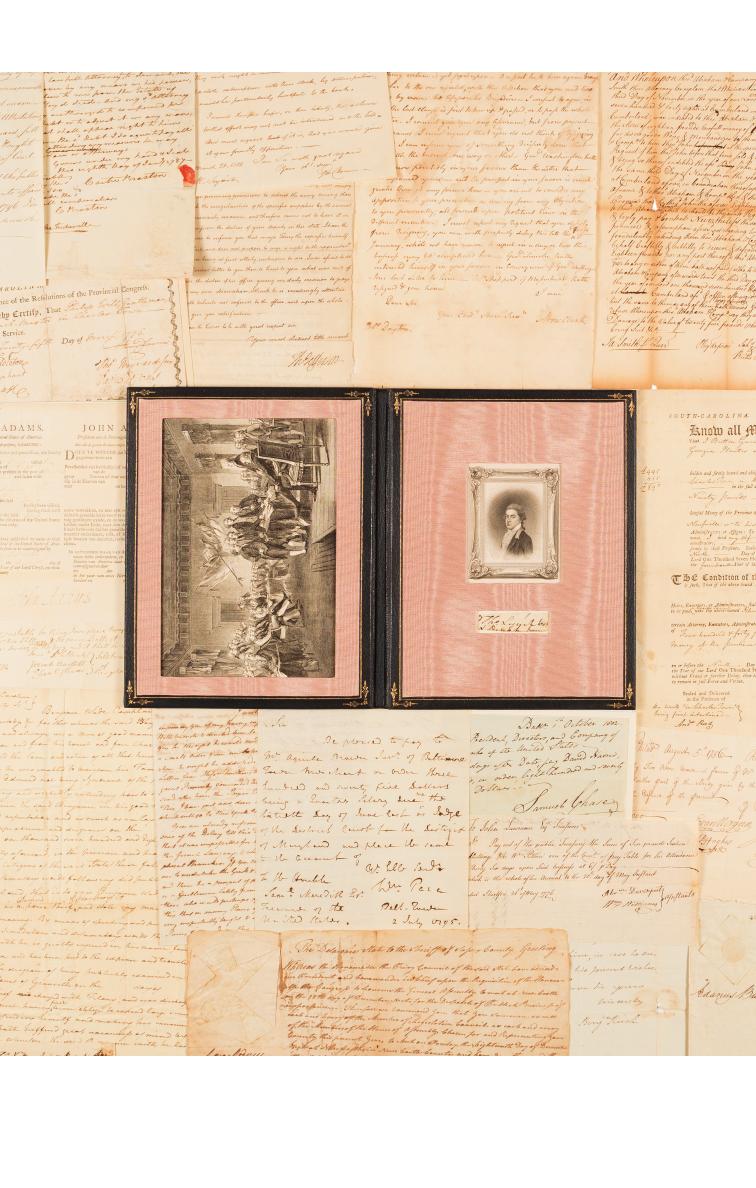
94
Complete Collection of Signers of the Declaration of Independence.
Sold for $1,395,000 | June 2022

95
1. The donated items are qualified capital gains property
This generally means that the donated items have been in the collection
for at least a year, are not tangible items created by you (because if
they were, you would only be allowed to deduct the cost of materials in
most cases), and were not gifted to you by their creator.
2. The donee organization is a qualified public charity
Public charities generally receive at least part of their support from
the public. IRS Section 501(c)(3) lists the types of donee organizations
and the guidelines for them to follow to qualify for the charitable
deduction. The charity must serve a public interest and must meet
an “organizational test.” Additionally, the organization must be
organized and operated for a religious, charitable, scientific, literary or
educational purpose.
Churches, schools and museums are generally considered to be
qualified public charities, while private foundations are not. The
difference is that you receive a deduction based only upon the actual
cost of the donated item when you give to a private foundation, while
a public charitable donation can be deducted at full fair market value.
It is reasonable for a potential donor to request that an organization
write a letter confirming that the IRS has made a determination that the
organization qualifies for tax-exempt status under Section 501(c)(3), and
that the charity intends to use the objects for a valid charitable purpose.
3. The donee organization must make “related use” of
the donation
Your gift of tangible personal property must relate to the exempt
purposes or functions of the organization. For example, if you donate
a coin collection to the American Numismatic Society for the purpose
of expanding its museum collections, you would receive a deduction of
fair market value since the collection relates to the Society’s mission of
increasing the knowledge and enjoyment of coin collecting.
If you donate the coins to a hospital that intends to sell the collection
and use the revenue for its capital campaign, you can only deduct your
cost of acquisition. The difference between types of use is subjective
and often confusing, so it is important to determine the use for the gift.
Make sure that the qualified organization actually wants the donation.
The organization should provide a written acceptance of the collection

96
or item, stating that it is a qualified public charity and that the donation
satisfies the related use rule.
An additional factor, which reinforces the importance of communicating
with the charity, is that a charitable deduction for contributions of
tangible personal property exceeding $5,000 must be reduced or
recaptured if the donee sells the property for less than your deducted
amount within three years of the contribution.
4. The collection has a “qualified appraisal”
The IRS requires a qualified appraisal if the gift of property is more
than $5,000. If the gift is greater than $20,000, a complete copy of the
signed appraisal must be attached to the tax return.
A qualified appraiser is an individual who holds himself out to the
public as an appraiser and has earned an appraisal designation from
a recognized professional organization or has otherwise met certain
education and experience requirements, regularly performs appraisals
for compensation, and meets any other IRS requirements.
Other Issues in Charitable Giving
Most charities know very little about collectible assets. If you want your
donation to be a meaningful contribution, you have to determine how
the charity will use your collection.
In most cases, that means that it will have to sell your collection to raise
funds. Unless you are donating the collection to a museum that will
display it or use it for research, it might be best to sell it and donate the
proceeds to your charity. If you choose not to sell your collection during
your lifetime, then you should leave detailed written instructions for the
disposition of your gift.
If your selected charity can not accept your donation and would prefer
to monetize it, selling it at auction is a good alternative. Make sure you
select an auctioneer with experience selling your collecting category.
The charity of choice can be named as beneficiary of the proceeds
from the auction. Assisting the charity in planning for the sale of your
collection ensures that the charity will receive the maximum return
without exhausting its own resources.

97
Magic: The Gathering Artist Proof Black Lotus Limited Edition (Beta)
CGC Trading Card Game NM/Mint+ 8.5 (Wizards of the Coast, 1993)
Signed by Christopher Rush
Sold for $610,000 | March 2023

98
Limitations and the Five-Year Carryover
What if you donate an item of considerable value that results in a very
large tax deduction relative to your income level?
The IRS limits the amount of a charitable income tax deduction to a
percentage of current income. If the donation is made to a qualified public
charity, and the gift is considered a related use, you can deduct the
current fair market value up to 30 percent of your adjusted gross income.
If the donation is made to a qualified public charity, but is a non-related
use, then your deduction is limited to your cost basis up to 50 percent of
your adjusted gross income. However, you can carry forward the excess
deductions for up to five years, until the amount is fully deducted.
For example, a collector with an adjusted gross income of $100,000 has
a coin that he purchased for $50,000 in 1985; it is now worth $150,000.
The collector donates it to a museum that plans to exhibit it. Because
the donation is to a qualifying organization and is a related use, he can
deduct the fair market value of $150,000, subject to a limit of 30 percent
of his current adjusted gross income. Therefore, in the current year he is
able to deduct $30,000 and can carry forward the remaining $120,000
in deductions over the next four years.
Donating a Fractional Interest
Fractional giving is a process where you donate percentages of
ownership of a collection or single object over a multi-year time frame.
The percentage that you donate is the percentage that you can receive
as a charitable tax deduction. Historically, it benefited public institutions
while it allowed the donors both estate and capital gains tax deductions.
It provided the added benefit of allowing the donor to retain possession
for a period of time, and the affiliation of the collection with the museum
has the potential to increase the collection’s value (and increase the
charitable tax deduction).
The Pension Protection Act of 2006 directs donors to gift the entire
interest in the collection to the charity within 10 years of the initial
donation, or death, whichever comes first. Also, the donee institution
must maintain substantial physical possession of the object within 10
years of the initial contribution. Since the laws involving fractional giving
remain in a state of flux, fractional gifts may be a very difficult estate
planning option. Collectors who are considering making fractional gifts
should obtain expert advice prior to gifting.

99
Charitable Remainder Trusts
A charitable remainder trust (CRT) is beneficial if you want both income
and a tax deduction, and are prepared to give up your collection now.
It is particularly advantageous if the collection has enjoyed significant
appreciation since the time of acquisition, and you are no longer
emotionally attached to it. In this arrangement, the donation is made to
the qualifying charity in trust. The charity agrees to pay you annually,
either through a fixed amount of money (annuity trust) or a percentage
of the trust’s total value (unitrust) for life, or for a set number of years (not
to exceed 20).
The benefit is that if you sold the collection yourself to create income,
the principal amount would be reduced by the taxes on the capital
gains (28 percent). In a CRT, the trustee can sell the collection tax free
and create a larger principal base. You can claim the collection’s future
or remainder value (based on IRS tables) as a charitable deduction
in the year that the property is transferred to the trust because the
trust is considered a “non-related use.” You receive your agreed-upon
payments, and when the trust period is complete, all remaining interest
in the trust passes to the charity with both you and the institution
avoiding capital gains taxes on the appreciated value of the items.
Ultimately, you receive a regular income stream, while avoiding estate
taxes and probate by transferring the asset out of the estate.
There are some caveats. Most collectibles are not “income producing
assets,” so the collection — at least most of it — may have to be sold
within the first year of the trust in order to fund it with qualifying financial
vehicles. The annual distribution to the donor must be a minimum of 5
percent of the trust’s value and a maximum of 50 percent. Additionally,
at the conclusion of the agreement, the remainder to the qualified
charity must be at least 10 percent of the initial value. These rules are
subject to change, and create a certain amount of latitude in the trust
agreement that must be negotiated between the donor and the charity.
A charitable remainder trust is a gift that keeps on giving. This may be
one of the few gifts that you ever receive from the IRS. Where else in
the Internal Revenue Code are you able to make a charitable donation,
receive an immediate tax deduction that may be carried forward if
necessary, and reduce your estate and potential estate tax while you
receive an income for a period of years without paying? You guessed it:
The 28 percent capital gain on the appreciation of your collectibles.

100
Other Trust Variations
Trusts are complex legal documents that must be drafted properly or
you may lose all of the potential tax benefits. An expert is required to
avoid future complications. The trusts referred to in this section are
irrevocable and once property is transferred, only a few minor changes
are permitted without harmful results. There are a number of variations
on the charitable remainder trust known as CRATs, CRUTs and GRUTs.
At the time you transfer your collectibles to the trust, you will be entitled
to an immediate income tax deduction. Retain a qualified appraiser
who is familiar with the IRS rules, along with an appraisal to support the
value of the property.
The IRS, as we have and will discuss, has strict rules regarding the
qualifications for a qualified appraiser and appraisal. The amount of
the deduction is the fair market (not the actual cost) value of the assets
discounted over the length of the trust assuming you have owned these
objects for more than one year.
The length of the trust may be term certain (not to exceed 10 years)
or it may continue over the term of your life, or the lives of you and
your spouse. The longer the term of the trust, the less the charitable
deduction. For example, the trust distributions may endure for a
maximum of 20 years, or for the rest of your life, or for the rest of yours
and your spouse’s life.
The amount of the immediate deduction may offset only 30 percent of
your adjusted gross income in the first year; however, if the deduction
cannot be fully used in the first year, it may be carried forward for up
to five years. The trust is tax exempt and is able to sell appreciated
assets without incurring any capital gains. This means that the full sale
proceeds (not just the after-tax portion) can be invested to generate an
annual income for life for you and/or your spouse.
Here is what this means: if you sold your collection today for $3 million,
and you paid $1 million for it 10 years ago, you would likely pay the
28 percent capital gains tax, which would leave you with a $560,000
tax bill.
The net amount available for investment would be $2.44 million
($3 million, minus the $560,000 tax) that you could invest as you may
determine. However, the trust will be able to invest the entire $3 million
and provide you with an income for life, or lives, or up to 20 years at a
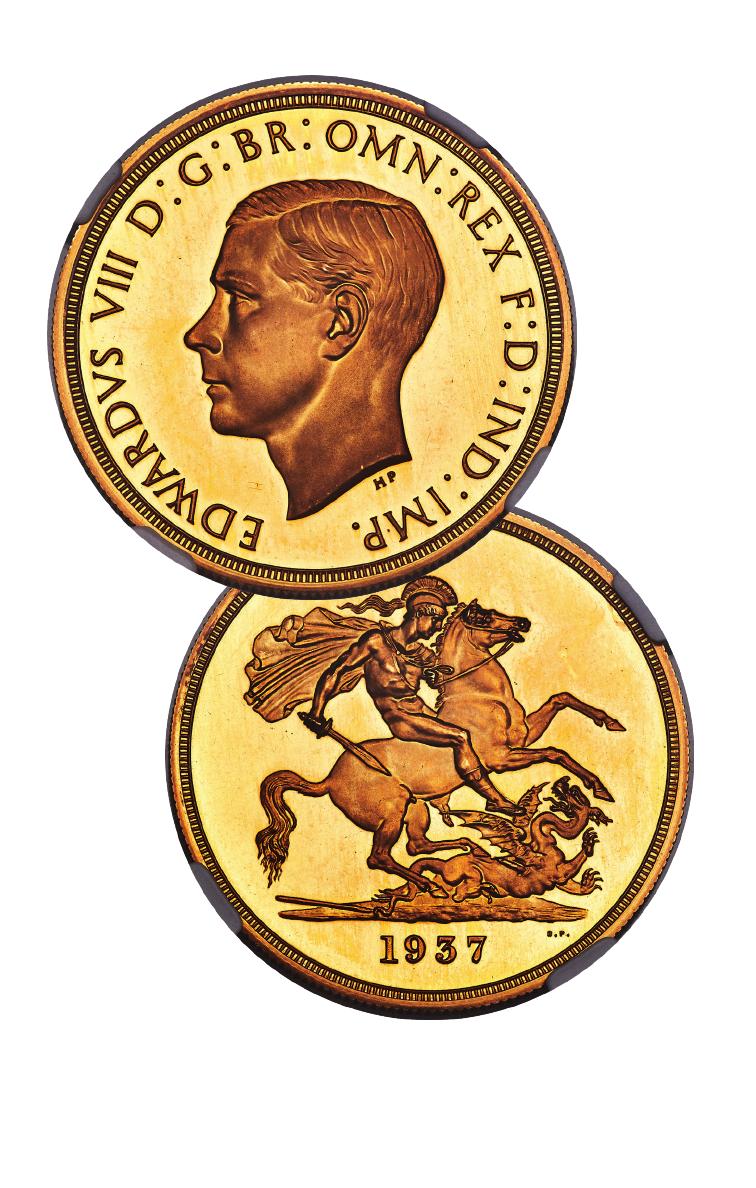
101
Edward VIII Gold Proof Pattern 5 Pounds 1937
PR67 Ultra Cameo NGC
Sold for $2,280,000 | March 2021
From the Paramount Collection

102
rate that the donor (you) determines with the charity. The asset is now
out of your estate and no longer subject to estate taxes.
The only other rules are that the annual distributions from the trust must
be a minimum of 5 percent of the value, and a maximum of 50 percent.
Also, when the trust ends, the remainder that goes to the charity must
be at least 10 percent of the initial value of the contribution.
This is the ideal solution for anyone whose collection has appreciated
significantly in value, who would like to sell the collection and does not
have heirs interested in owning the collectibles.
The other, less favorable, alternative is to retain the collection until you
die, at which point your heirs will receive a stepped-up basis if they
sell the assets. The assets, though, will be included in the value of the
estate, which may in itself create a tax if exemptions do not preclude
estate taxation at the time of death.
André Brasilier (b. 1929)
Chevaux au crépuscule irlandais, 1983
Oil on Canvas
38 x 57 inches
Sold for $106,250 | November 2022
Property from a Distinguished Estate, Newport Beach, California

103
How to Know if a CRT is Right For You
1. You Have Charitable Giving Intentions
By and large, a CRT is only appropriate for people who have charitable
intent. In these cases, their intentions are often longer term (sometimes,
generations beyond their lifetime), which enables them to blend
different charitable strategies including irrevocable trusts.
2. You Want to Minimize the Amount of Wealth That Will Go to Heirs
If you’re not concerned about your assets being passed down to heirs,
a CRT is a great option. In contrast, if you want to leave all your wealth
to your heirs, a CRT may not be the right fit, because the assets left in
the trust at the end of its lifetime will go to charity.
3. Your Estate is Exposed to Federal and State Estate Taxes
If you have estate tax exposure, the best approach could be to move
assets out of your estate and into a CRT. Alternatively, if you have
charitable intentions but little or no estate tax exposure, it might be best
to make a donation in the year that you choose for strategic reasons.
4. You Have a Highly Appreciated Asset
If you have a collectible that you need to convert into an income stream
and you want to do it in a tax-efficient way, a CRT could work for you.
However, you should still have charitable intent and no concern about
the asset being passed down to heirs.
TIPS FOR HEIRS: In summary, when it comes to charitable
planning and your collection, there are many options available to
you, each with benefits and pitfalls. When considering making
a charitable gift, it is extremely important that you collaborate
with your advisory team and the charitable institution to ensure
that your gift will provide both you and the organization with the
maximum benefits.
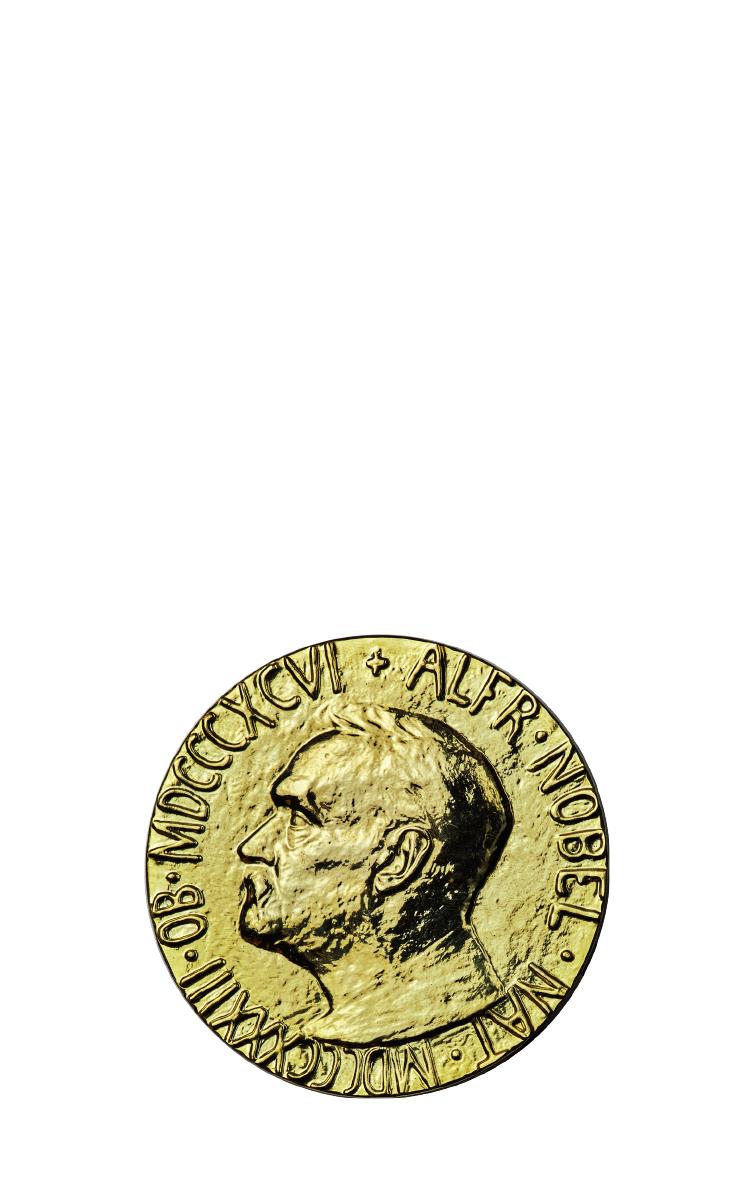
104
Nobel Auction for Ukraine
Brings $103.5 Million
Russian Journalist Dmitry Muratov Sells Nobel Peace Prize Medal
To Benefit Displaced Ukrainian Children
By Robert Wilonsky
T
he 2021 Nobel Peace Prize medal awarded to independent Russian
journalist and Novaya Gazetaeditor-in-chief Dmitry Muratov fetched
$103.5 million from an anonymous Heritage Auctions bidder at a live
global auction at the Times Center in Manhattan on June 20.
Proceeds raised from the auction went directly to support UNICEF’s
humanitarian response to the war in Ukraine and affected regions.
Heritage Auctions donated its efforts to bring worldwide attention to
Muratov’s desire to aid those impacted by the war.
“Several months ago, we at Novaya Gazeta asked ourselves what we
could do to stop the war and help these civilians get their lives back,”
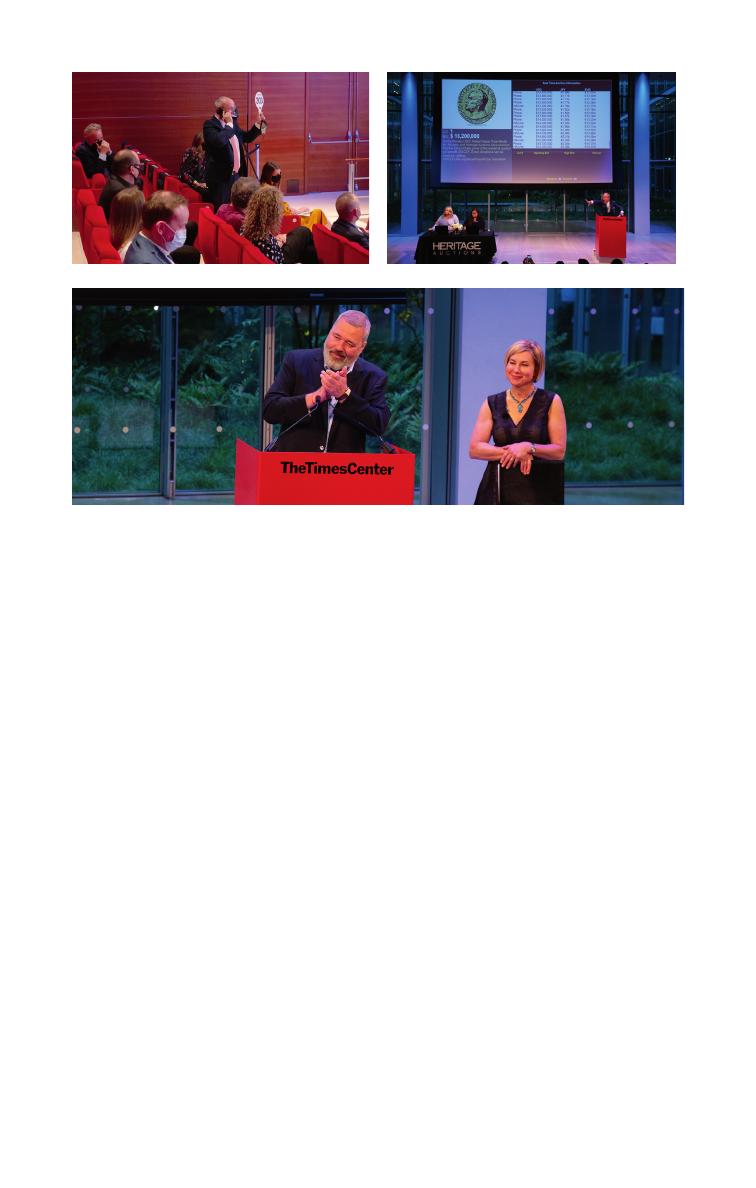
105
Muratov said during the June 20 event. “We decided to sell our Nobel
Peace Prize medal through Heritage Auctions, which managed the
process very efficiently and waived all their fees and commissions
completely. We thank them for this.”
Bidding on the medal opened June 1, Children’s Day in Ukraine, and
concluded June 20, World Refugee Day, commemorating the strength,
courage and perseverance of refugees.
The medal opened live bidding at $787,500, then quickly reached $1
million; then, $2 million; then, $3 million. And each time bids reached
a round number, the auditorium burst into applause. Bidders over the
phone and on HA.com eventually drove the price past $16 million. Then,
about 23 minutes after the auction began, one phone bidder moved to
the front of the line with a bid of $103.5 million.The room erupted.
“UNICEF is honored, excited and deeply grateful to Dmitry Muratov for his
extraordinary generosity, and we are astounded by the unprecedented
response to the auction,” says UNICEF Executive Director Catherine
Russell. “This remarkable contribution will help Ukrainian children
survive this brutal war and, someday, rebuild their lives. We hope Mr.
Muratov’s gift inspires others to support vulnerable children in Ukraine
and everywhere.We also want to thank the anonymous bidder, whose
winning bid will do so much for so many.”
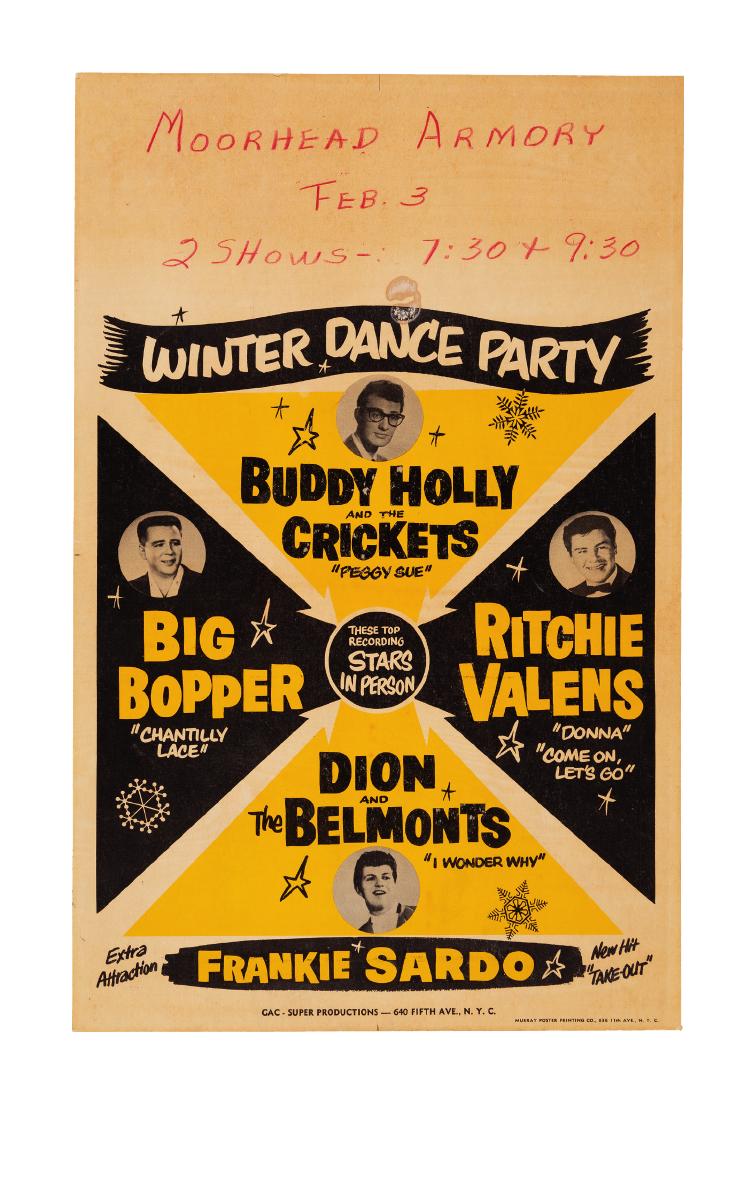
106
Buddy Holly & the Crickets
“The Day the Music Died”
1959 Historic Concert Poster
Sold for $447,000 | November 2022

107
Evaluating Your Collection
PART THREE
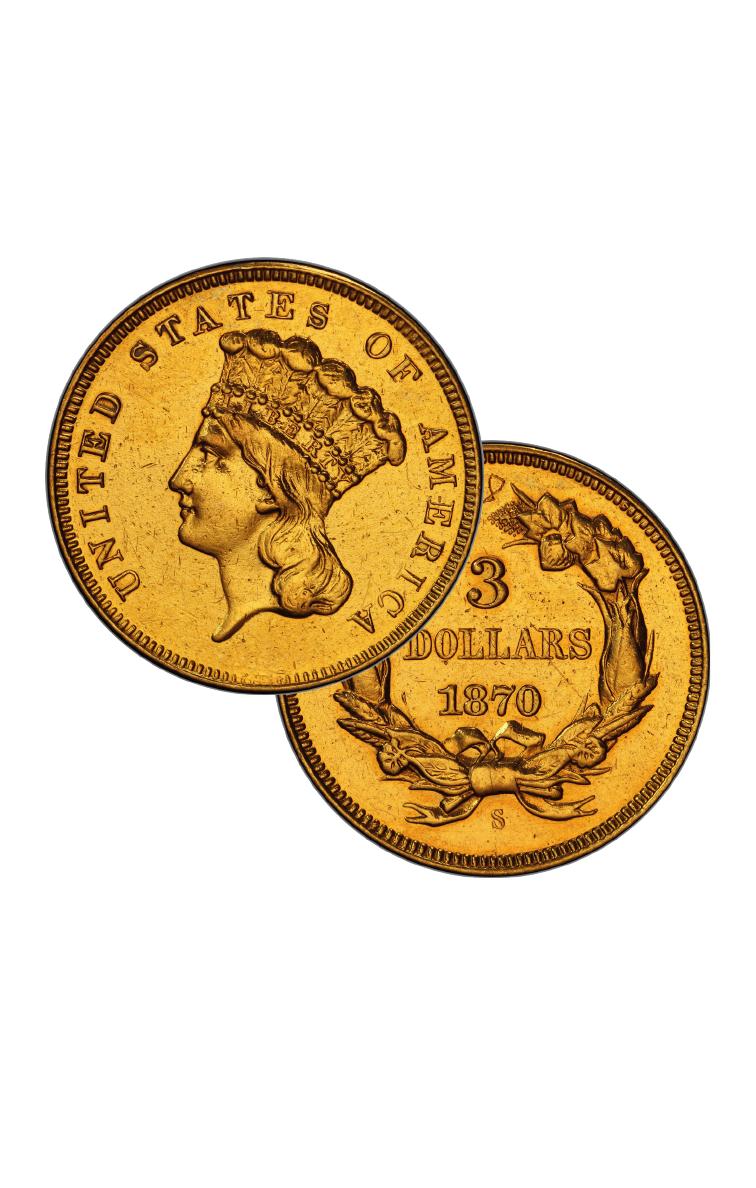
108
1870-S $3 SP50 -- 893 Engraved
PCGS. Unique
Sold for $5,520,000 | January 2023

109
9
Third-Party Authentication
and Grading
A
uthenticity and evaluation are vital matters for any collection. This
chapter concentrates on third-party grading services that are
available to grade and authenticate your collectibles. These services
are widely available for coins, sports cards and comics. Use them as
needed, but consider the cost, quality and value of grading services
for your collectibles. For many items, especially lesser-valued pieces,
grading may not be necessary.
For coin grading, the American Numismatic Association (ANA) adopted
Dr. William Sheldon’s 70-point grading system and, between 1973 and
1977, worked to establish standards for all series under the leadership
of numismatic luminary Abe Kosoff. Experts from all coin specialties
collaborated with Kosoff to develop the first official ANA grading guide,
published in 1978.
Initially, it recognized three grades to evaluate Mint State coins:
Uncirculated or MS-60; Choice Uncirculated or MS-65; and Perfect
Uncirculated or MS-70. Unfortunately, the third grade (MS-70) was
mostly theoretical, and the two remaining designations quickly proved
inadequate for the marketplace. MS-63 (Select Uncirculated) and
MS-67 (Gem Uncirculated) were added to the system and functioned
successfully for a while until the demand for closer evaluation required
additional grades. Eventually, all numbers between MS-60 and MS-70
were employed and the adjectival equivalents were eliminated.
NGC and PCGS remain the acknowledged leaders for coin grading.
The reason for their success is that they are the only firms that have
maintained sufficient dealer confidence to allow coins to be traded
routinely on a sight-unseen basis.

110
Comics and cards are generally graded on a 10-point scale, with a
“10” being the highest grade (most perfect quality). Several grading
services are listed for these collectible categories in the Appendix.
For comics, Comics Guaranty, LLC (CGC) is recognized as the most
trusted grading service.
Sports card authenticity is often entrusted to one of three major
grading houses: Professional Sports Authenticator (PSA), Beckett
Grading Services (BGS) and Sportscard Guaranty LLC (SGC). Talk
to your local card dealers, or find one online and ask which grading
service has the most credibility among dealers and collectors.
Collectors’ with autographed items use PSA/DNA to authenticate their
collectibles. They also are listed in the Appendix to this book.
Stamp collectors frequently rely on the grading services of Professional
Stamp Experts (PSE). The PSE website (see Appendix) contains
detailed instructions and an online submission kit, each of which is an
excellent guide on how to properly submit stamps for grading.
What Should You Certify?
Certification is an expensive proposition that should be approached
with caution. At $15 and up per item, the total costs — for even a
small collection — easily can run into the thousands of dollars. Not all
collectibles benefit equally from being certified. The rule of thumb, of
course, is that the finished product has to be worth more than the raw
(ungraded) item, plus the certification fee.
There are two practical reasons to certify a collectible: to determine
authenticity and to add value.
When a dealer considers buying an uncertified collectible, the guess
is how the grading service is going to grade it — and the dealer will
want to be as conservative as possible. For example, if a dealer is
looking at your 1886-O Morgan dollar and is trying to decide whether
NGC will grade it an MS-63 (valued at, say, $3,000) or MS-64 (valued
at $10,000), it will be designated as an MS-63 coin, to be on the safe
side, and offer a price commensurate with an MS-63 coin.
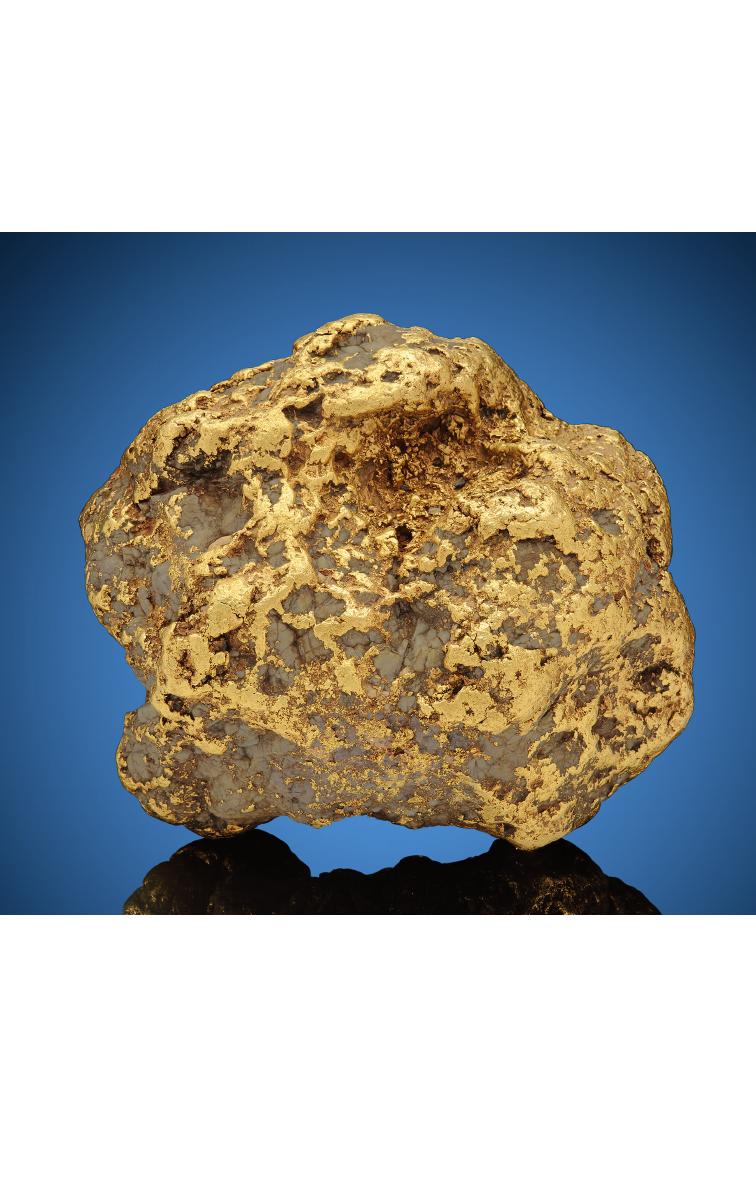
111
Alaska Centennial Gold Nugget
Sold for $750,000 | December 2021

112
You could, however, have the coin certified before attempting to sell
it. The upside is that if the grading service calls it an MS-64, you have
a five-figure coin. The downside is the cost of the grading fee. The
bottom line is that this issue has a significant value spread between
grades and — in our opinion — the risk is worth the expense.
Submitting Your Coins
NGC and PCGS both operate primarily through authorized dealer
networks, though both offer programs through which collectors can
directly submit coins to the grading services. Most of these dealers
frequently will submit your coins to the grading services on your behalf.
The dealer often is compensated with a rebate of approximately 20
percent of the grading fee. Don’t request part of the rebate, but do ask
for the coins to be previewed and for help determining which coins
to submit for certification. Most authorized dealers are familiar with
the standards of both grading services and can help you avoid coin
submissions on which third-party grading may not add value.
If you reside within driving distance of an authorized dealer, make an
appointment to preview the coins with them. If you are not within a
reasonable distance, you may ship your coins to an authorized dealer
of your choice. A good rule of thumb is to select an authorized dealer
who is also a member of the Professional Numismatists Guild (PNG).
The PNG is the most respected numismatic fraternal organization
and each new candidate must undergo a detailed background check
and be approved by the entire membership. Members must conduct
themselves under a strict Code of Ethics and submit to binding
arbitration in the event of disputes. Contact information for the PNG is
also included in the Appendix A.
Declaring Submission Value for Insurance
When you prepare to submit your collectibles for grading, you will be
asked to declare a value for insurance purposes. This is important
should the package become lost or the items damaged in transit
or at the grading service. Since grading and shipping fees both are
impacted by this decision, you need to determine whether the value
range is commensurate with the likelihood of loss or damage, and then
select a replacement value for the items. Third-party grading can be an
extremely important part of estate planning. Certification by a reputable
grading system will increase the liquidity of a collection when it is sold
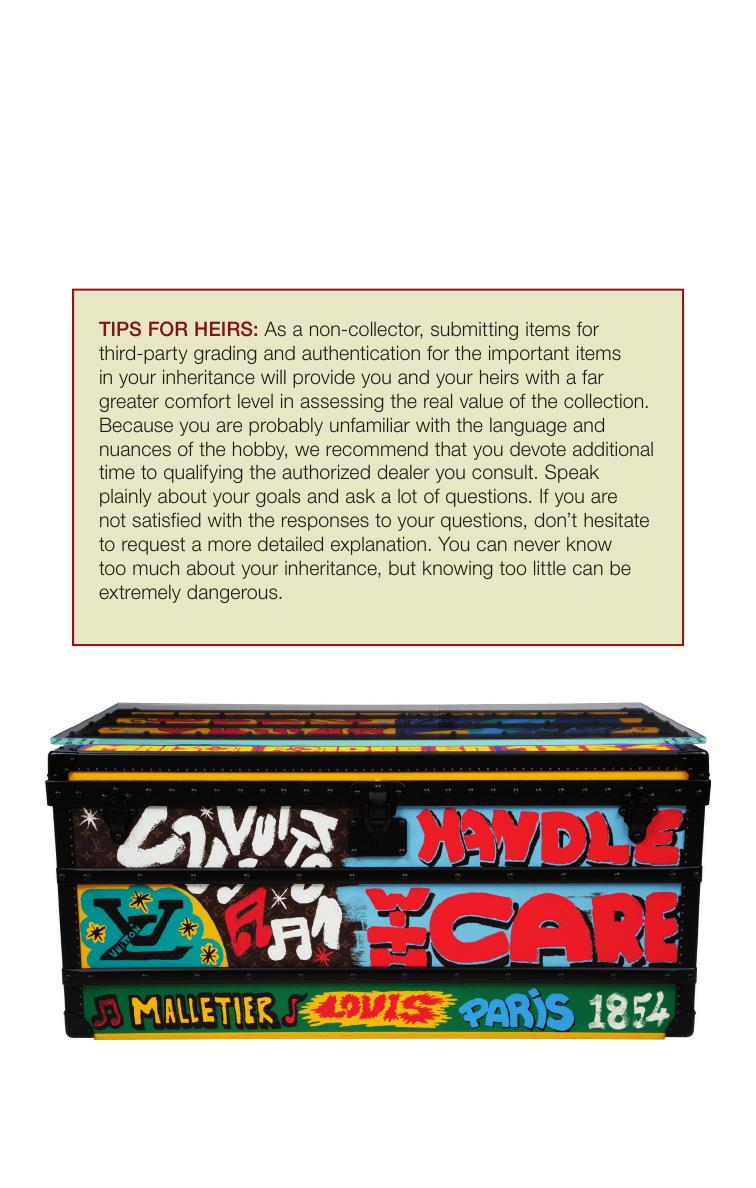
113
because certified coins are easy to trade among dealers and on the
Internet. Your heirs and advisors will be spared the burden of extensive
(and expensive) identification and cataloging.
Third-party grading will protect your collectibles, allow your heirs to
value and identify them, and provide liquidity when the collection
is sold.
TIPS FOR HEIRS: As a non-collector, submitting items for
third-party grading and authentication for the important items
in your inheritance will provide you and your heirs with a far
greater comfort level in assessing the real value of the collection.
Because you are probably unfamiliar with the language and
nuances of the hobby, we recommend that you devote additional
time to qualifying the authorized dealer you consult. Speak
plainly about your goals and ask a lot of questions. If you are
not satisfied with the responses to your questions, don’t hesitate
to request a more detailed explanation. You can never know
too much about your inheritance, but knowing too little can be
extremely dangerous.
Louis Vuitton SS21 Virgil Abloh Malle
Courrier Lozine 110 Steamer Trunk
Sold for $87,500 | May 2022
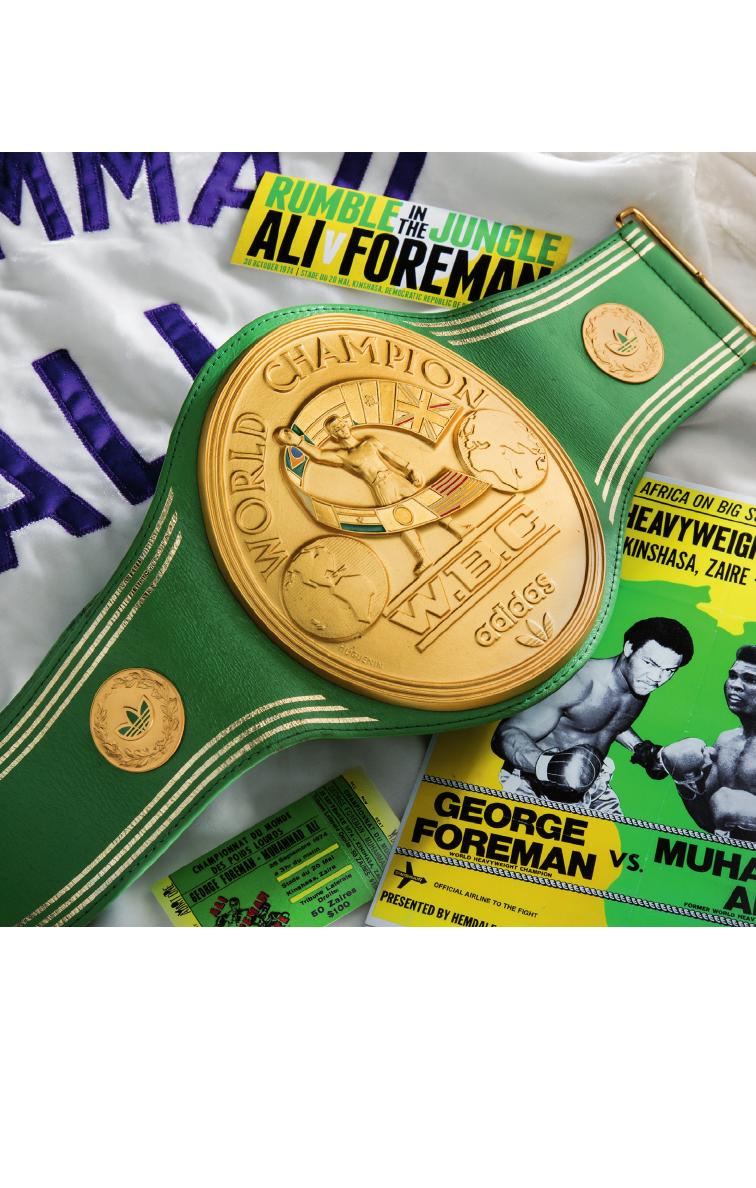
114
1970’s Muhammad Ali WBC Heavyweight
Championship Belt Earned in Victory over
George Foreman in the “Rumble in the Jungle.”
Sold for $6,180,000 | July 2022

115
10
APPRAISAL FAQS
Do I need an Appraisal?
You may need an appraisal for a variety of purposes including:
• Gaining and maintaining accurate insurance coverage for your
property
• Evaluating federal estate tax liability in cases of death
• Evaluating federal gift tax liability
• Reporting non-cash charitable contributions to the IRS
• Assisting with estate and financial planning
• Equitably dividing assets in an estate
• Equitably dividing assets in a divorce proceeding
• Setting a valuation basis for a collateral loan
What is the difference between an appraisal and auction estimate?
An appraisal report requires adherence to USPAP guidelines, IRS
regulations, and liability agreements. Appraisals have a specific value
for a specific purpose at a specific time --- such as a fair market value
appraisal for estate tax purposes as of the date of death or a replacement
value appraisal for insurance purposes as of today’s market. Appraisals
are a
fee-based service due to the amount of research involved to
pinpoint a specific value that will often be used by a third party to
establish a basis for insurance, tax, or a loan.
Auction estimates are quick and free opinions of the current market
value of items. They are a range of value for which one would expect
to see the item sell in today’s auction market. This valuation service is
not intended for establishing a value for insurance, tax, estate planning,
collateral, or third-party transactions.
Having Your Collection Appraised
The appraisal of tangible personal property is an integral part of estate
and financial planning and collection management. Included here are
some frequently asked questions and tips.

116
How do I choose a qualified appraiser?
When hiring an appraiser, it is good practice to choose one that is
USPAP-compliant. A USPAP-compliant appraiser will have been trained
and tested in appraisal methodology, ethical standards, and advanced
report-writing skills. Continuing education is also required for appraisers
to maintain and grow their market knowledge and expertise.
Select an appraiser who has formal education and longtime experience
in the type of property being appraised.
What is USPAP?
USPAP is the acronym for the Uniform Standards of Professional
Appraisal Practice issued by The Appraisal Foundation and updated
periodically. They are the generally accepted standards for professional
appraisal practice in North America for all appraisal disciplines, including
real property, personal property, business valuation, and mass appraisal.
Are there different types of values?
Items can have many different values. Hire an appraiser who can
determine the right value under the right circumstance and date. For
example, an appraisal for estate tax or charitable contribution purposes
utilizes fair market value by law. This value is not appropriate for
insurance, as it may not be sufficient funding to make the insured whole
again after a loss.
The value type is determined by intended use and circumstance of the
appraisal. The two most commonly used value types are fair market
value and replacement value.
Fair market value is most commonly defined in Treasury Estate Tax
Regulation §20.2031-1(b) as “the price at which the property would
change hands between a willing buyer and a willing seller, neither being
under any compulsion to buy or to sell and both having reasonable
knowledge of relevant facts. The fair market value of a particular
item of property includible in the decedent’s gross estate is not to be
determined by a forced sale price. Nor is the fair market value of an item
of property to be determined by the sale price of the item in a market
other than that in which such item is most commonly sold to the public,
taking into account the location of the item wherever appropriate.”
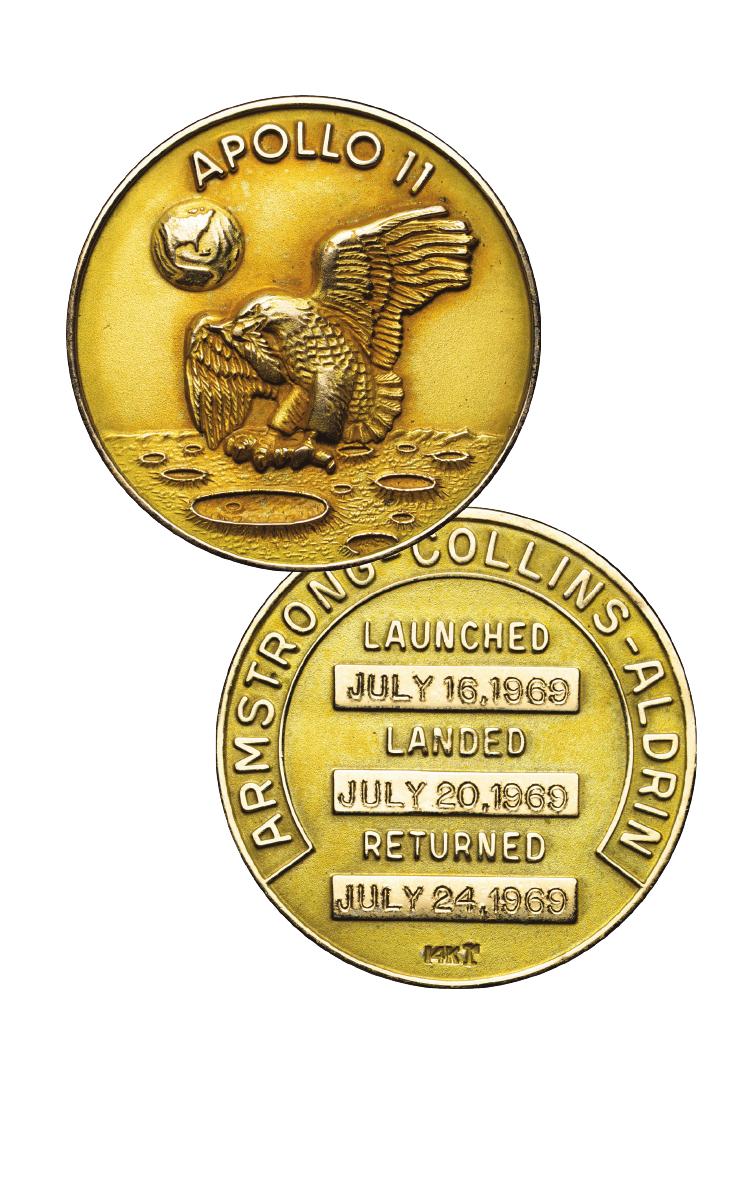
117
Neil Armstrong’s One and Only Apollo 11 Lunar Module
Flown MS67 NGC 14K Gold Robbins Medal Directly From
The Armstrong Family Collection™, CAG Certified.
Sold for $2,055,000 | July 2019
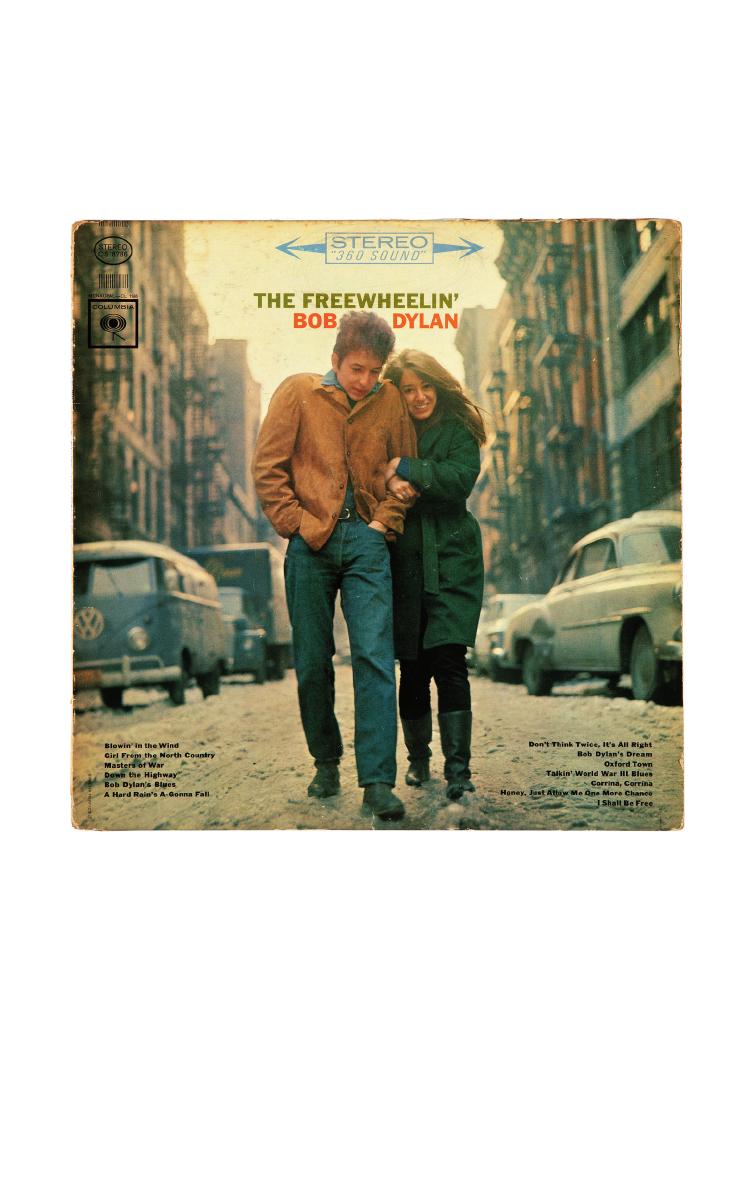
118
Bob Dylan 1963 Original Freewheelin’ Album
w/Four Deleted Tracks
In Super-Rare Stereo.
Sold for $150,000 | July 2022

119
Replacement value is defined as the amount it would cost to replace an
item with one similar and like quality purchased in the most appropriate
marketplace within a reasonable amount of time. Replacement value
often includes not only the costs of acquiring or replicating the property,
but also all the relevant costs associated with replacement.These other
costs may include all applicable taxes and duties, framing, crating and
transportation.
How often should I update my insurance appraisal?
Check with your insurance company first for their guidelines and
recommendations for appraisal updates, but generally, we recommend
that insurance appraisals be updated every one to five years depending
on the type of property you collect to keep informed with the most
current market valuations.
How do I prepare for an appraisal, and what should I expect?
Ensure that all items being appraised are easily accessible, create a
preliminary inventory of your items, and/or take detailed photographs
of your collections. These preliminary inventories and photographs may
also help us advise you on whether an appraisal is necessary.
Having an inventory of your collection is good collection management
practice. Update the inventory as you add to or subtract from
your collection. Many collection management software programs are
available to the public. Provenance, receipts, and good photos not
only assist with the appraisal process but protect your family history by
compiling stories of how your collection was acquired to pass on your
collection’s legacy to future generations.
An appraiser may be able to determine the scope of the appraisal from
preliminary information and images provided by the client. However,
in some cases, an initial on-site evaluation may be necessary for the
appraiser to determine the scope of work.
A qualified appraiser should have the appraisal terms and conditions
outlined in an appraisal agreement, including the estimated fee for the
appraisal.
Appraisers charge an hourly or daily rate, or a negotiated flat rate
based on time or the number of items. An appraiser’s fee should not be
calculated based on a percentage of the value of the property.

120
Certain types of personal property may require grading or authentication
by outside experts. Appraisers are not authenticators or graders, and
appraisal reports are not proof of authenticity. However, appraisers
can often assist with grading and authentication services as letters or
certificates of authenticity can be obtained from the recognized authority
in each art and collectible field.
After the inspection, either by photograph or personal examination, and
after research has been concluded, appraisers will produce a written
report of their value opinions and conclusions.
Helpful Tips on Non-Cash Charitable Contributions
• Speak with a tax advisor prior to considering a non-cash
charitable contribution. It may be in the donor’s best interest to
sell the property and donate the cash, rather than proceed with
appraising property in accordance with IRS regulations.
• A Qualified Appraisal Report written by a Qualified Appraiser
is required when the fair market value of the donated item
exceeds $5,000.
• Appraisals cannot be made more than 60 days prior to the date
of donation; but they can be made any time after the donation
is made up until the taxpayer’s return is due.
• IRS Form 8283 must be completed by the donor and then
signed by both the appraiser and the donee. The donee is also
required to provide the donor with contemporaneous written
acknowledgement.
• On July 30, 2018, the IRS announced final regulations that
define who is a Qualified Appraiser and what is considered
a Qualified Appraisal. It is now more important than ever to
ensure you are hiring a knowledgeable appraiser who has both
education and experience with the items being appraised and
understands how to produce a credible appraisal report.
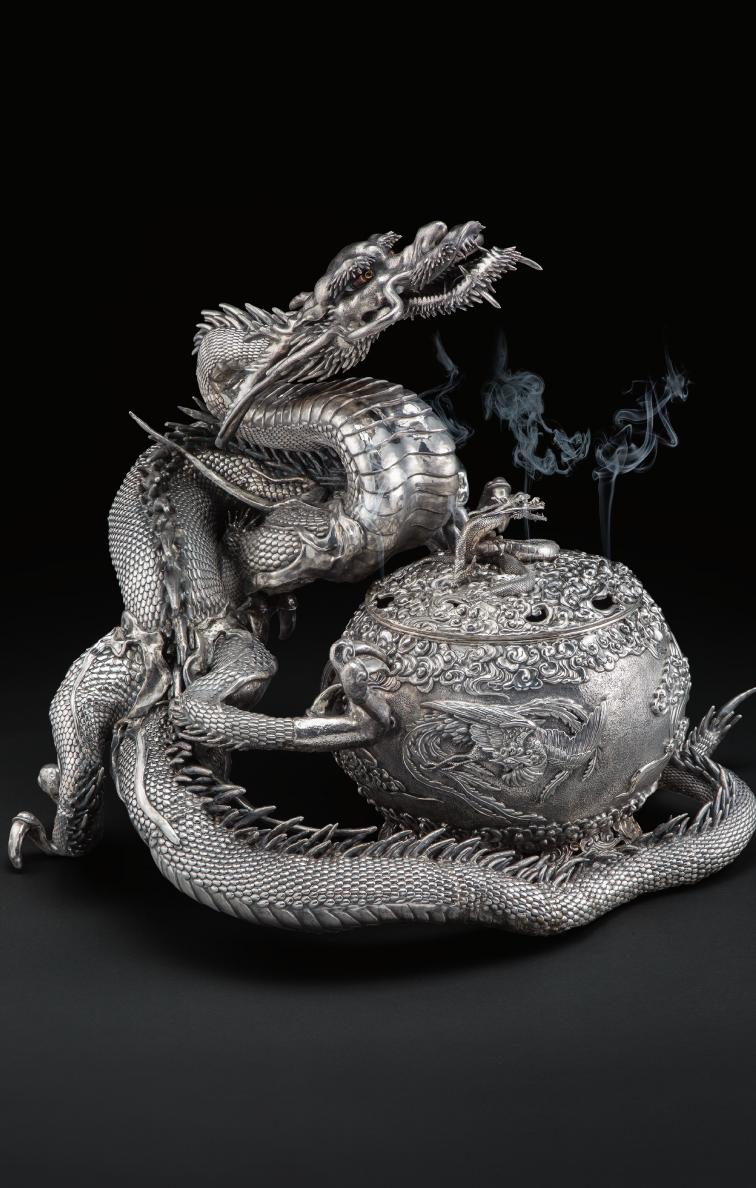
121
A Massive Japanese Silver
Incense Burner, Meiji Period
Sold for $250,000 | May 2023

122
Story
At the age of 8, Greg Rohan started collecting coins,
and by 1971, at the age of 10, he was buying and
selling coins from a dealer’s table at trade shows in
his hometown of Seattle. Today, as a partner and
President of Heritage Auctions, his responsibilities
include overseeing the firm’s private client group and
working with top collectors in every field in which Heritage Auctions is
active.
Sometimes outstanding auction results are the product of a brilliant
marketing strategy and the excitement generated by a once-in-a-lifetime
opportunity to own something spectacular.
Sometimes. But just as often, pre-sale estimates are blown away by
a confluence of coincidences — motives that have little to do with an
item being exceptional, and end with a collector paying far more than
an item would sell for on any other day. My favorite example of this
phenomenon came on August 7, 2000, when we sold a 1919 Denver
mint dime from the collection of a New Jersey State Senator named Lou
Bassano. Bassano was a devoted collector in his late 50s and, at the
urging of his wife, was selling off part of his coin collection to diversify
his assets. The 1919 dime was in beautiful condition — the book value
was around $30,000 but given its scarcity, we thought it could sell for
perhaps $50,000.
By the time the auction started, Internet bidding had driven it up to
$60,000, and Sen. Bassano and his wife were at the sale, looking quite
pleased. Then the floor bidding started. It quickly climbed past $100,000,
at which point there were two bidders left: a well-known collector sitting
in the back with his wife, and a well-known dealer sitting in the front row,
bidding on behalf of a collector with a discrete wave of his pen in order
to preserve anonymity.
But I noticed something funny about the bidder in the back of the room:
his wife was doing the bidding. Normally, he did the bidding, but this
time he was arguing with his wife who was gleefully waving her paddle,
Greg Rohan’s

123
keeping the auction going. I was puzzled. Did his wife even collect coins?
What was going on?
By the time the bidding ended, the dealer in the front row was the winner
at $218,500. The room broke into applause and I walked over to the
couple in the back to console them on their defeat and thank them for
driving up the price. The man was relieved: “Thank God we didn’t get
that,” he said. “She’s crazy.” His wife explained that it was his birthday,
and that it was the last coin he needed to complete a set, so she’d bid as
high as he would let her, ignoring his pleas that it wasn’t worth that much.
The next day I went over to see the dealer to deliver his purchase and
collect a check. “You were quite the star,” I told him.
“I’ve got a huge problem,” he said. “How on earth could that sell for
$218,500?”
“Well clearly it did,” I replied. He explained that he’d purchased it on
behalf of a client who hadn’t bothered giving him a limit. He’d been told
to buy the coin that was expected to sell in the $30,000-$50,000 range,
totally unaware that the bidding would carry it to more than four times
the high estimate.
“He told me to just buy the coin,” he said nervously. “But I can just hear
him saying ‘I told you to buy the coin, not take a leave of your senses.’
I don’t know what to do.”
“Well the first thing you need to do is write me a check,” I said. “I’ll put it
in my desk while you go talk to your client and if he gives you trouble and
you need more time to pay, I can wait awhile to cash it.”
Everything worked out fine in the end. The collector was, of course,
shocked to hear that he’d paid that much for it, but he honored his
commitment. I think that Sen. Bassano probably got in more than a few
“I told you so’s” on the ride back to New Jersey with his wife, who had
told him that she didn’t think coins were a good investment.
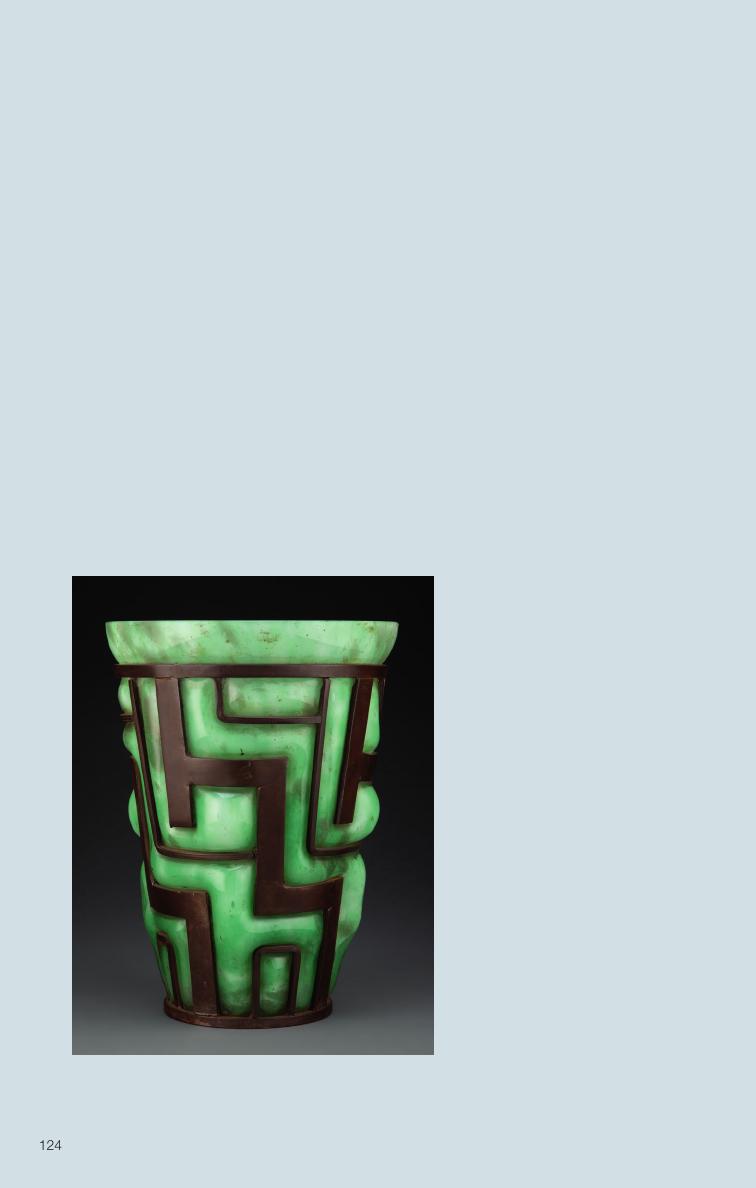
124
H
eritage was thrilled to present selections from the Estate of Myra
Janco Daniels across our Spring 2023 sales. Daniels was the arts
visionary and advertising pioneer who helped transform Southwest
Florida into a nationally recognized cultural destination. Daniels was the
founder and CEO of the Philharmonic Center for the Arts (now Artis-
Naples). While the arts were a lifelong passion, her first career was as a
groundbreaking advertising executive in Chicago, where she was among
the first women to head a national ad firm. Her husband, Draper Daniels,
was responsible for many famous ad campaigns, including the Marlboro
Man, and was later an inspiration for the Don Draper character on the
popular TV series Mad Men.
Daum Blown-Out Glass Vase with
Louis Majorelle Iron Mount, circa
1920
12 inches
Sold for $14,375
Opposite top:
Helen Frankenthaler
Beginnings, 2002
Screenprint in colors on handmade
paper
37 x 36 inches
Sold for $30,000
Opposite bottom:
Wolf Kahn
A Dip in the Horizon, 1990
Oil on Canvas
26 x 28 inches
Sold for $42,500
Myra Janco Daniels
Naples, Florida
The Estate of
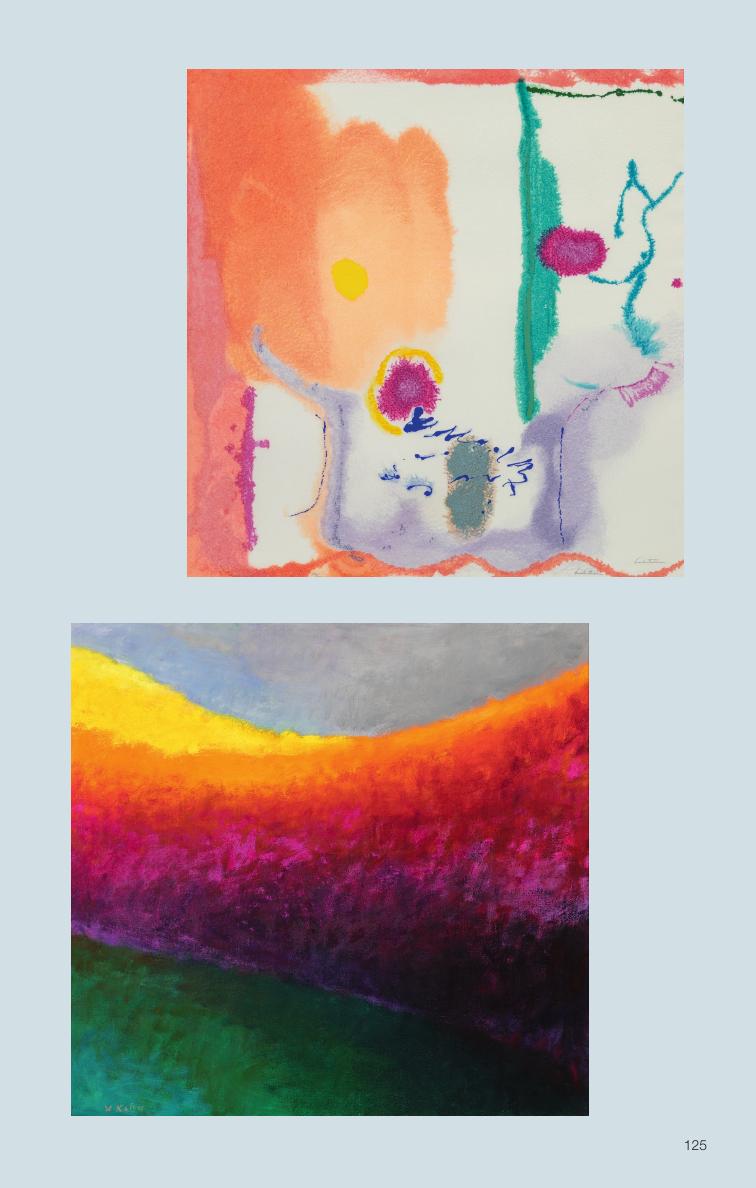
125
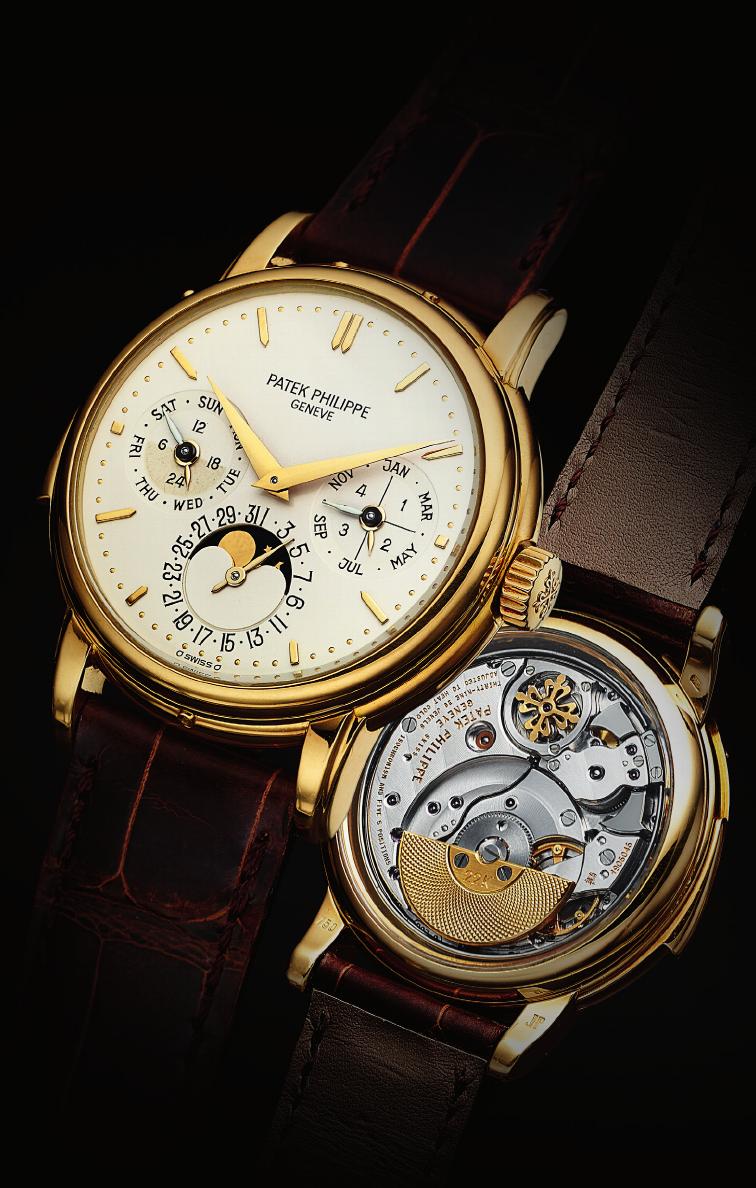
126
Patek Philippe Very Rare And Important Ref. 3974J
Yellow Gold Automatic Perpetual Calendar Minute Repeating
Wristwatch With Moon Phases, circa 1991
Sold for $322,500 | October 2017

127
Selling Your Collection
PART FOUR
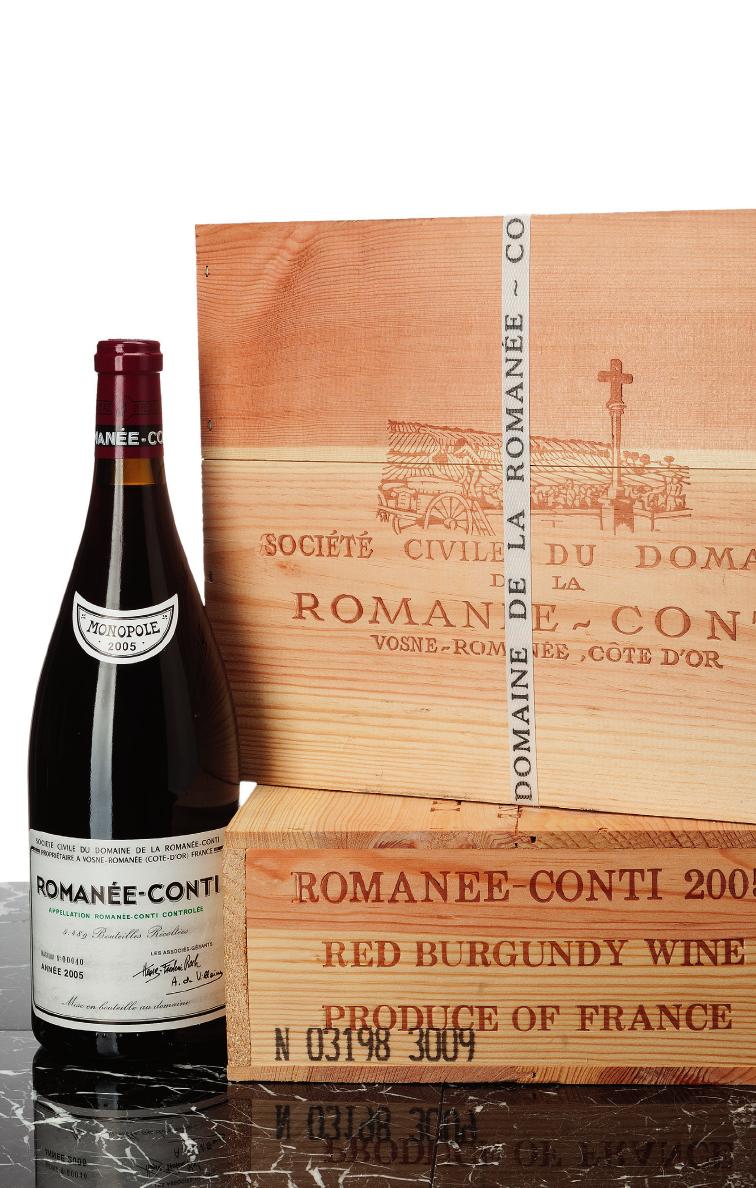
128
Romanee Conti 2005
Domaine de la Romanee Conti
3 banded owc
Bottle (9)
Sold for $152,500 | September 2017
Romanee Conti 2005
Domaine de la Romanee Conti
scl
Magnum (1)
Sold for $39,040 | September 2017

129
11
Selling Your Collection Through Outright Sale
T
his chapter is the first of three that outlines specific methods for
selling your collection. There are pros and cons to each method,
but the general rule for selling anything is that “time is money.”
This means that, all other things being equal, the sooner that you
receive payment for your collection—and the less effort you put into
the sale—the less money you are likely to receive. Our goal is help you
make a measured decision about the amount of time you are willing to
invest in the disposition process.
Outright sale is without question the easiest method of selling a whole
or partial collection. You present the articles to one or more buyers.
They make offers, at which point you, as the seller, either accept or
decline. The time you invest in this process is limited to the period you
spend with the collectibles at the evaluation(s); if you accept an offer,
you receive your payment and go on with your life. If you assembled
the collection, this can be devastating or it can be cathartic, but it won’t
take forever.
First, we will assume that you are offering a collection of substance to
a dealer who specializes in the field. Specialized dealers are most likely
to be able and willing buy an entire collection. It is also easier to locate
them through their advertising and they can be qualified through their
references and affiliations. What is the dealer thinking when you bring
him your collection for a possible bid?
Dealers are in business to buy collections coming through the front
door (or through the mail). Most of their advertising and their longevity
at a particular site are planned specifically to create an environment
that attracts such collections. Many collectibles are a fixed-supply
commodity. If you’re in the business, you have to acquire products to
sell, and advantageous buying is at the core of such a business.
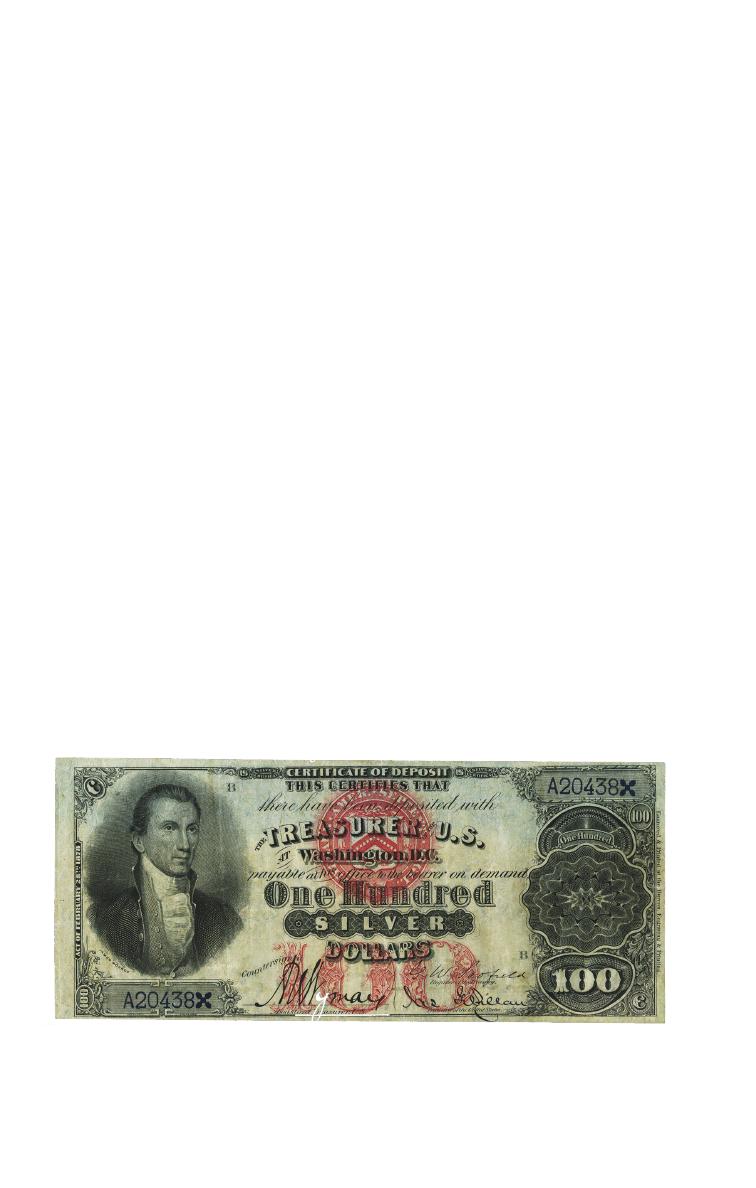
130
We have two parties together; one who wants to sell and one who
wants to buy. Now comes the sticking point. In any transaction, the
final result reflects the combination of knowledge and leverage of the
parties. The dealer wants to buy the collection at the lowest price he or
she can pay. Their leverage is that they have the money and willingness
to acquire the entire collection and they also have the benefit of any
degree of impatience that you possess, or that they can instill in you.
You may also believe that they are more knowledgeable about current
markets than you are, as a result of their experience and credentials.
You, however, want to know that you are receiving the maximum
reasonable price for your collectibles. Your leverage is that they do not
want to let you out the door with the collection. Your knowledge and
negotiating skills are also an advantage, as is any fear you can instill in
the dealer about your willingness to not sell to him or her.
Another variable is location and how it affects the dealer’s perception
of competition. If you live in a small town with only one viable dealer
and your collection does not lend itself to selling to an out-of-state or
international buyer, the dealer’s bid may be less competitive than you
would like.
Fr. 337b $100 1878 Silver Certificate
PCGS Very Fine 35
Sold for $540,000 | January 2019

131
A dealer is bidding on two different kinds of items:
• First, there are those items for which they know they have
customers, or which are readily liquid in their retail or “high
wholesale” operations. These are items on which they can
afford to accept the lowest margins, because their carrying and
marketing costs will be the lowest, and their risk of not finding a
buyer will be minimal.
• Second, are the articles that do not fit those criteria: collectibles
that are not traded routinely and which will require greater effort
to sell. This particularly applies to bulky pieces, when additional
shipping weight is also a factor. Such items generally will be
figured cheaply because of the effort and expense necessary to
resell them at a profit. Dealers will take the time to find the “high
buyer” because that is how they make a living, but their bid will
reflect the effort and expense of finding a buyer and the risk of not
finding a buyer.
It’s easy to get upset with dealers for not reliably offering a price that
is a good deal for everyone involved; ideally, you’d be able to count on
the first dealer offering you what a collection is worth and that would
be that. Unfortunately, it doesn’t work that way—and your ability to
achieve maximum value for your collection hinges on your knowledge
of its value, your ability to articulate that knowledge to the dealer in
a negotiation, and on your willingness to explore other options if you
don’t receive an offer you believe is fair.
Here are some tips for negotiating the best deal on your collection:
• Allow Yourself a National Marketplace
The world has become a much smaller place through increasingly
rapid communications and transportation as well as widespread
Internet use. You should not limit your search for outlets to your
hometown. If your collection is significant and of substantial value,
potential sales outlets will come to you.
• Find a “Full Service” Dealer
A large dealer with strong contacts will see your more common
items as more liquid because they routinely sell this kind of material

132
as well as the more rare collectibles. They already know who the
buyers are and what they’re paying.
• Create an “Aura of Competition”
It is rarely a bad idea to obtain more than one bid on something
you are selling and never a bad idea to let a potential buyer know
that other people are bidding. This can be communicated after
you get a bid: “Is this your best offer, Mr. Smith? I know dealers
sometimes leave a little ‘wiggle room,’ but I have two other people
bidding and this isn’t that kind of negotiation.” It can also be
communicated before the negotiation even begins: “I want you to
know in advance, Mr. Smith, that I’m offering the collection for bid
to three people. Please give me your best offer the first time.”
• Display Your Knowledge in Discussing the Bid
Dealers and people handling collectibles respect those who
speak the language. You don’t necessarily have to have a deep
knowledge if you can “sell” a few key points. If you have a few
pieces in your collection that stand out, bring them up and try to
drop in a little bit of jargon from the field—perhaps some arcane
reference that suggests a deeper knowledge of the field than you
necessarily have.
• “Play the Player”
Follow up the responses to the questions above with further
questions. “You bid ____, isn’t that a little low?” If the dealer can
immediately address the questions with logic and explain an offer,
then the offer likely is at, or at least near, its maximum. Alternatively,
if he’s evasive or there’s no logic to his response, there’s very likely
negotiating room left.
• Split the Deal
Rather than offer the whole collection in one lot, offer “test” groups
for bid to get a feel for your potential buyers. Generally, there is
more control when dealing with smaller, manageable “pieces”
and more money often can be secured. There is also the “bait”
technique of letting the bidders know that there is the potential for
more to come. This perception may lead some bidders to treat you
better in the early rounds. The trade-off is more of your time.
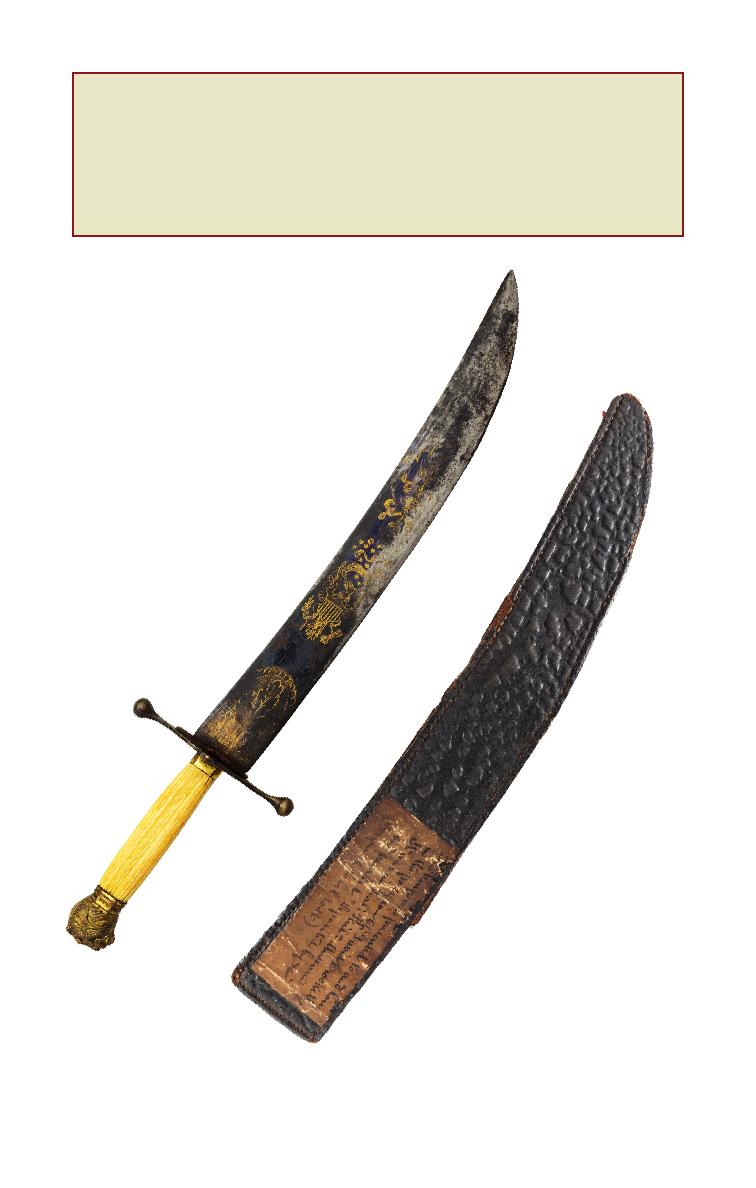
133
Historic David “Davy” Crockett’s Bowie
Knife Deposited to the Peale’s Museum
Sold for $115,625 | June 2023
TIPS FOR HEIRS: If you are a non-collector and after reading
this chapter you want to use this method, we would recommend
strongly that you seek multiple offers. We would also recommend
that you first read and consider the options that are discussed in the
next two chapters as well.

134
When deciding where to place an item for sale, a key thing to consider
is how your object will be presented by the dealer, gallery or auction
house. While a six-figure painting may seem expensive, each year
international auction houses sell hundreds of seven-figure paintings as
part of their Impressionist, Modern and Contemporary auctions in New
York and London.
Heritage’s May 2, 2016, Modern and Contemporary Art sale in New York
was led by Abstract Expressionist Willem de Kooning’s 1968 oil on paper
laid on canvas East Hampton II. For Heritage, the important work was
able to be a star in the sale instead of just being another lot among much
higher value paintings.
When selling art and collectibles, do you want your work to be
featured, or do you want your work to be a lot buried in a massive
catalog? For East Hampton II, the painting was featured prominently
in a full-page advertisement in The New York Times and featured in
a national marketing campaign. It was placed alongside a museum-
quality selection of American and European works by household
names including Marc Chagall, Fernand Léger, Jeff Koons, Robert
Rauschenberg and Milton Avery.
The de Kooning relates to his key 1950s paintings of women. As the
catalog described in vivid language, “Here, a female figure emerges from
an amalgam of sweeping brushstrokes in red, orange, yellow and blue.
Subtle outlines distinguish her legs and body from her surroundings.
The movement of the woman’s body - her lifted legs and skirt -- hints at
sexual pleasure.”
Your exceptional objects – no matter what collectible category they fall
within – should be sold in a venue that lets it shine and advertised to
a pool of bidders who can compete for it. High quality photographs,
accompanying lot descriptions and essays, exhibitions to possible
bidders and advertising all helps introduce a work and its qualities to
potential bidders.
The result? The painting Sold for $802,000, at the top end of its estimate
of $600,000 to $800,000 and more than it sold for at its last offering
Finding the Right Venue
for the Market
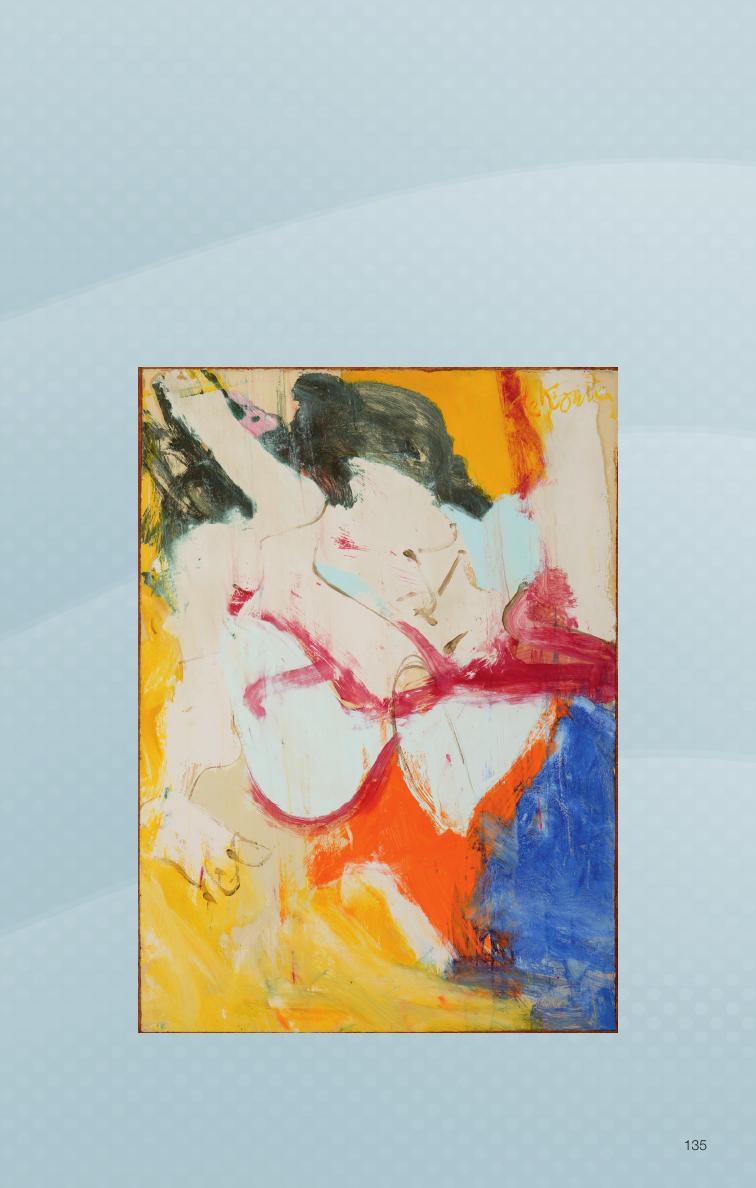
135
Willem de Kooning (1904-1997)
East Hampton II, 1968
Oil on paper laid on canvas
41-3/4 x 30 inches
Sold for $802,000 | May 2016
at auction in 2011 when offered at Sotheby’s Feb. 15, 2011, auction in
London.
As Heritage noted after the auction, “This sale really solidifies our position
as the leaders in the middle market, giving collectors and consignors the
unique opportunity to see great works, often overlooked, in an elevated
evening and day sale settings.”
It’s tough to think of an $800,000 picture being considered in the middle
market, but these types of works require a seller to ask tough questions
of an auction house to help maximize value when it comes time to sell.

136
Frank Frazetta Dark Kingdom
Painting Original Art (1976).
Sold for $6,000,000 | June 2023

137
T
he objective in choosing this method is to receive more money than
you would from a direct sale. The trade-off is that it will take more
time and effort—especially when enlisting the services of several agents
to sell different parts of your collection.
Many people employ an agent to assist them in selling real estate. The
agent knows real estate values, has methods for attracting qualified
customers, and understands how to negotiate. A good dealer has the
same qualifications and contacts, but you rarely hear the term “agent”
being used in that context. Dealers would generally prefer to purchase
collections outright, and then have the freedom to resell them without
customer consultation. They may, however, accept a collection on
consignment rather than lose the deal entirely.
It often is a good idea to offer a few pieces to the dealer to sell as
agent to see how effectively the dealer sells, rather than handing
over an entire collection all at once. This allows the agent to focus
more narrowly and allows you to maintain control. The key is regular
communication and interaction between you and the agent. Items
that the agent has been given may not sell and must be returned. The
asking price may need to be adjusted downward. Above all, you must
be able to trust the agent— to have faith in the agent’s ability and to be
confident that your best interests are the agent’s priority.
An agent is generally not worth the trouble unless they can get 10-25
percent more than you would receive in a direct sale.
The first step in seeking an agent is to determine the nature of what
you plan to sell and try to match the right agent with the right product.
12
Selling Your Collectibles Through an Agent
“Sales are contingent upon the attitude of the salesman –
not the attitude of the prospect.” -W. Clement Stone

138
If your pieces are specialized, seek a specialist. If they are mainstream,
look for the following kinds of qualifications:
• Scope of Company
The agent (or agency) routinely handles articles of the same type,
condition and values as those in your collection, and has strong
customer demand for them.
• Grading Service Experience
In the case of coins, the agent (or agency) regularly submits
coins to the grading services and has a strong feeling for where
the “standard lines” of the grades are. Ideally, the agent or other
personnel in their company will have worked for a grading service
and understand both the process and “looks” (eye appeal) that
are most often are rewarded on marginal decisions. The same
principles apply for other collectibles, such as sports cards,
stamps, and certain other categories. For objects like furniture, this
may not apply.
• Regular Show Attendance
The agent (or agency) attends shows on a regular basis where
routine contact with other collectors and dealers provides a feel for
the market and provides a wide range of business contacts.
• Web Presence and Mailing List
The agent has an extensive mailing (and email) list and will present
your collection to the maximum number of potential buyers. It’s
a perfectly reasonable question to ask a dealer; top dealers are
proud of the size of their contact lists.
These qualifications promise the potential of significantly higher
returns, but you also want to choose an agent who genuinely seeks
the role. Many dealers only want to buy and sell collectibles, and
really don’t have the time or inclination to assist you as an agent.
Getting turned down is no reason for distress because enlisting a
reluctant ally is anything but ideal. After all, an agent who acts as if
selling a client’s collection is some kind of favor does not have the
seller’s best interest at heart.
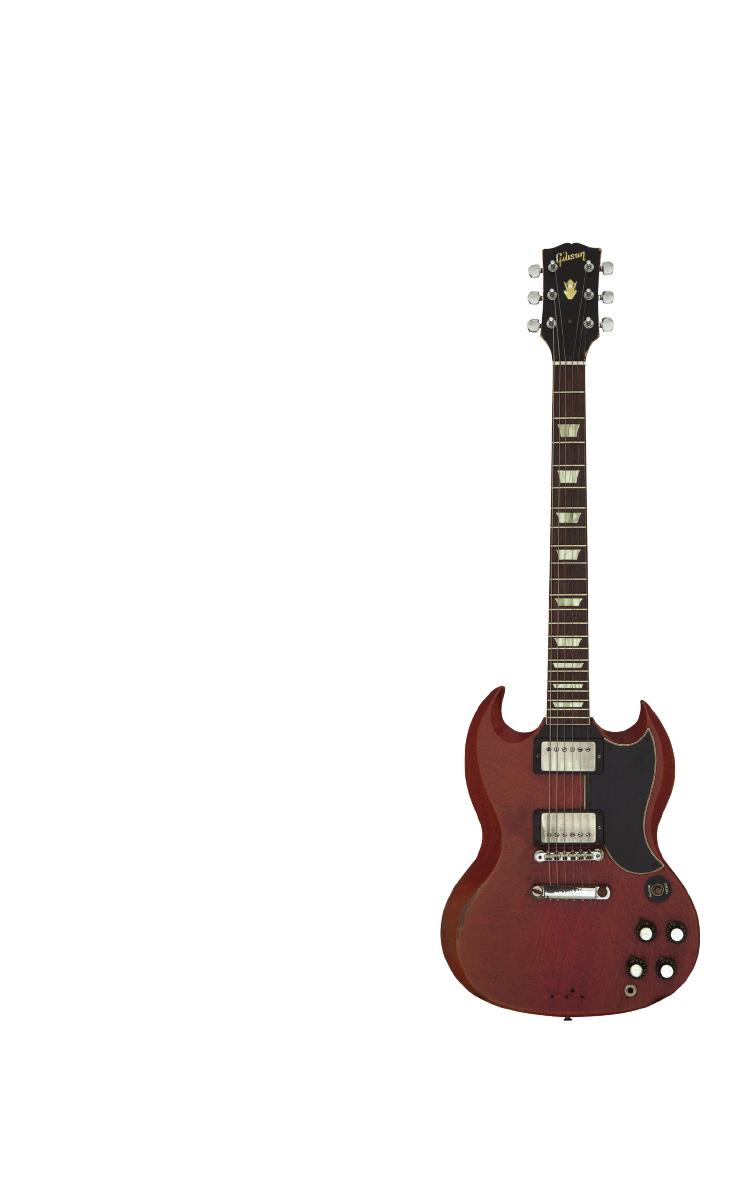
139
Many variables can influence the arrangement made between a
seller and an agent, but these are the things that always need to be
discussed:
• The agent’s fees should be discussed and agreed upon in
advance. Generally, an agent should receive a percentage of
the selling price. This fee usually is
graduated and predicated on the
value of the collectibles. An agent
cannot be expected to go to the
trouble and expense of selling a $100
item for a commission of 5 percent. A
more equitable arrangement might be
a 15 percent commission on pieces
valued under $1,000 and 10 percent
on articles valued over that amount.
This is a matter of negotiation.
• A firm minimum price for each item
or group of items to be sold should
be agreed upon in advance with the
understanding that the seller must
be advised before any articles are
sold for less than this fixed price.
Relinquishing a collection to an agent
in exchange for a promise of an
agent’s best effort is not acceptable.
It should be expected that the agent
will do some research and make a
few phone calls prior to suggesting
a minimum price. Agents should be
prepared to substantiate the values
they suggest. Similarly, the seller
should not demand unreasonable
minimums. No agent worth hiring is
going to waste his or her time and
energy trying to sell articles that are
obviously overpriced.
Duane Allman’s Circa 1961/1962 Gibson
SG, Cherry, Solid Body Electric Guitar,
Serial #15263 Owned and Played by
Graham Nash.
Sold for $591,000 | July 2019

140
• Agents must agree to be totally responsible for collections while it is
in their possession. The agent selected may be the most honorable
person on earth, but still would not be immune to theft or natural
disaster. Proof of sufficient insurance coverage is mandatory. In
many cases, the most prudent strategy would be to give the agent
a limited number of collectibles to sell at any one time.
• Negotiating the minimums is a critical component of this kind of
arrangement. If you are not comfortable with the value range of
individual collectibles, it may be best to get a written offer first,
which will reveal where improvement is needed before negotiating
with an agent.
• Agents should be given the exclusive right to sell the collection for
a specific period of time. Depending on the nature of the collection,
agents may have standard practices they wish to follow. Allowing
them a set length of time to sell the collection should be separated
from the payment schedule. Within reason, the owner should be paid
as the items are sold. A good method to use is to make periodic
settlements based on time or dollar amount. If the agent is given 90
days to sell the collection, it would seem fair to request that the agent
makes payments at 30 and 60-day intervals, or when the amount
collected reaches $5,000 or more. We would be wary of an agent
who didn’t agree to this proposal. Requesting periodic payments is
also a simple and positive way to measure the agent’s performance.
• Finally, make sure that you have the agreement in writing. Good
contracts make good trading partners, and this is a business
arrangement between two parties. All terms must be spelled out
and the document signed by both parties in whatever manner
creates a binding contract in each state.
One other area where agents can be useful is in moving “bulk” coins.
Bulk is the bane of most coin dealers’ existences. Some coin collec-
tors have accumulated 10 proof and mint sets a year for 40 years
and can’t understand why the dealer is not enthused when three
wheelbarrows full of coin sets roll through the door. The answers are:
low price and low margin plus high (relative) weight. We can virtually
guarantee you that if you have an abundance of this material in your
collection, it will be bid very low as part of any outright purchase offer—

141
probably 60-80 percent of wholesale price guides. From the dealer’s
perspective, it is cumbersome, difficult to process, and likely to sit
gathering dust while more lucrative products are prioritized. In some
cases, like with certain U.S. Mint sets, you may be receiving less than
face value for the coins.
Nonetheless, there are a few dealers who specialize in the sale of this
kind of material and are the “high buyers.” Your agent for this kind
of material should know who those high buyers are and be willing to
manage the administrative functions of arranging and completing the
transactions. In return, they should either receive a mutually agreed
fixed fee, perhaps 5-10 percent, and expenses. You should still come
out ahead of the typical direct sale offer.
In summary: match the right agent with the right material, establish
realistic minimums, put the agreement in writing and communicate
regularly with the agent throughout the agreement period.
TIPS FOR HEIRS: If you are a non-collector and wish to
use this option, we recommend that you obtain an outright
purchase offer first. Use extra diligence in qualifying potential
agents, and pay close attention to having the agent(s) validate
the established minimum prices. Use the direct offers as
a comparison and make sure that the minimums offer a
significant increase. It may be even more important to offer
small test groups to become more comfortable with the
process and the agent.
The 48 Star Flag that Led
the First Americans
to Utah Beach on D-Day,
June 6, 1944.
Flown from the stern of U.S.
Navy vessel LCC 60 – the
sole guide boat at Utah
Beach–and retained by its
skipper Lieutenant Howard
Vander Beek.
Sold for $514,000 | June 2016

142
Story
Mike Sadler has been a consignment director with
Heritage Auctions since 2003. He attended the United
States Air Force Academy, flew jets for the military and
is a longtime pilot with American Airlines. Before
coming to Heritage Auctions, Mike’s unlimited access
to air travel enabled him to attend coin shows around
the nation, and to build a world-class collection that
was auctioned by Heritage Auctions in 2004. He is
known for his tremendous knowledge of rare coins, making him a
trusted colleague to many of today’s most active collectors.
My journey to the greatest discovery of my career began on October 25, 2010 with a
phone call from George M. Monroe, a retired Colonel in the United States Air Force.
The coins he was looking to sell had been in his family for a hundred years — in a
box in a closet for a substantial share of that time — and came, he was told, from
an ancestor named Frank Leach.
I was intrigued enough by the call to think it was worth a trip and so the next week
I landed in Washington D.C. When I walked into the meticulously kept condominium
in the D.C. suburbs, I had a strong suspicion something good was about to happen,
but no particular reason to think I was about to stumble into one of the greatest rare
coin discoveries in U.S. history.
The provenance — directly from Frank Leach — was a big part of the appeal;
President Theodore Roosevelt tapped Leach to run the United States Mint in
September 1907 — a position he held until August 1909. Leach died in 1929,
and 81 years later, his family was looking to sell a collection of five 1907 coins,
re-designs in response to Teddy Roosevelt’s disdain for American coins, which he
had referred to in a 1904 letter (coincidentally, later sold by Heritage Auctions in
2012, on behalf of an entirely different consignor, for $94,000) as being possessed
of “atrocious hideousness.”
The rarest piece in the collection was the 1907 Rolled Edge Eagle with satin finish,
in condition far superior to most of the other extant examples. I had a feeling that
the 1907 Rolled Eagle was special. Not knowing anything about the transfer of
rare coins, the Monroes wanted to move slowly and deliberately, making sure they
realized as much value as possible for their collection. Fortunately, Col. Monroe and
I bonded over my experience as a fellow United States Air Force Academy-trained
military pilot, and the family trusted me enough to let me leave with the coins. When
I escorted the coins back to Dallas for grading, accompanied by an armed guard,
Mike Sadler’s

143
as all Heritage Auctions employees are when transporting treasures of high value,
my colleagues confirmed my feeling. Heritage Auctions Senior Cataloger Mark
Borckardt called it “probably the most amazing 20th century gold piece I have ever
seen in my whole life.” Then he added, “This coin absolutely blows my mind.”
Then, (Heritage Auctions Numismatics Director), Ryan Carroll and Heritage Auctions
Co-Chairman), Jim Halperin, were equally impressed; Jim said it almost had the
appearance of a medal, and was unlike any of the dozens of others he’d seen. They
insisted we show it to Numismatic Guaranty Corporation chairman Mark Salzberg,
who happened to be in Dallas for a dealer grading event. Mark covered his eyes in
disbelief when he looked at the coin. “Oh my goodness,” he said. “You just don’t
see those like that.”
One of America’s smartest, most ethical coin dealers had previously offered the
family $300,000 for the collection, thinking that he could make a 10-20 percent
mark-up on the transaction. Heritage Auctions’ argument for selling the coins at
auction was simple: With specimens that were unusual and fresh to market, a
public, widely advertised auction is the only method of establishing fair market
value. With more common items — or pieces that have been sold recently — there
is a track record on which buyers and seller can base a price. But with something
like these coins from 1907, it was anyone’s guess and without an auction, Col.
Monroe might never know whether he had gotten full value.
Heritage experts initially had believed that the coins would fetch close to $500,000,
but upon having the coins graded, realized the potential was there for very
considerable upside on the Rolled Edge Eagle, which NGC finally certified as PR67.
The coins came up for sale on January 6, 2011, Platinum Night
®
for our annual
Florida United Numismatists (FUN) auction, the largest such event of the year.
Pre-sale interest had been strong, and I was able to talk the family members into
making the trip to Tampa to experience the sale in person. When the hammer
came down on the marquee lot — the 1907 Rolled Edge Eagle, PR67 — it brought
$2,185,000, an auction record for a $10 piece, and also more than any $1, $2.50 or
$5 gold coin ever had realized at auction. It was also a price far, far higher than the
coin ever could have sold for in any venue other than a highly-publicized auction
through a reputable major auction house with a broad base of satisfied clients. The
entire consignment realized $2,564,500, and the Monroes celebrated with a glass
of champagne.
As Heritage Auctions Co-Chairman Jim Halperin puts it: “Even the greatest experts
often lack the imagination to predict auction values when an item is truly special.”
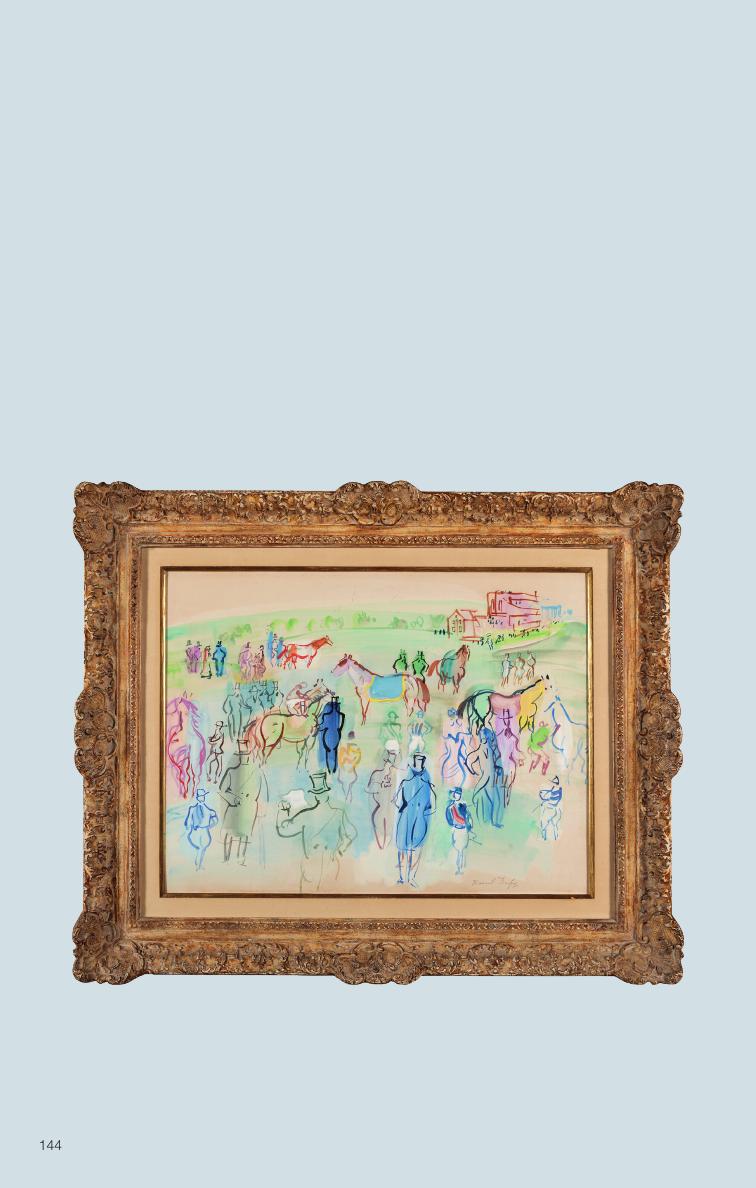
144
Veronique and Gregory Peck
I
n February 2023, Heritage Auctions was honored to present Property
from The Estate of Veronique and Gregory Peck, an event that paid
tribute to the careers and philanthropy of the Academy Award-winning
actor and his philanthropist wife of nearly 50 years. The blockbuster
auction event featured numerous scripts spanning Peck’s acclaimed
film career, awards and notable contracts, landmark costumes, beloved
works of art, and various mementos the couple accrued during their
illustrious and remarkable lives.
Raoul Dufy (1877-1953). Chevaux et turfistes à Epsom
Watercolor, gouache, and pencil on Arches paper laid on card
19-1/2 x 25-1/2 inches (sight) © 2023 Artists Rights Society
(ARS), New York / ADAGP, Paris.
Sold for $93,750
The Estate of
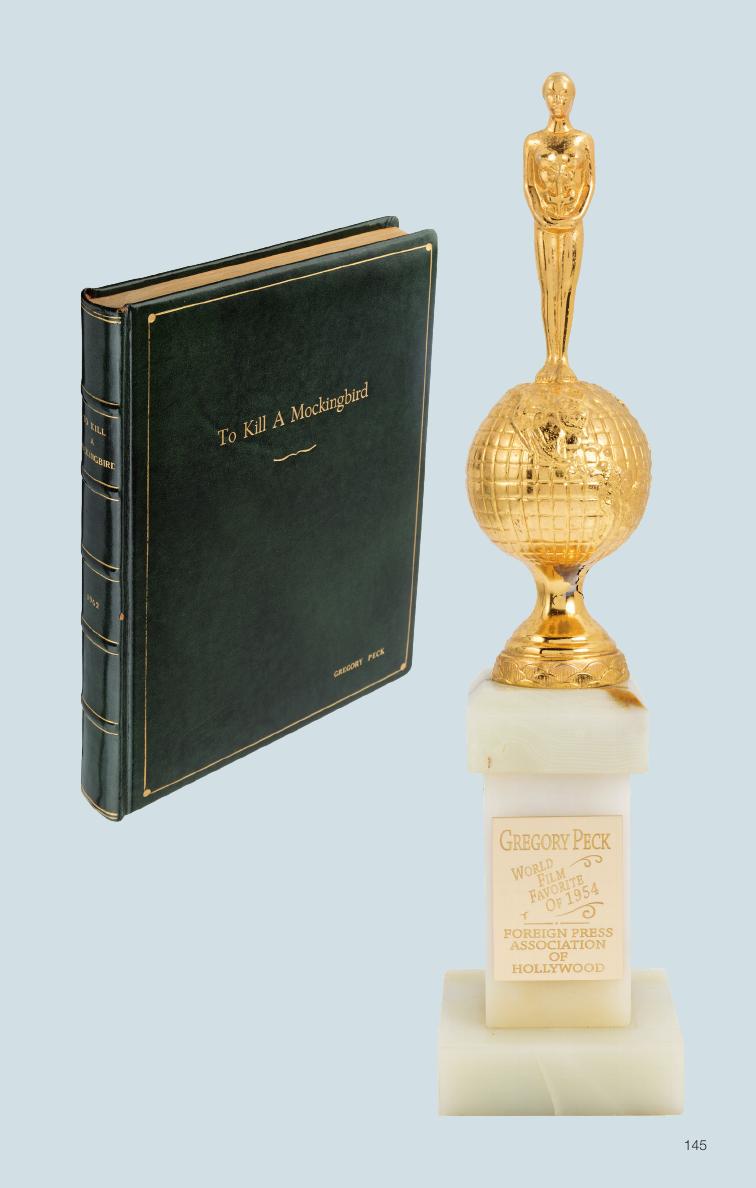
145
Golden Globe “World Film Favorite of 1954”
Award Presented to Gregory Peck in 1955
Sold for $30,000
Personal Book-Bound Script for To Kill a
Mockingbird (Universal, 1962)
Sold for $84,375
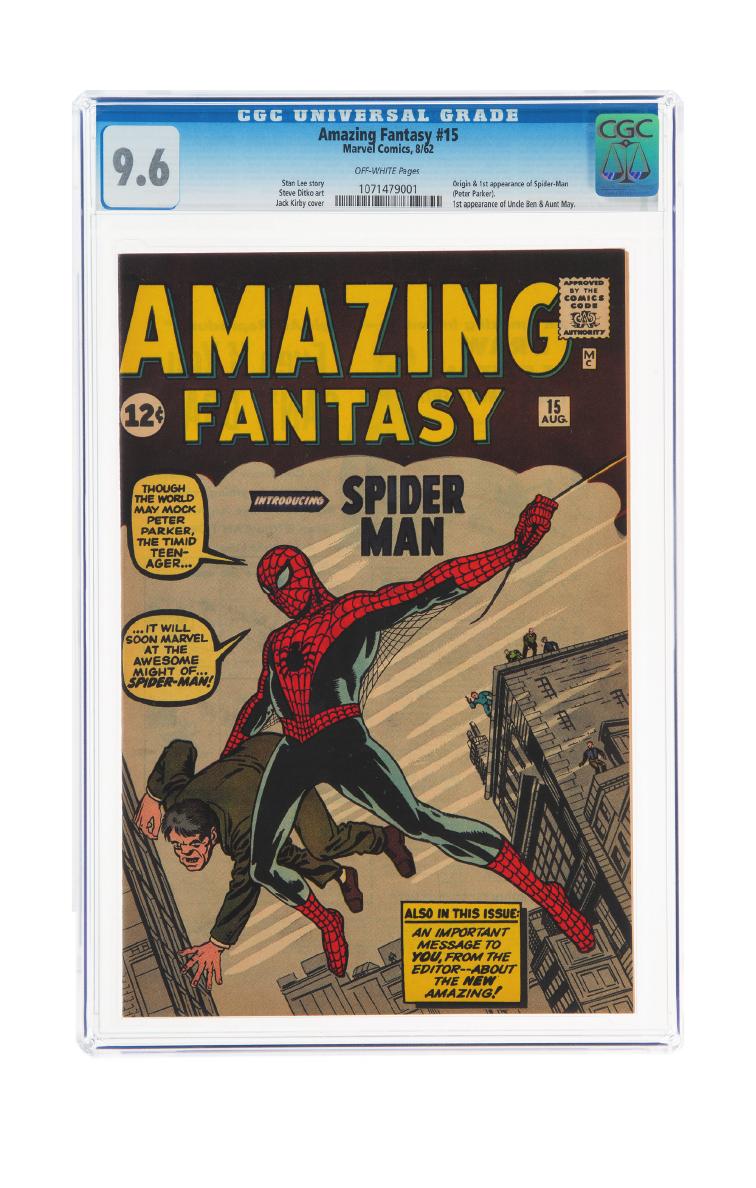
146
Amazing Fantasy #15 (Marvel, 1962) CGC NM+ 9.6 Off-white pages.
Sold for 3,600,000 | September 2021

147
Selling Your Collection at Auction
“A fair price is the highest one a collector can
be induced to pay.” – Robert Hughes
T
he auction always has been and forever will be the best way to
show a product to as many potential customers as possible—and
to ensure that you receive as much value for it as possible. When the
product is rare, competing customers are important, and an auction
is frequently the best venue. There are many benefits to this method
of disposition, but the primary one is that in a good auction (a widely
advertised one with many bidders), each item should realize at least its
true worth.
An auction is a truly free market in which each article stands on its own
merits. Every item is examined carefully by those most interested in it. If
you have a collectible that is rare enough that it trades infrequently, its
current value would have to be described as uncertain. In an outright
purchase of such an item, most dealers will factor that uncertainty into
their prices unless they absolutely know they have buyers at a certain
level. A well-advertised sale by an established auction house, on the
other hand, likely will draw the attention of all the known buyers—and
any others as well. The collector community is generally a small one,
and most serious buyers are aware when objects of interest are offered
for sale, particularly at auction. When that condition exists, competitive
demand will dictate the strongest result and produce the truest value
for a particular collectible.
Finally, esoteric items—those that are not traded routinely—may
again bring the very best price at an auction. At the very least, a well-
publicized auction through a reputable auction house will instill the
peace of mind that your item was exposed to every buyer possible
in a transparent way, even if it didn’t lead to a price as high as you
had hoped. Choose an auctioneer with a strong track record for the
13

148
particular genre—one who has the clientele (both mailing list and
attendance) and auction locations to put the collection in front of the
greatest number of potential buyers. When looking for an auctioneer,
consider the following qualifications:
• Financial Resources and Stability
An auction consignment is first and foremost a business deal.
As with contracting an agent, auctioneers must demonstrate
sufficient financial resources to ensure they can both effectively
conduct the sale and pay sellers at the stated settlement date.
They also must accept liability and provide full insurance against
the loss or damage of a collection.
• Longevity in the Business
An auction house is a complex operation that requires a great deal
of development to assure everything flows smoothly: consignor
and bidder bases, cataloging references and expertise, site setup
and physical security, auction flow and administrative efficiency-
flows—and that only begins to touch on what goes into it. Go with
a proven entity; after all, it’s your money that’s involved.
• Advertising Resources
Success breeds success. You can’t have the top sales without
great advertising, and vice versa. Look for the companies who are
doing the major advertising in the trade papers and on the Internet.
• Location
A company that is limited to holding auctions in locations out of the
mainstream does not have the ability to attract a large bidder base.
Some companies hold auctions in major financial centers with
good regional access, while others rely on the Internet. Comparing
web traffic rankings of different auctioneers can also provide an
indicator of web presence.
• Competitive Rates
Auction companies charge both buyer’s and seller’s fees to absorb
the expenses of the sale and turn a profit. A seller’s fee of 15 to
20% has become the standard and you should not have to pay
more, unless your collection has extraordinary “bulk” or requires
special attention. Indeed, if you have a significant collection, you
may be able to negotiate a better rate.
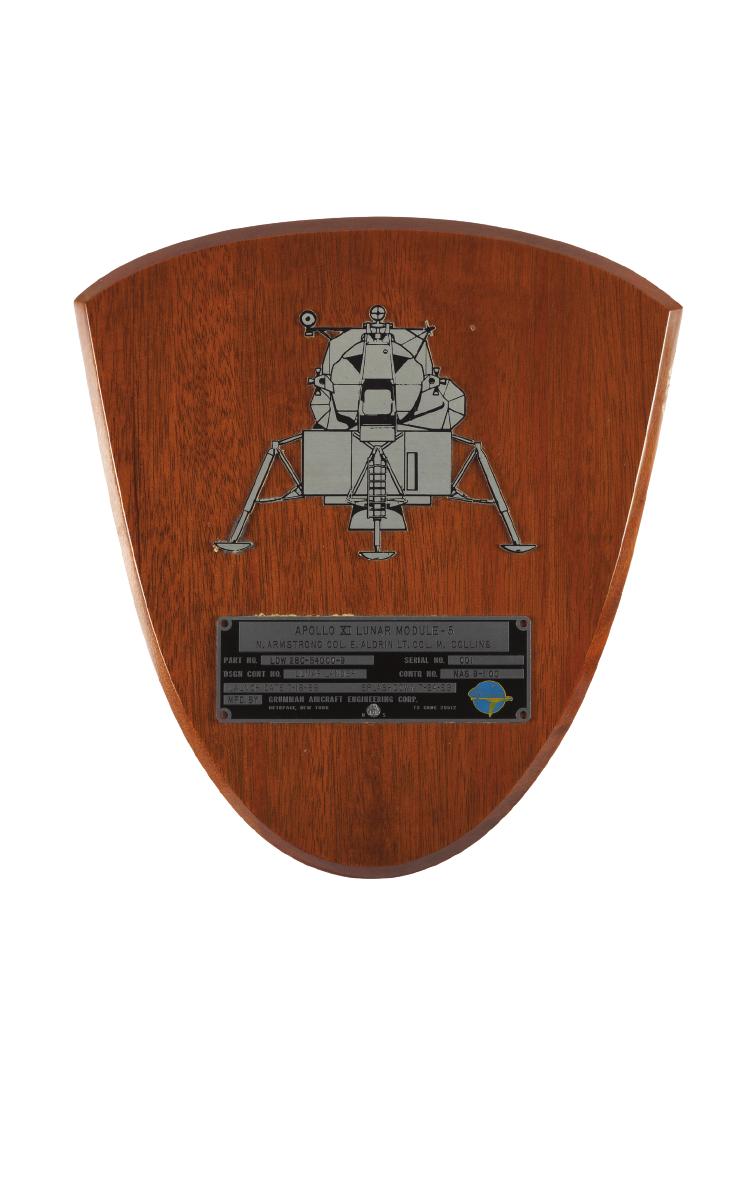
149
Spacecraft ID plate from Apollo 11’s Lunar Module Eagle
Apollo 11 Lunar Module Flown Spacecraft Identification
Sold for $468,500 | November 2018
Plate Display Directly From The Armstrong Family Collection™

150
• Strong Writing and Imaging
Catalog descriptions and photography create the necessary
excitement and demand for an auction’s collectibles and provide
all that is available to entice bidders who cannot attend the sale in
person. Our company, Heritage Auctions, is a pioneer in the use
of online videos and extensive descriptions presented through the
Internet as alternative cataloging media. It’s clear that this is the
wave of the future. Browse through the listings on an auctioneer’s
website and look at the photos and catalog descriptions for lots
that are in the same price range as what you’re looking to sell. If
you were the seller of those pieces, would you be happy with the
merchandising efforts?
• Professional Personnel
It takes quality personnel—and many of them—to conduct a
great auction. In qualifying auctioneers, be certain to inquire as
to the number of people that will be involved in managing your
consignment and what their roles are. Our company provides
potential consignors with a video that details the auction process
from start to finish, and other companies should at least have
literature that covers the same ground. Any company is only as
good as its people. Contact a number of reputable auction houses
to get an impression as to how they will treat your collection. Also,
read through the listings of employees on different auctioneers’
websites. Do they have specialists with impressive resumes in the
category you’re looking to sell in?
Auction is often the best venue for high-quality collectibles, particularly
if the items trade infrequently. A good auction attracts the right mix of
bidders to establish the real value for each individual piece.
If this seems the best route for you, interview potential auctioneers
to determine which of them combines the best business resources,
venues and personnel assets. Some things to consider:
• Ask the auctioneer’s Consignment Director to evaluate your
collection and make recommendations on which articles should be
auctioned and which would be better sold by another method. Ask
them to explain why.

151
• Do you wish to be recognized for your collecting achievements?
Some consignors prefer anonymity, but if you desire recognition,
becoming a signature consignor involves two factors:
- Your overall collection must be of significant value. This could
vary from auction to auction, but for a rough figure, let’s use
$250,000.
- Alternatively, you may have an interesting collection of a more
specific focus—possibly all items are in one group or category.
Don’t hesitate to ask, particularly if there’s a good story behind
the collection!
• From an auctioneer’s perspective, a few high-value items are
preferable to a large collection of lower-value pieces, even if the
total value is the same: the workload is lower. You might be able to
negotiate a lower seller’s fee if you have the “right” kind of material.
• Large lots are at the other end of the spectrum. Large lots are
bulky, cumbersome to carry to auction sites and difficult to ship
once sold. They are time-consuming to catalog and require a lot
of extra effort to earn the same percentage as a single piece of
comparable lot value. Auction company personnel are not very
fond of the large lots in major auctions and neither are most
bidders, because their focus is on the more “high-powered” lots.
Auctioneers will take your large lots for a big sale, but you have
absolutely no leverage, and that’s not what auctions are all about.
In most cases, you would be better off asking the auctioneer to
bid the large lots straight up. You will probably realize greater net
proceeds and will be paid immediately.
• Keep in mind that the lowest commission rate is not necessarily the
best deal. The first consideration should be the auctioneer’s ability
to provide your collection with maximum exposure and promotion.
Saving an extra percentage point or two is meaningless if another
auctioneer could secure an extra 20 percent for your collection.
Negotiate the best possible commission you can once you’ve found
the best auction house for your collectibles; don’t pick an auction
house based solely on the commission.
• Some people sell their collectibles unrestricted and others place
a “reserve” bid to protect them from receiving what they perceive
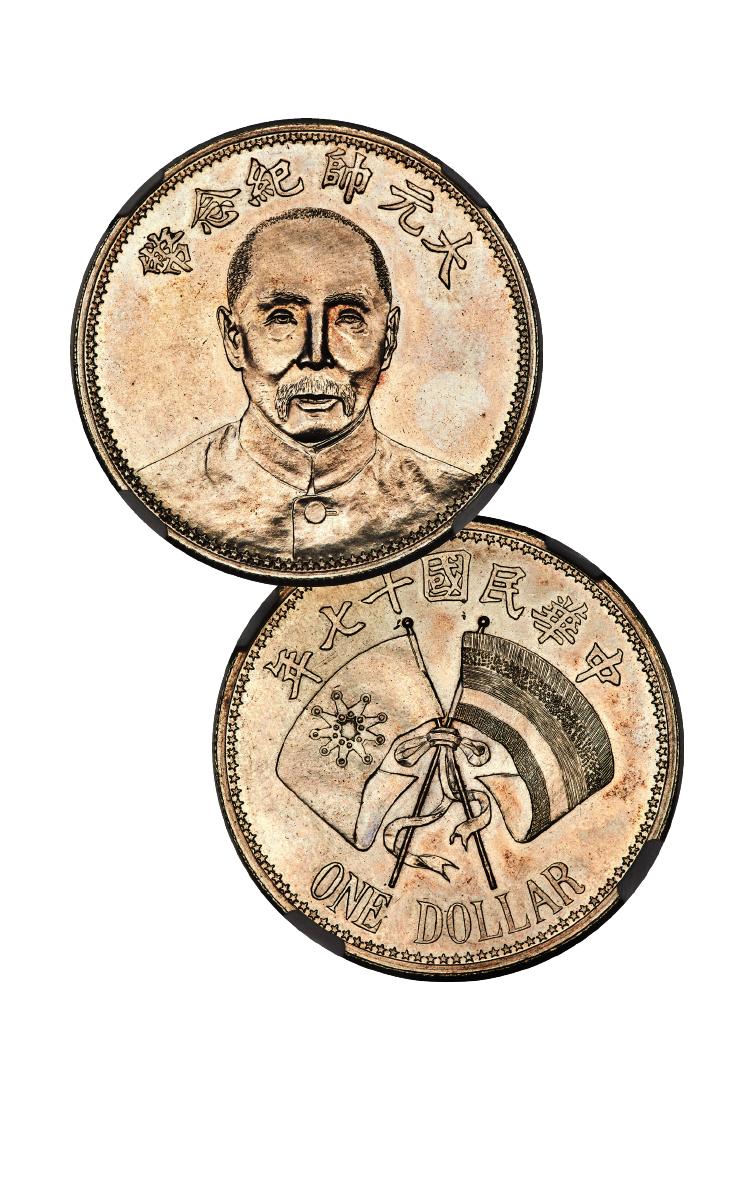
152
Republic Chang Tso-lin silver Pattern “Mukden Tiger” Dollar Year 17 (1928)
MS62 NGC
Sold for $2,160,000 | December 202

153
to be too little. Our rule of thumb: Place reserve bids only if you
are very familiar with current markets and have good reason to
believe that you will easily realize more than the reserve elsewhere
if you “buy-back” the lot. In most cases though, if you’ve carefully
selected an auction house that will provide your pieces with
maximum exposure, a reserve will leave you with the task of
finding another method of sale with no particular reason to think
you’ll realize a higher price. Then there are the reserve fees—a
percentage that you will pay to cover expenses if the item is not
sold because of your reserve. Generally, the percentage is based
on the overall terms of your consignment and how realistic the
auctioneer thinks your reserves are. You should expect the reserve
fee to be 5-10 percent. If the amount is more than that, ask for an
explanation. Good auction houses are likely to be knowledgeable
about what an item can reasonably be expected to bring and if
they tell you your proposed reserve is too high, pay attention.
• Ask the consignment coordinator for the cost of photography
and lotting in the auctions that you are considering. For example,
in some auctions, the minimum value for a catalog photograph
may be $1,500 and in others, $2,500. The latter auction, while
possibly a better venue overall, might not be as beneficial
for your pieces valued from $1,500 to $2,400. Similarly, each
auction will have a minimum lot value. In some cases, it’s $250,
sometimes it’s $500, and in the very best of sales, it may be
$1,000. Most auction companies will allow you to combine items
to reach the minimum, but there is a limit to the number that may
be used and still receive individual, mainstream placement. The
key point for you to remember is that if your overall consignment
is a good one, you may be able to negotiate a more lenient lot
and photography standard.
Internet Auctions
Online auction websites like eBay allow you to sell your items at
auction yourself, with exposure to a wide variety of bidders at a
commission far lower than what you would pay trough a traditional
auction house. The question is whether this is a good idea. Consider
the following questions:

154
When a unique item with broad popular appeal comes to auction,
anything can happen. Such was the case with the chair that J.K.
Rowling sat upon while writing the first two books in the Harry Potter
series. It was painted and signed by Rowling herself.
As CNN observed, “At first glance, it looks like a shabby, wooden chair
with colorful graffiti scrawled on it.” But those scribbles say, “You may
not / find me pretty / but don’t judge / on what you see,” and “I wrote /
Harry Potter / while sitting / on this chair.” “Gryffindor” is painted on the
cross stretcher under the seat.
The catalog description described the chair’s history in vivid detail:
“During her days as an impoverished single mother in Edinburgh, J.K.
Rowling was given a free set of four chairs for her council flat – a social
housing unit provided by the British government. This set included a
standard 1930’s-era oak chair with a replacement burlap seat decorated
with a red thistle. The latter being one of the more comfortable chairs
amongst the bunch, she favored it to sit in whilst writing the first drafts
of Harry Potter and the Philosopher’s Stone and Harry Potter and the
Chamber of Secrets – the first two books of a seven part series that
would become an international phenomenon.”
The chair would be donated to a small auction in 2002 called Chair-ish
a Child in aid of the National Society for the Prevention of Cruelty to
Children (NSPCC) where it sold for $21,000. For this auction, Rowling
used gold, rose, and green paints to transform the chair into a magical
piece of literary memorabilia, fearing that the chair in its original form
would look like it had been “purchased from a junk shop for a tenner.”
When it traded next in 2009 in an eBay auction benefiting the charitable
organization Books Abroad, it sold for the U.S. equivalent of nearly
$30,000. It was purchased by Gerald Gray, the CEO of AutoKontrol
USA, who consigned it with Heritage in 2016. Gray planned to donate
10 percent of the winning price to Lumos, Rowling’s children’s charity.
The Harry
Potter Chair
Marketing at Work
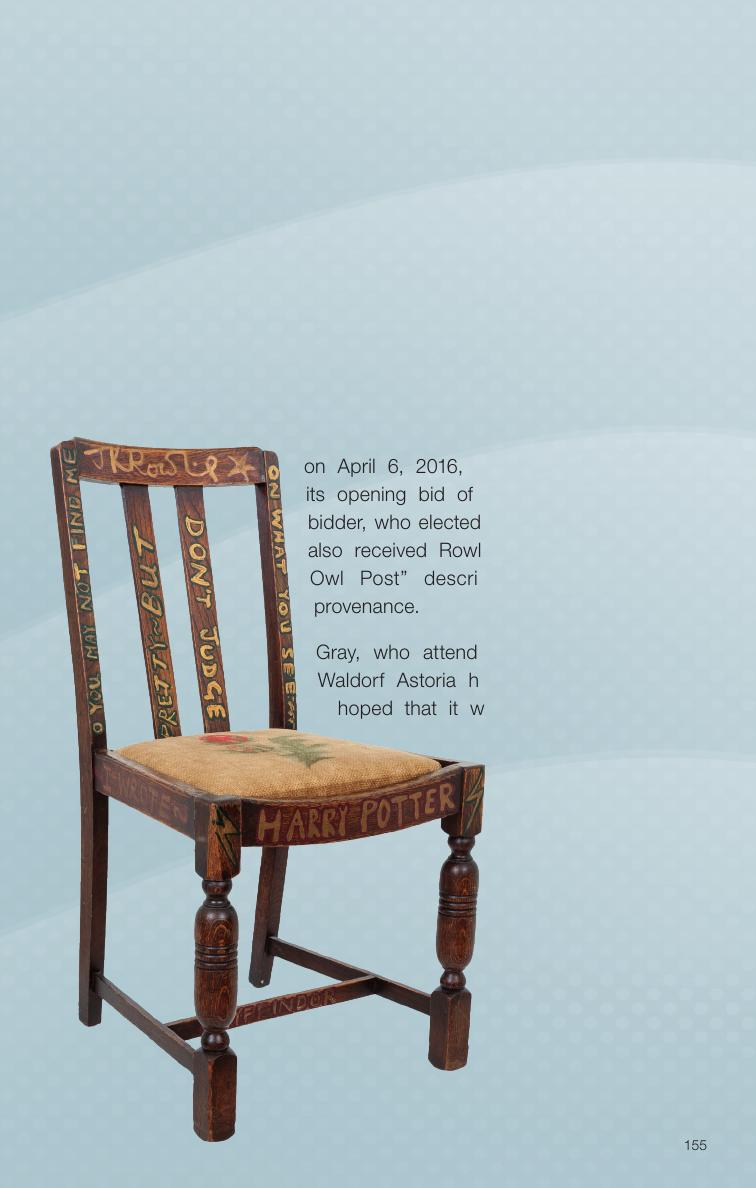
155
Heritage shared the story with media outlets around the world, a physical
object representative of a woman’s against-all-odds struggle to share
her creative vision. In a letter accompanying the chair, Rowling said, “My
nostalgic side is quite sad to see it go, but my back isn’t.”
As part of Heritage Auction’s global public relations campaign, the
chair went on display at its Park Avenue, New York, office on a custom
rotating platform. For weeks, families posed for photos with what is
arguably the most important piece of Harry Potter memorabilia that
exists. The $394,000 it brought at Heritage
on April 6, 2016, was many multiples of
its opening bid of $45,000. The winning
bidder, who elected to remain anonymous,
also received Rowling’s signed letter “by
Owl Post” describing the history and
provenance.
Gray, who attended the auction at the
Waldorf Astoria hotel in New York City
hoped that it would eventually go on
display where fans
could appreciate it.
But even if it stays in
a private collection,
through extensive
marketing, Heritage
was able to share the
story of this magical
chair with millions of
Harry Potter fans.
Chair Used by J.K. Rowling
whilst Writing the First Two
Harry Potter Books, Later
Hand-Painted and Signed by
Rowling Herself.
Sold for $394,000 | April 2016

156
• Do you already have a “feedback” rating that will give you
credibility with the bidder base? Many Internet auction bidders are
concerned about online deal-making with people they don’t know.
The equalizer is the feedback system that lets buyers and sellers
build online reputations. If you don’t have a feedback rating, many
bidders will avoid your auctions altogether and others will bid less.
• Do you have the equipment and skill to create digital images of the
articles to be auctioned? Items without high-quality images just
don’t sell as well. For quality coin photography, you’ll need a digital
camera and the knowledge to upload those photos.
• Do you have the skills to write descriptions for each item? Do you
know enough about the piece—and how to grade condition—to
describe it? Auction bidders are best motivated when a “story” is
available to make the collectible more interesting. The visual image
and description provide the combination that maximizes an Internet
auction’s results.
• Do you have the business skills to analyze potential problem
situations? Can you collect a bad check or determine whether a
“special request” from a customer is legitimate or a scam? Most
of the people on the Internet are honest, but there are exceptions.
Unfortunately, it doesn’t take many bad deals to turn a profitable
situation into a loss.
• Do you have the knowledge and resources to ship high-dollar
packages to 100 different people? It takes a thorough knowledge
of postal regulations and requirements, a considerable amount of
shipping materials and insurance, and a great deal of organization
and time.
• Do you really want to sell collectibles that might have upside
potential in an Internet-only venue? More to the point, are you able
to ascertain which pieces might have that upside potential?
We routinely advise would-be consignors to list certain items on eBay:
Hummel figurines, common post-1970 baseball cards, and small
quantities of items that aren’t rare enough to justify a consignment
to a full-service auction house. But for high-value items that require
specialized marketing or a seller with credibility in the field, we aren’t
shy about saying it: auctions are the way to go.
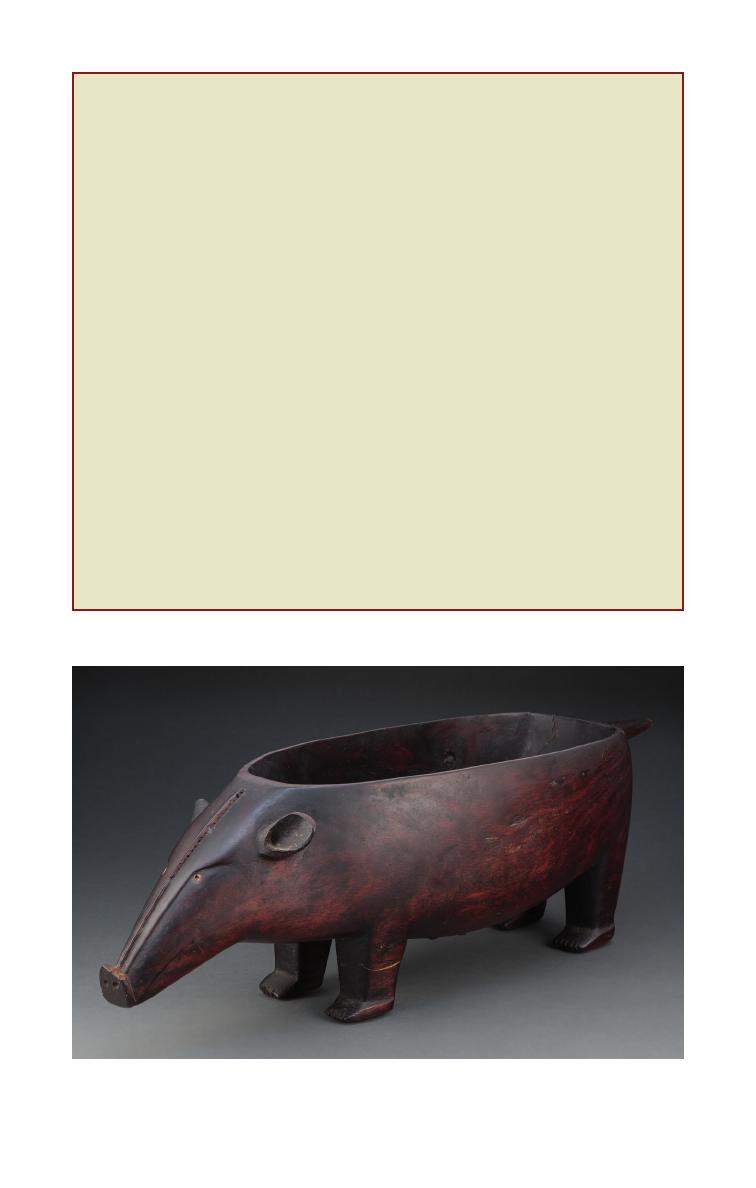
157
TIPS FOR HEIRS: A major auction can be the best option
for heirs faced with the disposition of a valuable collection,
particularly if you have little or no knowledge of collectibles and
are concerned about receiving fair value. In this scenario, the
auctioneer is working on percentage, and your best interests and
theirs are the same: the more money you make, the more money
they make. Additionally, the values will be established by third
parties in the competitive bidding process. The real benefit of
engaging a major auction house is its versatility.
Summing up all of the methods of disposition, certain collectibles
are better suited for one method, while others would benefit
more from a different venue. A major company should be
willing to recommend the best venue for each of your pieces
and divide the collection to your best advantage. Just be sure
to ask. Heritage’s Trusts & Estates Department assists in just
such situations and can coordinate the sale of an estate through
various venues and categories of property – HA.com/Estates.
An Impressive Santa Cruz Islands Feast Bowl
Solomon Islands, c. late 19th to early 20th century
Sold for $68,750 | June 2023
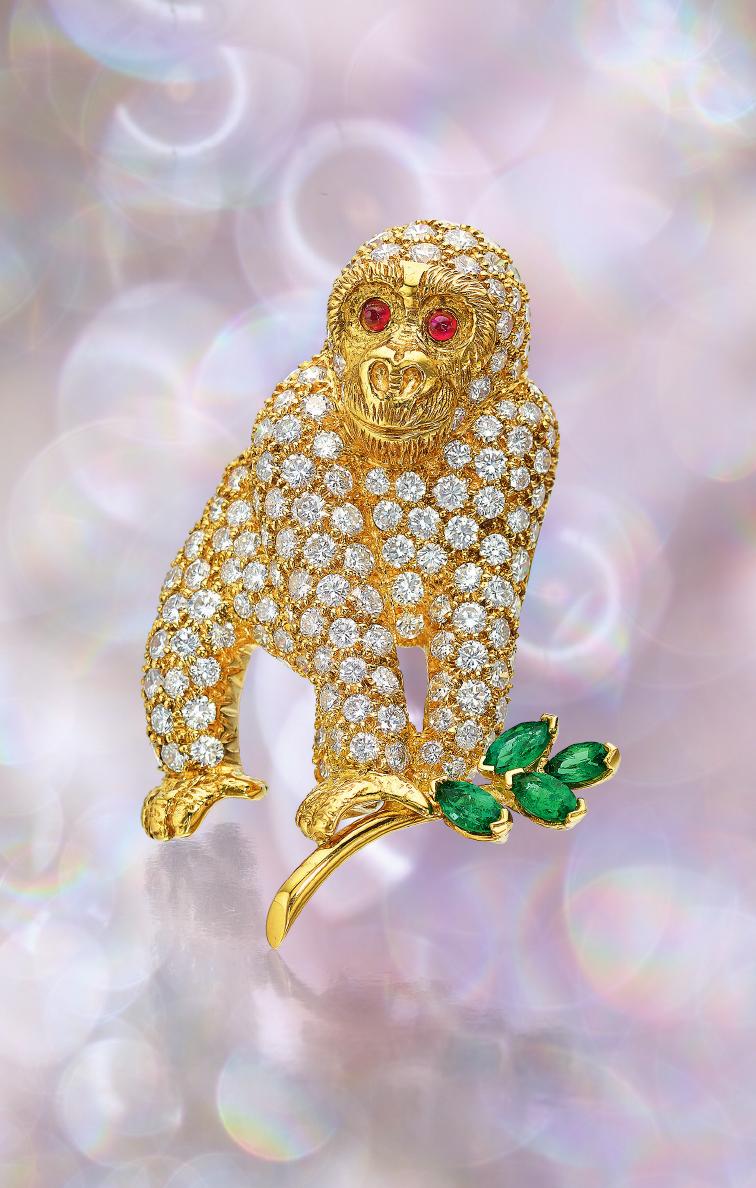
158
Oscar Heyman Diamond, Ruby, Emerald, Gold Brooch
Sold for $40,000 | December 2021
Property from the Estate of Kittie West Nelson Ferguson

159
Etiquette & Tips
“Tact is one of the first mental virtues, the absence
of it is fatal to the best talent.” – William Gilmore Simms
“Etiquette means behaving yourself a little better
than is absolutely essential.” – Will Cuppy
14
T
he purpose of this book is to help you plan for the future and, if you
wish, to help you dispose of your collection without being taken
advantage of by the government, dealers or other collectors.
It is reasonable to assume that you want to receive as much money
for your collection as possible. Similarly, it is reasonable to believe that
potential buyers would want to pay the least amount they can. The one
thing that is absolutely certain is that everyone else will maximize his or
her own interests. You should, too.
There are certain rules of etiquette within any collectibles community.
The first premise is the division of roles. If you present yourself as
a dealer, you are automatically responsible for all your actions and
decisions in the arena of that collectible. That means if you make a
mistake, you live with it. It also imparts a certain level of responsibility
toward those who are not dealers. Dealers trade with each other at
wholesale levels, in part because they communicate in the same form
of verbal shorthand that assumes a level of expertise. A collectible is
presented, offered, inspected and purchased (or not) without fanfare,
and the principals move on to the next deal.
Conversely, many collectors ask a lot of questions (and rightly so),
are nervous about their acquisitions, and return a portion of those
purchases after the sale. In return for this extra “maintenance,” dealers
charge collectors more and pay them less than they would another
dealer. It is the way of the business, and perfectly justifiable, as there
have to be both retail and wholesale levels for any market to function.
Naturally, most collectors would like to purchase at wholesale, and
occasionally, they are awarded that opportunity. Usually, the key to this

160
is demonstrating a familiarity with wholesale market levels, negotiating
pleasantly and well, and asking only pertinent questions.
The same is true on the selling side. If you give others the impression
that you know what you are doing, you will receive the best bid or
options the first time around. We recommend, however, that you do not
present yourself as a dealer. Some collectors claim to be “vest pocket”
dealers in hopes of receiving higher offers. Usually, this backfires, as
the dealer then feels relieved of any obligation he may have to point out
to you unrecognized rarities. Be upfront, but be competent.
As a non-professional, you should be able to expect:
• An appointment to allow sufficient time to evaluate your collection.
• Financial and industry references at your request (and you should
request them).
• Professional treatment of you and your collection, and quality
security.
• You should request (prior) that any items bid at $1,000 or more
be identified singly and that any article that would benefit from
certification be listed.
• A written offer presented in a timely manner. The offer should be
dated and any deadline noted.
• If the company has an auction house as well, and you request it,
recommendations on which collectibles are better suited for auction
or direct sale should also be listed.
• Prompt payment in good funds if the offer is accepted. If the
collection is sold at auction, payment in good funds on the settlement
date as promised.
The dealer has a right to expect certain conduct from you as well:
• That you keep any scheduled appointment and are prompt. This
applies to the dealer and their staff as well.
• The collection should be as organized as possible to minimize the
time necessary to evaluate and bid on it. Even a basic inventory

161
indicating the location of each item is helpful. If the collection
lends itself to grouping, this should be done beforehand. If one
group out of the collection contains most of the “value,” it can be
presented separately.
• You should not “shop” the dealer’s offer to other dealers. It’s okay
to tell each bidder that other bids are being sought, but you should
neither reveal what the other bids are, nor the details of who is
bidding. Shopping an offer for a few more dollars is strictly “bush
league,” and it can definitely backfire. For example, if your first bidder
did not make a strong bid and you reveal the number, the second
bidder may play the competition instead of the real value and you will
come up short. Similarly, if you reveal the identity of those you plan to
see, the bidders could collude with one another to your disadvantage.
Remember, the aura of unknown competition is the strongest
leverage you have to inspire dealers to figure the deal closely and
make their best bids.
• You should tell the dealer “yes” or “no” in a reasonable amount of
time, and that applies even if you accept another bid. It would be
considerate for you to let them know the winning bid. They can
learn from the experience and not feel that their time was wasted.
That can be to your advantage as well, because if you bring back
more collectibles for them to bid, they should both appreciate your
professionalism and bid higher the next time.
Above all, you should both expect and extend courtesy. Do not waste
time with a dealer who is discourteous, nor waste time responding.
Ask and answer questions, but beware of becoming agitated, even if
you disagree with something you hear. Your mission is to obtain the
greatest possible price for your collection. To accomplish this, it is
usually best to reserve judgment until all of the information has been
gathered. The very person you disagreed with may be the highest
overall bidder.
One final option for selling: Occasionally people ask us why they
shouldn’t dispose of their collectibles to, or through, another collector.
The premise is that the collector would pay more and the playing field
would be more level. There is some general merit to those statements,
but there are some caveats as well:
• A collector will pay more for some items, but will rarely pay more for
all of them. Take care that you don’t receive a little more for the best

162
few pieces of your collection only to find that there are no buyers for
the less favorable material.
• Being a collector in and of itself is no guarantee that the individual
you contact is any more or less knowledgeable or ethical than a
dealer. In general, dealers are better-informed on current market
conditions, upgrade potential and the reputations of potential buyers.
We know of at least one situation where a collector acquaintance
sold a collection for heirs, only to take a bad check from the buyer.
That individual was well known as a “bad egg” by the dealer
community, but the collector/agent was totally unaware. It took
more than a year and considerable expense for the heirs to collect a
fraction of the amount owed.
• As an agent, the collector is less likely to have insurance coverage for
your collection while in their care. If you use a collector, don’t forget
to verify this just as you would with a dealer.
• Most importantly, few collectors will truly be interested in acquiring
everything you have—and if they are willing to buy in bulk from you, it
will likely only be because they are interested in getting a great deal.
The bottom line is that you should qualify a collector in the same
manner as you would a dealer. Although collectors may have good
intentions, a major collection should be sold only with the assistance
of a qualified professional. It is unwise to rely on a part-time hobbyist
to dispose of a major financial asset; a better approach is to use an
auction to let that collector bid against tens of thousands of similar
hobbyists.
Heir Relations
The final issues of etiquette are the relationships between collectors
and their heirs, and between the heirs themselves. Collectors, as the
owners, have all the rights and responsibilities for the collection in their
lifetimes, and can provide as much or as little guidance as they please.
Any guidance is better than no guidance. Even if few of the heirs have
any interest in the collectibles, a general understanding goes a long
way towards familial harmony. The collectors should identify and detail
any specific bequests they wish to make. “Dad split them up that way
in the will” is a lot more powerful than “I’m sure Dad wanted me to have
this one.”
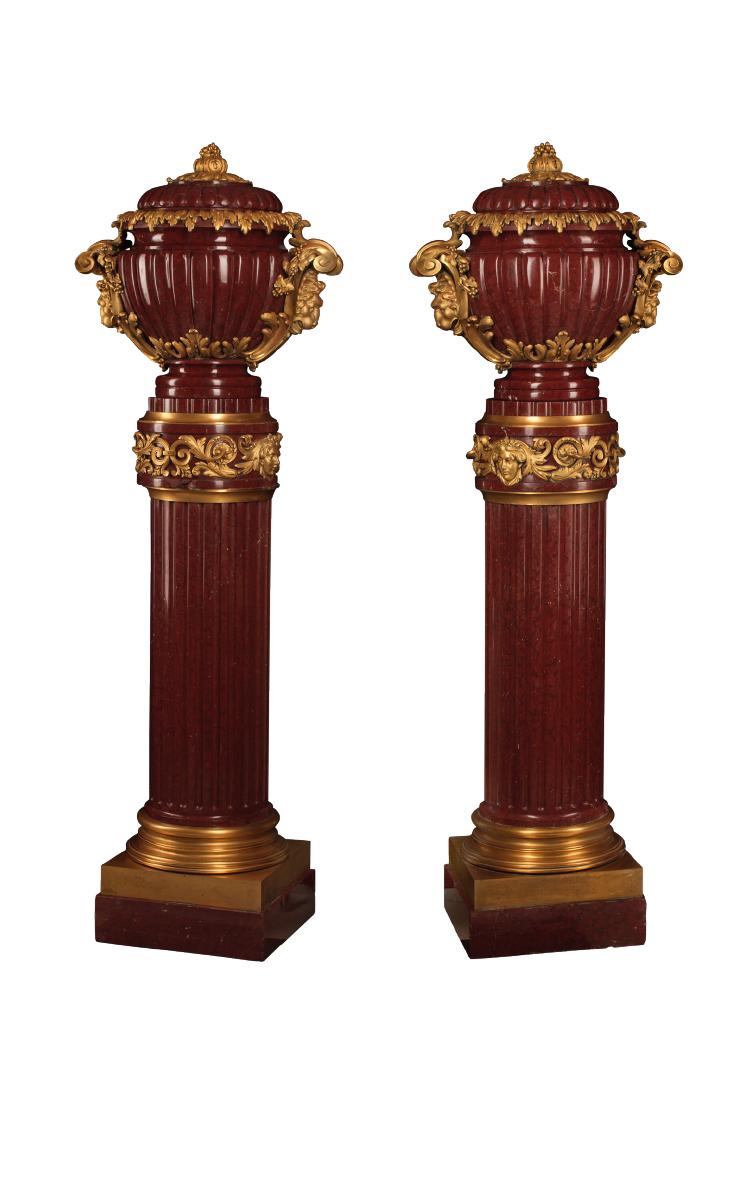
163
A Pair of French Napoleon III Gilt Bronze Mounted Covered Urns
on Fluted Rouge Marble Columns, 19th century
Sold for $106,250 | August 2021
Property from the Estate of Phyllis McGuire, Las Vegas, Nevada

164
Similarly, the collector should indicate who should be contacted to
help dispose of the collection—and who should not. It’s amazing how
many “old friends” can appear after the death of a known collector.
The executor or trustee, whether he or she is a family member or not,
should be advised of all these details.
Heirs should remember that the other heirs are also probably under a
great deal of stress—so try to give everyone the benefit of the doubt.
We like to think that family is the most important thing, so here are
some tips to avoid controversy if the collection needs to be sold or
disposed of equitably when specific guidance was not provided by
the deceased:
• Leave the division to a third party. If the collection is not to be sold,
have the appraiser separate the inventory into the appropriate number
of groups by value.
• If one or more heirs want specific pieces, have the appraiser value
those individually and if the remainder of the collection is sold, use
those amounts to adjust shares accordingly.
• If the collection is to be disposed of, but each heir wants “something”
to remember the deceased by, determine the dollar value that you
want to set aside and have each heir “buy” the collectibles they want
at the appraised price.
• In all cases, remember to keep things in perspective. The collection
once provided a great deal of pleasure to your loved one, and try to
let its legacy reflect that.
The preparation of this handbook has been a labor of love, though
by no means easy. There are two main reader groups that have been
targeted by this treatise, neither of whom should be overjoyed by
the implications of having to read through it. If you are a collector,
the thought of estate planning may make you look closer at your
own mortality. If you are an heir or possible heir of a collector,
contemplating a loved one’s mortality is probably no more enjoyable.
We would take more pleasure in relating a more upbeat subject, but
we will be satisfied if this handbook has made it a little easier for you to
address a very difficult task.

165
G. (Gerald Harvey Jones) Harvey (American, 1933-2017)
When Cowboys Don’t Change, 1993
Oil on canvas
40 x 60 inches
Sold for $516,500 | November 2018
WORLD AUCTION RECORD FOR THE ARTIST
We offer, in closing, this final guidance regardless of your circumstance
or role:
1. Determine your goal.
2. Know your options.
3. Analyze them and pick the best course of action for you.
4. Make a plan.
5. If you need assistance, choose it carefully.
6. Above all, remain flexible and don’t be afraid to adjust your
plan as you go along.
7. Form a team of the best advisors available and pay the price
now rather than later.
Good luck!

166
Story
Jim Halperin is the co-founder and co-chairman of
Heritage Auctions. He formed his first rare coin business
at the age of 16, then dropped out of Harvard in
December 1971 to pursue a career in numismatics. He
also is the author of two bestselling futurist novels, and
endows The James & Gayle Halperin Foundation,
which supports health and education-related charities.
You can view his personal collections at: www.jhalpe.com.
Even though I callously had disappointed my dad by deciding not to
graduate from his alma mater, he remained steadfastly supportive. By
1975, at age 22, I was ready to computerize my growing coin business
in Framingham, Massachusetts, and my dad, who at the time was 49
years old and had sold his own successful manufacturing business a
decade earlier, offered to come in part-time and help me. I jumped at
the offer. Together we set up the first full-fledged computer system in the
coin business, an IBM 360 mainframe, and when we were finished, he
had an idea — a sort of parting gift soon before he and my mom would
begin spending most of their time in Florida.
My dad’s idea was to set up a rare coin fund; he would recruit investors
to buy shares in a limited partnership, and I would use the money to
buy coins, store them in a safe deposit box, wait a few years, and then
sell them at auction. Using his many contacts — and cold-calling on,
among others, Fidelity Investments founder Ned Johnson, who invested
$30,000 on the spot — he quickly raised $375,000. We called it the
New England Rare Coin Fund. Now all I had to do was buy the coins.
Having worked in the business since I was 16, I spent about 18 months
slowly acquiring high-grade American rarities because I knew that those
were the coins that sold the fastest whenever we had them available. I
bought only specimens that I would have loved to own but couldn’t have
otherwise afforded to keep in inventory.
Jim Halperin’s

167
The economy had been in a moderate recovery when I’d bought the
coins, but when it was time to sell a few years later, the timing could
not have been better. By 1980, the Iran hostage crisis was under
way, inflation had soared to 13.5 percent, and bank failures were
heading toward the highest levels seen since the Great Depression.
Unemployment was over 7 percent. Investors — from hedge funds
to retirees — were seeking scarce physical objects unencumbered
by complex financing arrangements, with aesthetic and historical
significance that no oil crisis could ever taint.
When the collection was sold at auction in April of 1980, our investors
in attendance stared in disbelief. Those same coins generated more
than $2.15 million and, after all commissions, expenses and fees, every
investor who put in $15,000 got back more than $69,000. This, at a time
when they had been watching most or all of their other investments tank.
The profits from our little coin fund rescued businesses, saved homes,
and even helped a couple of our investors avoid filing bankruptcy.
I was now 27 years old, and the experience would help me develop
my own philosophy about investments — and the importance of
owning a portfolio that Nassim Nicholas Taleb, the internationally
bestselling author/hedge fund manager/philosopher, has recently
termed “antifragile.” That is, a basket that encompasses a diversity of
assets, including some that are debt-free and likely to gain in value just
as the world around them is collapsing.
Of course, there are many ways to diversify assets — but including
some treasures that provide their owners with joy and beauty is, for my
money, one of the best.
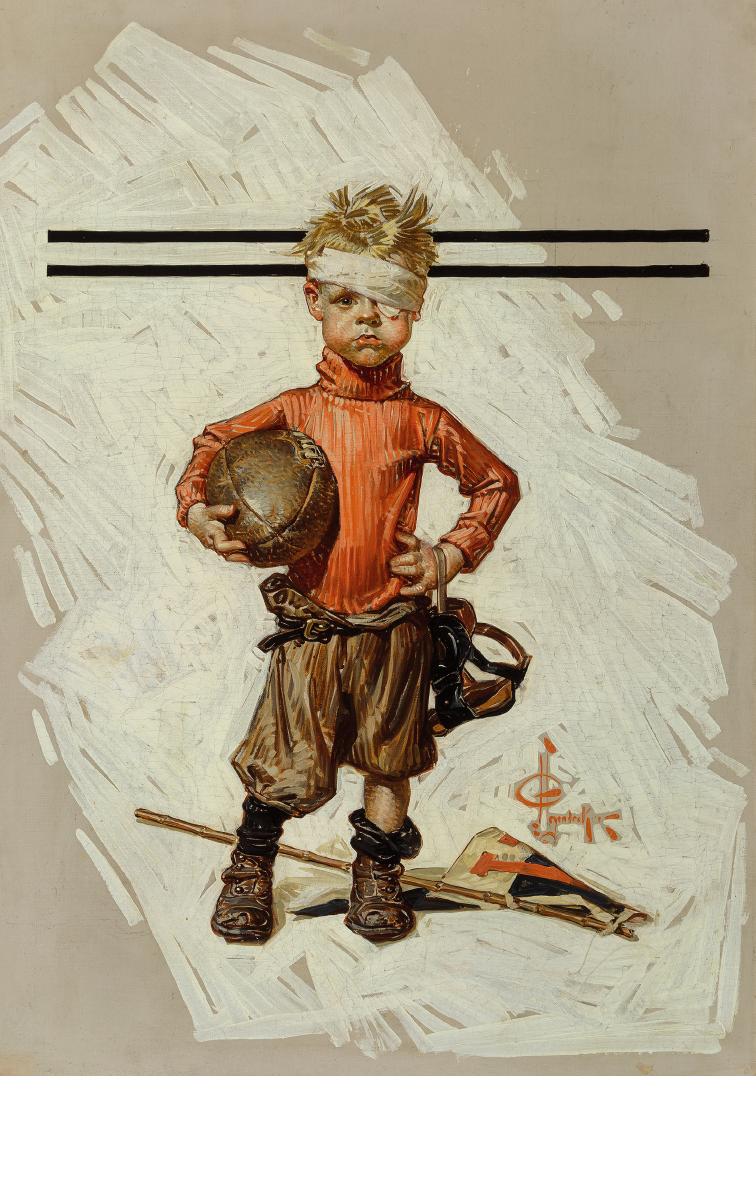
168
Joseph Christian Leyendecker (American, 1874-1951)
Beat-up Boy, Football Hero, The Saturday Evening Post cover, November 21, 1914
Sold for $4,121,250 | May 2021

169
APPENDICES

170
APPENDIX A
ORGANIZATIONS FOR COLLECTORS
Autographs
Universal Autograph Collectors Club
UACC P.O. Box 1392
Mount Dora, FL 32756
uacc.org
Founded in 1965, this non-profit organization publishes a quarterly journal and
offers information on authentication and recommended dealers, and a list of
dealers it recommends consumers avoid.
Coins
American Numismatic Association (ANA)
818 North Cascade Avenue
Colorado Springs, CO 80903
719-632-2646
E-mail: ana@money.org
money.org
The American Numismatic Association is the country’s largest collector
organization for coins and related items. Formed in 1891, the ANA offers
extensive educational programs and a monthly magazine, The Numismatist.
Its Colorado Springs headquarters features a first-rate museum and library
that are available to members and non- members alike. The ANA offers
renowned summer seminars on a number of numismatic subjects and holds
two conventions annually. These shows offer 250 to 500 bourse tables and
significant auctions. The annual convention auction (held in July or August) is
frequently the highest-grossing auction sale of the year.
Professional Numismatists Guild (PNG)
28441 Rancho California Rd., Suite 106
Temecula, CA 92590
951-587-8300
E-mail: info@pngdealers.com
pngdealers.com
The Professional Numismatists Guild is the preeminent dealer group in
the coin industry. Formed in 1955 with the motto, “Knowledge, Integrity,
Responsibility,” the PNG accepts members only after stringent background
and financial investigations, and a vote of the entire membership. Members
agree to uphold a strict code of ethics and to resolve any complaints
against them through binding PNG arbitration. A list of PNG dealers is
available from the organization.
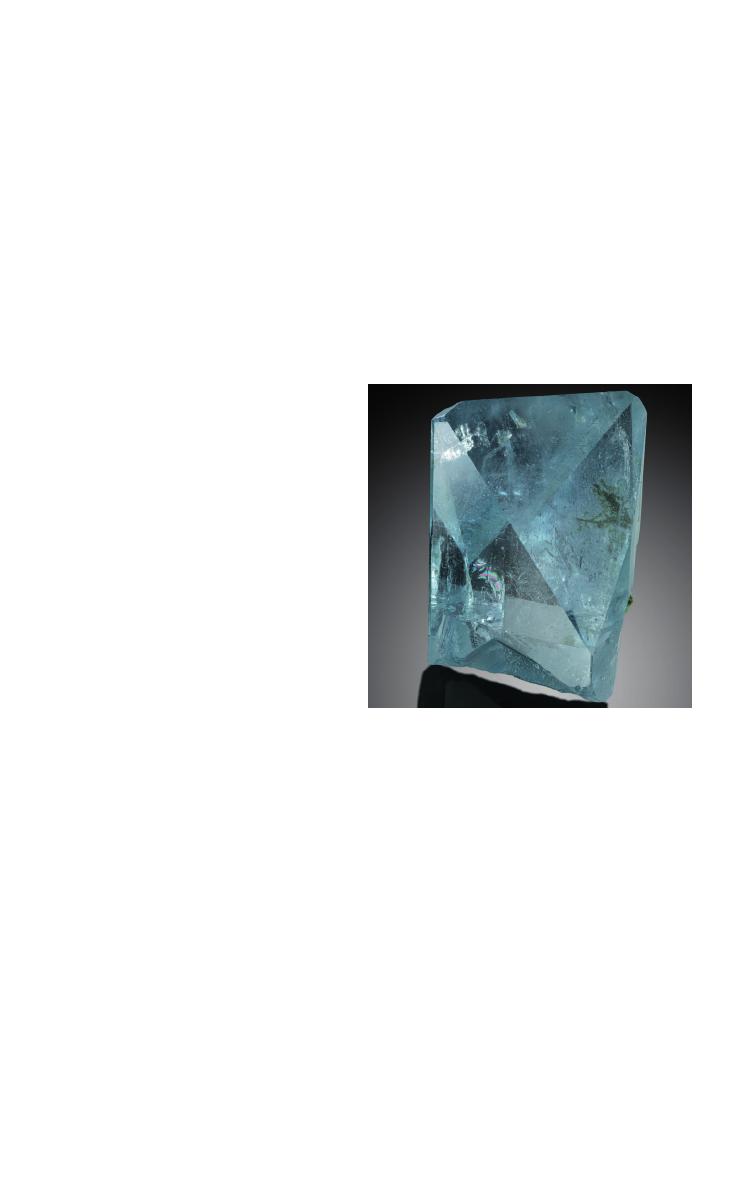
171
American Numismatic Society (ANS)
75 Varick Street, 11th floor
New York, NY 10013
212 571 4470
E-mail: info@amnumsoc.org
amnumsoc.org
The American Numismatic Society was founded in 1858, and is dedicated
to the serious study of numismatic items. To that end, it has an extensive
research library and world-class collections, and provides members and
visiting scholars with a broad selection of publications, topical meetings
and symposia, fellowships and grants, honors and awards, and various
educational projects.
Minerals
The Mineralogical Society of
America
3635 Concorde Pkwy Suite 500
Chantilly, VA 20151-1110
703-652-9950
Email: [email protected]g;
minsocam.org
It’s not Heritage’s biggest or best-
known category—but it’s pretty cool:
minerals and meteorites. Individual
pieces in our past minerals sales
have sold for more than half a million
dollars. The Mineralogical Society
of America, foundedin 1919, offers
magazines, books, and educational
programs for the general public.
Stamps
American Philatelic Society (APS)
100 Match Factory Place
Bellefonte, PA 16823
814-933-3803
E-mail: webmaster@stamps.org;
stamps.org
The American Philatelic Society was founded in 1886 and offers members
a monthly magazine, an authentication service, educational opportunities,
and much more. Through a partnership with Hugh Wood, Inc. and The
Chubb Group of Insurance Companies, it also offers a service for insuring
stamp collections.
Topaz
Xanda Mine, Virgem da Lapa
Minas Gerais, Brazil
Sold for $200,000 | August 2019

172
APPENDIX B
INSURANCE COMPANIES OFFERING SPECIALIZED
COVERAGE FOR COLLECTORS
COLLECTIBLE AND NUMISMATIC COVERAGE
Cleland & Associates
3419 Westminster Ave. #301G
Dallas, TX 75205
409-766-7101
Contact: Richard Cleland
coininsurance.com
North American Collectibles
Association
3002 Hempland Rd. Suite B
Lancaster, PA 17601-1362
800-685-6746
Contact: Barbara Wingo
nacacollectors.com
Hugh Wood, Inc.
(American Agent for
Lloyds of London)
One Exchange Plaza
55 Broadway, 24th Floor
New York, NY 10006
212-509-3777
Contact: Jack Fisher
hughwood.com
SEARCH EACH OF THESE NATIONAL WEBSITES
FOR AN AGENT OR BROKER NEAREST YOU
American International Group
(formerly Chartis)
Private Client Group
aigpcg.com
AXA Art Insurance
212-415-8400
axa-art.com
Chubb Group
of Insurance Companies
866-324-8222
chubb.com
Huntington T. Block
Insurance Agency
800-424-8830
huntingtontblock.com
Pure Insurance
888-813-7873
pureinsurance.com
Marsh Private Client Services
pcs.marsh.com
Dale Chihuly (American, b. 1941)
Cobalt Macchia with Huckleberry Lip
Wrap, 2003
Blown Glass
16-1/2 x 35 x 31 inches
Sold for $37,500 September 2021
Property from the Estate of Richard L.
Weisman, Beverly Hills, California
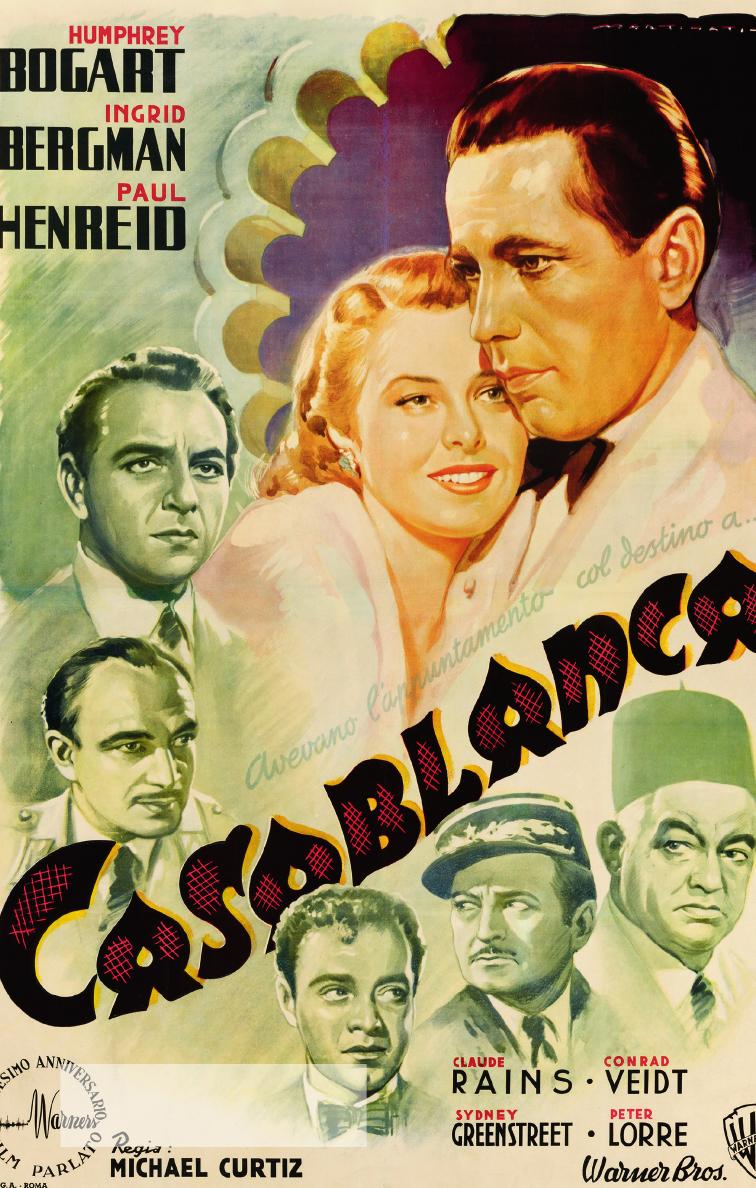
173
Casablanca (Warner Brothers, 1946).
First Post-War Release Italian 4 – Fogli
(55.5” X 78.25”) Luigi Martinati Artwork.
Sold for $478,000 | July 2017

174
APPENDIX C
THIRD-PARTY GRADING SERVICES
BASEBALL CARDS
Sportscard Guaranty Corporation
(SGC)
951 Yamato Rd, Suite 110
Boca Raton, FL 33431
800-SGC-9212
973-984-0018
sgccard.com/grading-fees
Professional Sports Authenticator
(PSA)
P.O. Box 6180
Newport Beach, CA 92658
800-325-1121,
949-833-8824
Email: info@psacard.com
Beckett Grading Services (BGS)
beckett.com/grading
COINS
Numismatic Guaranty Corporation
of America (NGC)
P.O. Box 4776
Sarasota, FL 34230
800-NGC-COIN
941-360-3990
ngccoin.com
ANACS
P.P.O. B ox 6 0 0 0
Englewood, CO 80155
800-888-1861
anacs.com
Professional Coin Grading Service
(PCGS)
P.O. Box 9458
Newport Beach, CA 92658
800-447-8848
949-833-0600
pcgs.com
COINS NEEDING CLEANING
OR CONSERVATION
Numismatic Conservation Services
(NCS)
P.O. Box 4750
Sarasota, FL 34230
1-866-627-2646
1-941-360-3996
ncscoin.com
COMICS
Comics Guaranty Corporation
(CGC)
P.O. Box 4738
Sarasota, FL 34230
1-877-NM-COMIC
1-941-360-3991
FAX: 941-360-2558
cgccomics.com
CURRENCY
Paper Money Grading (PMG)
P.O. Box 4755
Sarasota, FL 34230
877-PMG-5570
941 309 1001
PMGnotes.com
PCGS Banknote
P.O. Box 9458
Newport Beach, CA 92658
800-447-8848
www.pcgs.com/banknote

175
APPENDIX D
SELECTED PUBLICATIONS FOR COLLECTORS
Artwork & Paper Collectibles
How to Care for Works of Art on Paper,
by Francis W. Dolloff and Roy L. Perkinson
Conservation Concerns: A Guide for Collectors and Curators, by Konstanze
Bachmann, Dianne Pilgrim
Caring for Your Art, by Jill Snyder, Joseph Montague, Maria Reidelbach
Baseball Cards
The Official Price Guide to Baseball Cards, by James Beckett
Books & Manuscripts
Antiquarian Booksellers Association of American (ABAA.org) posts links
to member-published books and articles on collecting Rare Books and
Manuscripts
How to Identify and Collect American First Editions, Arco Publishing, New York
(1976) – (out of print; you’ll probably have to find a rare copy)
We also recommend: ABEBooks.com as a source of books on the Internet
Coins
The New York Times Guide to Coin Collecting: Do’s, Don’ts, Facts, Myths, and
a Wealth of History, by Ed Reiter
How to Grade U.S. Coins, by James L. Halperin
A Guide Book of United States Coins, by R. S. Yeoman
The Standard Catalog of World Coins, by Chester Krause & Clifford Mishler
Comics
The Official Overstreet Comic Book Price Guide, by Robert M. Overstreet
(available digitally at HeritageComics.com)
Furniture
The Bulfinch Anatomy of Antique Furniture: An Illustrated Guide to Identifying
Period, Detail, and Design, by Tim Forrest, Paul Atterbury
American Antique Furniture: A Book for Amateurs,
Vol. 1., by Jr. Edgar G. Miller
Miller’s Collecting Furniture: Facts at Your Fingertips, by Christopher Payne

176
Guns
The Gun Digest Book of Modern Gun Values: For Modern Arms Made from
1900 to Present (16th Ed.), by Phillip Peterson
Standard Catalog of Military Firearms: The Collector’s Price and Reference
Guide (6h Ed.), by Phillip Peterson
Antique Guns: The Collector’s Guide, by John E. Traister
Jewelry
Signed Beauties of Costume Jewelry: Identification & Values, by Marcia
Sparkles Brown
Vintage Jewelry: A Price and Identification Guide, 1920 to 1940s,
by Leigh Leshner
Antique Trader Jewelry Price Guide, by Kyle Husfloen and Marion Cohen
Paintings & Sculpture
AskART.com
ArtNet.com
Toys
Official Hake’s Price Guide to Character Toys, by Ted Hake
Cartoon Toys & Collectibles Identification and Value Guide, by David Longest
All Collectibles & Fine Arts
Maloney’s Antiques & Collectibles Resource Directory,
by David J. Maloney, Jr.
Warman’s Antiques & Collectibles 2016 Price Guide, by Noah Fleischer
For additional resources in all collector categories, please
visit our Resources list at HA.com, where we also invite
you to take our Collector Survey to qualify for free auction
catalogs and a drawing to win valuable prizes.
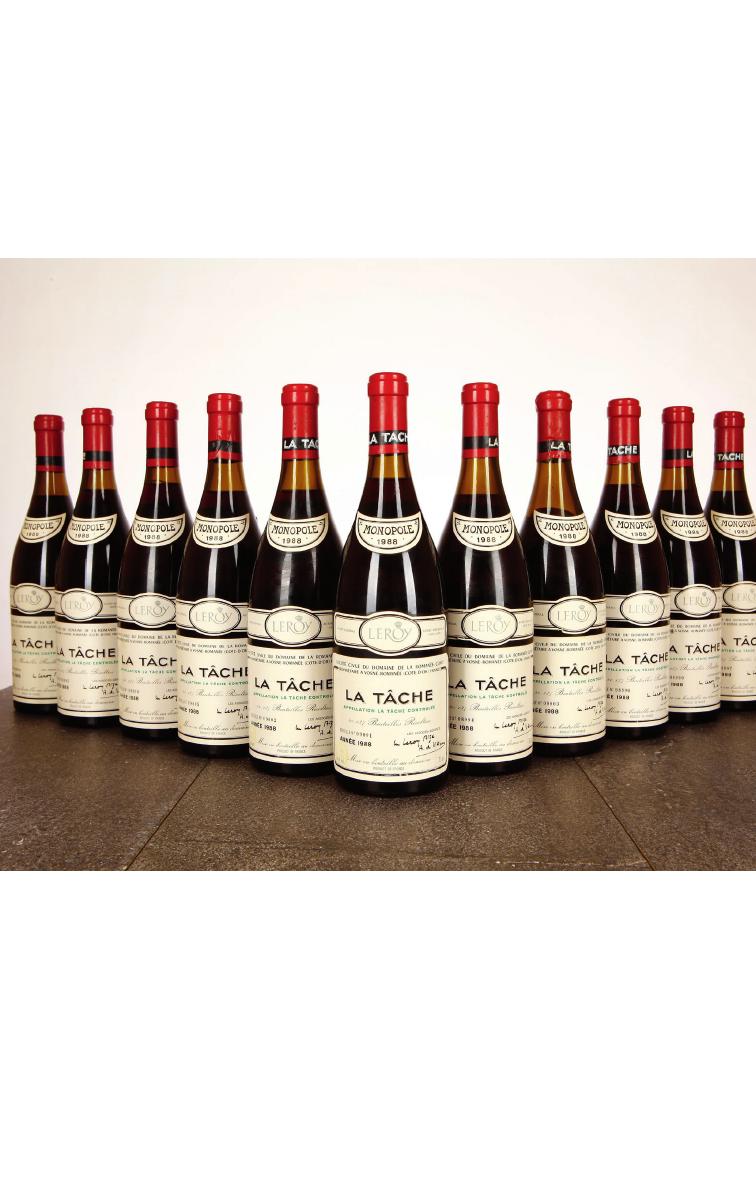
177
La Tache 1988
Domaine de la Romanee Conti
The Estate of a Pennsylvania Gentleman
Sold for $44,280 | September 2022

178
About the Authors
James L. Halperin
Born in Boston in 1952, Jim formed a part-time rare stamp and coin
business at age 16. The same year, he received early acceptance
to Harvard College. But by his third semester, Jim was enjoying the
coin business more than his studies, so he took a permanent leave
of absence to pursue a full-time numismatic career. In 1975, Jim
supervised the protocols for the first mainframe computer system in the numismatic
business, which would help catapult his firm to the top of the industry within four years.
In 1982, Jim’s business merged with that of his friend and former archrival Steve Ivy to
form Heritage. In 1984, Jim wrote a book later re-titled “How to Grade U.S. Coins”, which
outlined the grading standards upon which NGC and PCGS would later be based. Jim
is also a well-known futurist, an active collector of rare comic books, comic art and early
20th-century American art (view parts of his collection www.jhalpe.com), venture capital
investor, philanthropist (he endows a multimillion-dollar health education foundation), and
part-time novelist. His first fiction book, “The Truth Machine”, was published in 1996,
became an international science fiction bestseller, was optioned as a feature film by
Warner Brothers, and is now under development at Lions Gate. Jim’s second novel, “The
First Immortal”, was published in early 1998 and optioned as a Hallmark Hall of Fame
television miniseries. All of Jim’s royalties are donated to health and education charities.
Gregory J. Rohan
At the age of eight, Greg Rohan started collecting coins and by 1971,
at the age of 10, he was buying and selling coins from a dealer’s table
at trade shows in his hometown of Seattle. His business grew rapidly,
and in 1987, he joined Heritage as Executive Vice-President. Today,
as a partner and as President of Heritage, his responsibilities include
overseeing the firm’s private client group and working with top collectors in every field
in which Heritage is active. Greg has been involved with many of the rarest items and
most important collections handled by the firm, including the purchase and/or sale
of the Ed Trompeter Collection (the world’s largest numismatic purchase according
to the Guinness Book of World Records). During his career, Greg has handled more
than $1 billion of rare coins, collectibles and art. He has provided expert testimony
for the United States Attorneys in San Francisco, Dallas, and Philadelphia, and for the
Federal Trade Commission (FTC). He has worked with collectors, consignors, and their
advisors regarding significant collections of books, manuscripts, comics, currency,
jewelry, vintage movie posters, sports and entertainment memorabilia, decorative arts,
and fine art, to name just a few. Greg is a past Chapter Chairman for North Texas of
the Young Presidents’ Organization (YPO), and is an active supporter of the arts. Greg
co-authored “The Collectors Estate Handbook,” winner of the NLG’s Robert Friedberg
Award for numismatic book of the year. He previously served two terms on the seven-
person Advisory Board to the Federal Reserve Bank of Dallas.
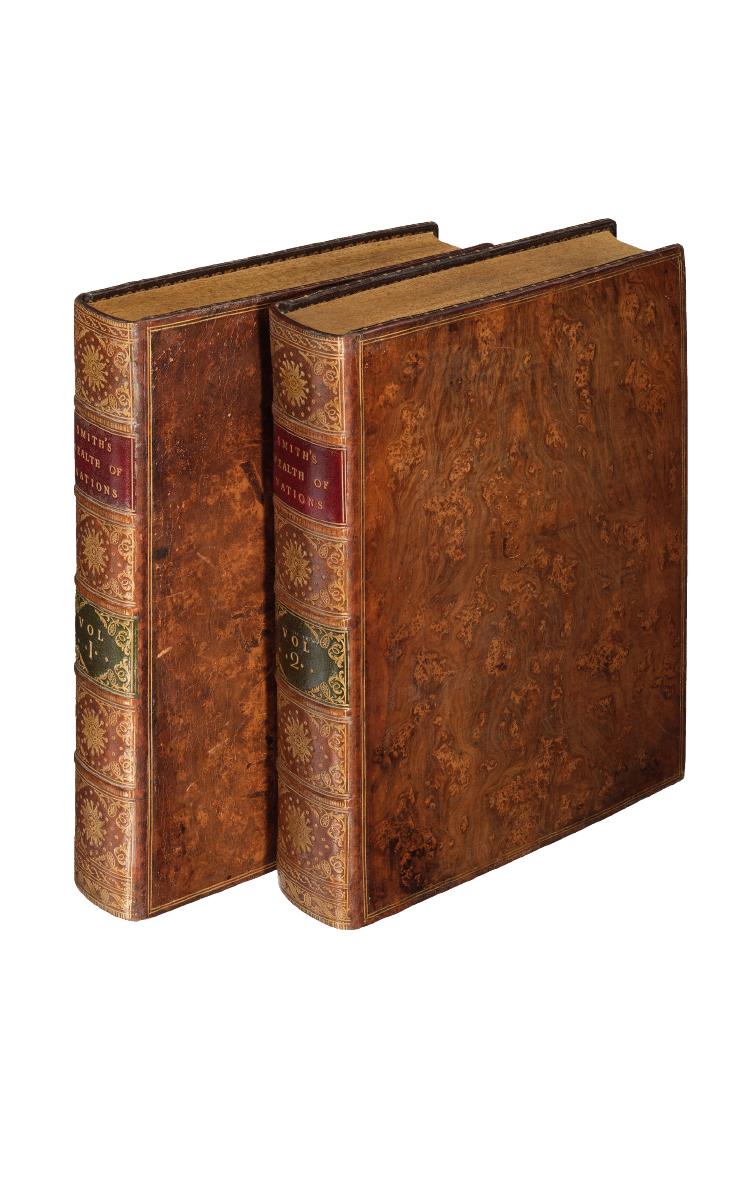
179
Adam Smith. An Inquiry into the Nature
and Causes of the Wealth of Nations.
Sold for $125,000 | July 2022

180
Dallas - World Headquarters
Beverly Hills
Chicago
London
New York
Amsterdam
Hong Kong
Palm Beach Brussels

181
About Heritage Auctions
Founded in 1976, Heritage Auctions is America’s auction house and the
world’s largest collectibles auctioneer with annual topping $1.45 billion in
both 2021 and 2022. Heritage clients enjoy unprecedented access to 1.75
million+ online bidder members and unparalleled standards of honesty and
transparency as well as the latest advancements in technology via HA.com.
Through 50+ categories – from U.S. and foreign coins to fine art and now
luxury real estate auctions – Heritage Auctions offers a broad range of services
for high net worth collectors, investors and fiduciaries from offices in Dallas,
New York, Beverly Hills, Chicago, Palm Beach, London, Brussels, Paris,
Amsterdam and Hong Kong.
Heritage Auctions offers consignors an unmatched depth of expertise with
access to 6.1 million+ lots featured in Heritage Auctions’ free Auction Archives
and a network of 500+ specialist employees around the world.
We are always looking to acquire interesting items, whether through
consignment or by outright purchase, and we spend or disburse millions of
dollars every business day, on average, to keep our clients’ demands satisfied.
Find out why you should consign to a Heritage auction at HA.com/Consign.
Heritage Trusts & Estates Services
Individuals and collectors, as well as trustees, executors and fiduciaries
responsible for estate tangible property, can avail themselves of the best suite
of estate services anywhere, including authoritative estate appraisals, estate
planning assistance, auction services and private treaty sales.
Inquiries: Michelle Castro, Vice President, Trust & Estates,
214-409-1824 or 877-HERITAGE (437-4824) ext. 1824, MichelleC@HA.com
Heritage Auctions Appraisal Services, Inc.
Heritage offers the highest caliber of experts to evaluate and appraise your art
and collectibles. Working with our appraisal team, you will receive thorough,
illustrated appraisal reports written in compliance with all IRS, USPAP and
insurance standards. At competitive rates, a Heritage appraisal should be
considered for all Estate Tax, Charitable Donation, Insurance, Estate or
Financial Planning situations.
Inquiries: Carol Lee Pryor, Director of Appraisal Services,
214-409-1138 or 877-HERITAGE (437-4824) ext. 1138, CarolLeeP@HA.com
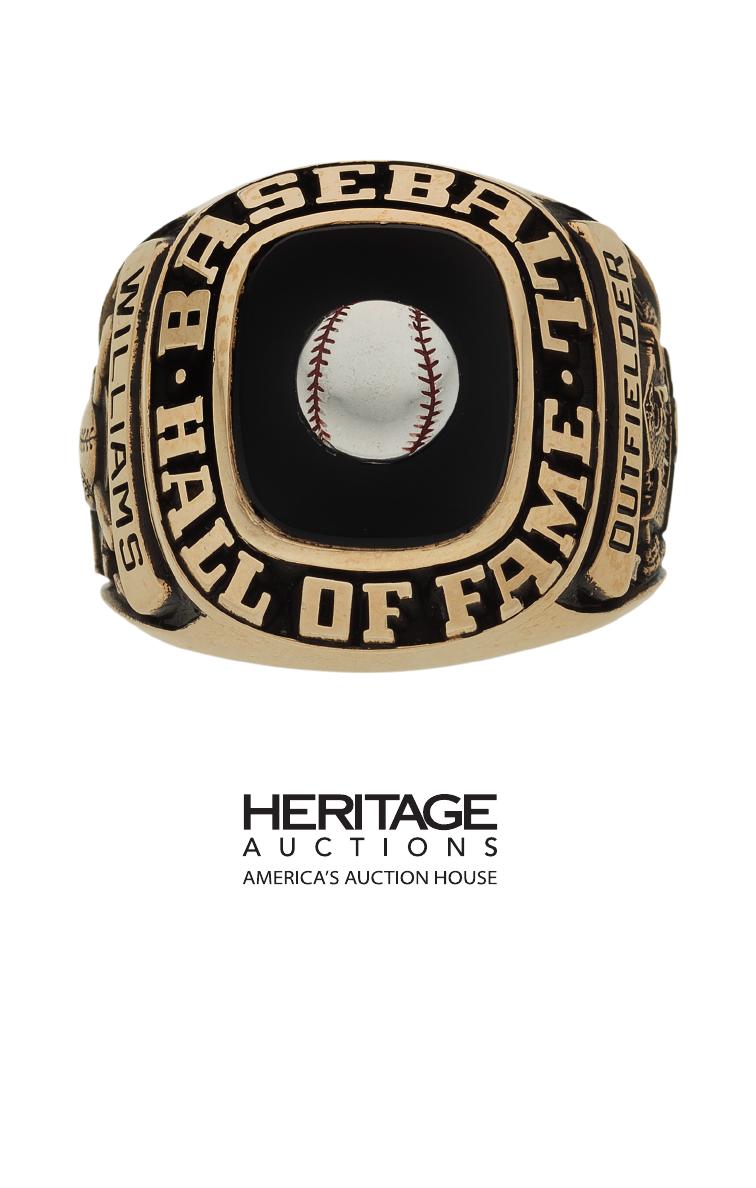
DALLAS | NEW YORK | BEVERLY HILLS | CHICAGO | PALM BEACH
LONDON | PARIS | BRUSSELS | AMSTERDAM | HONG KONG
Always Accepting Quality Consignments in 50+ Categories
1.75 Million+ Online Bidder-Members
Paul R. Minshull #16591. BP 15-25%; see HA.com 73164
1966 Baseball Hall of Fame Induction Ring Presented to Ted Williams.
Sold for $444,000 | May 2023
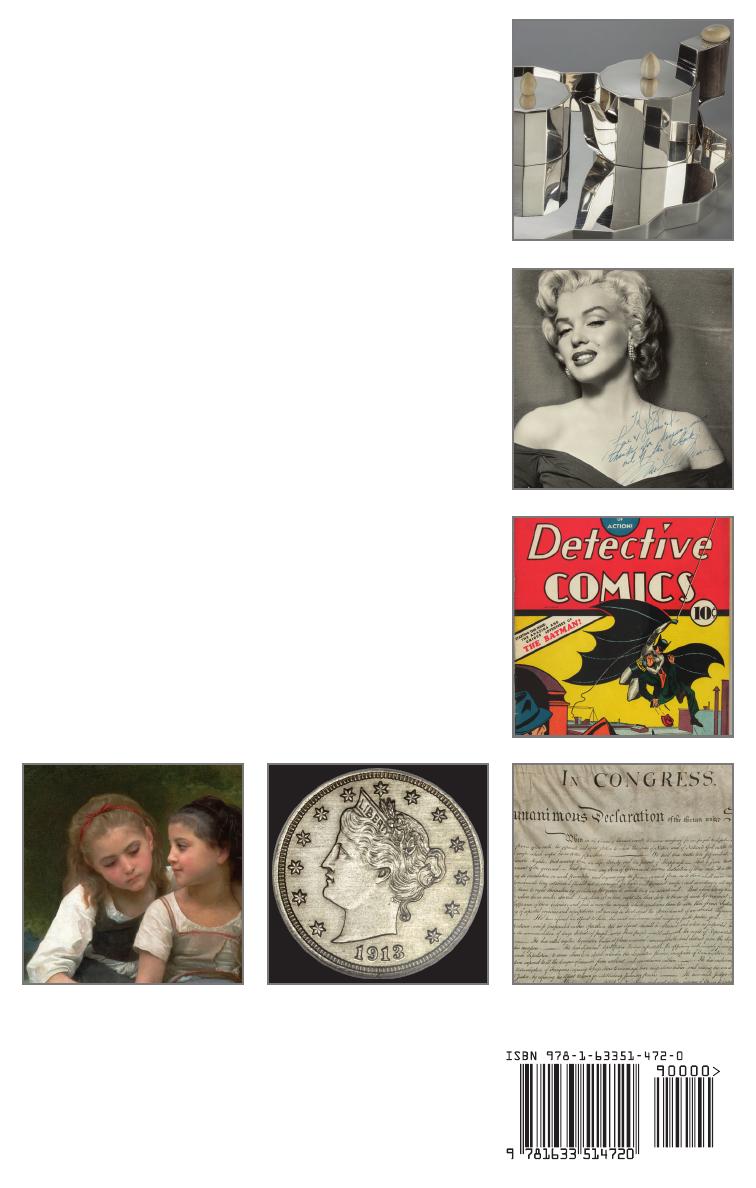
THE COLLECTOR’S HANDBOOK
73164
Tax Planning, Strategy and Estate
Advice for Collectors and Their Heirs.
As a collector, you know your collection inside and
out. But do your potential heirs? In clear, practical
terms, industry veterans James L. Halperin and
Gregory J. Rohan provide you with invaluable
guidance on how to:
• Document your collection
• Safeguard your collection
• Evaluate your collection
• Sell your collection
• Minimize taxes upon transfer
• Make the most effective charitable gift
• Help your heirs ... and much more.
Completely revised and updated to include the
most recent federal tax law changes and new
information on collectibles and charitable planning,
The Collector’s Handbook will help you protect
your investment. Whatever your motivations in
collecting, this book will help make you a more
intelligent collector.
U.S. $14.95
“When it comes to collectibles, no one
knows more than the folks at Heritage.”
– ANDREW TOBIAS
New York Times Bestselling Author of
The Only Investment Guide You’ll Ever Need